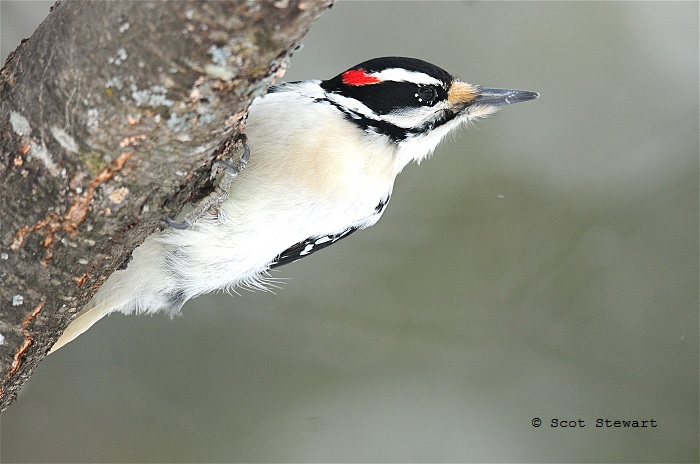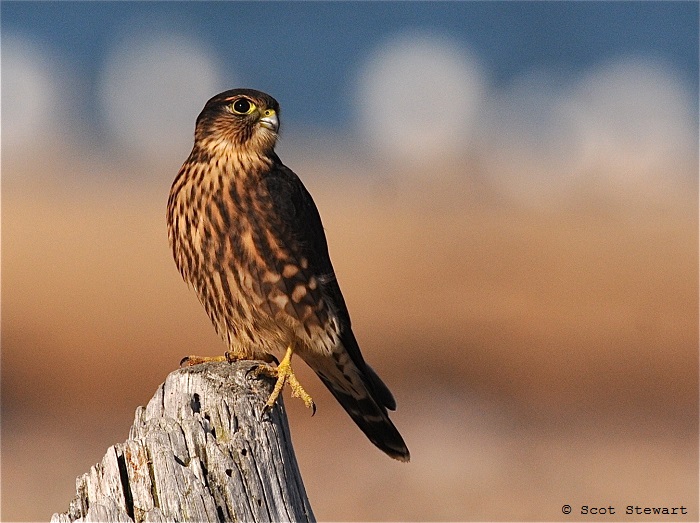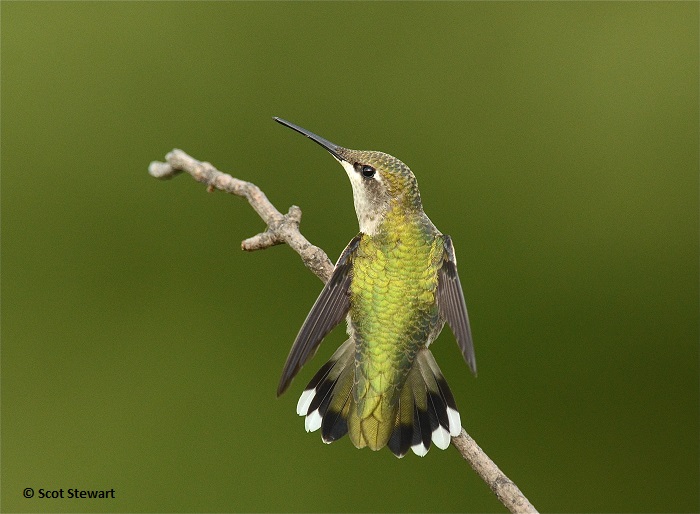News:
.
Welcome to my website news! My work continues on the website as I add new digitals from the past eleven years. I have continued scanning my film images and have added wolves,
more Lake Superior, grouse, owls, Florida, Arizona and Texas birds, western landscapes, Peru and more. I will note new uploads here as they are added.
I am also writing for both the Marquette Mining Journal newspaper (back of the Outdoor section on Friday
here),
submitting my 1000th article in September, and the Marquette Monthly here -
writing stories on Dragonflies and Damselflies in September 2017, Fungi and Slime Molds in October, Wild Turkeys for November, the Colors of Christmas for December.
In 2018 the stories were Waterfowl on the Frozen Shore in January, Fish under Ice in February, Grand Island National Recreation Area in March with its Ice Formations,
Frogs in April, Moose in May and June, Butterflies in July, the Vulcan Iron Mine for August, Moths in September, Bats in October, White-tails in November, Winter Birds in December.
In 2019 stories were about Rivers in January and a three part story on the Wolves and Moose on Isle Royale and the ecology of
Lake Superior's Islands in February, March and May. June was the Quincy Copper Mine, July Cryptic Coloration in Nature,
August was Spiders, September was about Craig Lake State Park in Michigan, October about Keweenaw Natural Areas,
November on cranberries and December included two stories, Carnivorous Plants in Sphagnum Bogs and the Animals in Christmas Stories.
This year's stories included: January - River Otters, February - Woodpeckers. March - Lake and Pond Ice. My photos accompanied all the published stories.
Unfortunately, from April 2020 until August 2021 the Marquette Monthly was unable to publish due to the Covid pandemic and a change in ownership. Then came great news.
Although the Marquette Monthly Archives are inactive, the new ownership brought the Marquette Monthly back to life with editions began in September 2021! I wrote
about Tiger Beetles in September, iNaturalist and Citizen Science in October, The Changing Seasons and Water for November and the Audubon Christmas Bird Count in
December.
For 2022 I wrote about Conifers in Upper Michigan in January 2022, Porcupines in February and Insects in Winter for March, Red Foxes in April, Fayette
Historic State Park Archeology in May, Warblers in June. July featured Frogs, The Wonders of Many in August, Monarch Butterflies in September, Bats and White-nose
Fungus in October, Albino White-tailed Deer in November, Rodents! in December.
January 2023 was about Woodpeckers, February was owls, March Light and Color, April covered Color in Nature and May is all about Fungi. June was about Ducks,
July is Dragonflies and Damselflies, Hummingbirs are in the August issue, and Lichens in September, Spiders in October, Feathers in November and Patterns in
Nature to finish in December.
2024 started with Secret Places in January, followed by Bird Brains in February, Salamanders for March, Spring Flowers in April, Shorebirds in May and June,
Tree Flowers in July, Snakes in August, Effects of the Sun on Nature for September, Waterfalls in October, Horns and Antlers for November, and the Aurora
Borealis in December.
2025 began in the Monthly with Pine, Evening, and Rose-breasted Grosbeaks, February featured Hares and Rabbits, Swans will appear in March, and Bubbles! in April.
Many thanks for visiting! Scot
3.30.25 Winter has continued to provide a wide array of weather. Several big ice storms, one just this past week. Today we are in the midst
of another good winter storm with around seven or eight inches of new snow now changing to sleet. The weather has given me more time to work on the site.
Have changed and added to the Marquette categories on the Upper Peninsula part of the Other page and added quite a few new Wildflowers in the Prairie and
Mountain-High Desert sections of the Other page.
I did have a wonderful afternoon on the Dead River watching a male common goldeneye cruising up and down and a trio of river otters sliding by while they
took some time to check everything out. The goldeye behaved a little odd, flying past once, and swimming by twice as it went back and forth. Saw the
otters down near Lake Superior just a few days later working around a few openings in ice but disappearing before I had a chance to get a shot. They are
always a joy to watch as they always seem to be having fun.
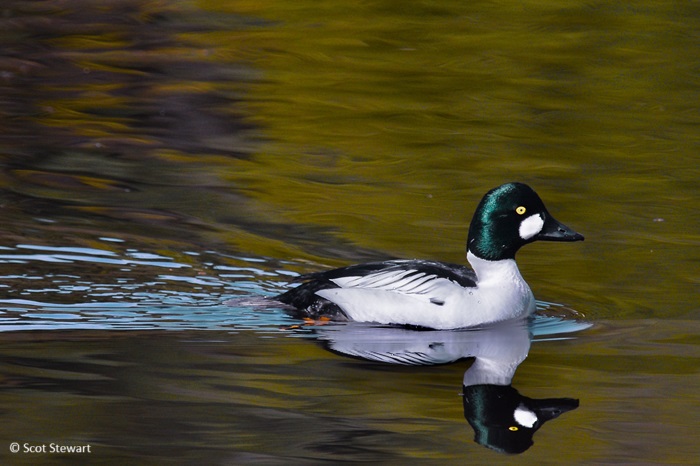
Common Goldeneye on the Dead River
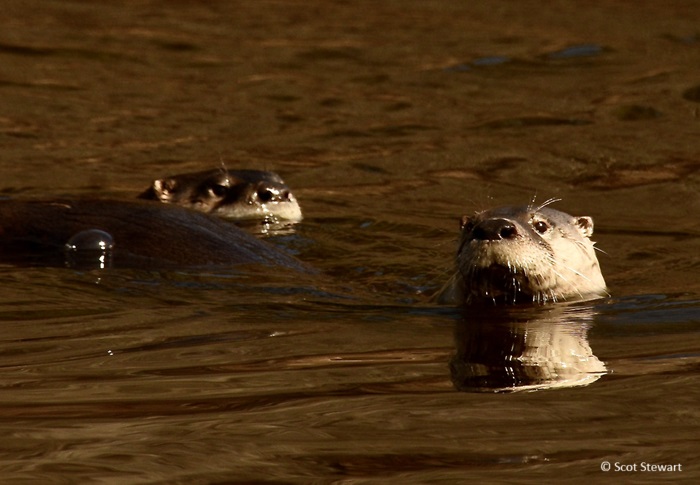
River Otters stopping to check out spectators as they headed downstream
3.7.25.25 Just finished with another spectacular storm, with 50+mph winds and 20.8" of snow reported in Marquette.
Has some decent snowflake combinations I found on the car window. Then, a great surprise as a friend texted to say they had
an owl outside the window. Turned out to be a tiney northern saw-whet owl taking a nap in a nearby northern white cedar tree.
There had been one calling most quiet nights on the north end of town in a small wooded area, so it might have been the same bird???
Continuing work on the website, with new images in the following: Brewer's Sparrow, Canada Jay, Common Murre, Mute Swan, Pileated Woodpecker,
Desert Cottontail, Bracken Fern, Harlow Creek, and the Northern Saw-whet Owl.
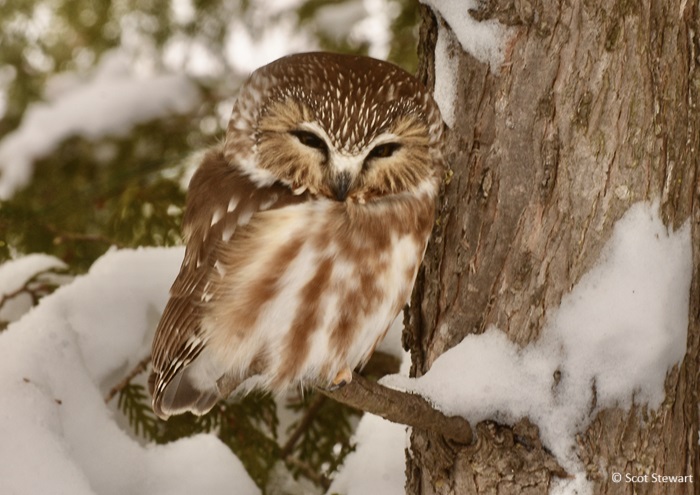
Northern Saw-whet Owl
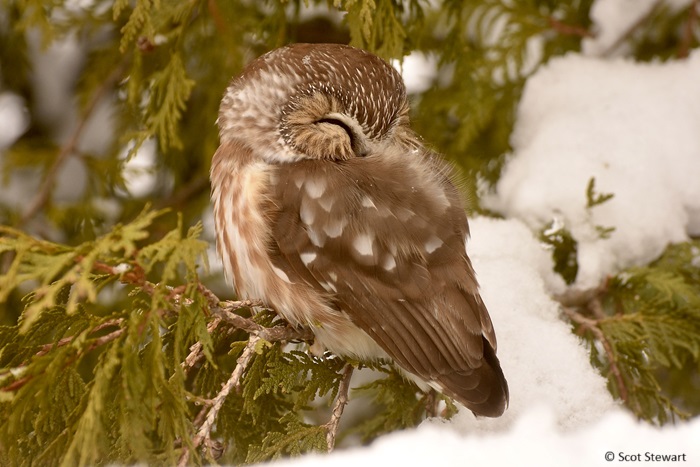
Northern Saw-whet Owl Sleeping
2.20.25 Windy days and warmer temperatures have made it impossible to make new frozen bubble pictures. So, back to warm ones, with the straw to make bigger
bubbles and bubble stacks. What a blast!
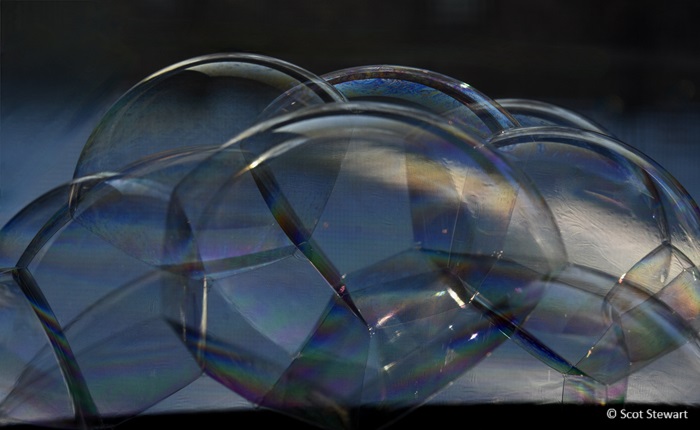
Soap Bubble Stacks
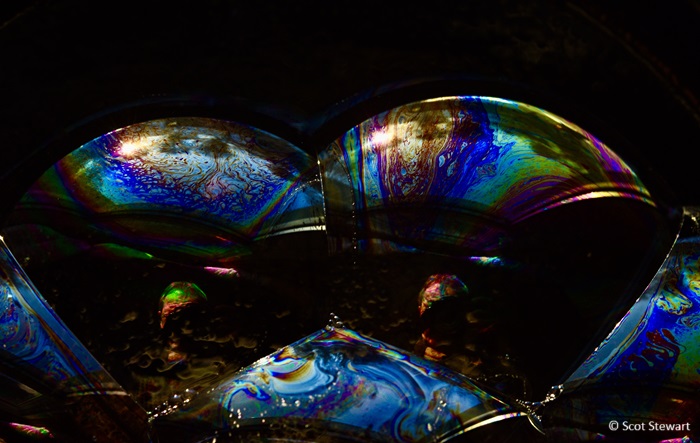
Soap Bubble Stacks in the Afternoon Light
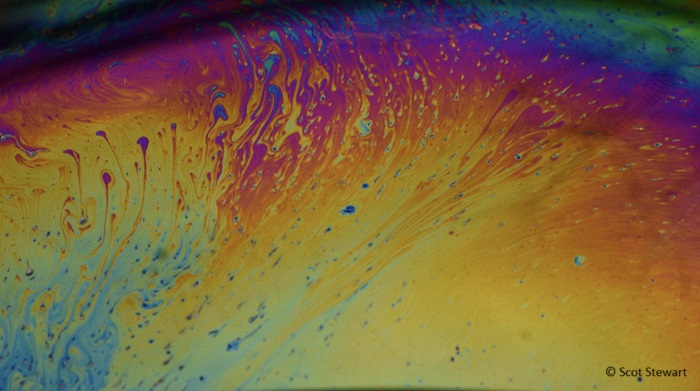
Big Soap Bubble Colors
2.11.25 Just a very cool day. The very cold weather has been great for window frost and experiment more with the frozen soap bubbles.
The sun made working on frost pictures a little more urgent. Even though it only got up to 13 degrees, the sun mad quick work of some new crystals.
So once they were gone, got coaxed into challenging the wind to create some new bubbles. Have been working with amount guestimates of soap and corn
syrup in the water. Too much syrup and the bubbles stick to the straw used for blowing the bubbles, Not enough soap and its difficult to get the
bubbles to form. Developed a screen with a black plastic sheet to createa plain black background and found the dark woods at the end of the day
worked well too as the camera angle was turned to am directly toward the setting sun.
Looking at lots of shots from a large number of websites showing there were different results in the shots, with some showing fern-like crystals
and some that looked more like show flakes. Made a new formula with glycerine and sugar instead of corn syrup with the soap and saw the crystals
form with the new shapes. Now just need the sun for new work!
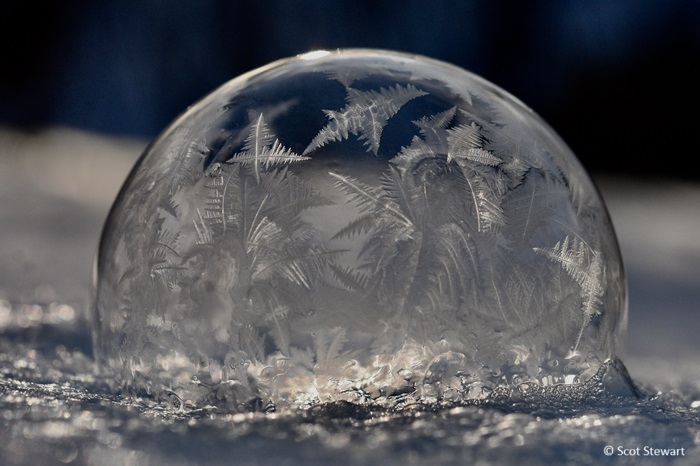
Frozen Soap Bubble with Internal Ice Crystals

New Window Frost - Great to get - the extremely cold days are almost done for this winter.
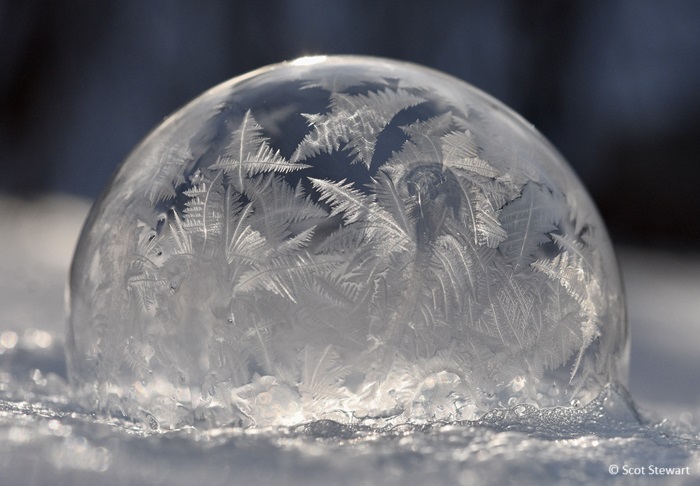
Frozen Soap Bubble with More Internal Freezing
2.11.25 With lot of challenges trying to keep up with website work and and writing and plenty of cloudy, cold weather,
birding has not gotten onto the daily schedule much lately. However, with lots of reports of a snowy owl(s in town the past few weeks,
and no luck finding one on casual drives along the lake, it was time to get for a serious look. Finally found it tonight!
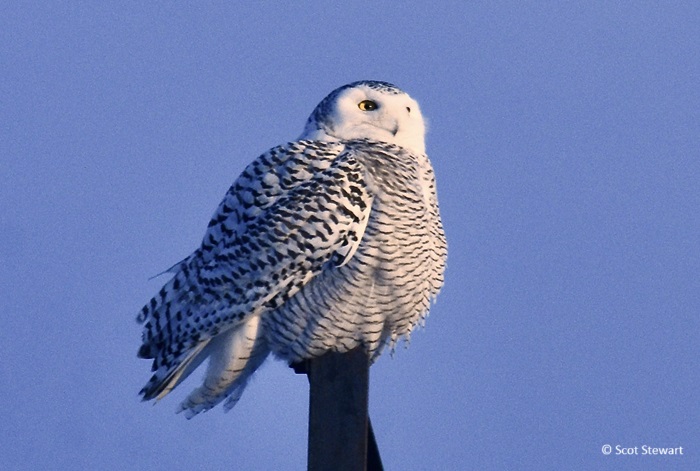
Young Snowy Owl
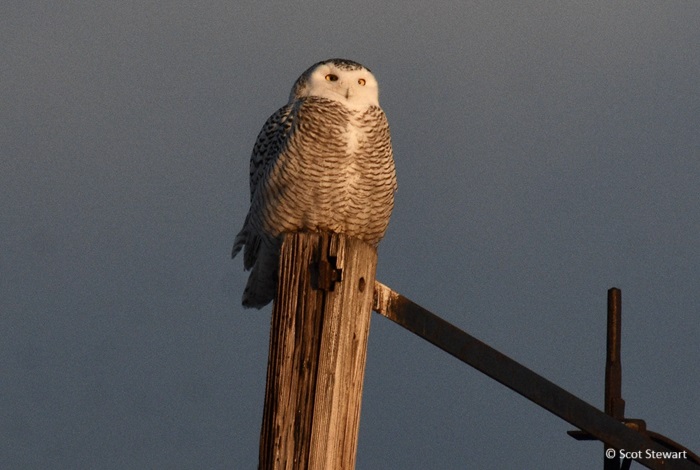
Young Snowy Owl
2.6.25 Cloudy winter days are the best for working on a website. Just added around 100 images to the 2024 Favorites.
Have been learning how to take frozen soap bubble pictures outside too with lovely fern-like crystals inside them. They are
really fun to take but need special conditions with no wind, temperatures at 20 degrees F or less and sunshine sure helps.
Lots to read out there with extra help to do this! So grateful there are so many willing to share their experiences!
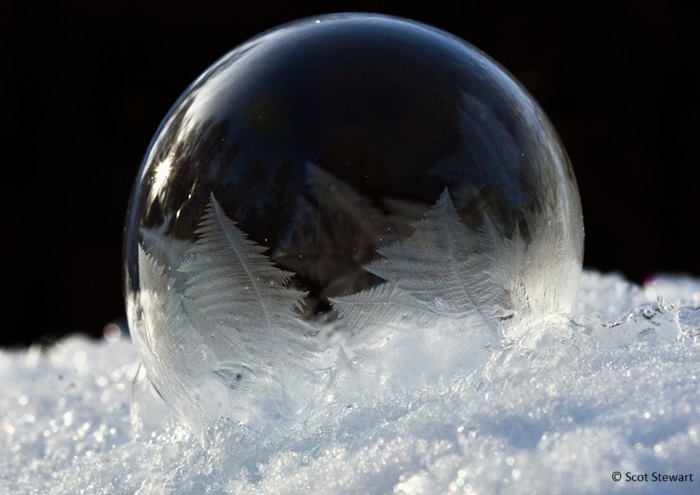
Frozen Soap Bubble with Crystals Inside
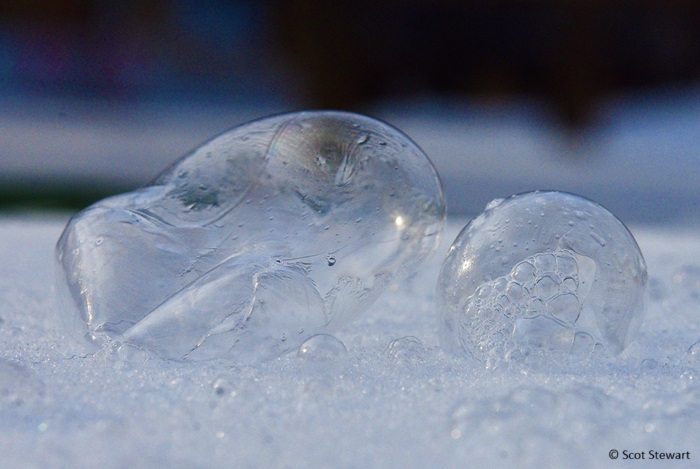
Frozen Soap Bubble Collapsing

Frozen Soap Bubble Swirling Colors as Water Evaporates and Freezes
1.27.25 A monster snow squall blew in from Lake Superior this afternoon and just blew everyone away with the blizzard conditions that lasted
just a bit more than an hour. Spent another great day adding images here from some of the great opportunities the past year has provided on Lake Superior
with the ducks visiting on the harbors. New additions can be found in the categories for Black Scoters, Buffleheads, Common Goldeneyes, Hooded Mergansers,
Long-tailed Ducks, Lesser Scaup, Red-breasted Mergansers, Redheads, and Ring-necked Ducks.
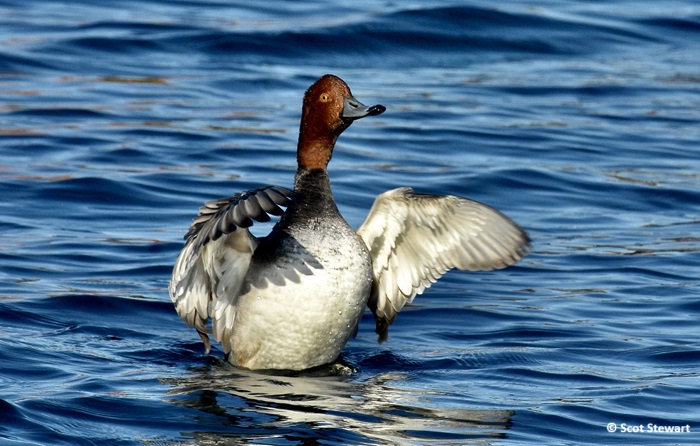
Male Redhead

Female Lesser Scaup
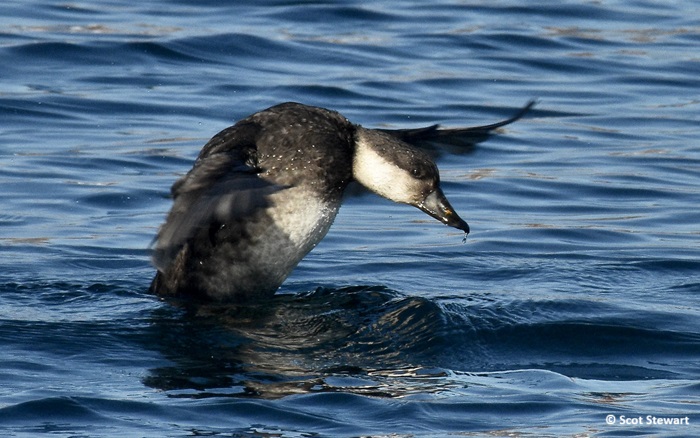
Black Scoter
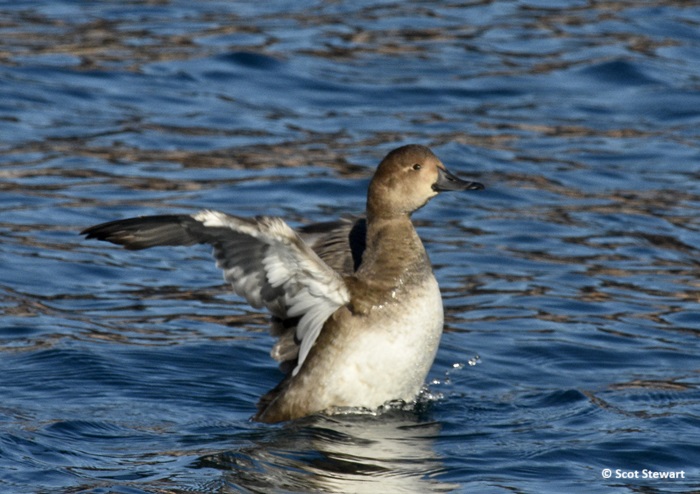
Female Redhead
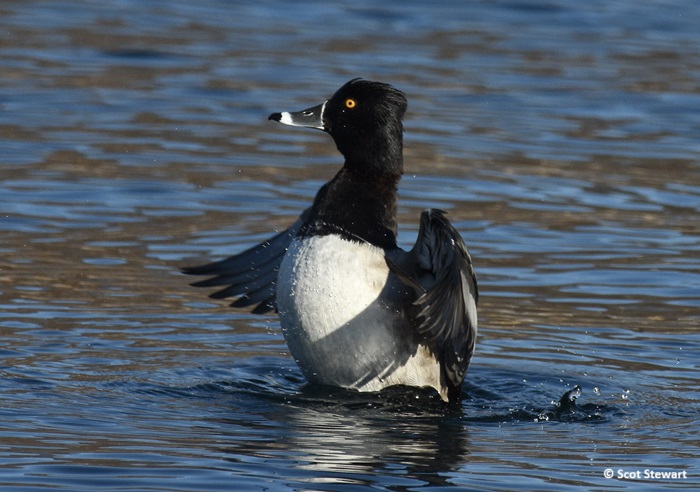
Male Ring-necked Duck
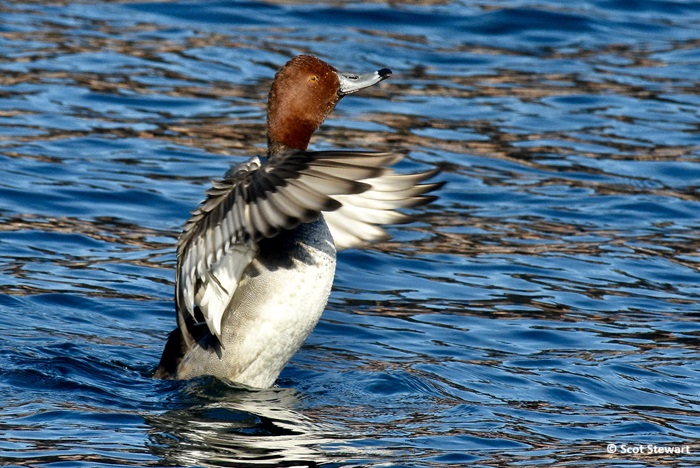
Male Redhead
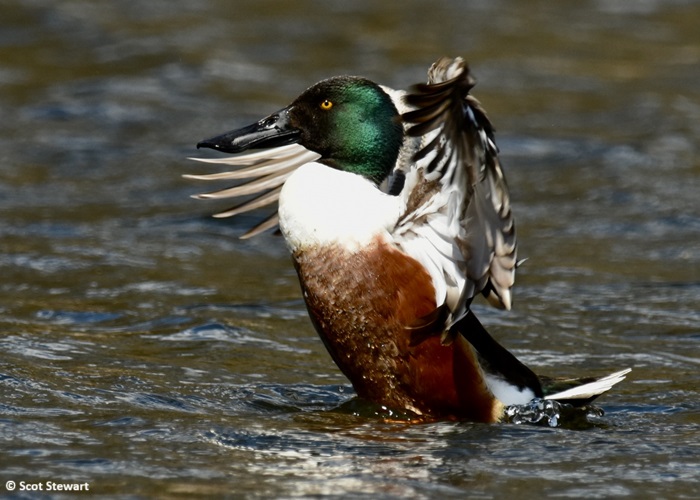
Male Northern Shoveler
1.26.25 Beautiful, balmy day with lots of sunshine! With the "office" finally up and running at the house it has felt so good to get back to the webisite
and get some the work from that past 17 months. Been working hard to post many of the photographs taken on the summer trip out west this past summer. Have focused
on birds the past few days with new categories for White-faced Ibises, Cinnamon Teal, Spotted Towhee, and California Gull. New posts and some old corrections for American White
Pelicans, Black-billed Magpies, Brewer's Blackbirds, Canvasbacks, Common Ravens, Common Terns, Double-crested Cormorants, Forster's Terns, Franklin's gulls,
Glaucous gulls, Golden Eagles, Great Blue Herons, Green Herons, Lazuli Buntings, March Wrens, Mountain Bluebirds, Red-tails Hawks, Ruffed Grouse, Say's Phoebes,
Violet-green Swallows, Wild Turkeys, and Yellow-headed Blackbirds. One of our birding highlights was definitely watching the day-long flights of so many waterbird
species along Little Red Lake!
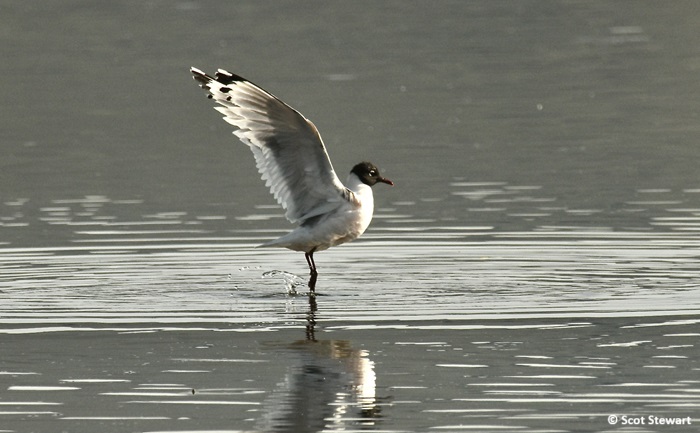
Early Morning Foraging by Franklin's Gull at Red Rock Lakes National Wildlife Refuge in Montana
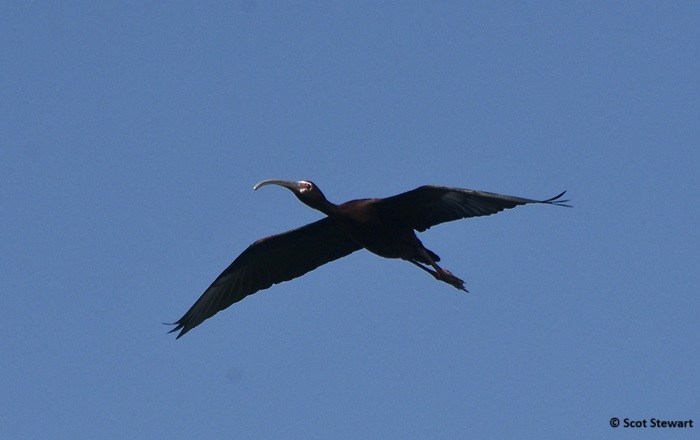
White-faced Ibis flying over Little Red Rock Lake
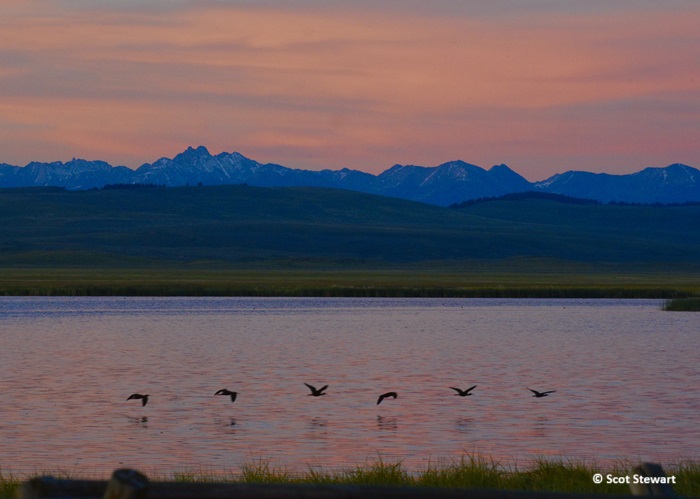
White-faced Ibis Flock flying over Little Red Rock Lake at Dusk
1.22.25 It has been bitterly cold across the entire Midwest and snow has found its way all south to Florida and Louisiana.
The cold temperatures here always leave me with wonderful frost crystals on the windows. Here are a couple new images. Also, after a year and
a half adapting to life at home and designing an office, I am back to adding new photographs to the website. Currently working on some from a trip out west
this past summer to Teddy Roosevelt, Glacier, and Yellowstone National Parks and Red Rock Lakes National Wildlife Refuge. New images of mammals have been
posted in black bears, grizzly bears, American pine marten, pronghorn, mule deer, American bison, wild horses, Columbian and Uinta ground squirrels, and American bison.

Window Frost

Window Frost
6.20.24 Traveling on from Yellowstone National Park and a million people to Red Rock Lakes National Wildlife Refuge across the Idaho border in
Montana. Just past Henry's Lake we found a beautiful pair of mountain bluebirds.

Male Mountain Bluebird

Male Mountain Bluebird
8.24.23 Looks like this is going to be the year for cranes for me. Found a family of three in my travels across town and they are not shy
with people, which is probably not a good thing for them. They are incredible though!
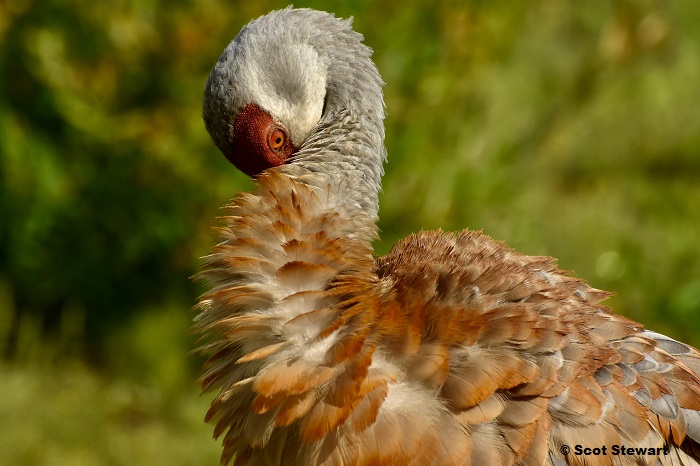
Sandhill Crane Preening
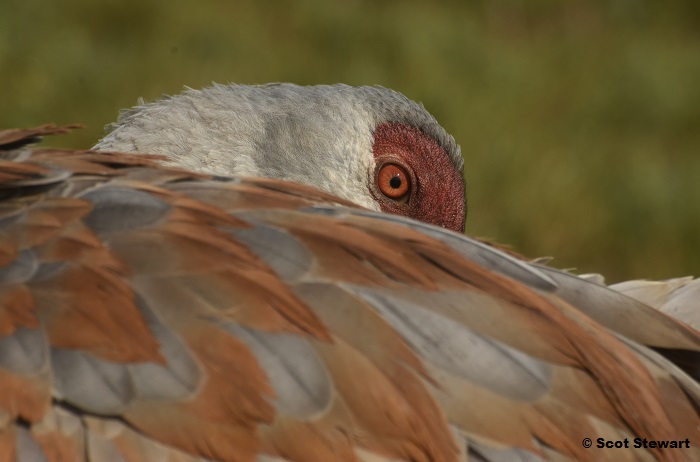
Sandhill Crane Looking on Suspiciously
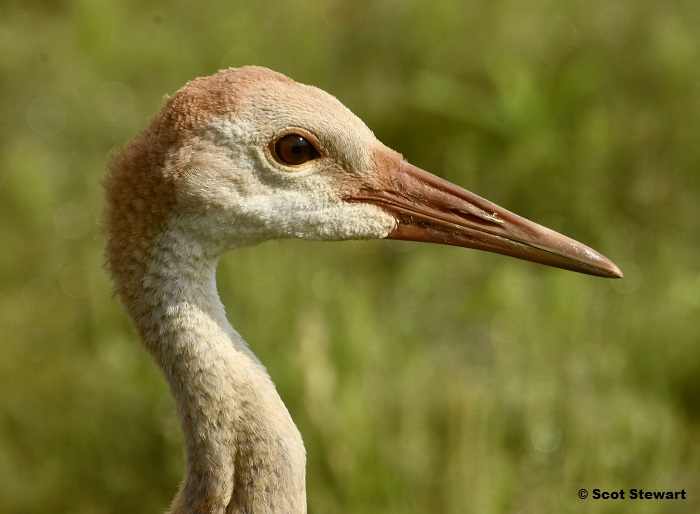
Sandhill Crane Youngster
7.22.23 Back in the wonderful Upper Peninsula! Found a new family had moved into the neighborhood. Turned out to be a rather large family - bigger than I
first thought. Went out today after watching them several days and was surprised to see more and more pile out of one of the den entrances. Two peered out from a second entrance!
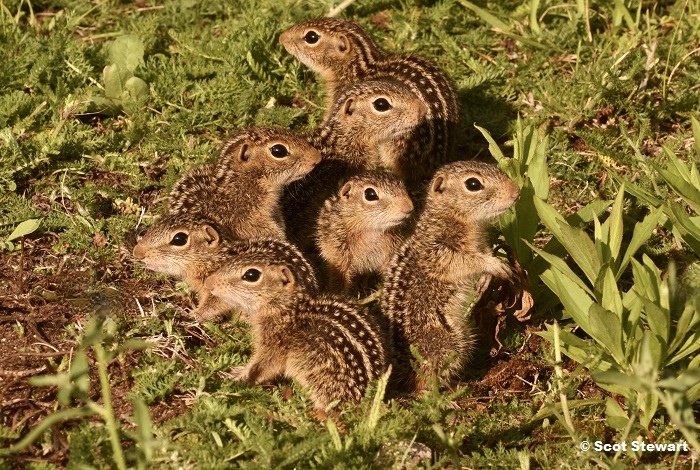
Thirteen-lined Ground Squirrel Family - At least Nine in Entire Family
7.15.23 On our final leg home of our Colorado Trip we made one of our favorite stops, at the Horicon National Wildlife Refuge. The
autotour includes the Egret Hiking Trail and Boardwalk where the marsh wrens were singing and a Virginia rail was also calling. Trying hard to get
a good look at either were surprised to hear a single unfamiliar call and then two white necks stretch out ahead of us as two whooping cranes revealed
their locations. We were able to enjoy them as they fed around a raised part of the boardwalk for over an hour. Just a fabuous time! Later on Highway
49 we got to see young coots and redheads, a common moorhen, and get close-up looks from the road of foraging black terns and yellow-headed blackbirds.
A large group of halloween pennant dragonflies also graced the shoulder.
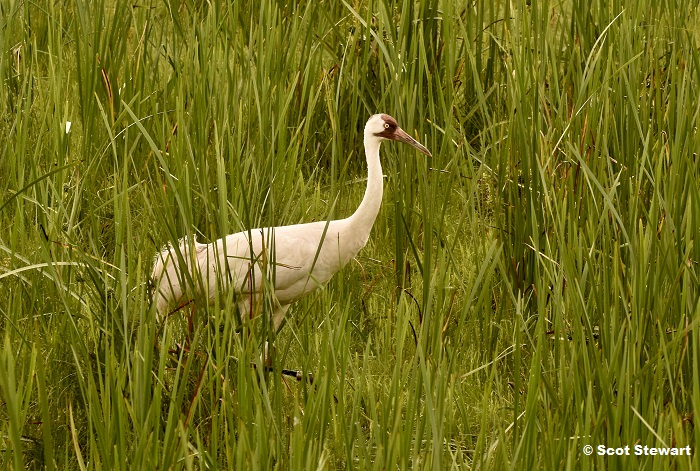
Whooping Crane at Horicon National Wildlife Refuge
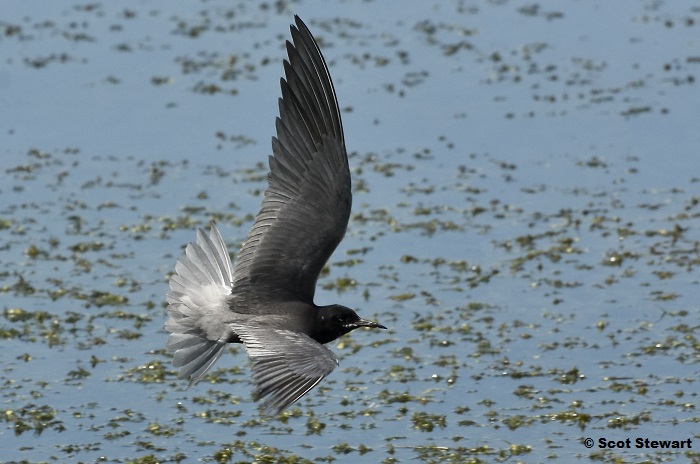
Black Tern at Horicon National Wildlife Refuge
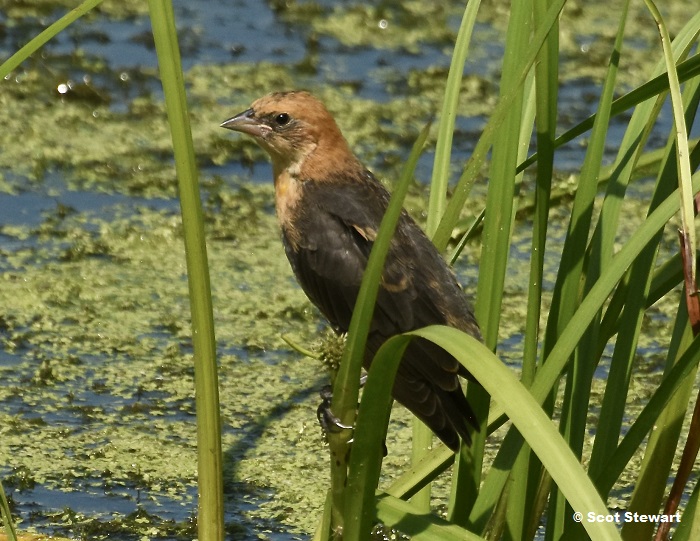
Yellow-headed Blackbird at Horicon National Wildlife Refuge
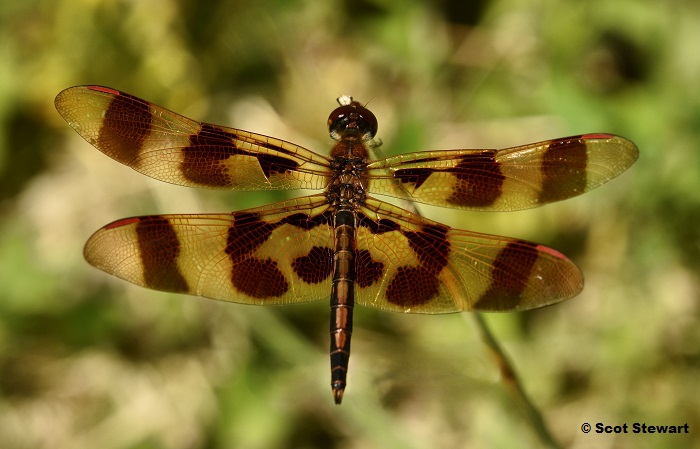
Halloween Pennant Dragonfly at Horicon National Wildlife Refuge
7.13.23 Well, it felt like heaven, but it was Iowa. We continued our visit great friends in the Loess Hills. Their home is surrounded by prairie
flower including butterfly milkweed. prairie roses, and hoary vervain. Started hiking out to check on black raspberries pollinators in the vervain stopped me.
For over an hour! The top two were a tangleveined fly with eyes that looked like green headlights and a great bee fly, a miniature on stilts. Always amazed
when closer looks provide breathtaking details.
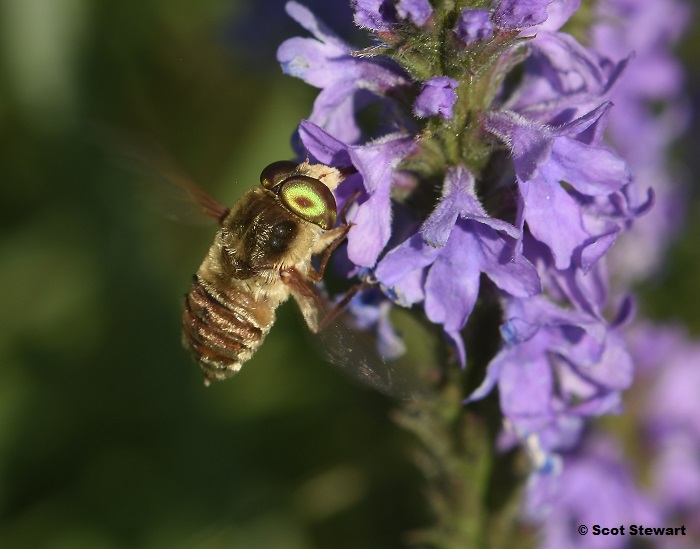
Tangleveined Fly in Verbena.
7.12.23 Landed in Paradise! Rode in to be with great friends between two thunderstorms and it to be the absolutely perfect place I remember. Beautiful prairie,
flowers amd birds, great food and the best of company! Have had a time with three of my favorites, northern bobwhites, ruby-throats, and red-headed woodpeckers. It has been difficult
to be a good guest with so many wonderful distractions!
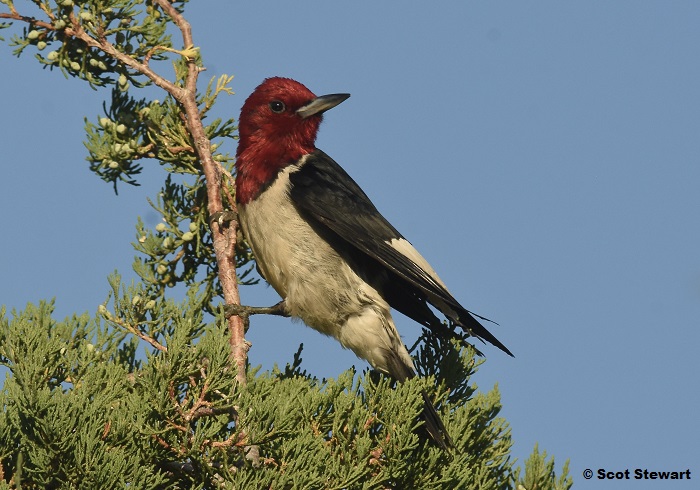
Red-headed Woodpecker
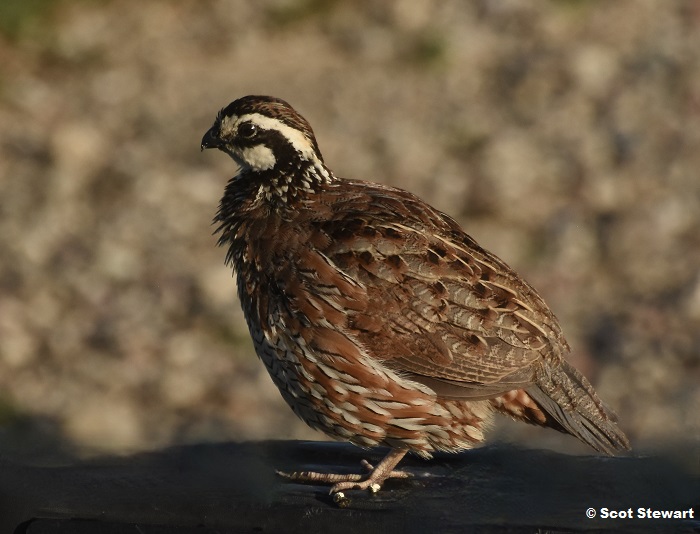
Northern Bobwhite
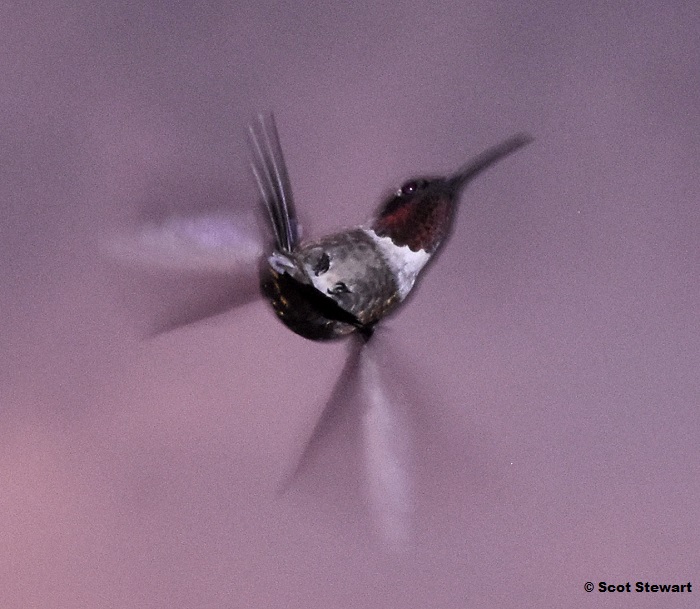
Male Ruby-throated Hummingbird at Twilight
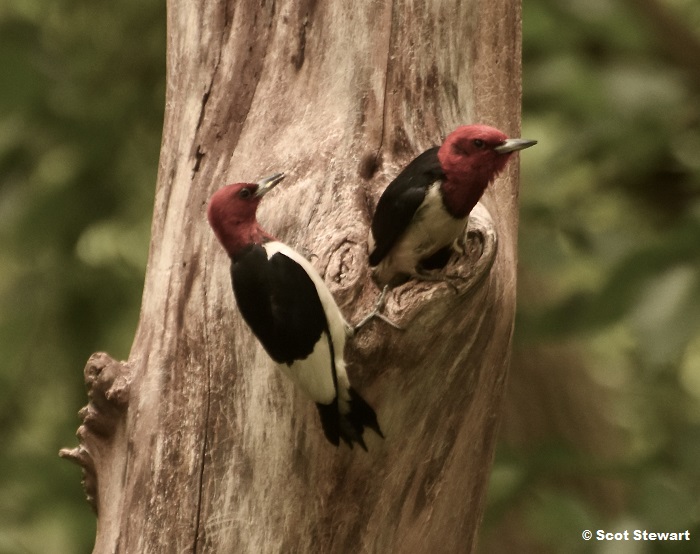
Red-headed Woodpecker Pair at Nest
6.30.23 Have made a trip out to Colorado for a week and made our way up the cog railway up Pikes Peak today. It was a relaxing ride up that turned
into a most interesting adventure. We rode up into a thunder snow, some thunder and a bit of lightning in a light, driving snow as the visibility dropped to
almost zero. Because of the lightning and the steel platform at the top we had to remain in the car for over an hour. The altitude and confining conditions
led to several passengers with some pangs of anxiety, a car door that would not open, and a passenger passing out on the platform. We finally were able to get out
for a few moments before heading back down the mountain. I had hoped to look at alpine flowers. We had seen an American pipit and golden eagle on the way up
but now had to head back down. We were directed to look out on the way down by the engineer at a bear on the hillside. Luckily I was standing at the window
with my camera. Later learned many of the black bears in the area are brown. This one was a beauty!
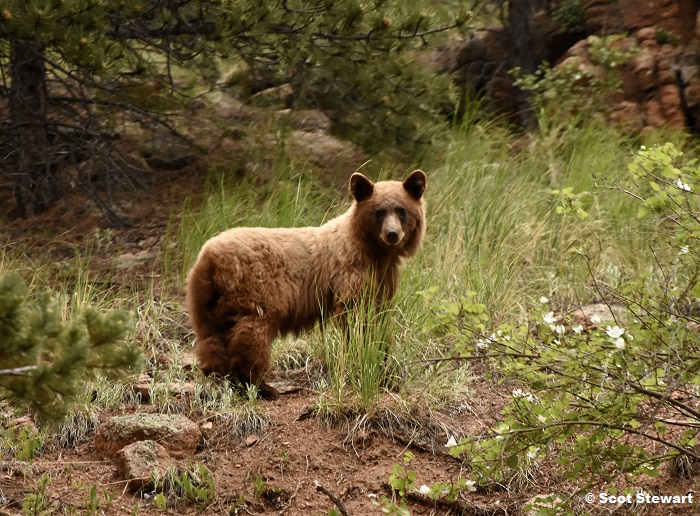
Brown Black Bear
6.29.23 On a family trip to Colorado Springs with a chance to enjoy beig with the whole family, relaxing and seeing some wonderful mountains.
Did a litle exploring in the neighborhood and saw this tiny hover fly. Got some interesting images but was puzzled by the double eyes and realized it was a
fly. Flies have only two wings and this "one" had four. It was then I realized there was a couple paired, one under the other. These are great little flies,
important as pollinators.
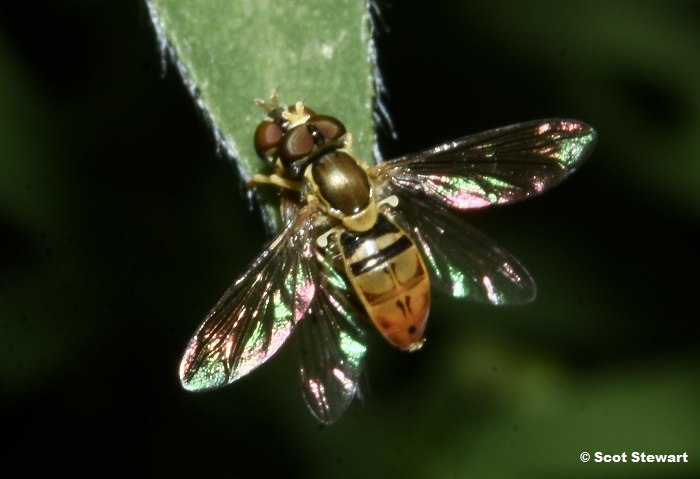
Margined Calligrapher Pair Mating
6.23.23 I have the best friend. Cannot tell you how many times they have said to me, "I saw this while I was out walking and I thought of you.
When they do, they often call and I come running with my camera. The latest was a cecropia moth. They are our largest silk moth. I have not seen one in many
years so it was rally special to not only see it but get a few images too.
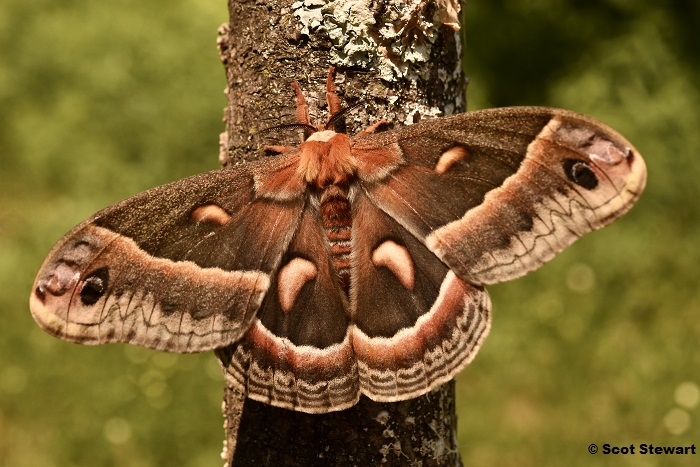
Cecropia
5.30.23 It is a great experience to travel through the Great Lakes Region during spring when some birds
are still heading north and others are settling in with great songs to fill the forest air. Made a trip down to Wisconsin
this past weekend to relax, photograph, and do some sound recordings. Whip-poor-wills, eastern screech owls, barred owls,
yellow-throated vireos, scarlet tanagers are just a few of the great birds I caught up with during the stay. Was able to spend some
time at Spring Green Preserve State Natural Area, a great prairie and at Horicon National Wildlife Refuge near Waupun.
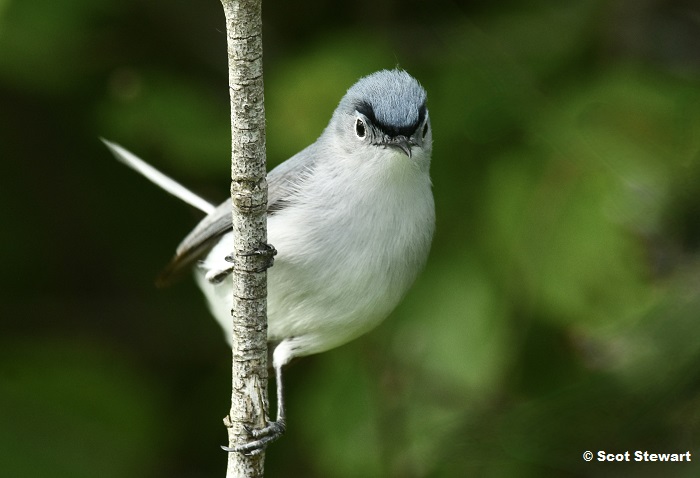
Blue-gray Gnatcatcher
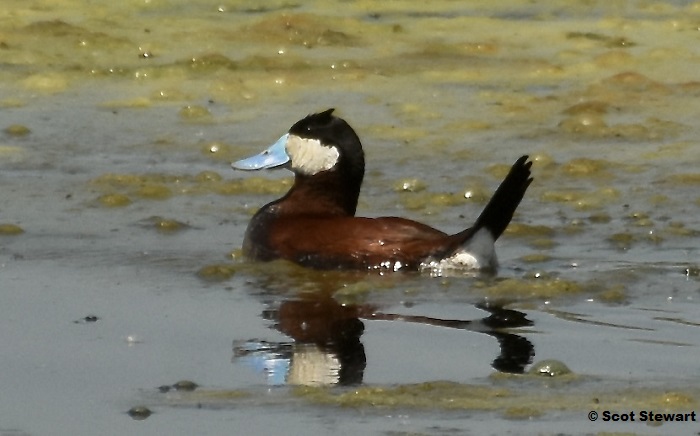
Male Ruddy Duck at Horicon National Wildlife Refuge
5.9.23 Shorebireds have to be one of my favorite groups of birds. After a shore while they just seem to bond with you. Take a low profile and sit
still and they just go back to what they were doing. Lots of yellowlegs around at my favorite ponds.
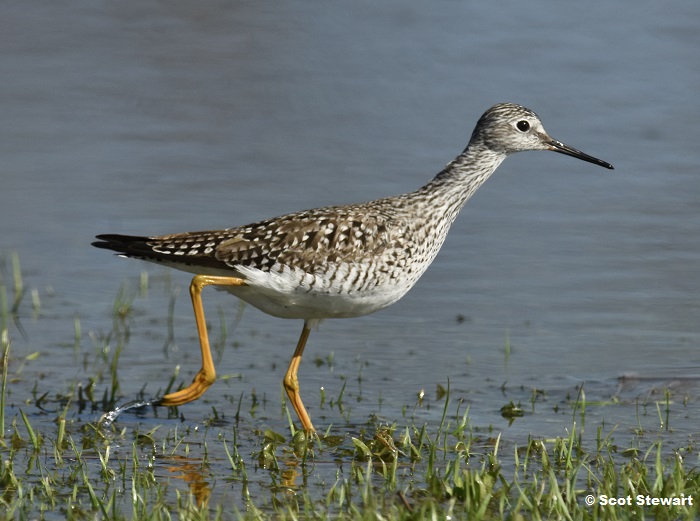
Lesser Yellowlegs on the Go
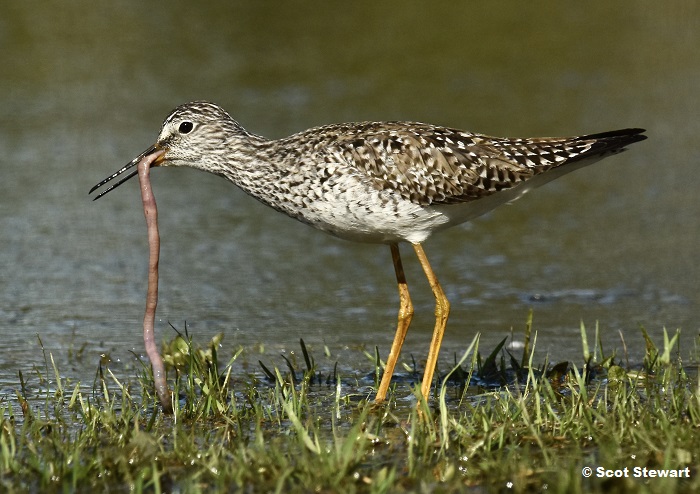
Lesser Yellowlegs Feeding
5.8.23 Foggy morning is a great time to take the photography class outside. Fog has such a magic effect on everything in the morning [ muting the sun,
making the air feel so heavy and adding water to everying. The students never quite know what to make of close-up shooting - down on the knees looking at "stuff" on
the ground. It was good stuff!
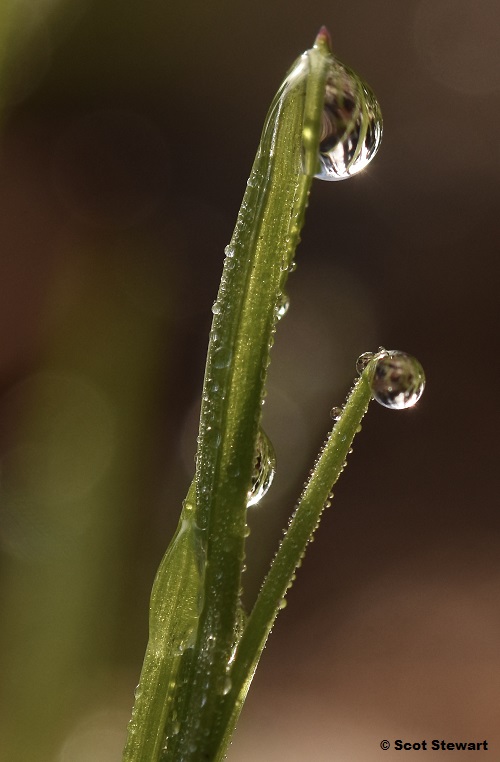
Fog Droplets on Grass
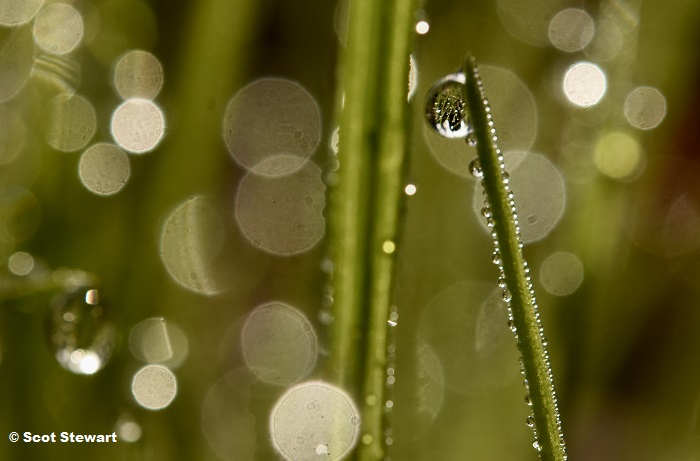
Foggy Morning Grass
5.4.23 Just finished with another storm, a whopper three day blizzard with around 20 inches of heavy, wet snow, powerful winds. This one also slowed waterfowl out
ahead of it. Nearly 2000 ducks, dabblers and divers, at least 13 species stopped off onLake Superior in north Marquette April 28 for the afternoon and evening, but were all but
gone the next morning. Smaller flocks have been the Marquette's harbors since, mostly of divers. Dabblers have stopped too on the ponds and rivers around town. A tired bunch of
redheads were in the Lower Harbor today and did not seem to mind the activity on the bike path.
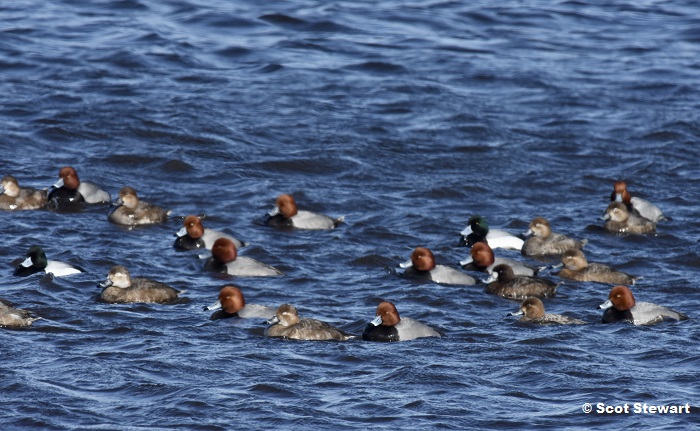
Part of earlier Raft of Redheads and Scaup from April 19 in Marquette
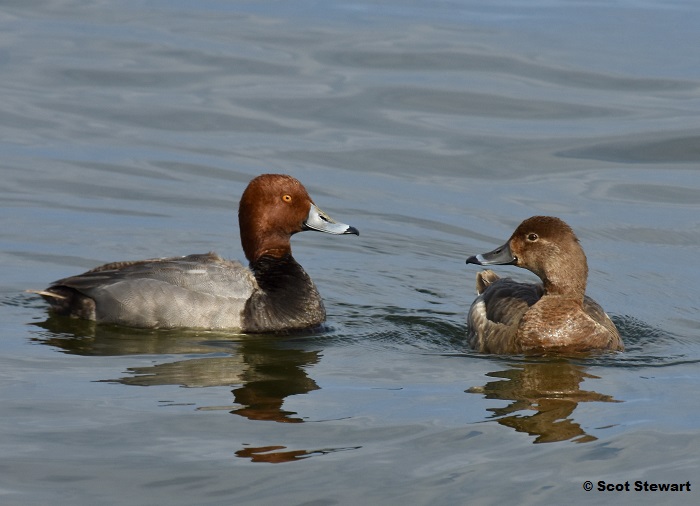
Redhead Pair
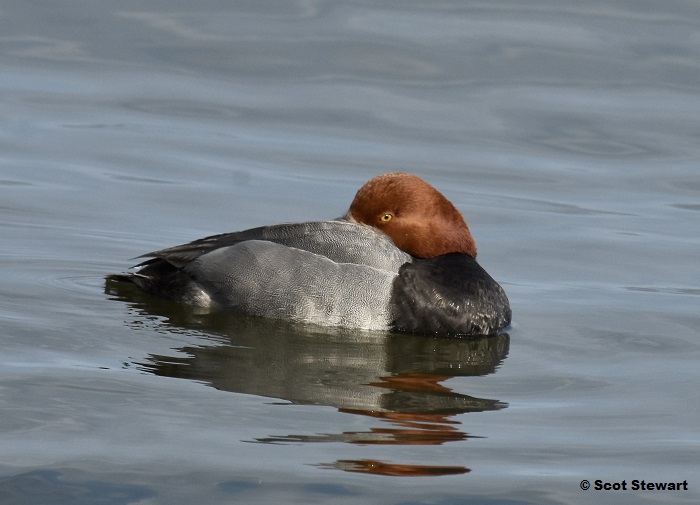
Redhead Male Resting
4.25.23 This has been a crazy winter with some decent sized storms. The most recent one came several days ago
and stalled out a large flock of diving ducks, nearly all ring-necked ducks,redheads, and scaup. As the weather improved, the ducks did not all
leave together, but left in smaller groups over the course of several days, leaving a great opportunity for birders to catch
a glimpse of ducks usually not here for long during migration. When all was quiet on Lake Superior south of the Upper Harbor
ore dock, a remnant group was still around near the Presque Isle Park marina. Around twenty ring-necked ducks and lesser scaup
joined a pair of female ruddy ducks and a female bufflehead that have been there for a short time already. Because of the proximity
of their feeding and resting spots they were easy to see from the parking lot and a joy to watch.
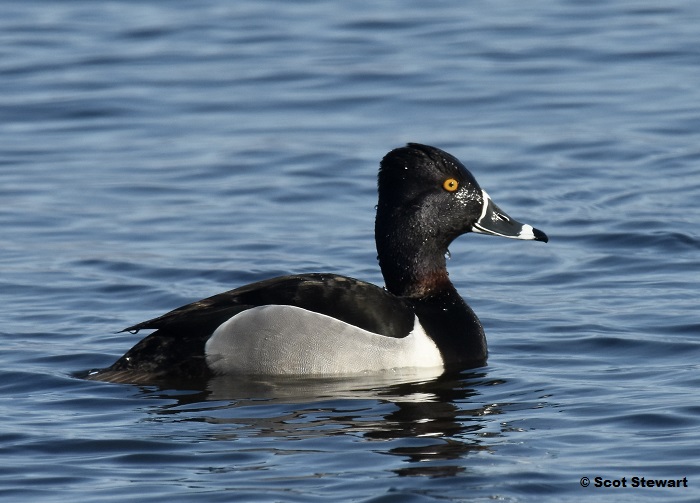
Male Ring-necked Duck
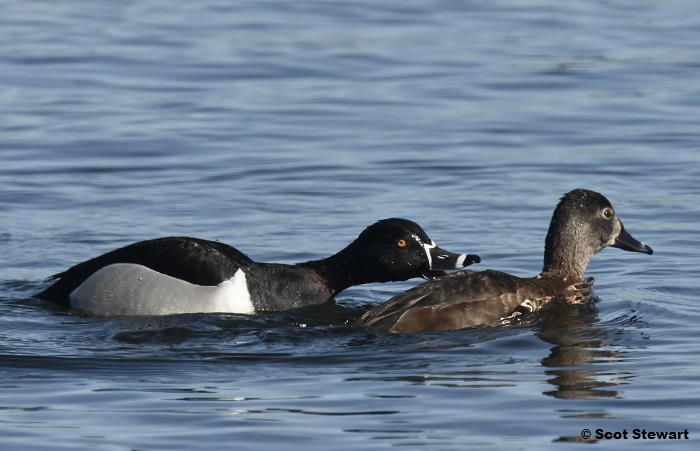
Male Ring-necked Duck presuing and biting at a Female
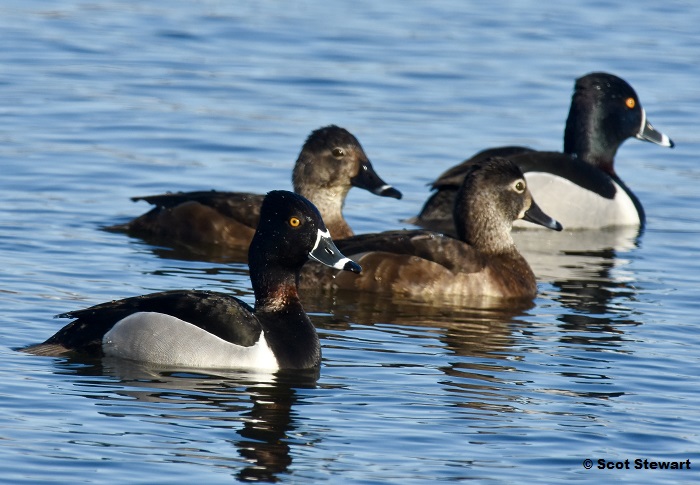
Group of Ring-necked Ducks and a Female Lesser Scaup
4.11.23 We finally got a dash of Spring this past weekend and more on the way through Saturday before we get more snow!!! Migration
turned spectacular with a great variety of recently arrived birds. Water birds have been particularly wonderful with plenty of ducks, grebes
and even soe sandhill cranes and a few yellowlegs. The Dead River above the Tourist Park was particularly good at the start but as the lake opened
many of the ducks headed out into open water. It was such a great time to be back outside in some sunshine, warmer temperatures and still see
some birds back after a long winter.
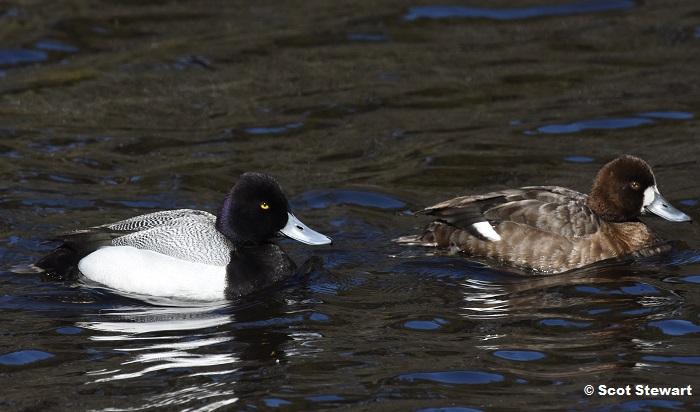
Male and Female Lesser Scaup.
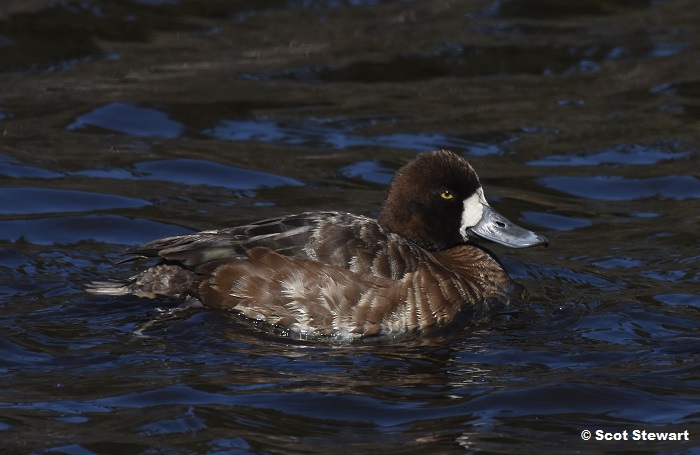
Female Lesser Scaup.
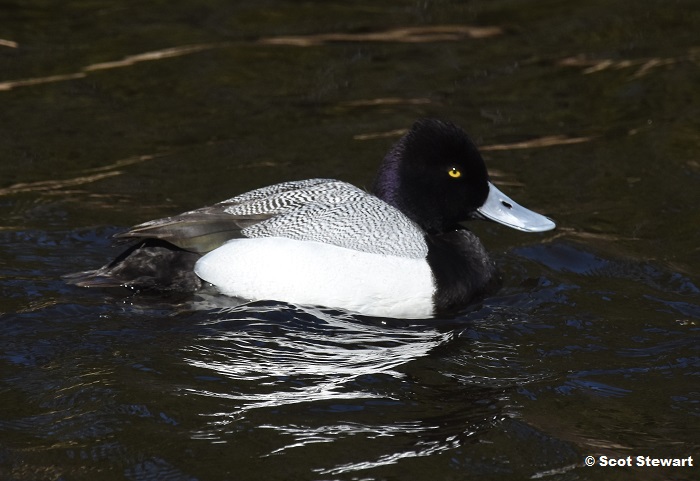
Male Lesser Scaup.
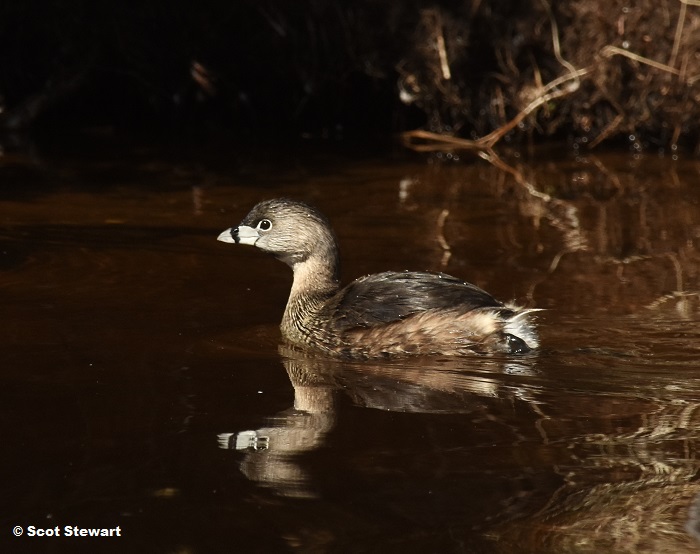
Pied-billed Grebe.
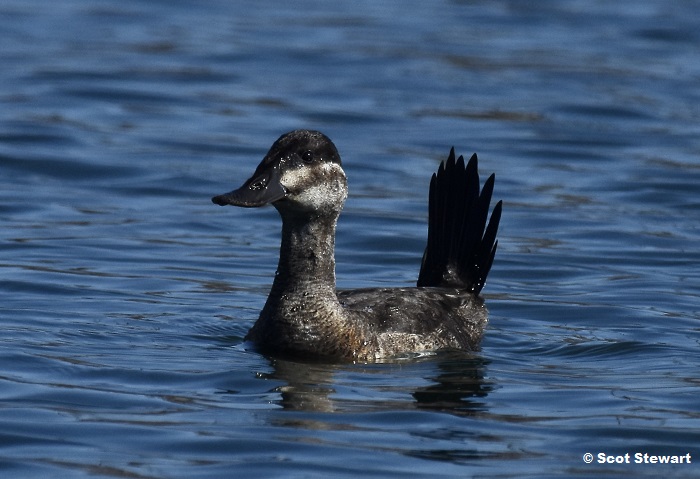
Ruddy Duck
3.23.22 Predictions of a good Aurora Borealis show were spot on. We headed down to the beach with a good arc already overhead.
Ended up spending two hours watching two cycles of arcs, curtains, and vortexes with a lot of red mixed into the show. I watched a steady
curtain out over Lake Superior to the esst that seemed to remain fairly constant with several flashes of good yellow-green streaks. It is always
fun to watch them in town because the bright moments alway bright out plenty of "Oooo's" and "Ahhs".
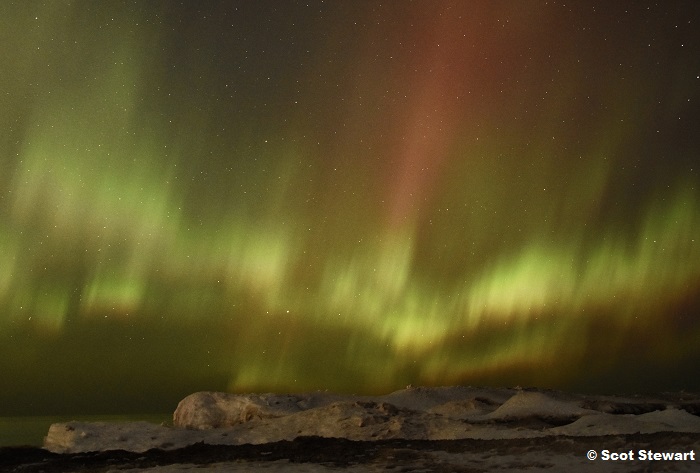
Aurora at McCarty Cove
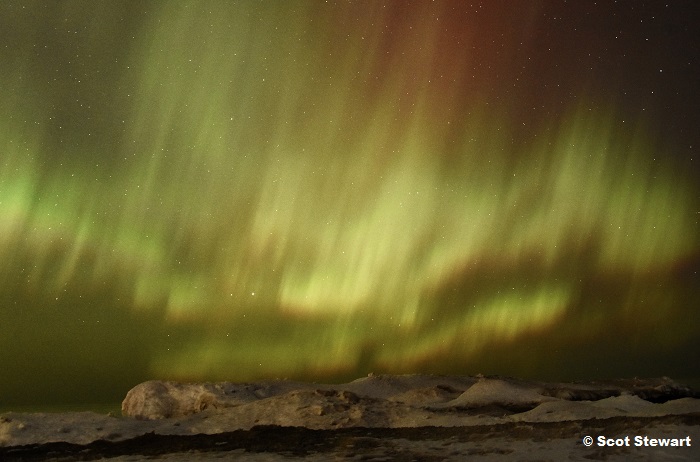
Aurora at McCarty Cove
3.8.23 Being at Presque Isle Park in Marquette is often an overwhelming wonderful experience and true priviledge
to be is such a beautiful city park! I have tried to keep bird feeders full there this winter and have enjoyed the company of
a host of regular chickadees, nuthatches, crows, woodpeckers and occasional goldfinches. What a great place to hang out, relax
and enjoy nature!
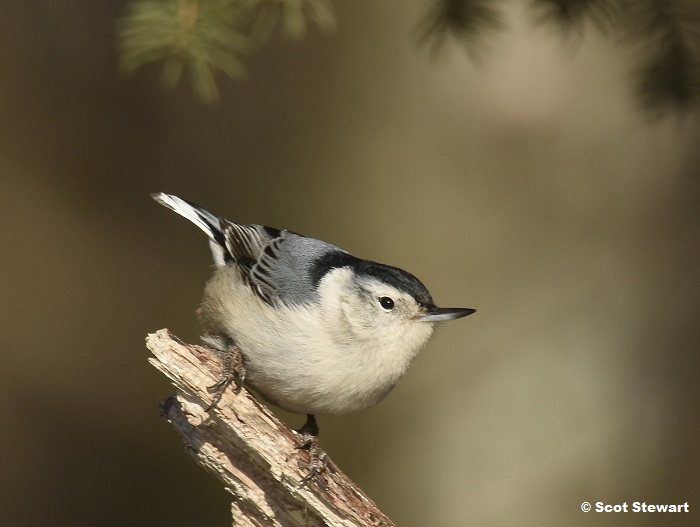
Male White-breasted Nuthatch.
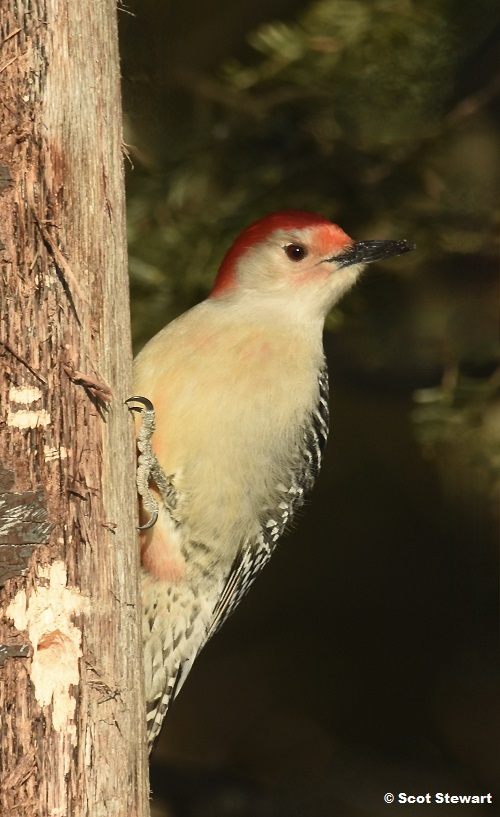
Male Red-bellied Woodpecker.
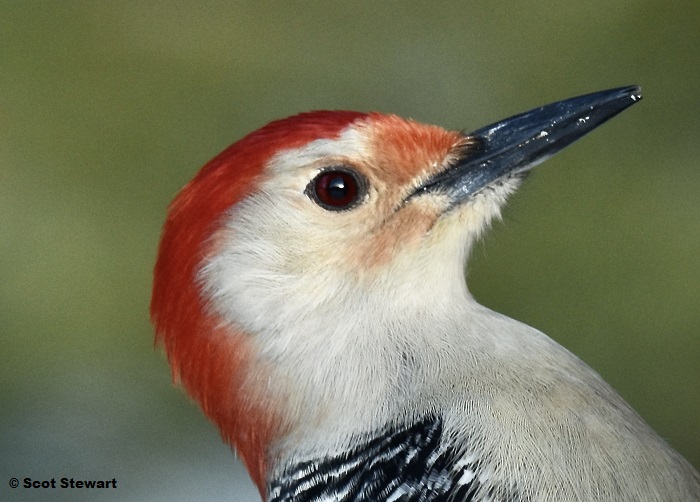
Male Red-bellied Woodpecker Close-up.
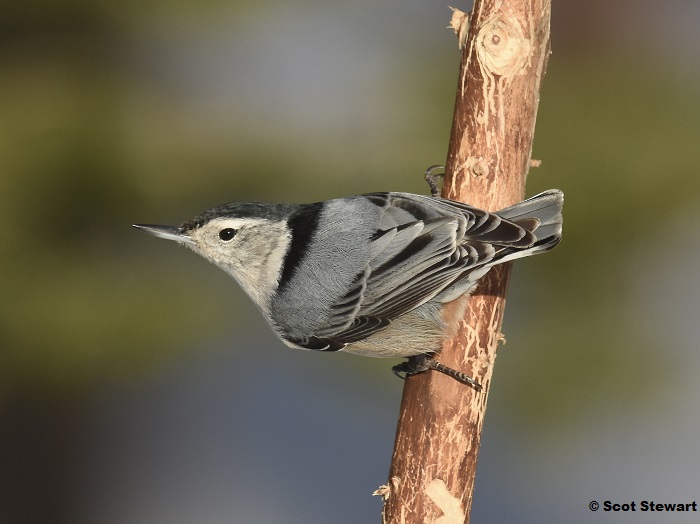
Male White-breasted Nuthatch.
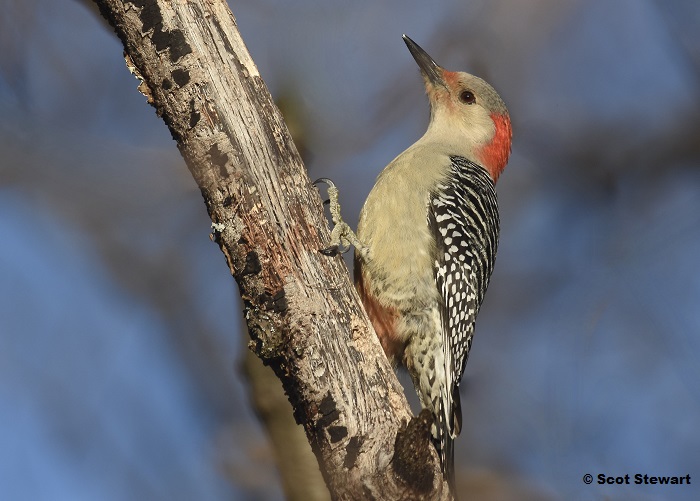
Female Red-bellied Woodpecker.
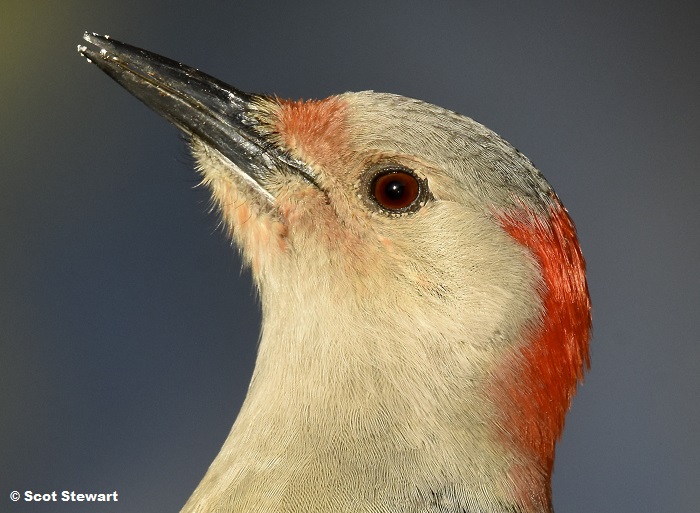
Female Red-bellied Woodpecker Close-up.
3.4.23 I have been watching the Lake Superior shoreline all winter for a snowy owl. It is always tantalizing news reading about all the owls in the eastern Upper Peninsula
the past few winters, but few snowy owls have made it to Marquette recently. Early this afternoon we learned of one on the ice near Picnic Rocks here in town.
What excitement finding it on a beautiful ice "berg" just off shore. Sat there for an hour as I let other know it was there. Finally it took off, I assumed to find a quieter spot.
Boy was I wrong! It took a little while, making several stops along the way on ice flows, but finally landed on the lowest of the Picnic Rocks putting up more
than 300 gulls each time it took flight.
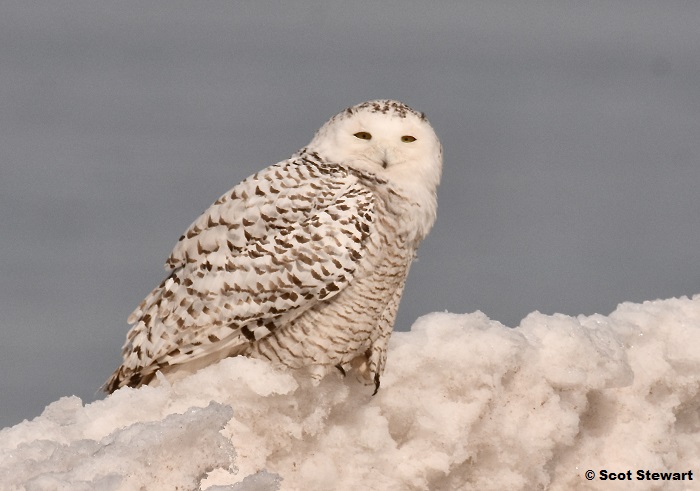
Young Snowy Owl
2.3.23 Most people have challenges with subfreezing temperatures but that is what February in the Upper Peninsula is for, I believe. One of my favorite partsto look for on these cld days is window frost. We have a kitchen storm door that manages to trap some moisture in winter hosts some amazing delicate, frost fern patterns when it gets close to zero degrees F. In the late afternoon in the 6 degree air today I found some of the best frost I have ever seen there and ran to get my camera, In the past I have always opened the main door and worked out of the kitchen, Working with a light colored background it was sometimes difficult to get good shots. I had one of those "Why didn't I think of this before moments?" when I started working outside and realized I could open the frosted door as far as I wanted to control the background. The frost was fantastic, giving me views that seemed 3-D.
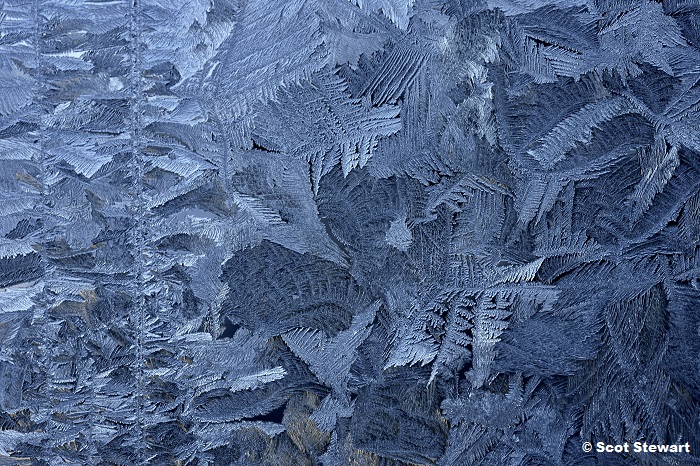
Window Frost
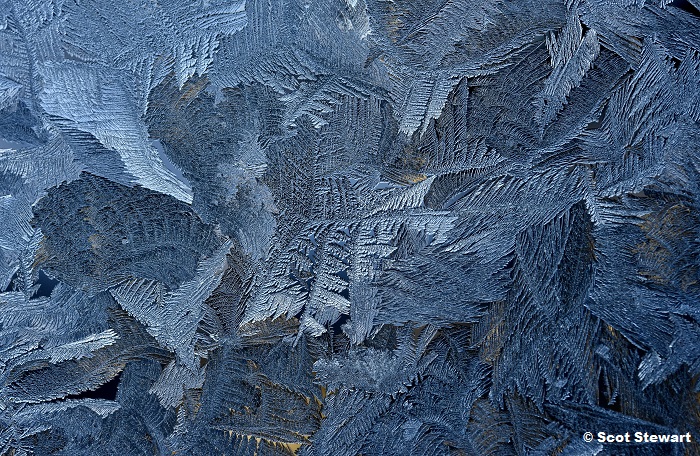
Window Frost
1.22.23 Hosting yet again Saturday at MooseWood Nature Center, on a dark, cloudy day. Filled the feeders outside and listened as the pileated woodpeckers were extremely busy and noisy, flying back and forth from the Bog Walk back to the main woods in the park. The chickadees were in to the feeders almost immediately after they were filled but the woodpeckers came later. Hairy and downy came in with crows and the pileated woodpeckers finally came, close to 4:30. Earlier in the day a tufted titmouse surprised us at our feeders in town and they were just part of 14 species seen in the neighborhood. Today there were 20 species in the neighborhood, a Townsend's solitaire at the university and pine grosbeaks gracing the south side of Marquette. It was truly a great birding weekend!
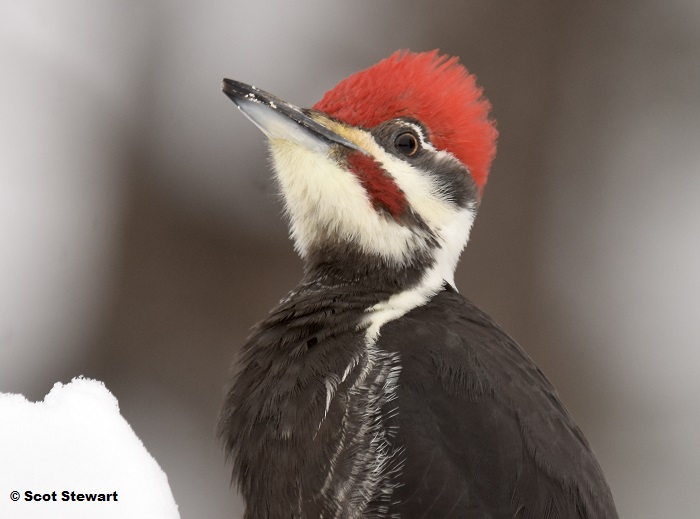
Male Pileated Woodpecker.
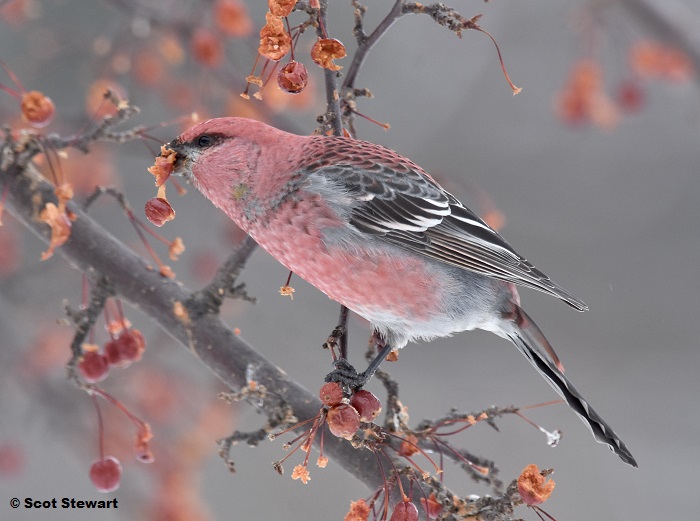
Messy Male Pine Grosbeak.
12.11.22 Hosting again today at MooseWood Nature Center, a really quiet day and taking care of the bird feeders. It has become my favorite place to photograph pileated and red-bellied woodpeckers. They have become quite tame for me and allowed the chance to catch them close as they are on the feeders. They usually announce their incoming plans so I can get ready. They are such colorful treats for these gray overcast days!
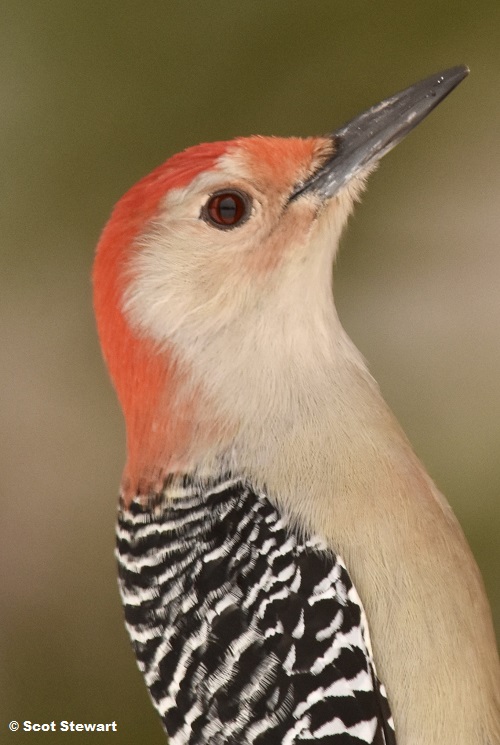
Red-bellied Male Portrait.
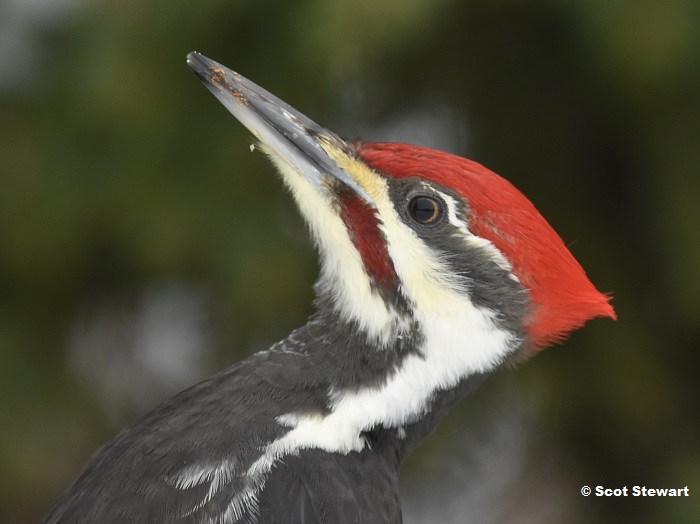
Pileated Woodpecker Male Portrait
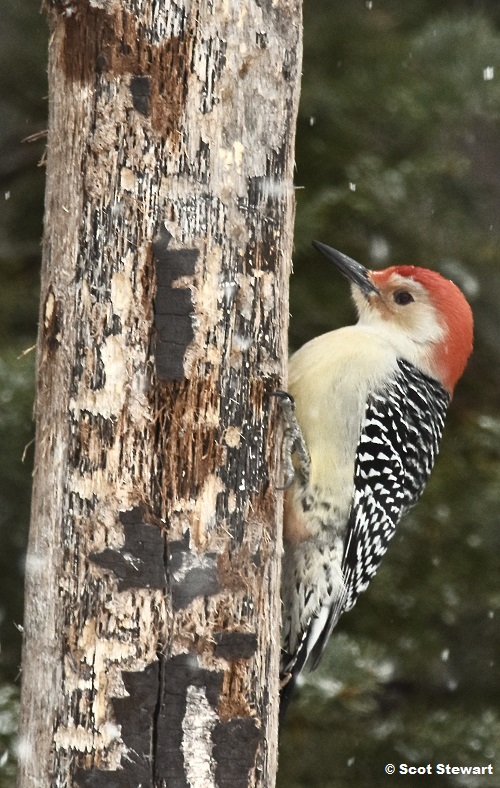
Male Red-bellied Woodpecker
11.18.22 The good fortune of great collegues left me with a wonderful collection of Indian or flint corn with an amazing variety of colors and patterns on the cobs. It has left me spending hours exploring the 30+ cobs with the sequences and diversity of colors I could not have possibly imagined. It has been like wandering through a gold mine and finding all sorts of new veins to wonder over and the utter amazement at how delightful the world is!
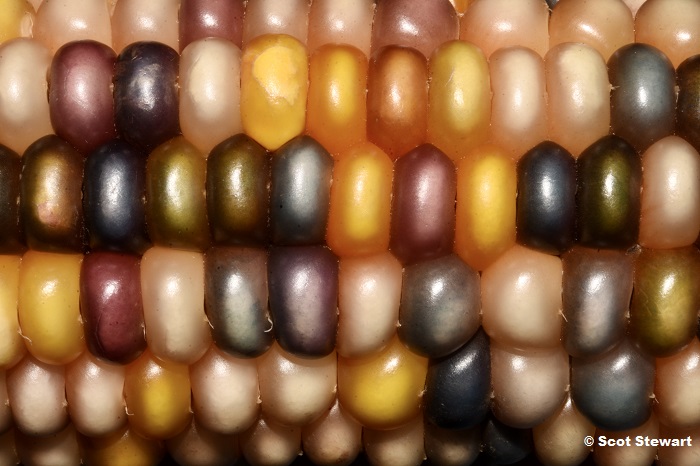
Indian Corn
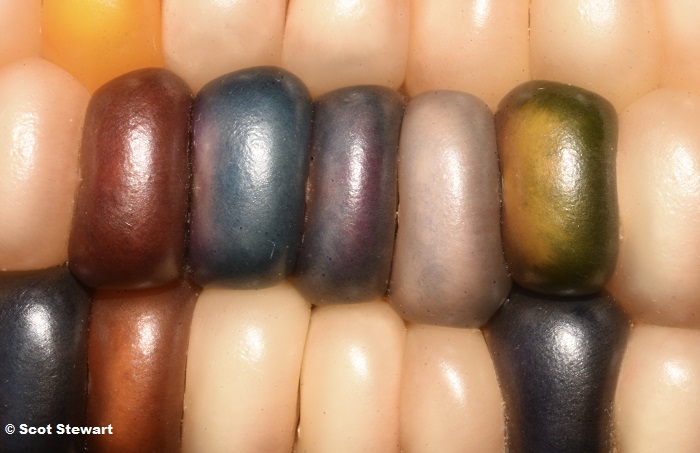
Indian Corn
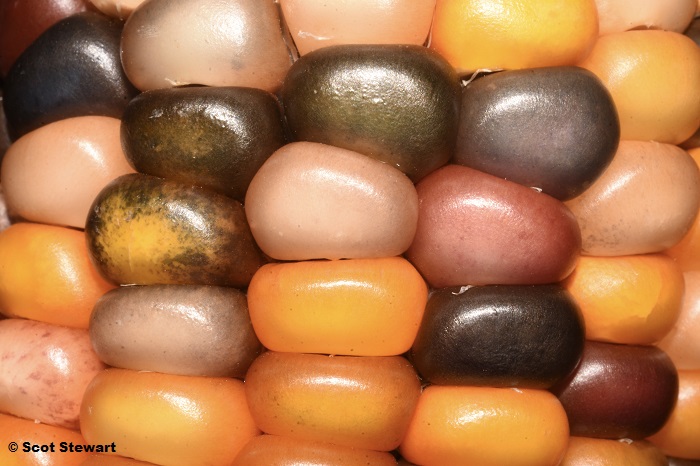
Indian Corn
11.15.22 Hosting today at MooseWood Nature Center and taking care of the bird feeders. It was a delightfully active time with a flock of 14 wild turkeys, lots of chickadee, nuthatch and woodpecker activity. a quirky six or seven point white-tailed buck and evena fly-over bald eagle. Presque Isle Park is such a jewel! I do not know of another city park with so much!
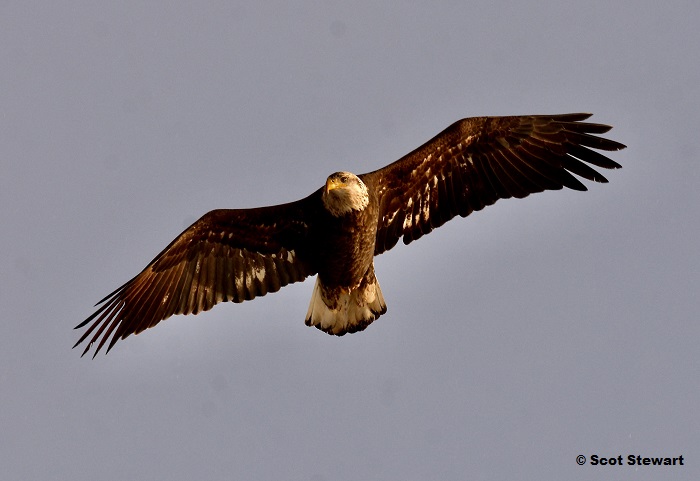
Bald Eagle still flying with some juvenile feathers.
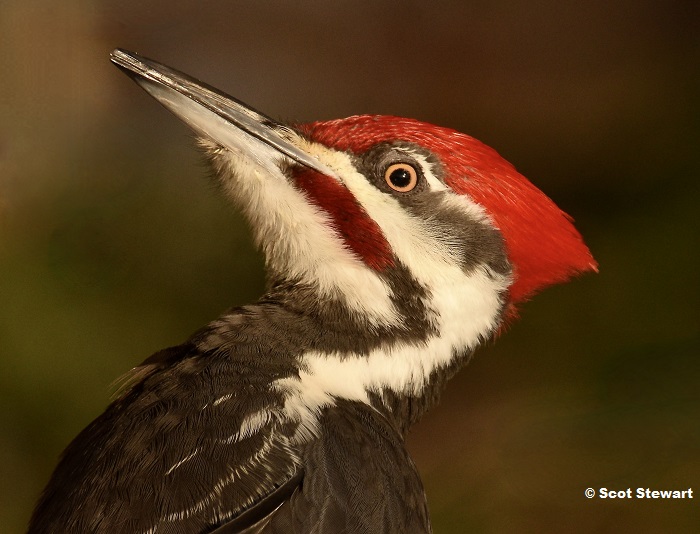
Male Pileated Woodpecker
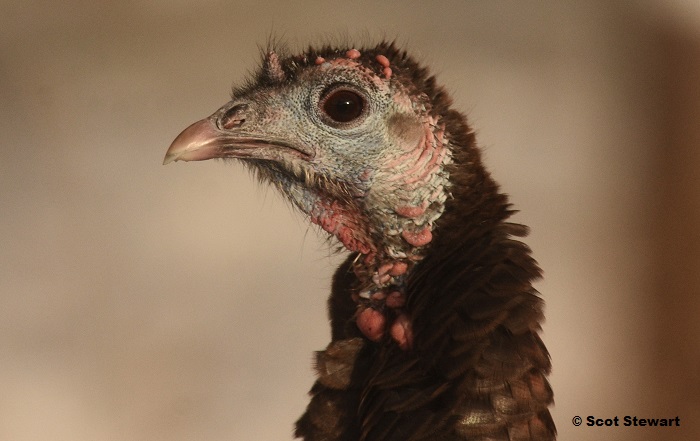
Wild Turkey
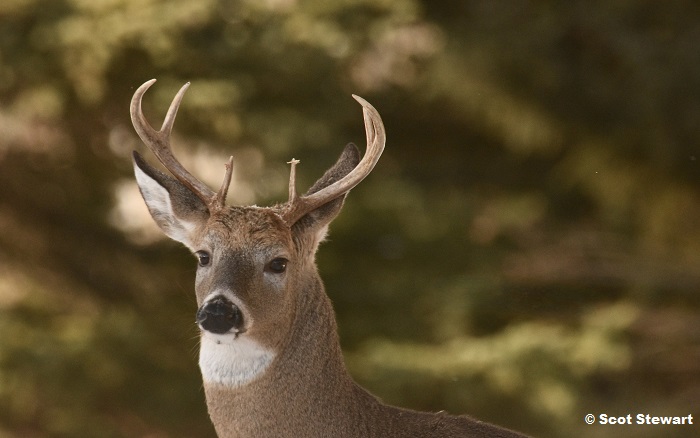
White-tailed Buck
11.13.22 I love the serendipitous character of life! When nature just throws something in front of you that is so good, it is just wonderful! I was running an errand down by Lake Superior after a recent snow and happened on a sextet of snow buntings feeding on the seeds of some weeds in a small gully. They seemed to be finding lots to eat and put on quite a show trying to get to all of them!
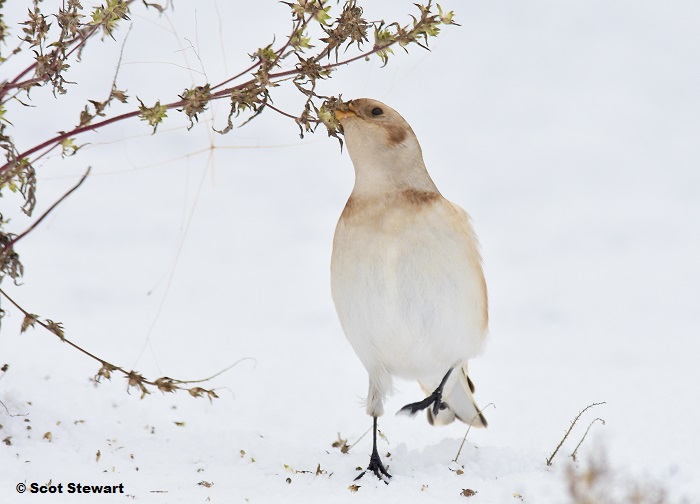
Snow Bunting reaching up on tiptoe for seeds,
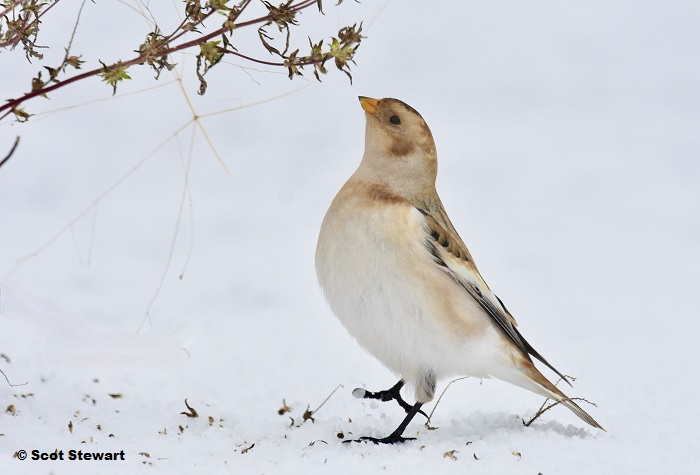
Trying to Reach the Good Ones
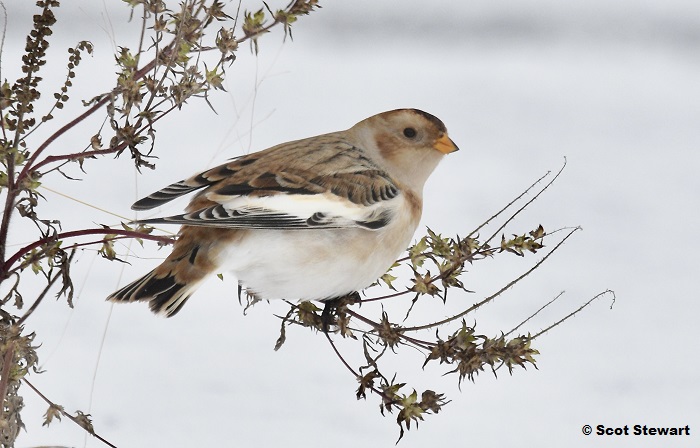
Sitting in the Weeds
4.27.22 Spring is trying hard to get to the Upper Peninsula, but is definitely having its struggles. Had a couple inches of snow yesterday with a nearly all day snow and it barely made it above freezing today. Luckily, signs of spring are apparent. A small group of northern shovelers has descended into a small mitigation/retention pond on the north end of town and have been quite cooperative. Never realized just how beautiful they are!
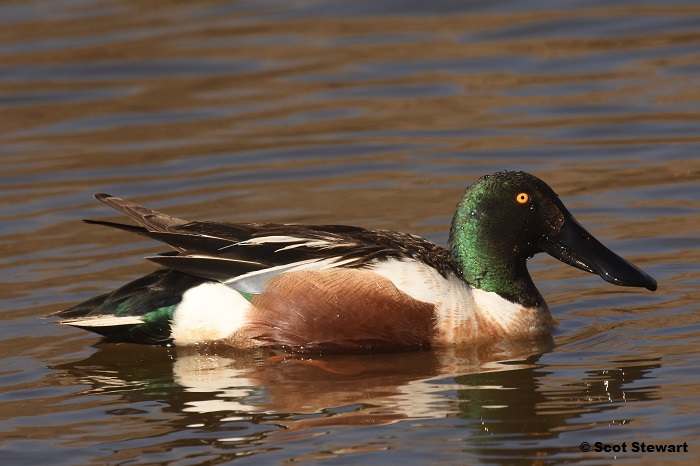
Northern Shoveler Drake
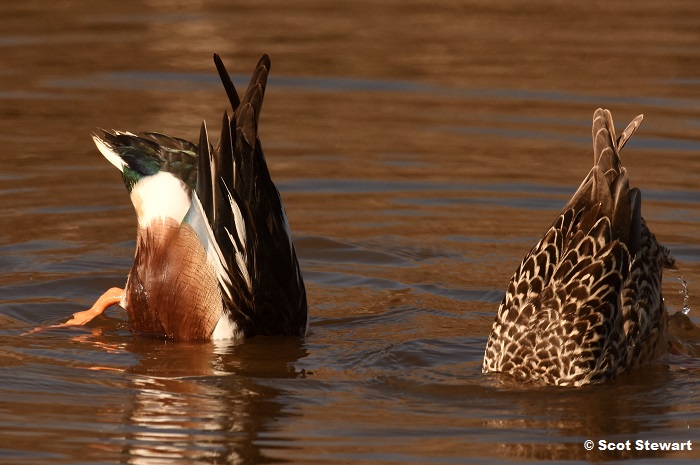
Northern Shoveler Pair Feeding
2.04.22 It is unbelieveable how different the times are. Seems like so little time to get a word in here but I'll try.
It has been another wonderful winter for birds, with a steady Townsend's solitaire to start things off and plenty of pine grosbeaks and
bohemian waxwings to fill in the gaps. three of my favorite winter birds! If you look at the latter two you can tell - I follow them around
town all winter when they are here. I had an unsuccessful search for white-winged crossbills in Harvey today and returned to south Marquette empty handed.
While tooling around Bothwell though I did find a flock of pine grosbeaks and stopped in the cloudy shadows to get a few shots. They moved across the street
into a mountain ash and were joined by a bright unknown bird. Turned out to be a leuchistic bohemian waxwing. It worked through the middle of the tree before
appearing briefly on the outer edge then flew off to the south. I headed that way and relocated the pine grosbeaks in a crab apple tree. As I photographed them
a cloud of bohemian waxwings began to arrive at the same tree. It looked like someone poured them out of the sky on the tree. They moved up the street, filling
the tops of five large oak and maple trees, then headed east to another neighborhood crab apple to the eat. What an afternoon it was!
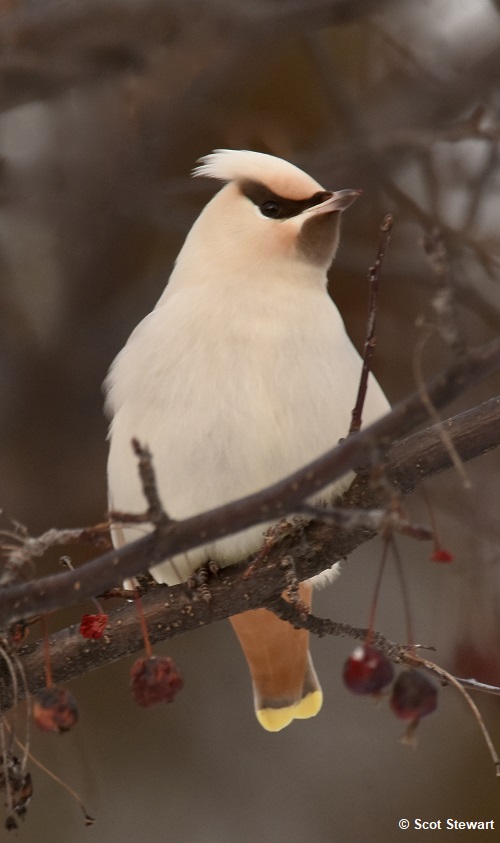
Leucistic Bohemian Waxwing
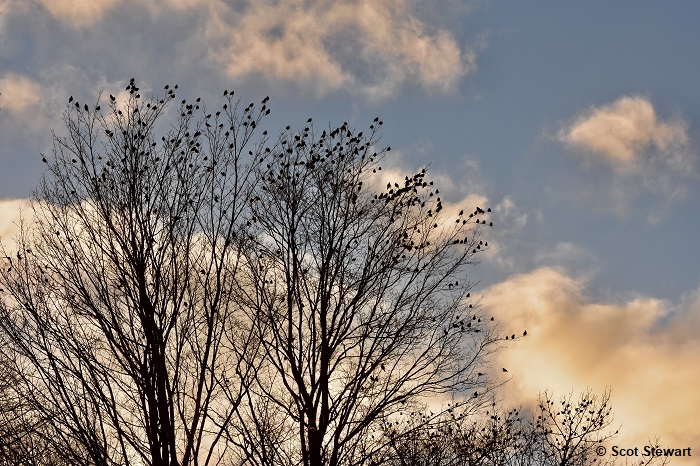
Bohemian Waxwing Flock
10.25.21 Well, after managing a mild case of Covid recently, it was good to get back outside and see the world!
I did get my first two shots, but that was back in mid-January and March, but was glad to have them amd have a relatively quick recovery.
Still working on getting my taste buds working properly though. In all my years of living in Marquette I never thought we would be regular
hosts to northern cardinals. But are we not only hosts to a pair, but all the young too this fall, with at least four, maybe five at the
feeders at a time! It is simply wonderful. Can't wait to watch them all this winter when that splash of red really means so much! Did get
to the Dead River looking for the last of the shorebirds, horned larks and gulls and did manage to have a wonderful time with some common mergansers.
Marquette is such a great place!
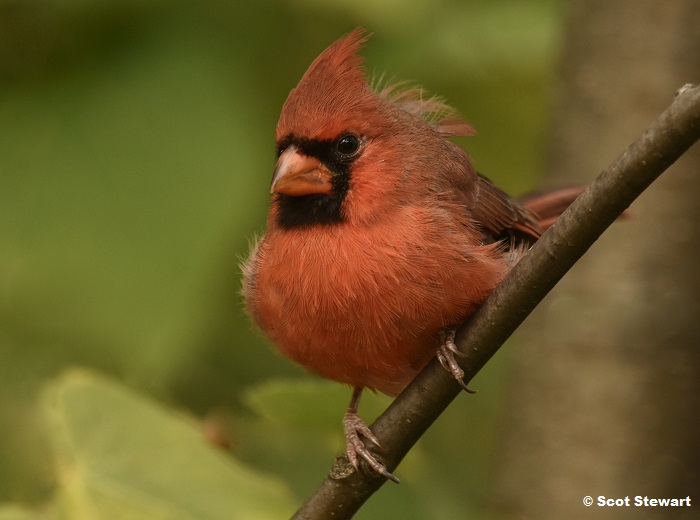
Male Northern Cardinal
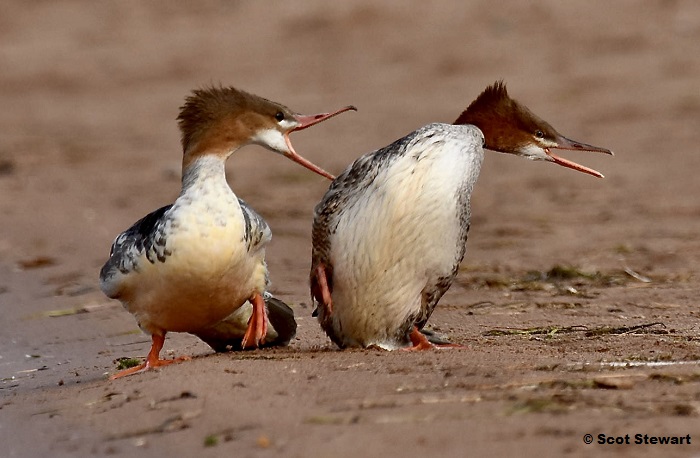
Common Mergansers Agreeing to disagree
7.15.21 One of the best parts of travel is the excitement of the unknown - what new animals and plants will be there?! We have made two trips to Wisconsin this summer and have not be disappointed with all the enjoyment that has come from visiting family and friends and all the discoveries too. Birding has been really great, with some hard to find birds for the Upper Peninsula more easy to find, and others really tough to find close to home. Here are a few of the ones we saw.
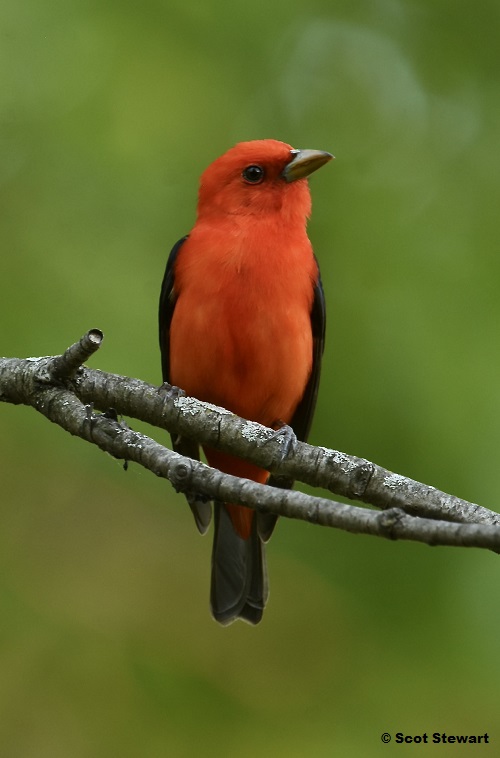
Male Scarlet Tanager
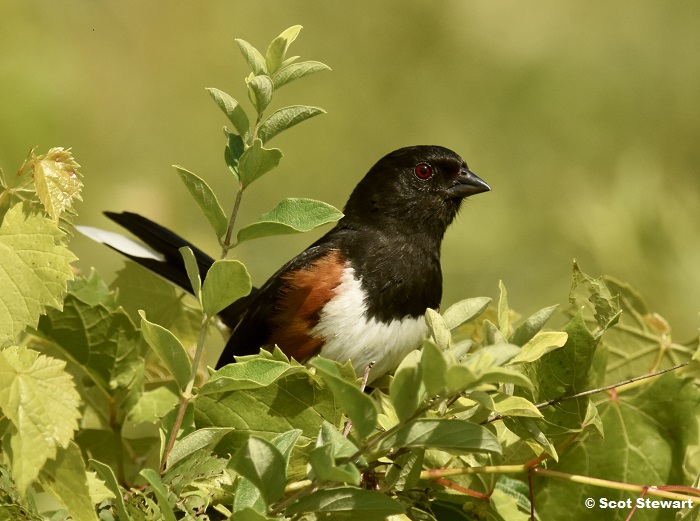
Male Eastern Towhee
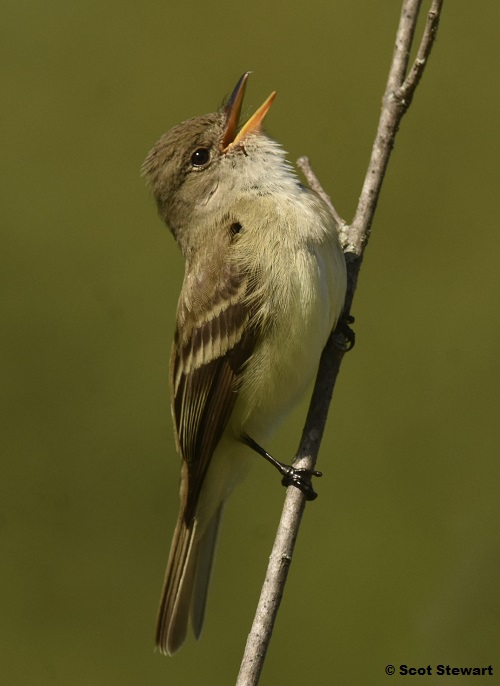
Willow Flycatcher
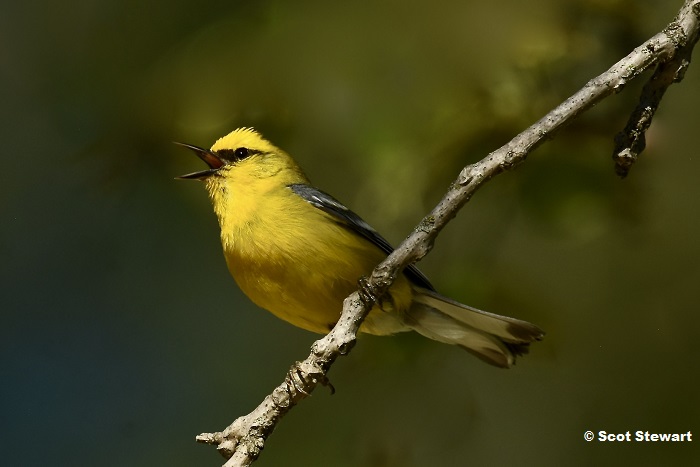
Blue-wingedWarbler
7.7.21 Summer is such a great time. So many flowers, birds insects, fungi and slime molds to look for and photograph. To enjoy all these of course means being outside and not at the computer - so there has not been much time to get new images here. Here are a couple.
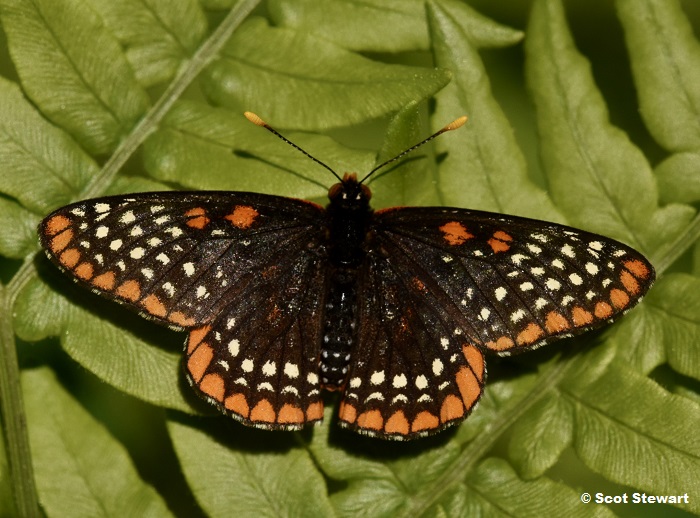
Baltimore Checkerspot
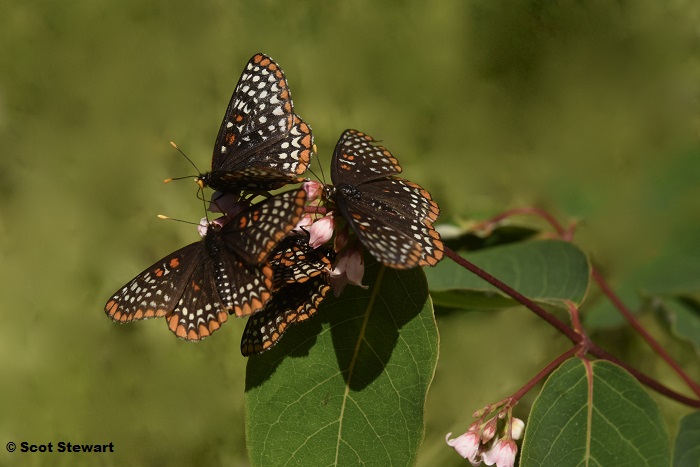
Baltimore Checkerspot Group on Spreading Dogbane
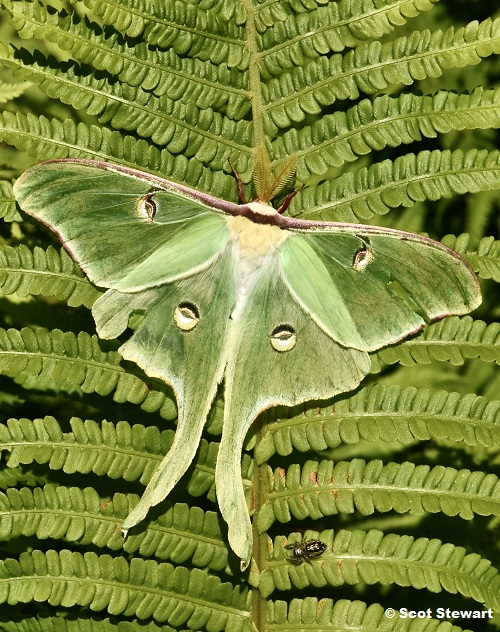
Luna Moth with Jumping Spider
6.24.21 One of the great parts of summer with no school is being able to pick a clear, cool morning to look for warblers. The Peshekee Grade in western Marquette County is one of my favorites. So early this morning I headed west, found some warblers, and so much more. Irises, dragonflies, clear wing moth, evening grosbeaks. Only saw two mosquitoes and a few blackflies - not a good sign for the birds and dragonflies in search of food. There was a bit of traffic on the road and some new culverts being put in by a great crew, but by and large it was quiet, out of the way. Just where I want to be.
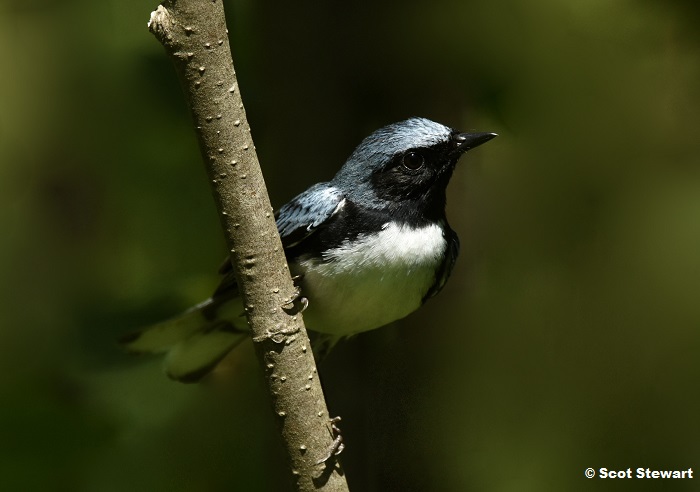
Male Black-throated Blue Warbler
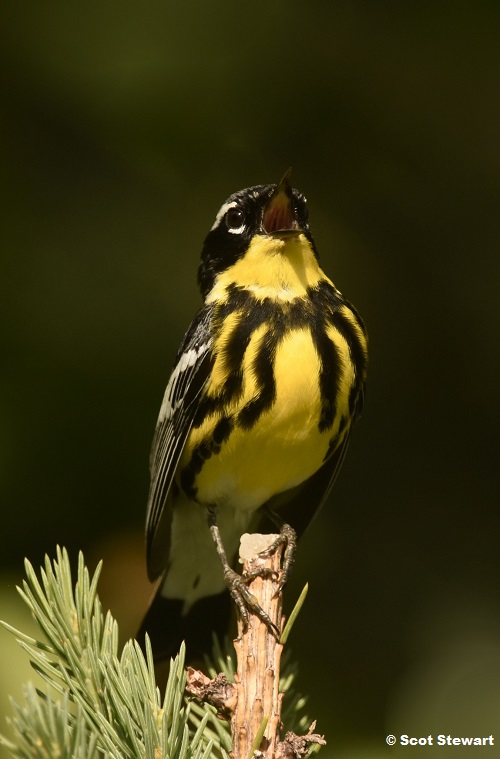
Male Magnolia Warbler
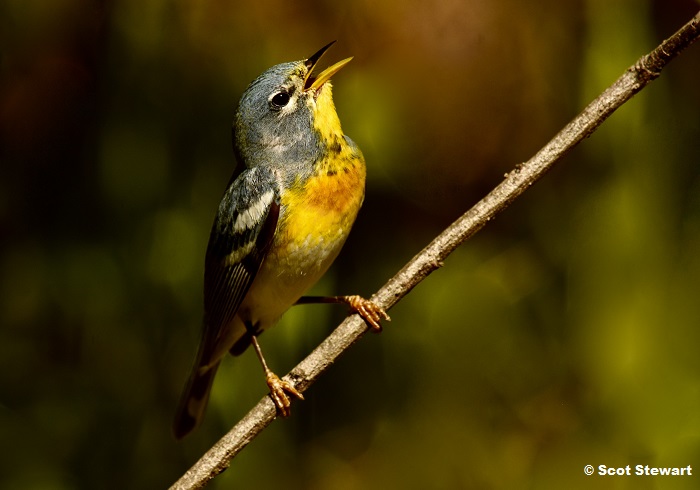
Male Northern Parula
4.20.21 More of the red foxes. After shooting all weekend I did have lots of wonderful glimpses at their lives.
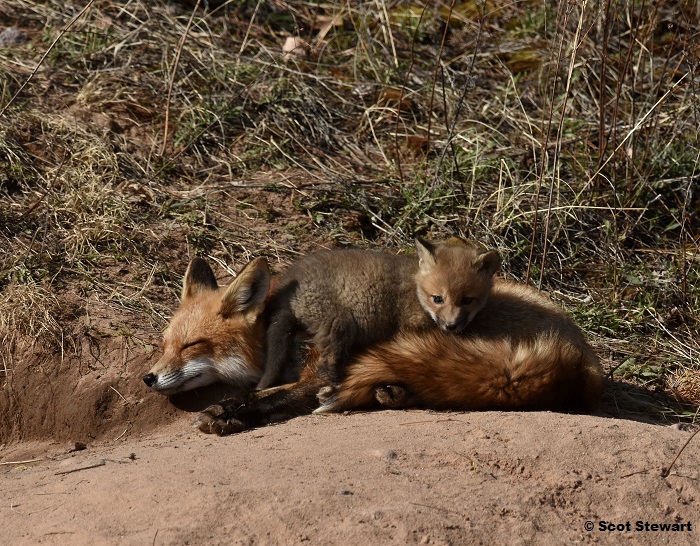
Female Red Fox with just one pup relaxing.
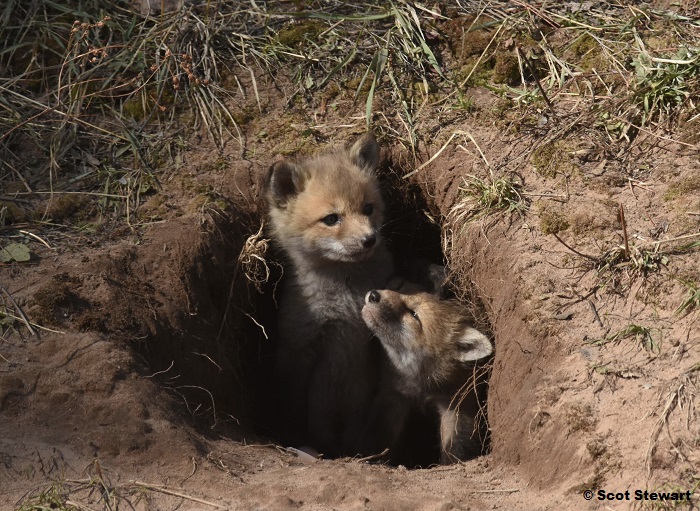
Pups at the den mouth.
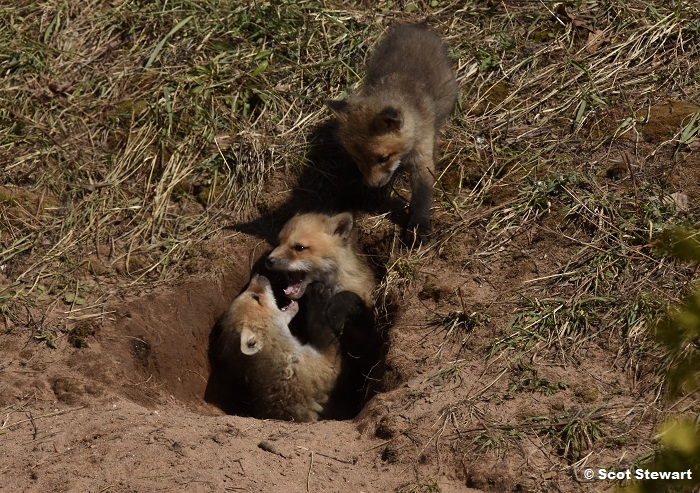
Pups at the den mouth rough-housing.
4.20.21 It is Spring in the Upper Peninsula! Noisy flocks of Canada Geese overhead, warm, balmy days, and show squalls! Tpday it was the latter. I had seen a flock of American wigeons had arrived so after school I went out to find them or see if the red foxes were out that I had photographed over the weekend. (See below.) I dipped on both but kept looking for birds as I headed out toward MooseWood Nature Center at Presque Isle in north Marquette. At a small wetland near the park I found some blue-winged teals as s kinfisher dove near them. The teals were very tame an d cooperative and were joined by a myrtle warbler and a palm warbler. Watched a raven chase a young bald eagle along the lake shore and listened to red-winged blackbirds. The cold sun dipped in and out of snow-filled clouds to top over a delightful afternoon.
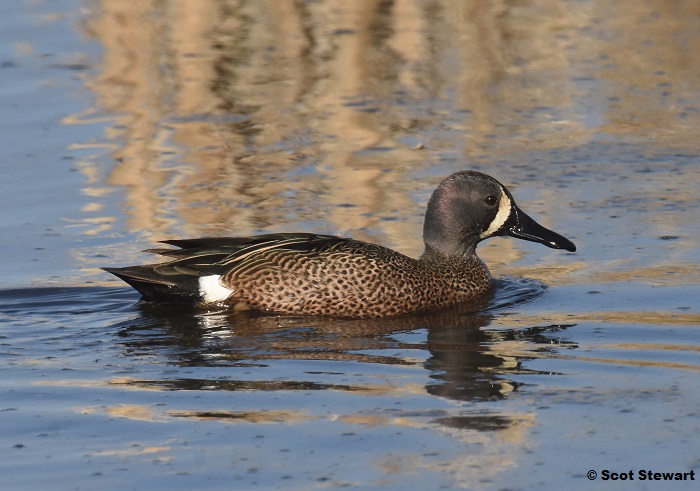
Male Blue-winged Teal
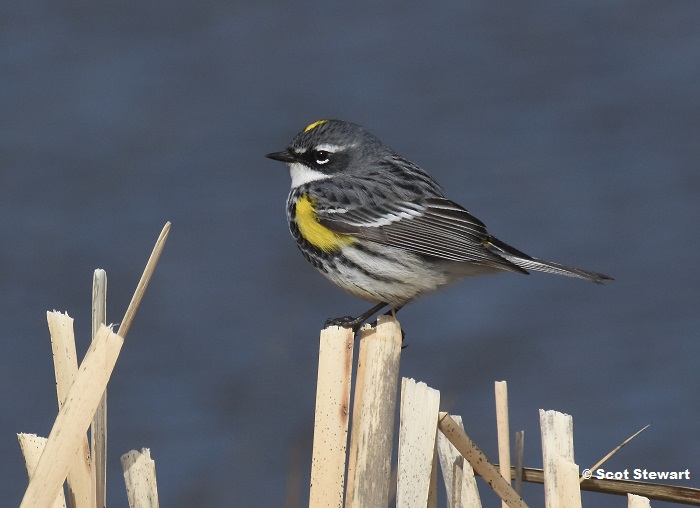
Male Myrtle Warbler
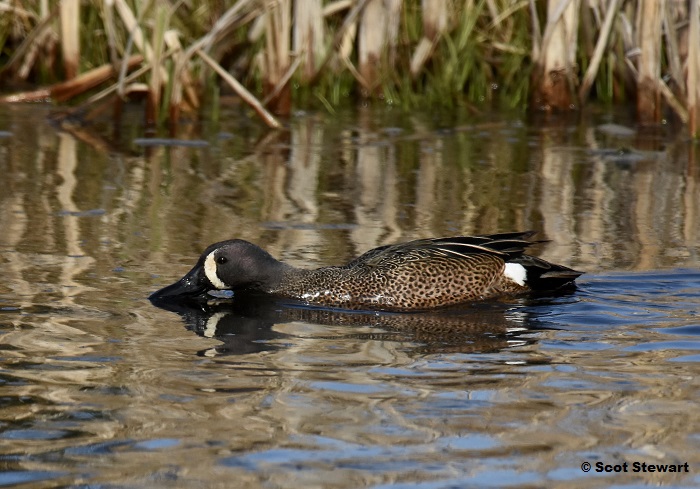
Male Blue-winged Teal Feeding
4.18.21 From the time I got my first good red fox pictures in Marquette I have wanted to photograph them more. I savored the opportunities I had to photograph wolves but this was even better because they wer so elusive and wild. Finally had the chance this past weekend in Marquette. A friend put me on to a den in town What a wonderful opportunite to connect with a relative tame family. Waiting for the brief chances to watch the young family - pups about four weeks old.
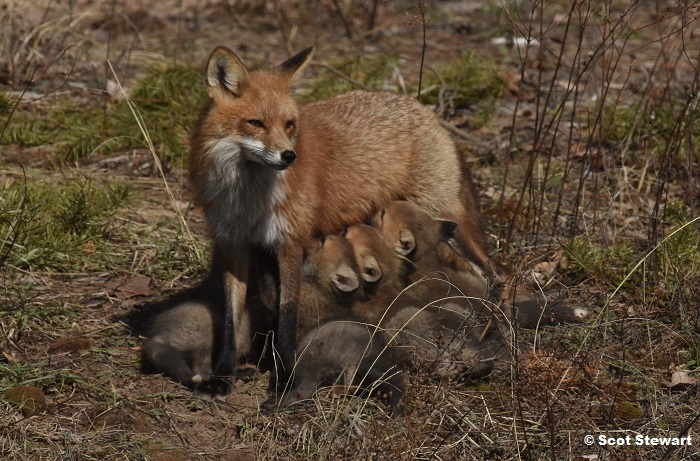
Female Red Fox nursing seven pups.
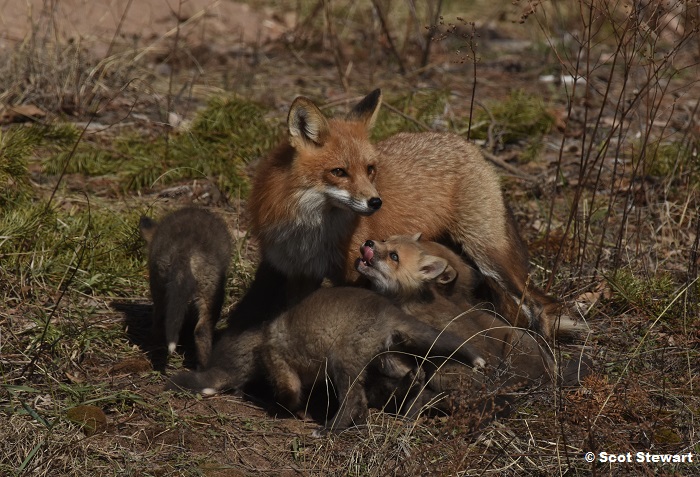
Female with Pups finishing Nursing
4.8.21 Occasionally I mention a possibility of a book I would title "Pictures I took on My Way to Someplace Else". Something like that happened today. I went to the Dead River Marshes in Marquette, in search of a yellow-throated warbler seen there several times. No luck. I searched with four other birders and did get to watch a wonderful sweep of a northern harrier, but no warbler. Whil I looked though I heard a wonderfuyl chorus of wood frogs in a slender pond. The sky was clouding over, light not very good but there were many frogs and they were very visible floting on the pond surface, skittering along singing. I worked down to the edge of the dark water and was surprised to find them continuing with little alarm. Eventually one even got close enough to use a flash in the failing light, jsut before a brief shower began. Metalic water and shining frogs made for some special shots.
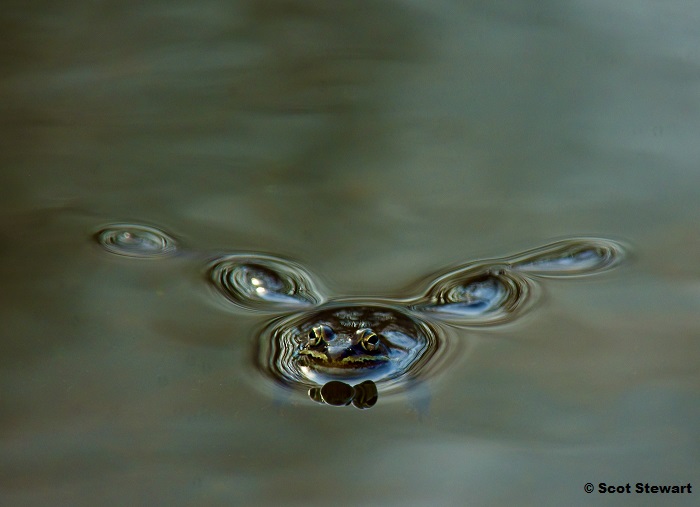
Wood Frog Checking the Shoreline
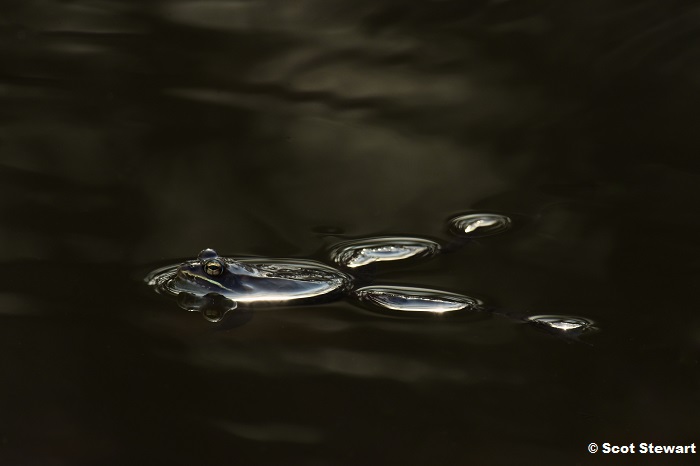
A Silvery Wood Frog
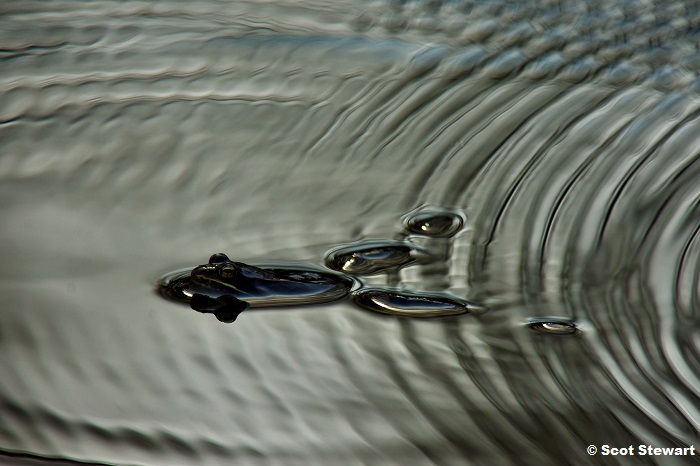
Wood Frog in the Fading Blue
4.5.21 I never have to look to far to find something amazing, beautiful, so full of wonder for me. While standing on the front porch today I found a tiny zebra jumper - a jumping spider. Dashed in, got the camera and focused down - it was small. It kept slipping over the rail and I kept coaxing it back into the sun. Then it did something I have not seen before - it raised up on its "tippy toes" and looked big! Well, bigger. I was impressed!
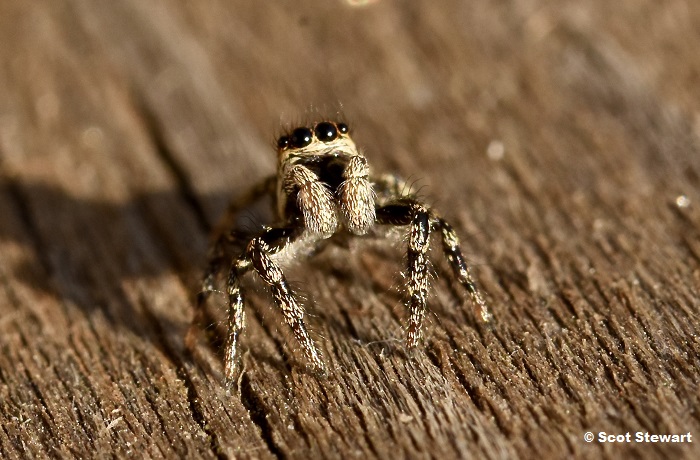
Zebra Jumping - Jumping Spider Extending its Legs
4.1.21 Finally got out of town! Travelled south to see family. I did leave in a snow storm, but was excited to finally get out of the Upper Peninsula on a trip, although, I cannot think of a better place to "stay home". I had been watching the reports on ebird and looked forward to seeing some ducks, somewhere, as there were reports of 1000's in the Green Bay area in Wisconsin. Returning northward it was a beautiful, sunny day, but still on the cool side. Anxious to get through the cities, I reluctantly passed on a stop in Illinois where there were 100's of American white pelicans resting and feeding. However, in Green Bay, I stopped at one of my favorite places, Bay Beach Nature Center where they have two large ponds that frequently attract a large number of migrating waterfowl. It seemed to be pretty quiet when I first checked the waters, but did spot a trio of esser scaup and a pied-billed grebe. Good enough to get the camera. WOW! It turned into a fabulous afternon with the trio, the grebe, three wood ducks, a northern pintail, a pair of American black ducks, a partially leucistic Canada goose, a mallard X black duck hybrid and an American Pekin duck, an escaped domestic duck. Farther north I found wigeons, blue-winged teal, shovelers, bufflehead, muskrats, a bald eagle, a pair of sandhills and a northern harrier. Did not get shots of the last three but it was a wonderful day to travel and enjoy a quiet turn of the seasons. Always a treat to see the changes in trees, snow cover and green as you travel north this time of year!
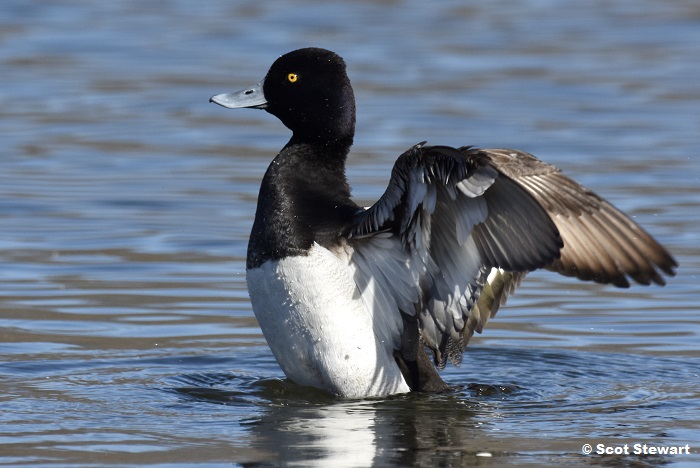
Male Lesser Scaup
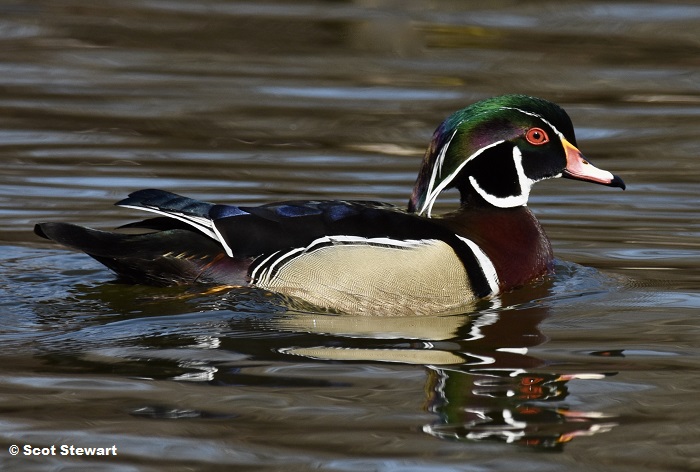
Male Wood Duck
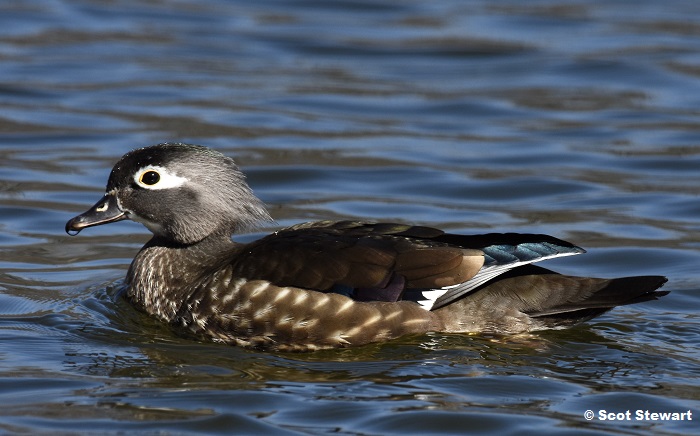
Female Wood Duck

Northern Pintail
3.22.21 Lake Superior ice in Marquette seemed to disappear overnight. We went so fast from more than a foot of ice to golden, inviting water! I have watched the patterns of sunhine on and in the water next to the breakwall (breakwater) in town.
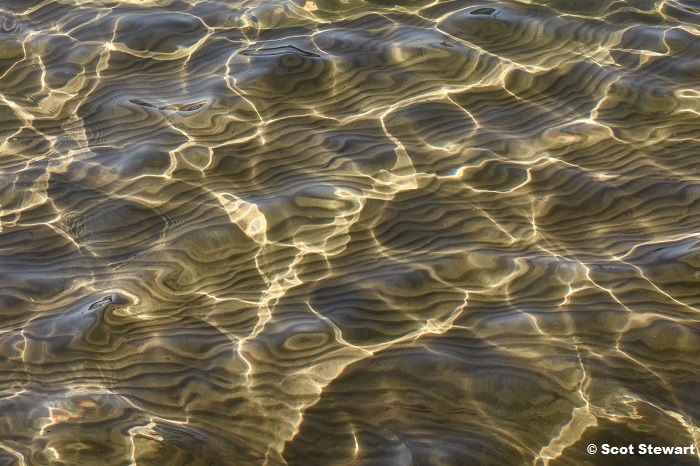
Sun-created Water Fractals
2.22.21 Winter 2020-2021 has been an amazing one for photographing in The Upper Peninsula of Michigan. While it has been a brutal winter for Covid, blizzards, tornadoes,power outages and other, the quirkiness of the mild start with many lingering birds, and the extreme cold the past week+, and some amazing Lake Superior ice have made for a time of photographic plenty. I missed the clear, black ice that quickly formed on the Lower Harbor of Marquette this month, and it quickly covered in snow. But I wondered if I could find some interesting cracks and bubbles but shoveling the Lake and I did. Spent nearly six hours this past weekend uncovering a secret world of intricate details! I found that photographing under a blue sky allowed the ice to capture a hit of blue. Bubble streams were inriguing too. When there was white ice cracks behind them they appeared dark gray. When there was black ice behind they seemed to be creamy white. Around the fifth time out on Sunday the ice seemed to start cracking underneath my knees. The water beneath the ice started bumping the ice, creating sounds like a water filled base drum. It was gorgeous, living ice!

Frozen Lake Ice Detail
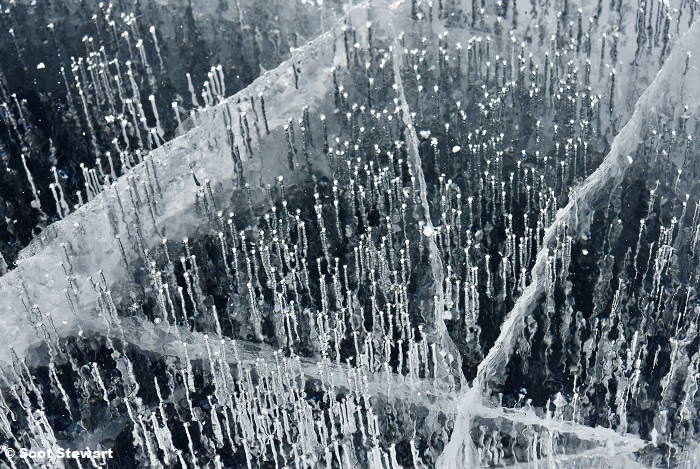
Frozen Lake Ice Detail
2.15.21: With the current subzero temperatures, a few of our late winter guests - the orange-crowned warbler and the summer tanager disappeared, and it seemed suddenly quieter. The Dead River quickly sealed over too pushing the American wigeon and the green-winged teal to join the mallards and black ducks on Lake Superior in north Marquette, until that froze over. With the promise of winter finches like evening grosbeaks and redpolls coing to the area, I started watching and regularly filling the MooseWood Nature Center bird feeders at Presque Isle and was immdeiately rewarded with rewarded with regular visits by nuthatches, chickadees and woodpeckers. The best for me was a beautiful red-bellied woodpecker, one of my faovirtes. The male that has visited has one of the rosiest breasts and bellies I have ever seen. It alternates feeding on blck-oil sunflower seeds at a platform feeder and suet. Recently I also had another male on a platform feeders at miy house. Never did I image I would be able to photograph cardinals and red-bellied woodpeckers in Marquette.
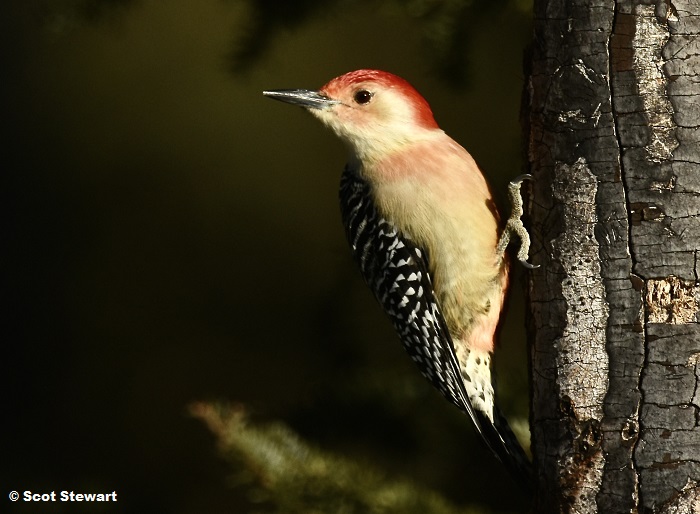
Red-bellied Woodpecker Male
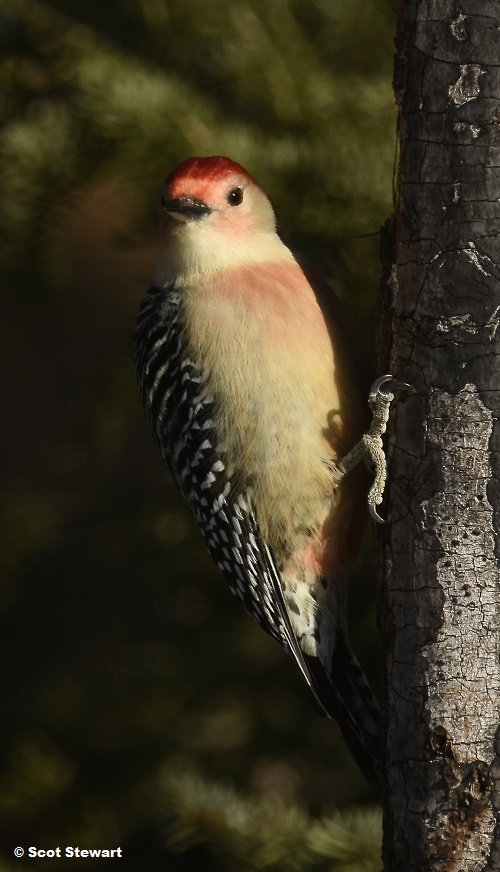
Red-bellied Woodpecker Male
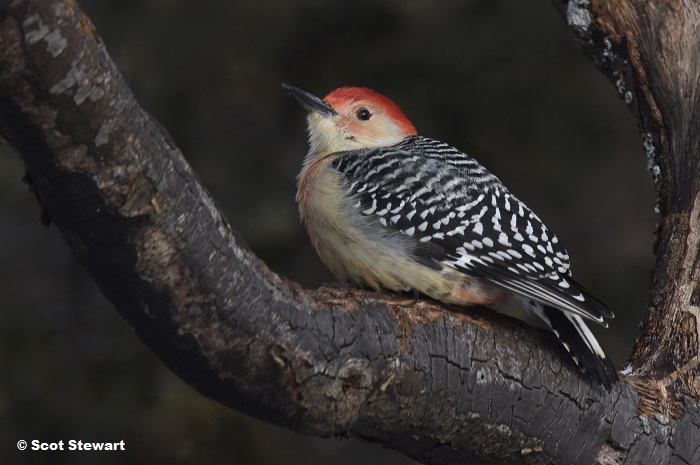
Red-bellied Woodpecker Male
2.4.21: The mild winter temperatures have kept several rivers in Marquette to remain open affording the opportunity to get great looks at local waterfowl. Along with the mallards and black ducks at the Dead River, common goldeneyes, trumpeter swans, common mergansers, a green-winged teal and an American wigeon have been feeding and resting. Because of the narrow stretch of the river at Granite Street, those great views of the ducks and swans as they pass back and forth have continued. Occasionally the lighting and passages have been near perfect.
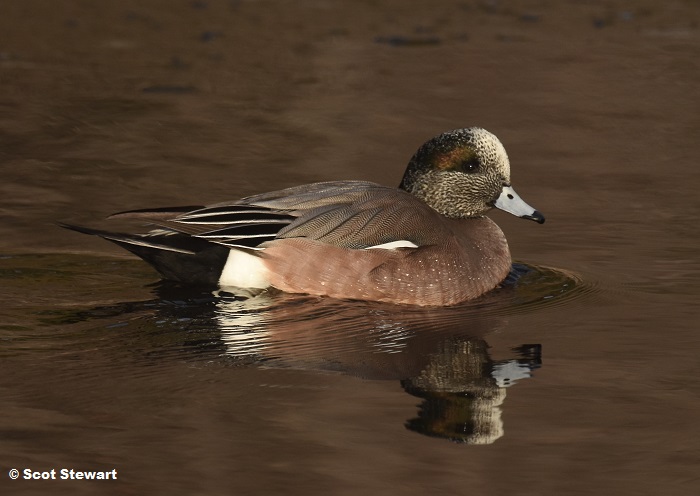
American Wigeon Male
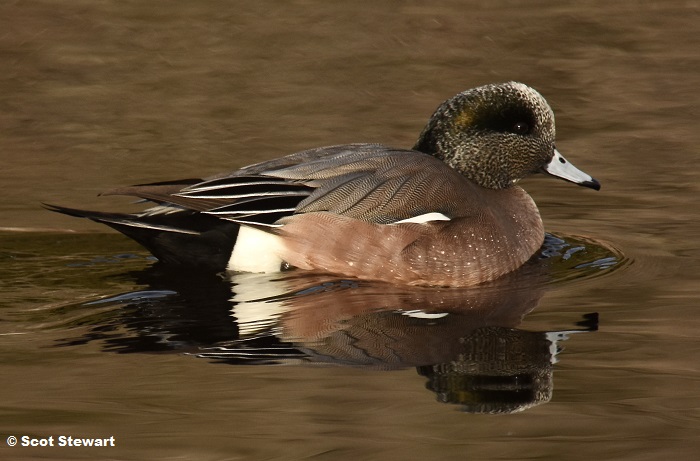
American Wigeon Male
1.31.21 Winter has been full of wonderful surprises! The congregation of ducks on the Dead River in Marquette have provided regular chances to see ducks at close range, just motoring back and forth on the river. Shortly after arriving at a great spot open to the public, I looked downriver to see one of Marquette's albino deer, a descendent of a buck brought to Marquette in the 1980'2 and placed in the city zoo - deer pen at Presque Isle. When the zoo was disbanded, all the deer related to the buck left carrying the albino gene to continue the family line. I drove over to friends' home and asked to look for the doe. No luck. But as I climbed into the car to leave it stood at the end of the drive with a nother doe and posed for literally several minutes. As I went to leave again my friends reported a pair of trumpter swans were on the rive! What a great day!
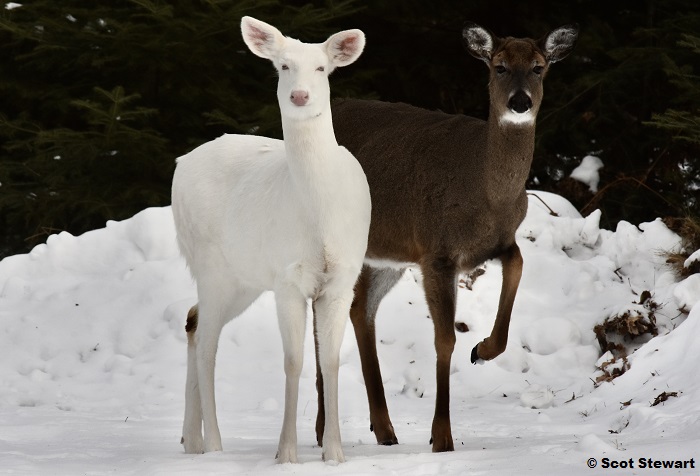
Albino Doe and Friend or Sister
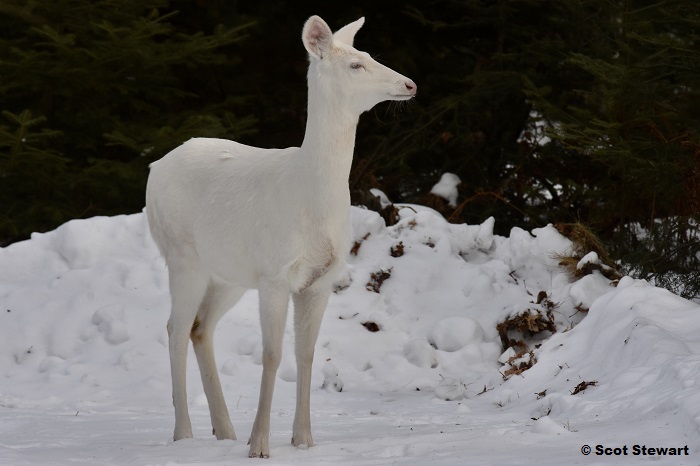
Albino Doe Standing Alone
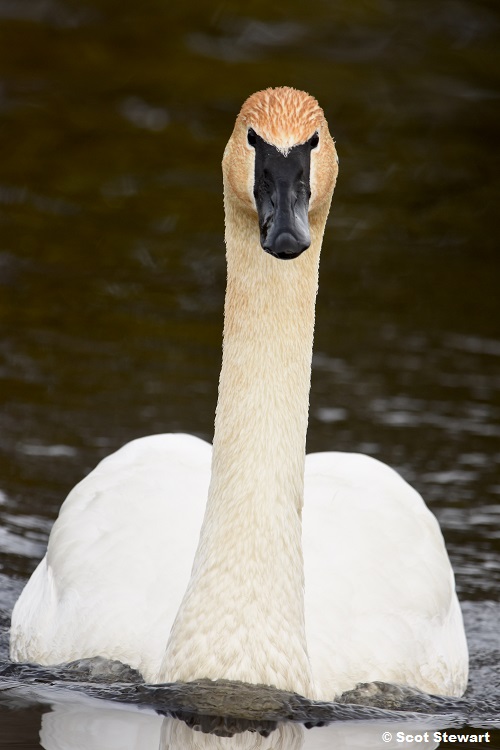
Trumpeter on the River
1.25.21: An email just before the Christmas bird count last month told of an unusual feeder bird in town. The image was small but it was clear it was a summer tanager. So off we went to look for it on the count - poaching actually into another zone for the count. As we arrived at the house we heard crows - lots of crows! Over thirty, and eventually we found the snowy owl it was mobbing. Called in most all the counters out that morning and a number of photographers too. The activity alerted may of the residents in the neighborhood, and the fact the owl was 50 feet up in a large white spruce made it possible for maybe a hundred more to see the owl without disturbing it. The crows and blue jays were trouble, but some blue jay feathers were on a branch near the owl so there was some rewards for the owl, perhaps a meal. Later one of the counters spotted the tanager too. In the last month I have hung out in the neighborhood trying to get "the perfect shot" of the tanager, really without success. But it has been a wonderful opportunity to meet many in a great, friendly neighborhood, including several collegues from school. and also find an orange-croned warbler and a leucistic house finch.
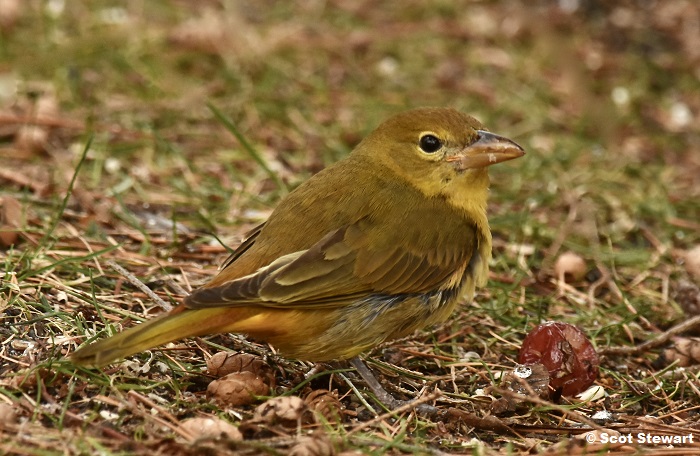
Cold, Female Summer Tanager
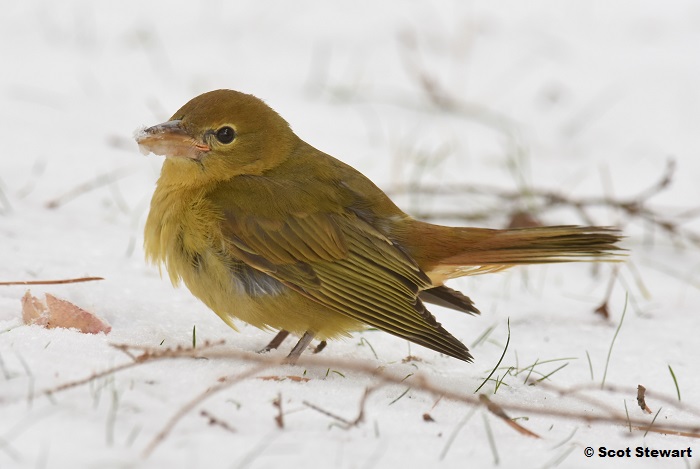
Cold, Female Summer Tanager
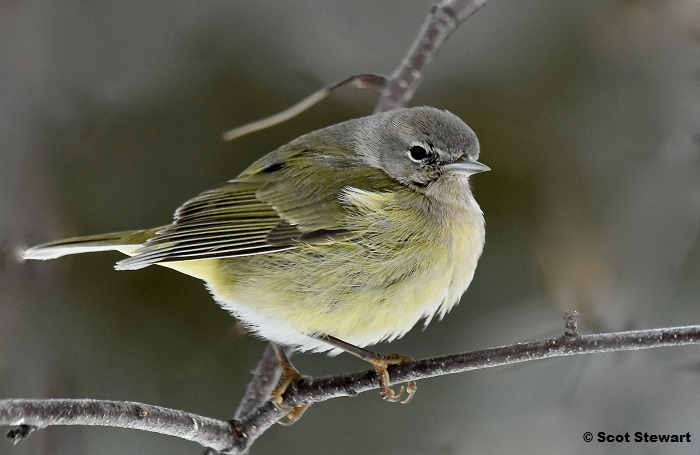
Orange-crowned Warbler
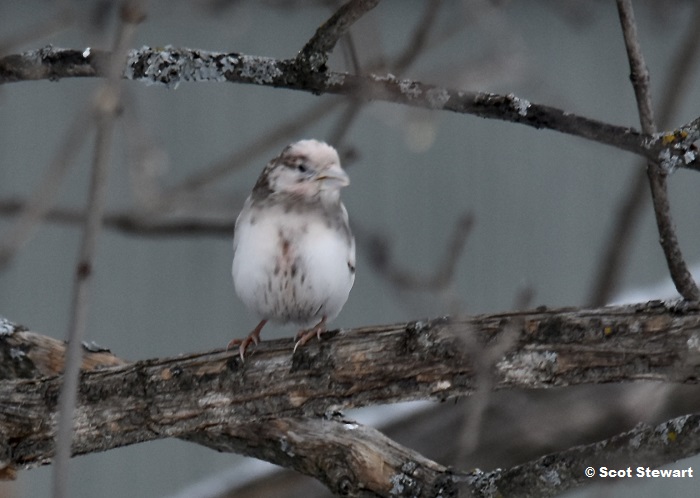
Leucistic House Finch
11.2.20 My photography class and I were examining logs near school today and on one I found an amazing mushroom - a splitgill.I have never seen one like it before and found it to be one of the most beautiful mushrooms I have ever seen. Our explorations this fall have uncovered so many different fungi and slime molds I have been just overwhelmed with wonder, surprise and amazement. Many of the students have also gotten excited by the varieties and colors, and look like professional detectives looking for evidence!
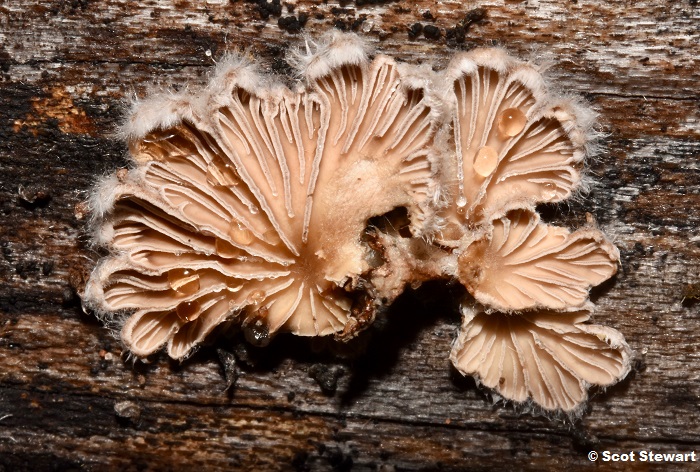
Splitgill Mushroom
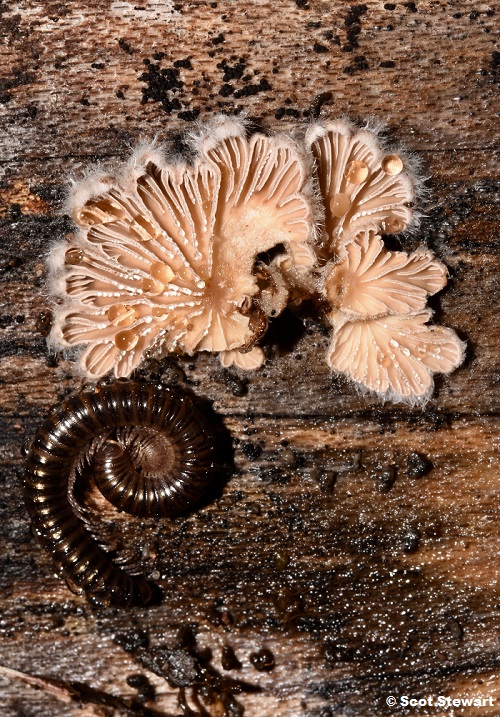
Splitgill Mushroom with Millipede
10.30.20: There is nothing like mixed flocks when it comes to photographing birds. When flocks are migrating south in the fall, you never know who is flying together. Found a flock of snow buntings behind school today and was delight to find a pair of horned larks with them. There were patches of melting snow all across the field so it was wet and the birds were moving quickly across the soccer area and a bit flighty. I noted another bird join the flock near 5:00 and realized as it moved away from the glare of the sun it was an American pipt. After trying to get closer onec and having it move quickly I learned my lesson and sat tight. Not only did it mover toward me, but took a brief bath in a puddle right in fron of me. I felt honored and blessed! It was one of those rare moments when sitting still for a while lets everyone relax and just do their thing.
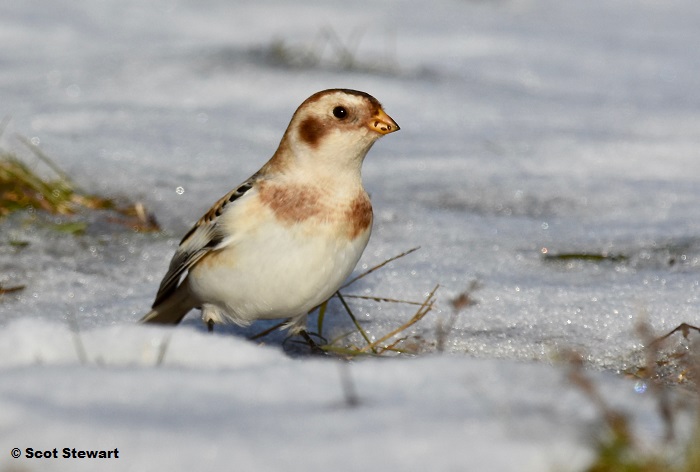
Snow Bunting in Fall Plumage
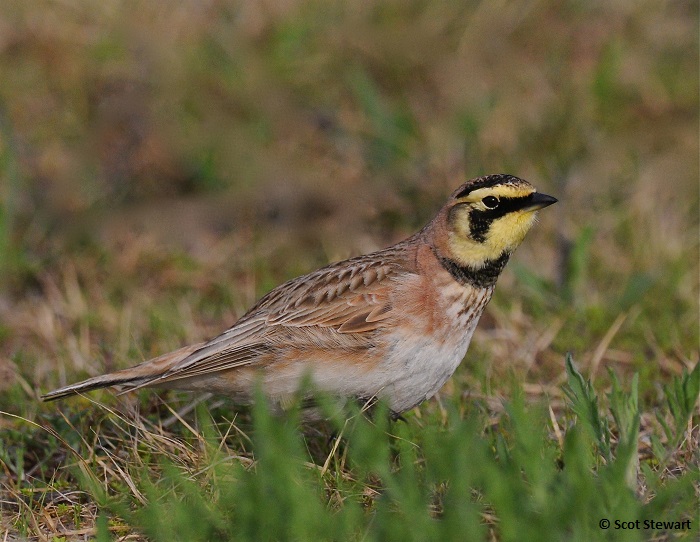
Horned Lark
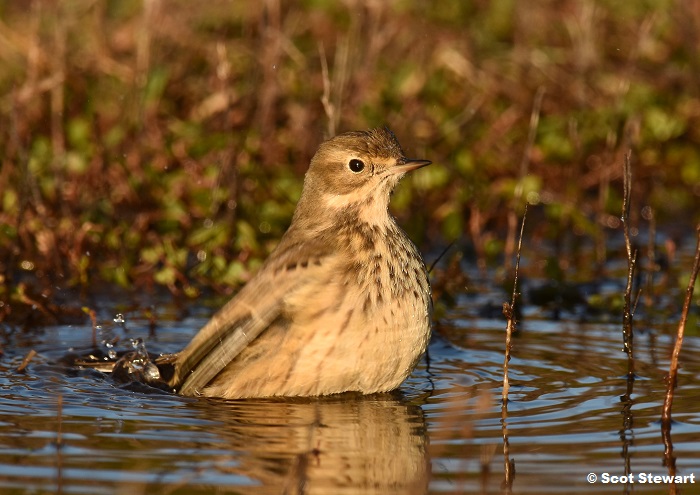
American Pipit
10.1.20 What a treat to be outside everyday looking at the changes in the small details of life. Probably not a lot of people who take delight in the new mushrooms and slime molds in the neighborhood, but I have convince most of my photography class they are cool. We scour the maple-birch-ironwood woods near school most days for new subjects and have rarely been stumped. Some are really difficult to identify, even with iNaturalist but they sure are fun to look for and photograph!
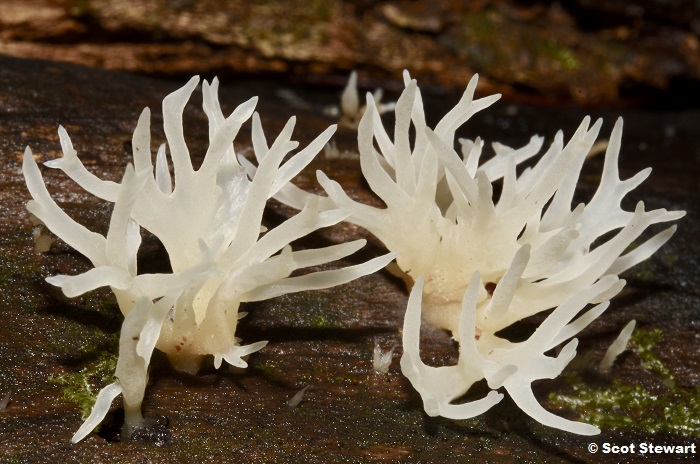
Lentaria sp.
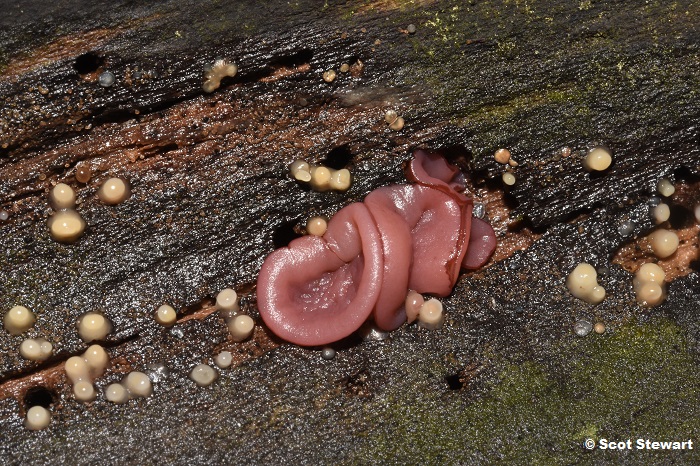
Purple Jellydisc - Ascocoryne sp. - there are two species, distinguishable best by microscopic examination of spores.
9.5.20: It is great when two worlds collide at just the right time> Birds readying for fall migration are looking to load up before they go and mountain ash berries are ready for the thrushes, tnagers and mimids! Our mountain ash tree has been extremely busy with a really fine diversity of brown thrashers, gray catbirds, a scarlet tanager, robins, purple finches, hermit and Swainson's thrushers. What a great time sitting on the front porch and wathing the passing feeders!
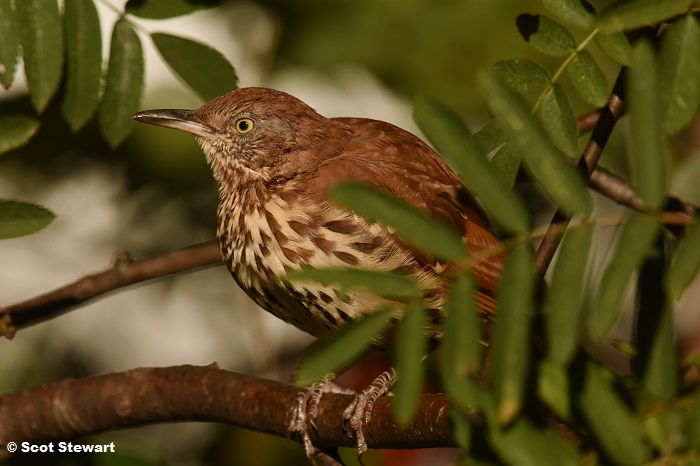
Brown Thrasher

Swainson's Thrush
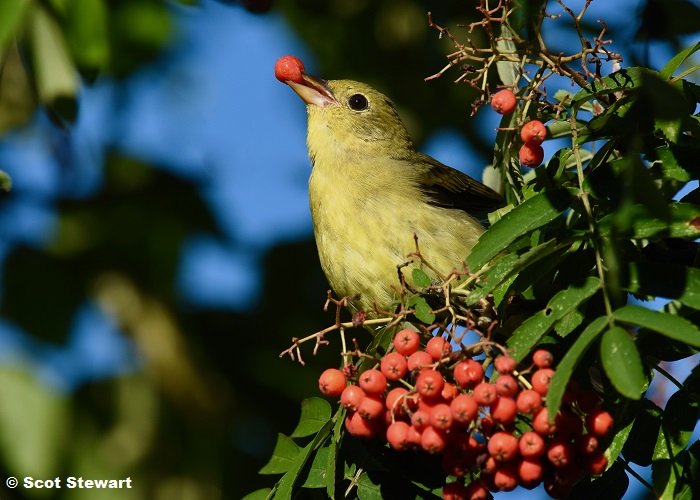
Scarlet Tanager
7.17.20 My love of dragonflies and damselflies continues to grow. My original reason for going to Harlow Lake was to see if there might be calico pennant dragonflies there. Ihad seen them at Echo Lake but they have always been skiddish there. I found them at Harlow and they were not only more numerous but much easier to approach - from the water. Hurray for hip boots!
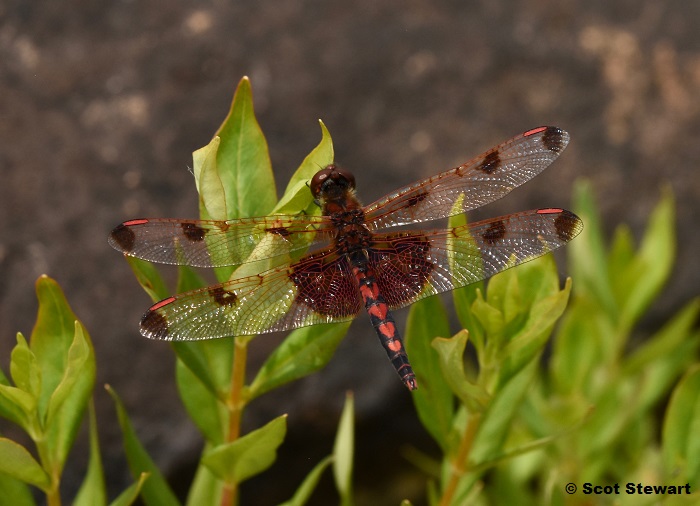
Calico Pennant
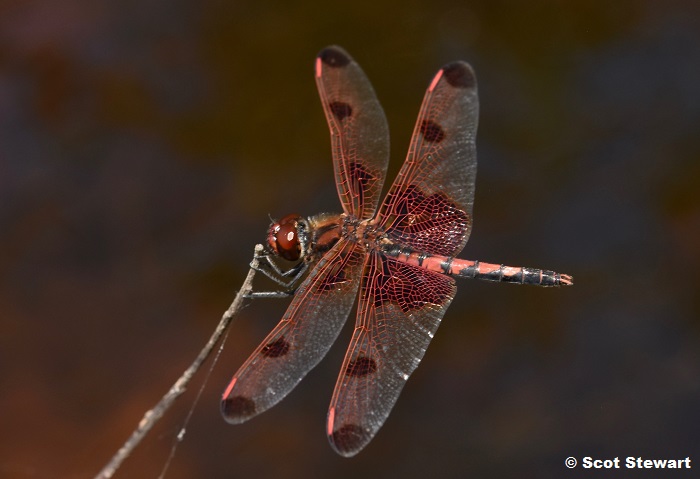
Calico Pennant
7.16.20 Today I got to see my first Blue Dasher. I have been wandering the edges of Harlow Lake north of Marquette and while I was out on a bare rock outcropping saw what was probably a new emerged, and very tame, beautiful blue dragonfly. Somehow, I had never seen one before. It has definitely stamped a huge impression on me to look more carefully at all the dragonflies here!
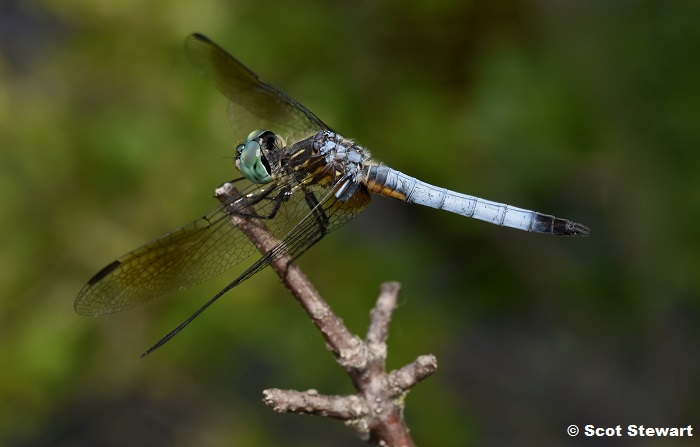
Blue Dasher
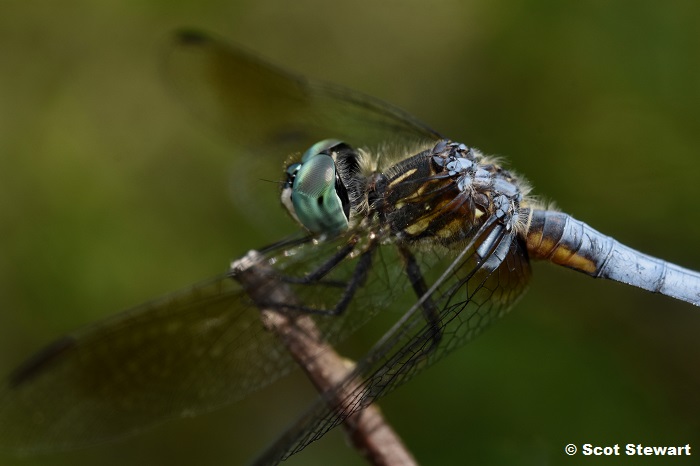
Blue Dasher
6.27.20: My visit to a bog yesterday got me so excited to get out to more. Today I headed over to two different bogs in Alger County looking primarily for orchids, ferns, butterflies and pitcher plants. Wow! It was an amazing day! The deer flies, mosquitoes and black flies kept me company and some flowers seemed a bit behind in blooming but it was nearly perfect! Not only did I find plenty in bloom, I found a large hatch of Baltimore Checkerspot butterflies. I had seen them there before, usually only one or two. Today there was at least a dozen of the little butterflies, with a wingspan about as wide as a daisy blossom fluttering through the black spruces.
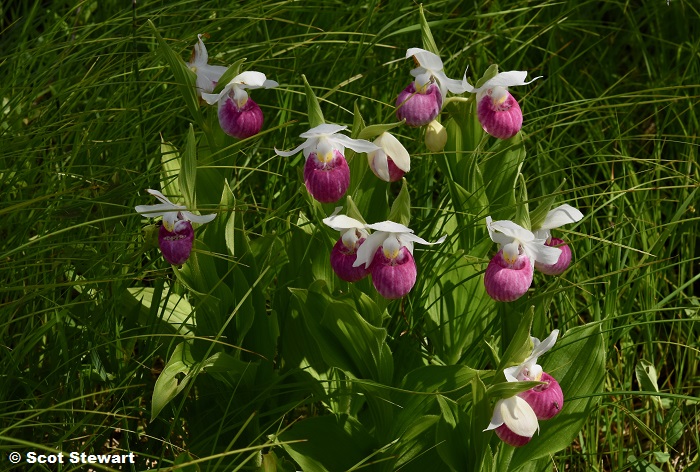
Showy Lady's Slipper Group
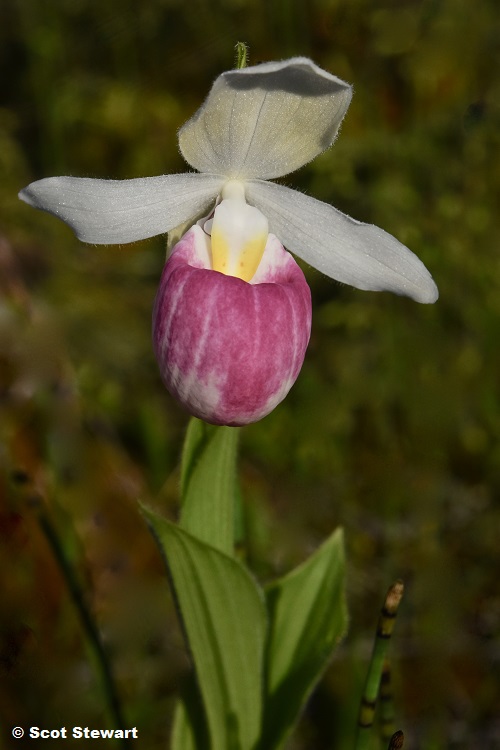
Showy Lady's Slipper
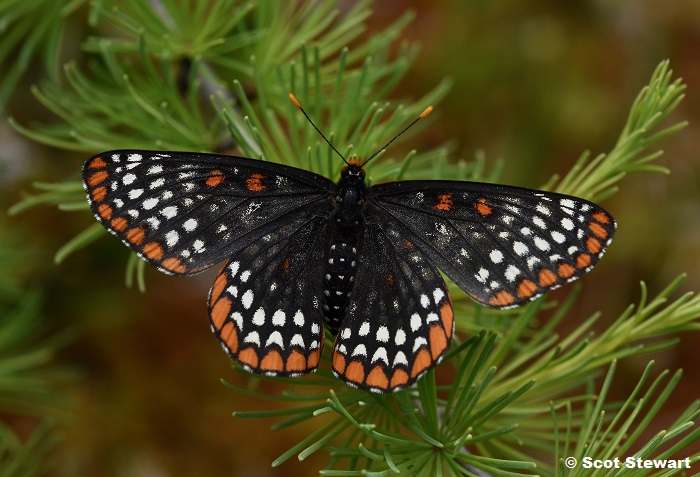
Baltimore Checkerspot Sunning on a Tamarack Branch
6.26.20: One of my favorite plant communities anywhere is a sphagnum bog. There are several great ones in the central Upper Peninsula, including one in the city limits of Marquette. Floating mats of vegetation, carnivorous plants, wild orchids, gorgeous flowering shrubs, tamarack trees with their deciduous needles, American bitterns, sandhill cranes, bowl and doily web spiders. It is all so good! Starting making some visits today and was not disappointed. There is one site where there are leucistic calapogon orchids (grass pinks), pogonias and last year I refound some crimson-ringed whiteface dragonflies with their deep scarlet thoraxes. Can't wait to get out more and see what new plants and animals I can find!
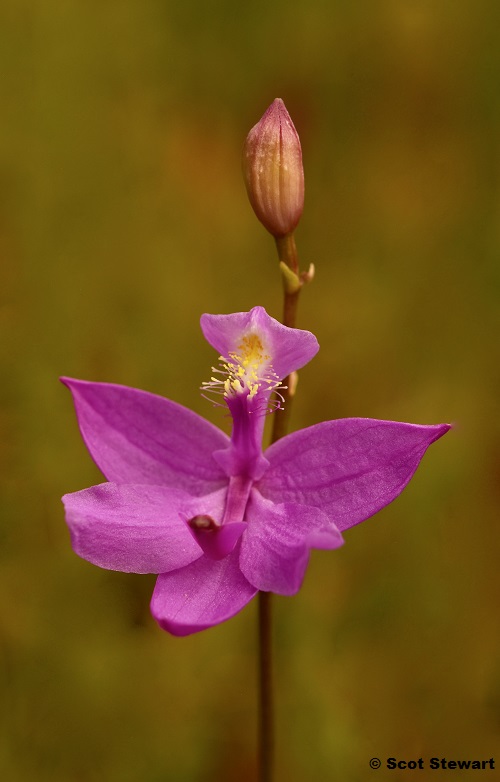
Calapogon - Grass Pink Orchid
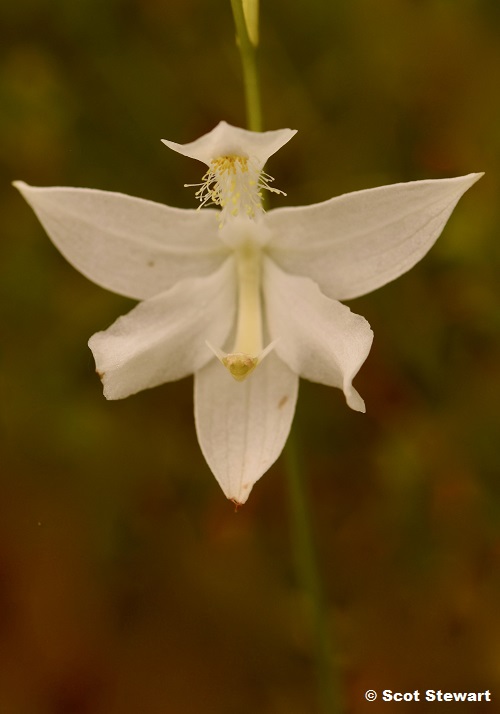
Calapogon - Grass Pink Orchid, leucistic form
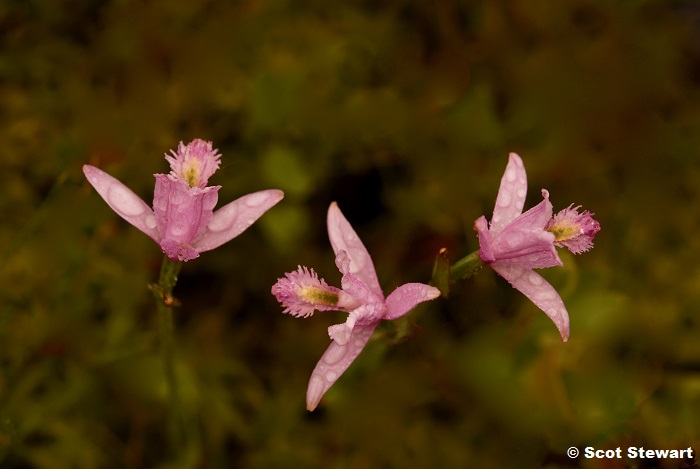
Rose Pogonia Trio
6.13.20: Finally got to make our first trip to Seney National Wildlife Refuge in Schoolcraft County yesterday. It was a perfect day, cloudless, still and moderated temperatures. Mosquito and blackfly numbers were low too. It was a relatively quiet day there, similar to what other photographers found there earlier this week. We did find young trumpeter swans not on nests on many of the pools, unlike past years when most seemed to be on the same pool. While photographing a small group we were surprised to find ourselves witnessing a major scrap with three swans. Not sure, but guessing it may have been two males and a female, but not sure who is in any of the pictures It made for some interesting shots, some seen below and on the trumpeter swan page. The other great find of the day was a calling olive-sided flycatcher near the end of the Marshland Drive, the firest I have seen in several years.
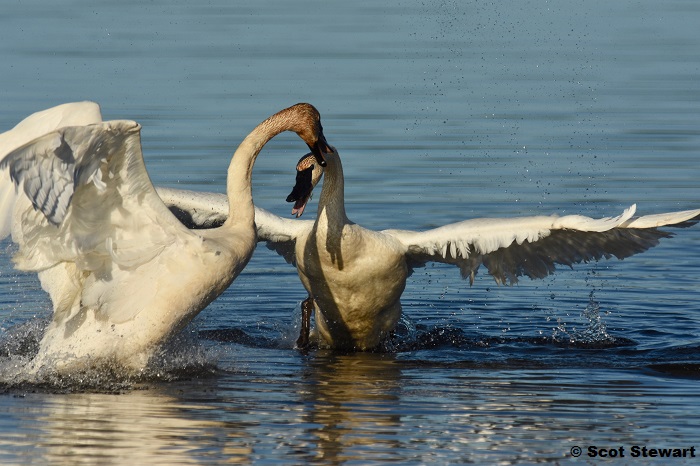
Trumpeter Swan charging.
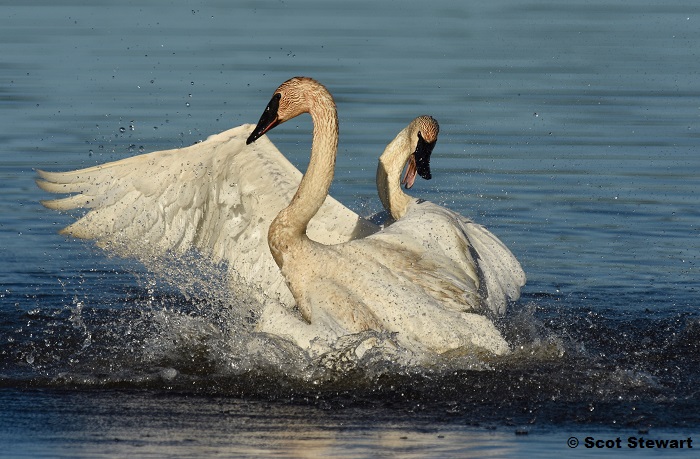
Trumpeter Swans scrapping and in a tangle.
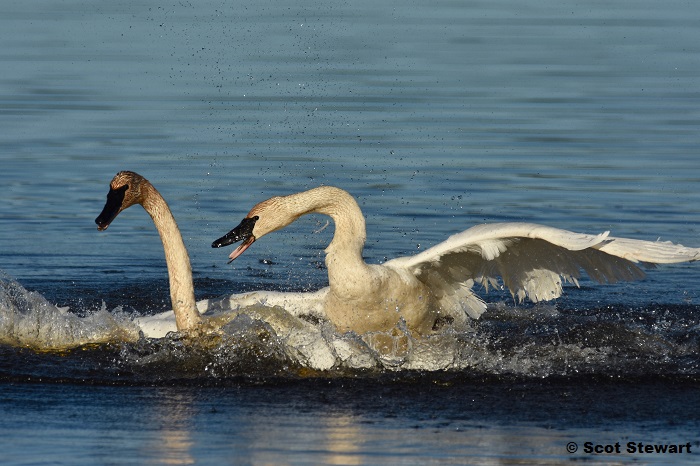
Trumpeter Swan in a chase.
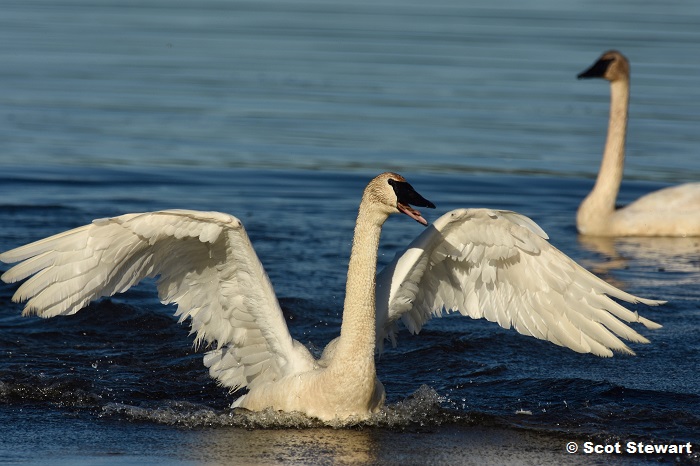
Wing Stretch.
6.10.20: I love the fact that the insects are back. Well, not all of them, but most of them are wonders and I just love finding them. Today there were several just sitting atop the leaves and they just stuck out. Both were new to me and most cooperative in the cool air and breezy conditions. Found some sulfur fungus too on my favorite fungi trail along the Little Garlic River. The sulfur shots are in the Puffballs... on the Other Page. On the return we were shocked to find someone had collected them for dinner. It is a wonder time to be out!
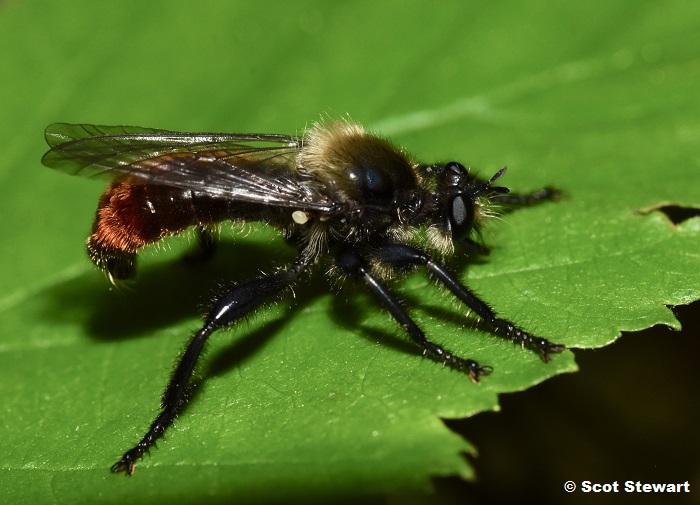
Robber Fly
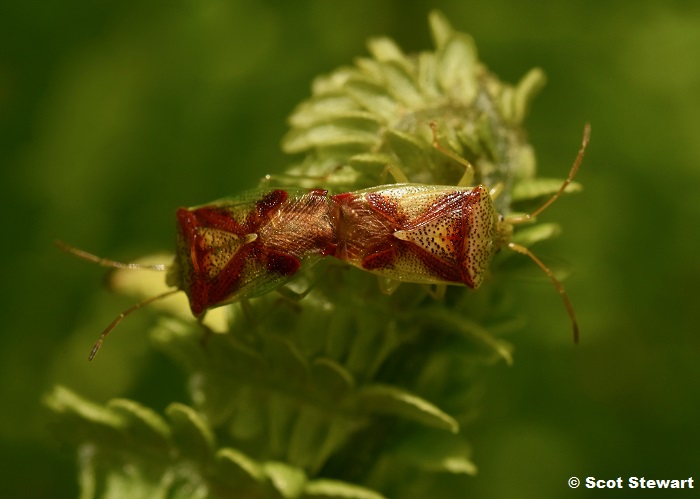
Red-cross Shield Bugs mating.
6.5.20: Hoping to find late sandpipers and plovers on the Lower Harbor Breakwall in town I took a quick afternoon waik down the half-mile concrete portion. The midge hatch has been building so there is much food for resting shorebirds. We had found a beautiful pair of sanderlings the night before, so I was extremely hopeful. As I reached the start I heard a merganser and found a female red-breasted merganser with her brood with another adult. I was able to walk the length of the wall following the family as it fished and was able to get a few pictures.
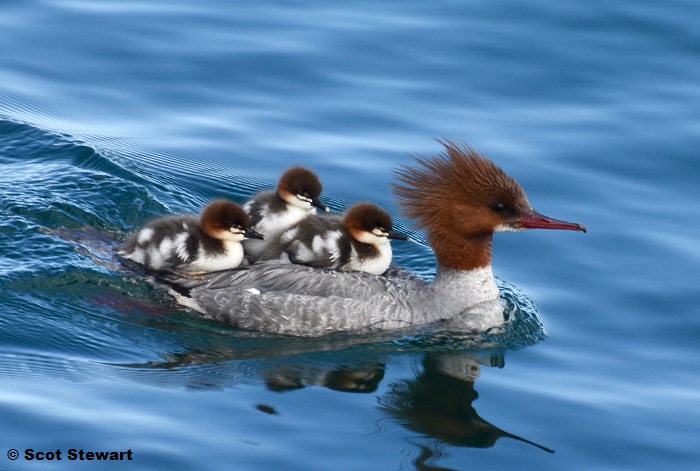
Red-breasted Merganser female with young riding on her back.
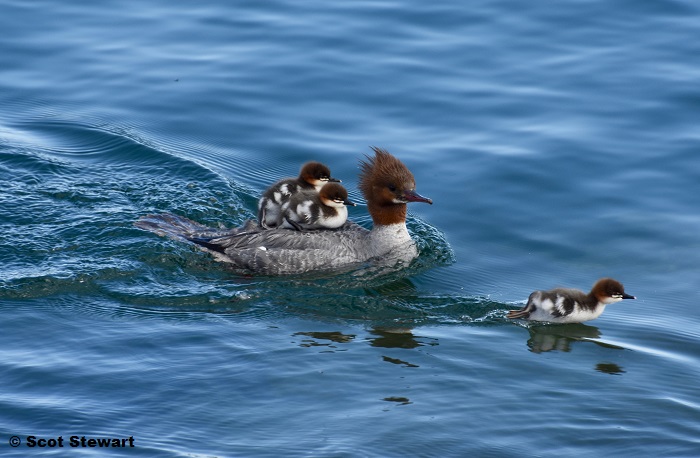
Red-breasted Merganser family with a lively youngster.
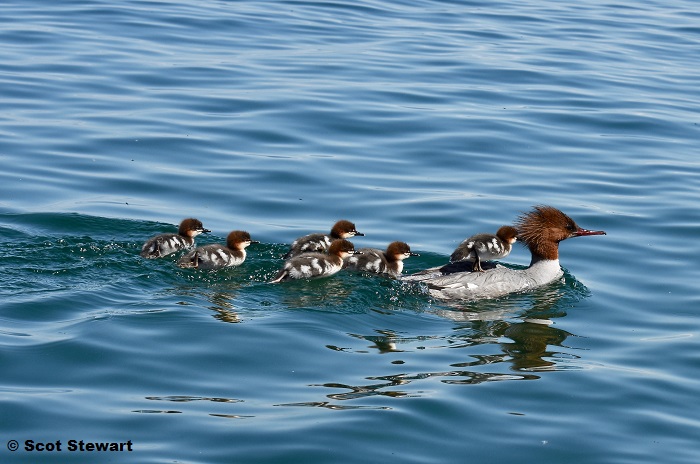
Red-breasted Merganser family swimming.
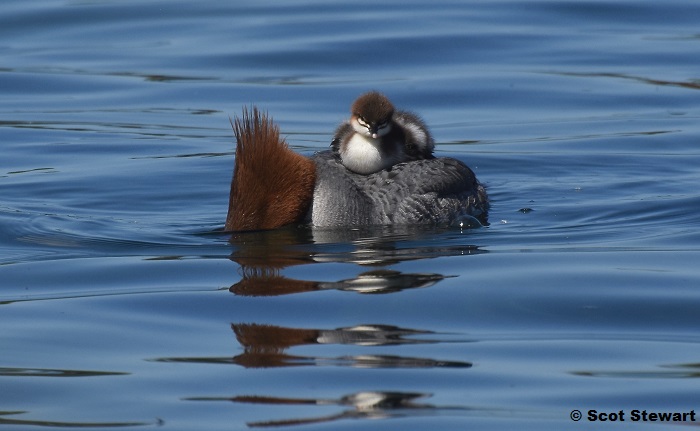
Red-breasted Merganser female fishing with young.
6.4.20: Spending lots of time along the shore this spring has had me enjoying the interaction of light and the surface of water riding over sand ripples and rocks on the bottom of shallow water. It seems like the the interface of the factions of life often have interesting meetings. Light always makes those encounters more amazing. Water trunly is the magic of life and the sun just makes it even better.
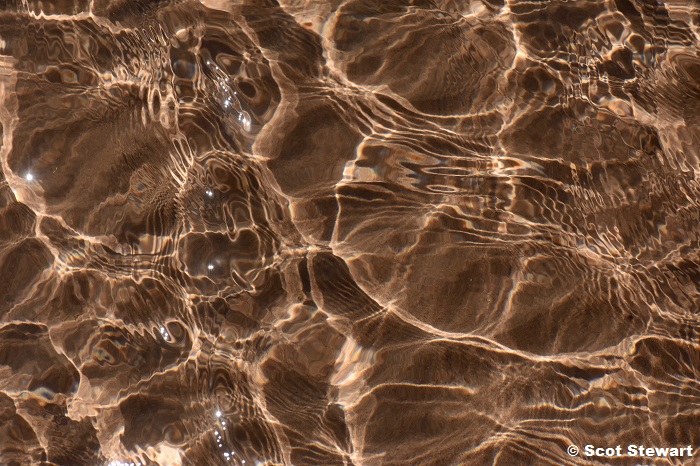
Sun Reflections over Sand Ripples
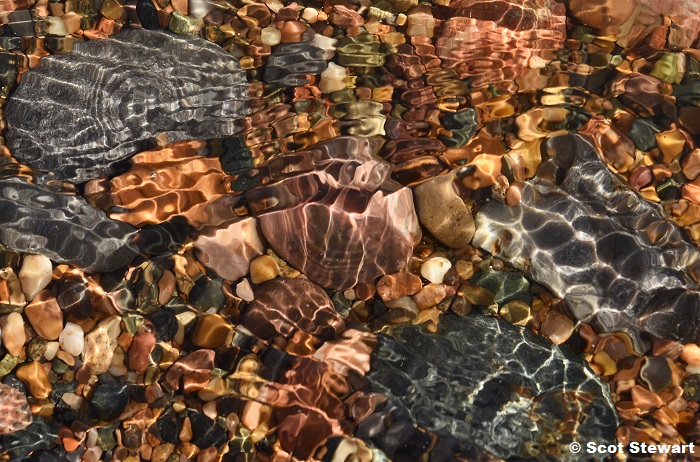
Ripples over Pebbles at the Beach
6.3.20: It is always a great day when spring comes and I can spend a few hours outside. I am always excited when I can find a number of really different subject to be with and photograph. Here is some of what I found.

Pair of Common Mergansers resting along the Dead River
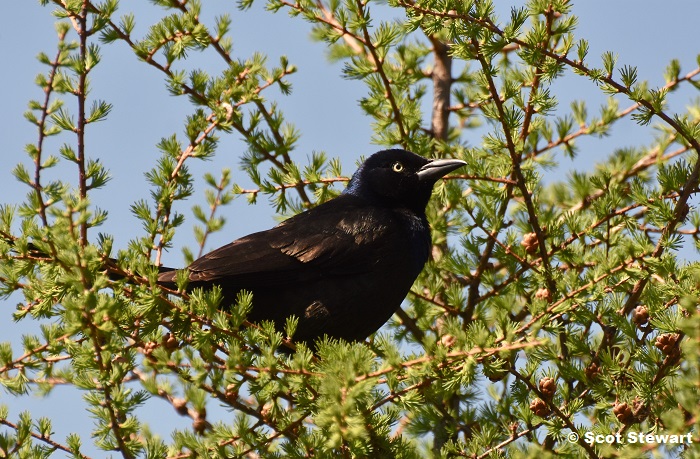
Common Grackle at the Bog Walk in Marquette
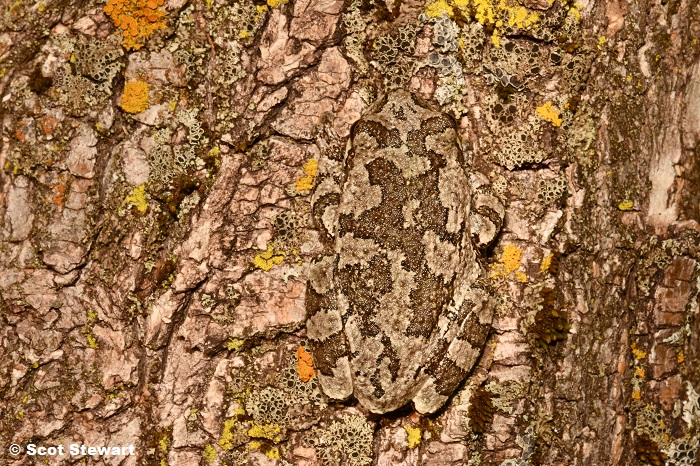
Gray Tree Frog
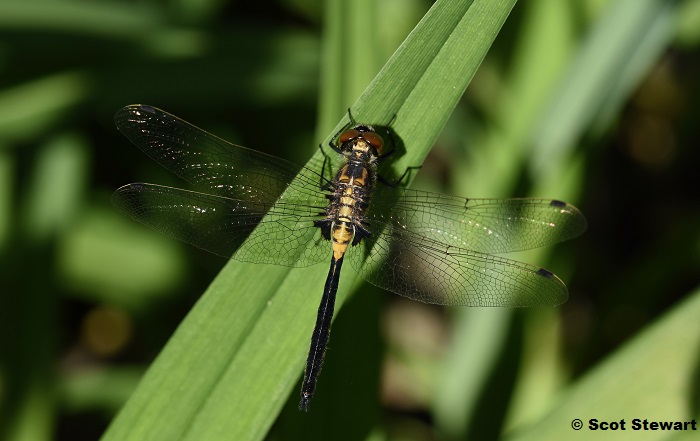
My First Belted Whiteface Dragonfly
5.30.20: With the Stay at Home Orders this spring we did a lot of walking. It did not provide many opportunities early on to photograph a wide variety of natural events and birds, and with our cold spring, few flowers or insects. So I turned to trees, starting with bark, then buds and now flowers and leaves. In response, I have added 55 species, mostly native to Michigan, to the website. Luckily our past city arborist introduced many species from outside the Upper Peninsula to town. They are all around us, and the details, the differences, the designs are incredibly fantastic! Just watching the buds, swell, burst open during our wonderful, warm stretch of weather this month and turn into leaves and flowers has been an adventure - actually many. I will continue filling in the gaps to get more complete stories for each species, but wow, won't that be just more adventures! I also hope to add more shots showing the interactions with insects, birds and other animal species. Check out the trees on the Other Page. Here are a couple I like.
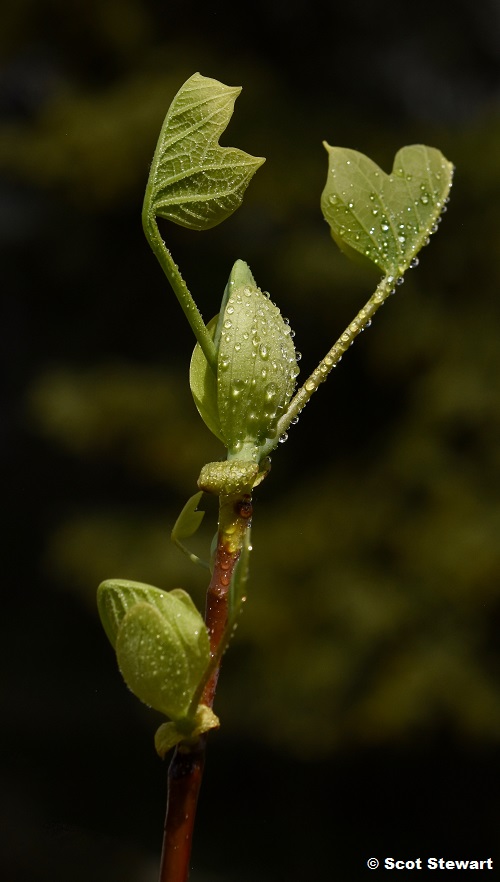
Tuliptree Leaf Bud opening
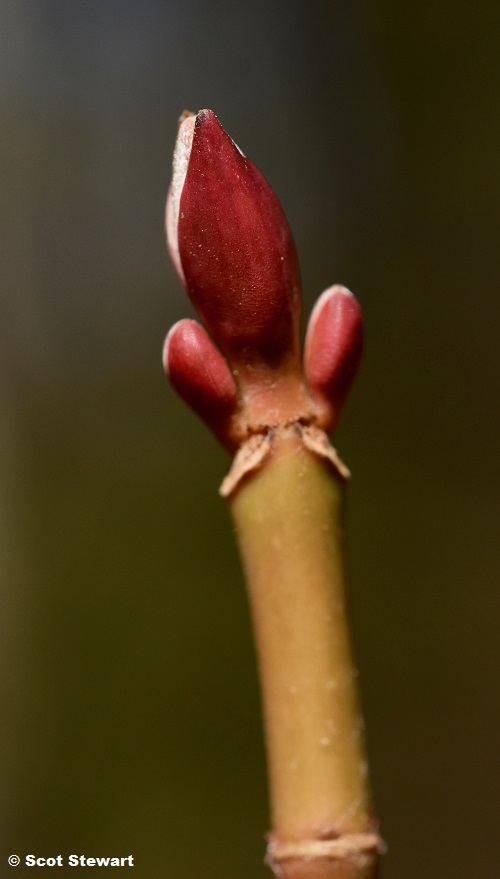
Moosewood - Striped Maple Buds
5.16.20: I always thought a great idea for a book would be "Photographs I took on my way to Somplace Else". I found the conditions just right to photograph two of my favorite American elm trees along U.S. 41 on my way to Peninsula Point at the tip of the Stonington to check on bird migration. This shot reminded my family of the Serengeti. Although I am always in a hurry to get to places as soon as I can so I don't miss something, it seems like if I stop to take a shot of something that catches my eye, I am always rewarded. It was my best shot of the day!
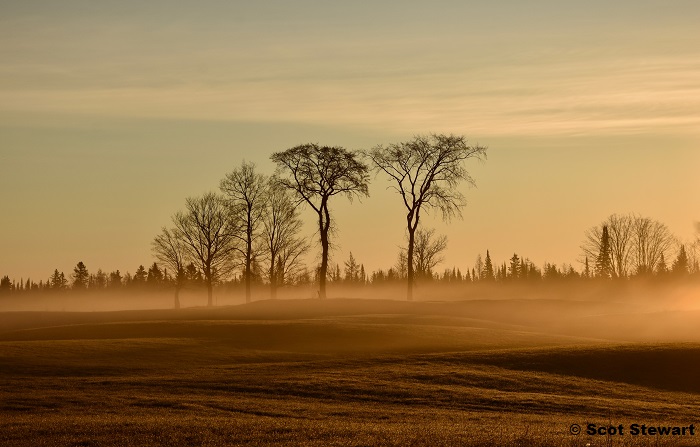
Sunrise Elms between Trenary and Osier
5.11.20: Spring will eventually make it to the Upper Peninsula! Out in a walk today in freezing cold temperatures we were surprised to find this beauty feeding on midges next to a pond created by the Board of Light and Power next to Lake Superior. I was joined by orange-crowned, Nashville and yellow-rumped warblers. What a surprise for a bird that does not get this far north very often. There have been a few in the area though this spring.
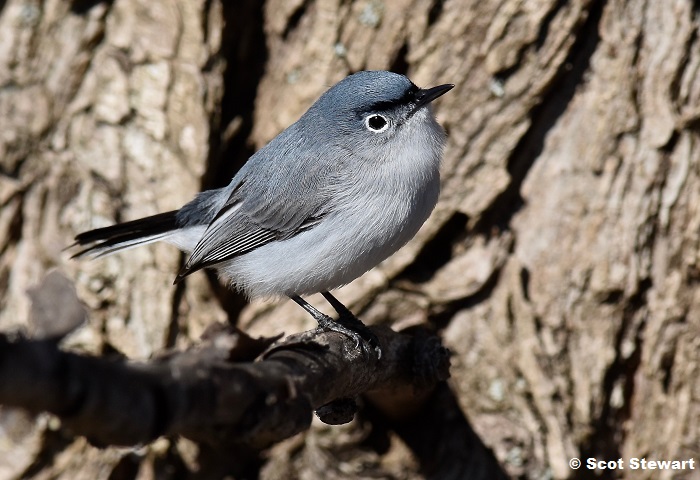
Blue-gray Gnatcatcher hanging out in the freezing cold Upper Peninsula

Blue-gray Gnatcatcher gleaning midges from a willow tree
4.23.20: This unusual time has allowed for the chance to do many things hard to fit in during normal schedules. One activity I have tried is to look back at old shoots and see what I missed. I found a couple of bald eagle pictures from 2018 I liked and added to the page.
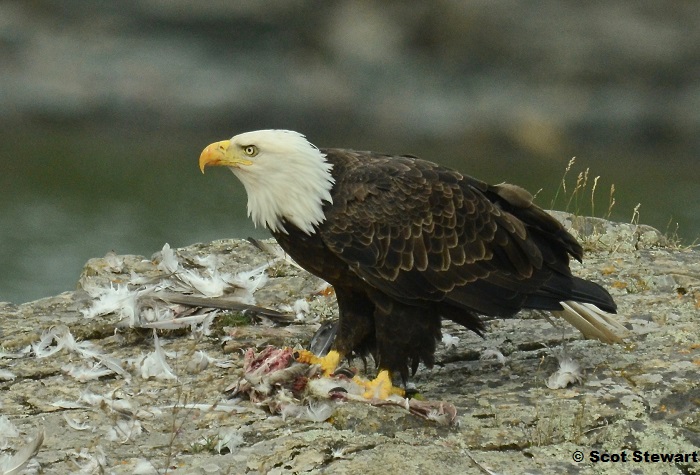
Bald Eagle feeding at the Lighthouse Rocks
4.21.20: As you might have guessed looking at the Others Page, I have a passion for minerals. Living in New Jersey during my high school days I learned about Franklin and its fluorescent minerals at a hobby show. I recently found a fluorapatite specimen Middletown, Connecticut. I began with a piece of Esperite, a mineral that fluoresces yellow under shortwave UV light. This fluorapatite just dazzles.
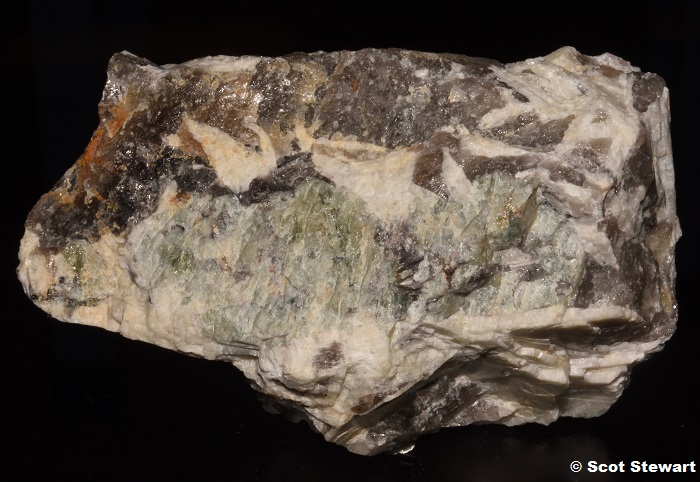
Fluorapatite with Cleavelandite and Quartz
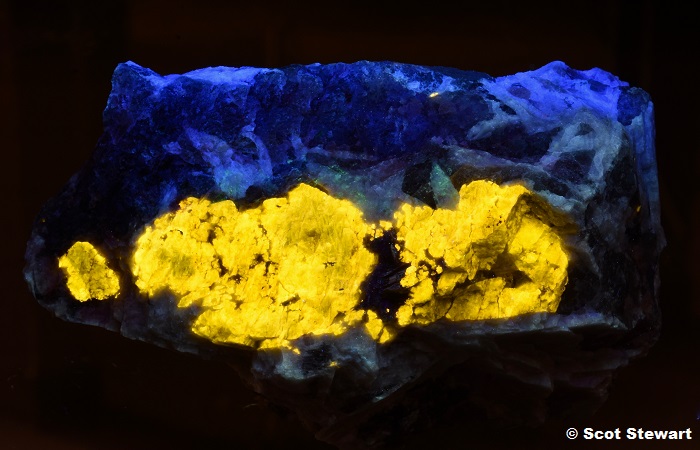
Fluorapatite with Cleavelandite and Quartz under Shortwave Ultraviolet Light
4.16.20: We have great friends. Another friend came out of his shop to tell us pileated woodpeckers were again active in their yard. He thought they may be checking out last year's nest in a large aspen tree. I checked it out late in the day, just in time to find the male clearing some chips out of the nest. Another pileated called occasionally from the woods nearby and the male in the nest cavity looked out for a while, then left. I am hoping the or another pair will return and re/use the nest. It has been one of my dreams to document an active nest through the nesting season from start to finish. Last year I made it out there just in time to see the young, the night before they left the nest!
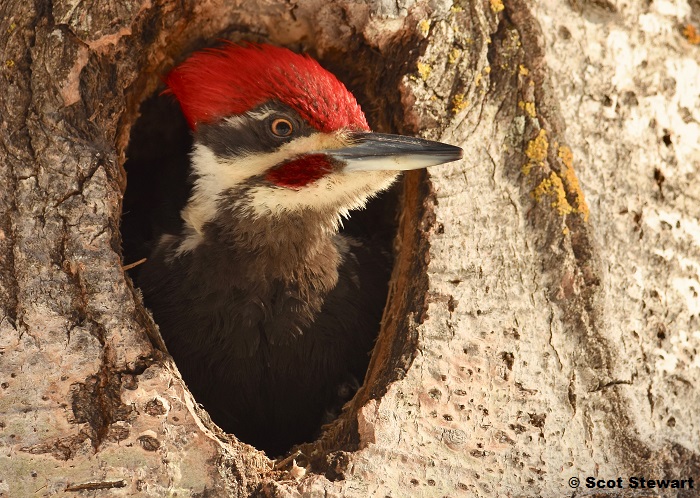
Male looking out of last year's nest.
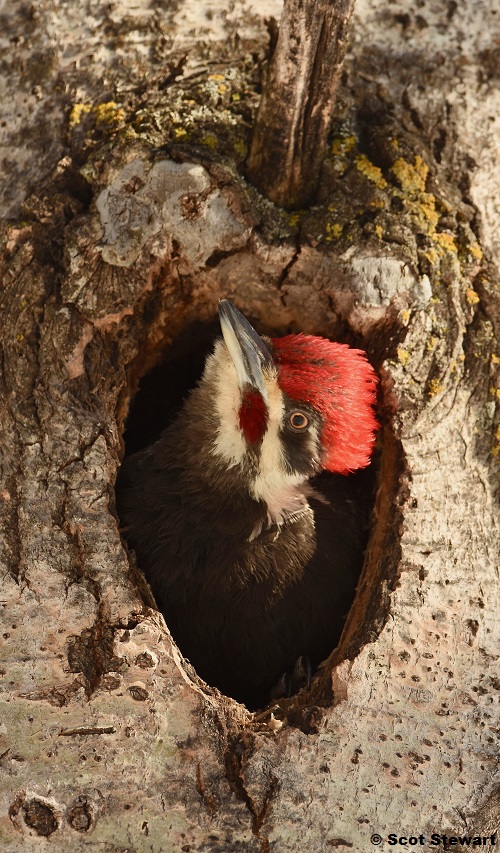
Male looking out of last year's nest.
4.15.20: Each day a new migrant shows up at the house or on a walk. Today on a late afternoon walk friends came out to tell us they had an American kestrel collide with a window earlier in the day. After talking a while my alert wife found it roosting high in a maple tree. We dashed home and got the camera and return in time to see it begin to move from tree to tree, its left eye apparently still smarting. There had been several other kestrel reports in the area recently but they are rare in town. Hoping she fully recovered.
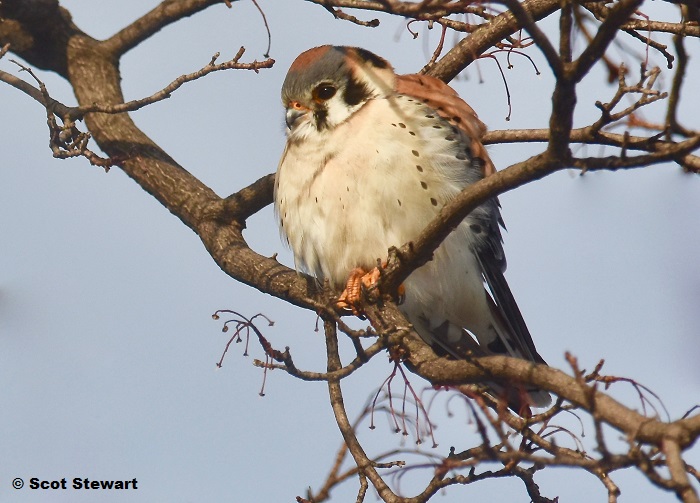
Female American Kestrel
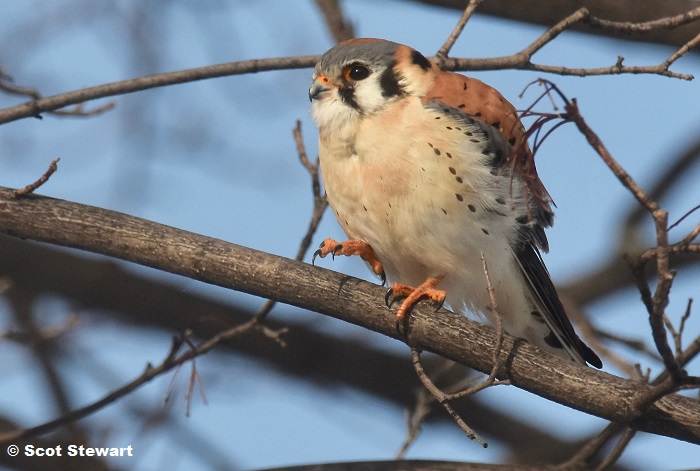
Female American Kestrel
4.11.20: With these challenging times some good is coming. I have heard some in Idia are seeing blues skies for the first time as smog is lifting. The Himalayas are offer the best views in decades. Crime rates are dropping with the more limited travel of everyone. I have been trying to encourage folks to get outside more by writing additional "shorts" for the Marquette Mining Journal about what to see outside in nature as spring winds up. So far they have run my stories on icicles, tree flowers, tree bark, early insects and foxes. We have been trying to get out as much as we can and I have been looking for new subject. Here are some of the tree bark images, one with a running crab spider I also found.
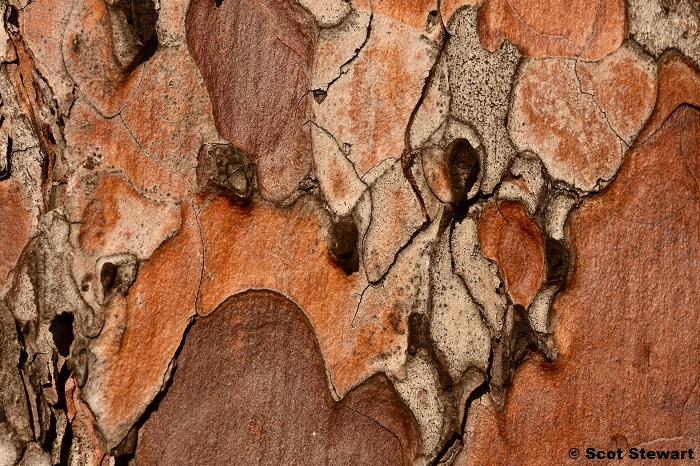
Red Pine Bark Detail
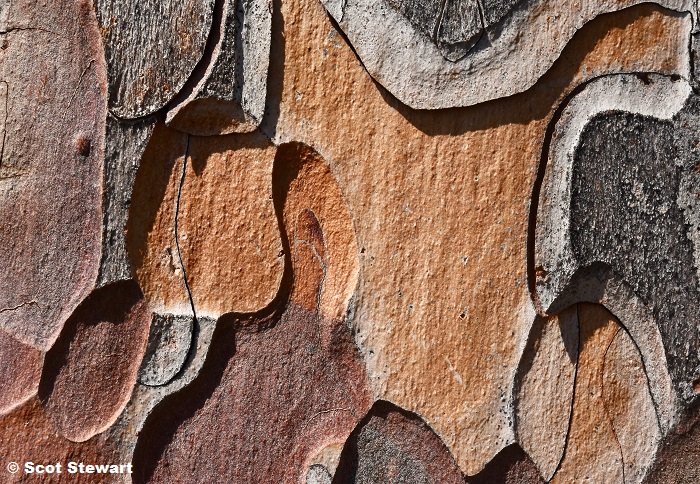
Red Pine Bark Detail
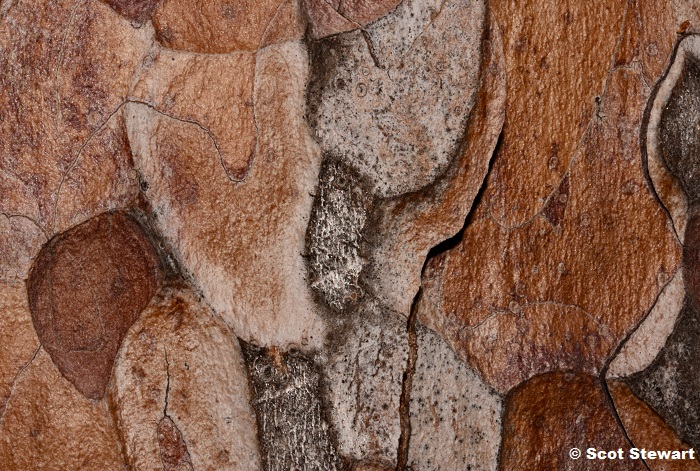
Red Pine Bark Detail
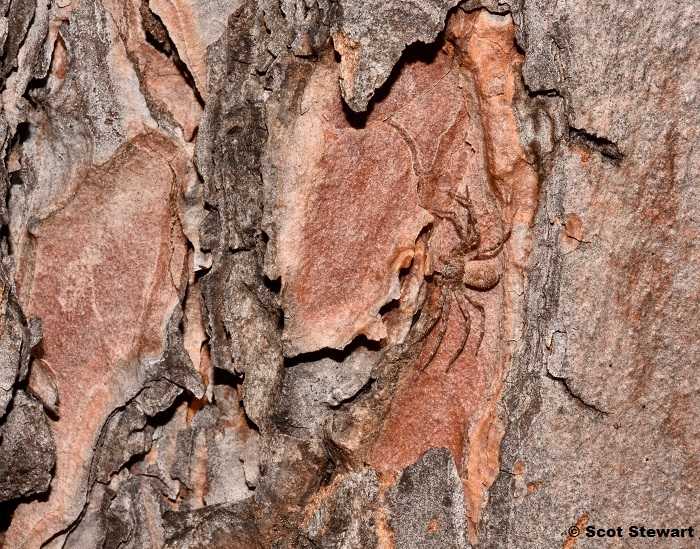
Red Pine Bark Detail with Running Crab Spider
4.3.20: How life changes! The Corona Virus has turned the world upside down, hasn't it! It seems just so incredulous so many people can be so upended in their entire lives and so bewildered by this global event. My hope is it will conclude its run quickly and be done. I fear it will make a second run so we will hope for a means of prevention and faster cures for those who contract it! I have truly turned to my neighborhood for shelter, greater chances to avoid the virus and reach out for an opportunity to learn more about my neighborhood. The search took me to the edge of Lake Superior to look at melting ice wahed up on the beach. The internal structure looked very similar to ice I found years ago in laval tunnels in Idaho in Crqaters of the Moon Nat'l. Mon. and Preserve. Water dripping from the edges was dynamic too.
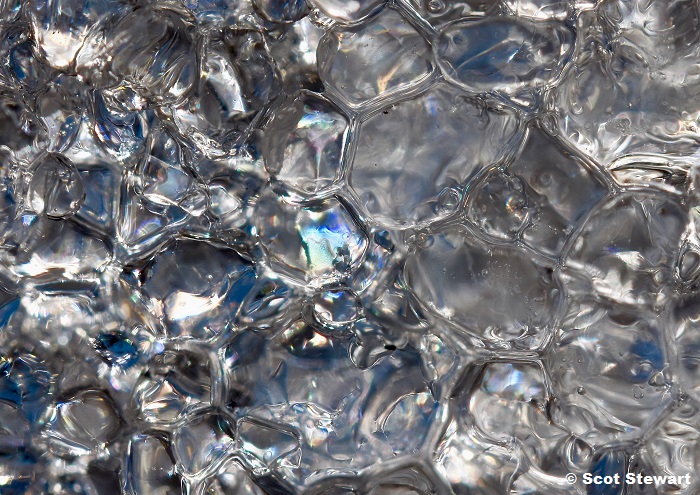
Ice washed up on the Beach during the Winter

Ice washed up on the Beach during the Winter with Melting Drips
2.12.20: Amazingly, it is four months later, again and now in the middle of what I have called, "A Goofy Winter ". It has been one of the slowest winters ever for birding in Marquette this winter and even worse for bird photography around town. Weekend have been dreary light wise, making thisg even more challenging. My winter challenge has been attempting to get a memorable photograph of a northern hawk owl. This bird arrived in Marquette and staked out a hunting territory in an old city composting area along Lake Superior on the north side of town. It has traditionally been a good spot to see snowy owls, northern shrikes and a number of other rarities over the years, in part because it is fenced in with no current public accessibilty. I have never worked so hard to get a decent shot without success, either shooting into the sun, a cloudy sky or from a very long distance away. Last Sunday I heard it was hunting outside the fence and was so fortunate to watch it hunt along a small creek/ditch then land in a very short spruce tree. There was a light snow to add to the ambieace. I could hardly sleep that night! On Monday it sat in a large spruce between two houses with a blue sky and I was able to get a few more shots. I had a chance to photograph a female common goldeneye and a female greater scaup on Saturday, making it the best weekend I have had for birds in a long, long time.
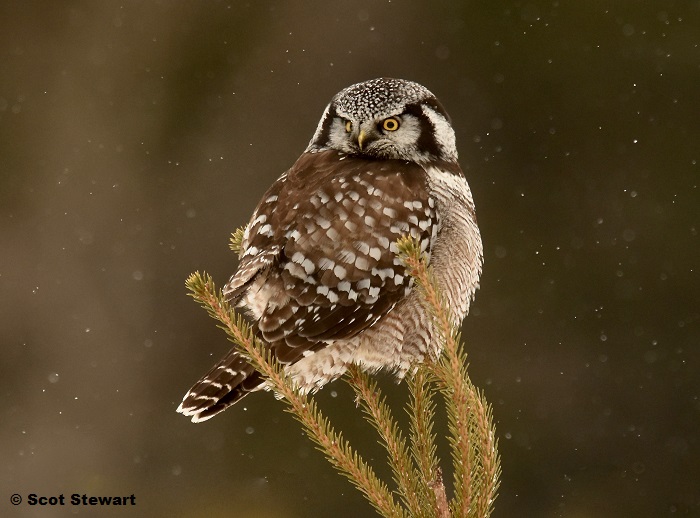
Northern Hawk Owl hunting in Marquette
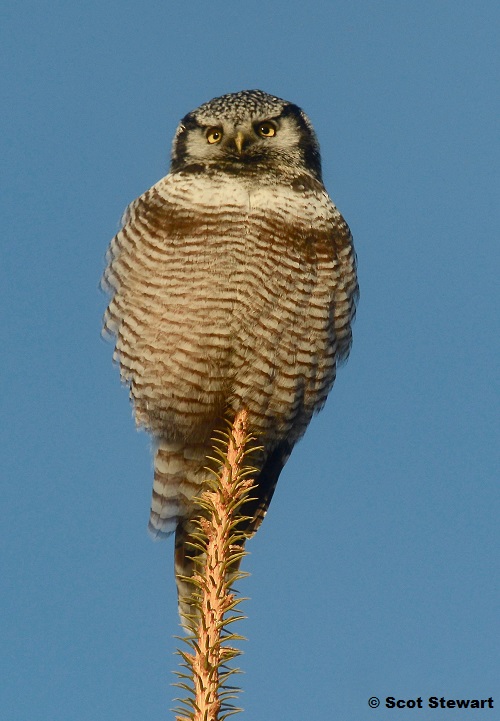
Northern Hawk Owl hunting in Marquette in the Sun
10.22.19: It has been a wonderful fall with lots of color, moths and now American Avocets. I found the security lights at my school attracted lots of moths. Some stuck around for the night and were still present in the morning. Polyphemus, underwings and even a black witch. The black witch is apparently unusual this far north. Fall colors have been great and this fall has seen American avocets at St. Ignace, Gwinn and at the mouth of the Au Train River in Alger County. Got a chance to run down there just as the sky cleared a bit. So great to see them so far from their normal migration route.
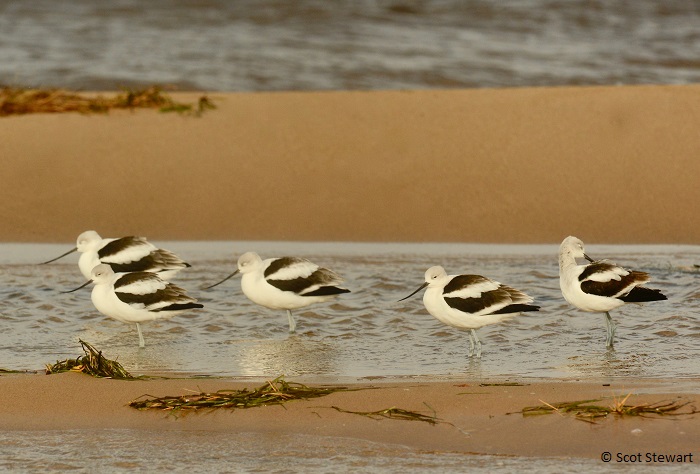
American Avocets at the mouth of the Au Train River in Alger County.
8.23.19: Somehow, life just speeded up last winter! The second half of the school year was wonderful and as spring drew into focus I began to look back at my photographic roots and started looking past birds (a little - it has been a really quiet time for them unfortunately) and minerals. Searches began for flowers, insects, spiders and other smaller subjects. At the end of winter, as the days lengthend and warmed, I stopped to look at everything. I added an entirely new page just of insects and spiders, one of my favorite areas since seventh grade when my mother and I began a collection for her science education class at Olivet College. This summer as school ended I began to look of dragonflies and damselflies. I'ved added 12 new species of them and have a number of damselflies to identify. I've added about 60 new species of insects and an unknown number of images to existing species. One image I've been trying for - a close-up of a male white-faced meadowhawk with its red body, finally came. While on a weekend trip to Door Couty, Wisconsin I got to photograph a pair of ambush bugs. If you like insects, take a look at that page. My wilfe and I made a trip to Theodore Roosevelt National Park so there are lots of new images of the park, bison and smaller subjects as they were finishing a bioblitz, to record as many species as possible. I ramped up shooting to see what I could add. Will let you know as more is uploaded.
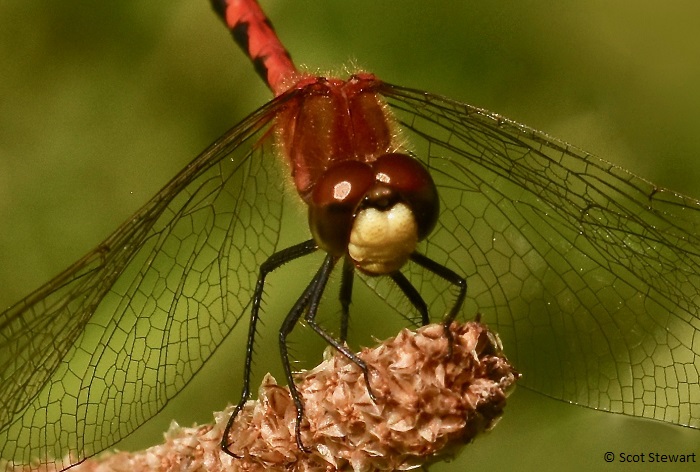
White-faced Meadowhawk at Presque Isle, close-up.
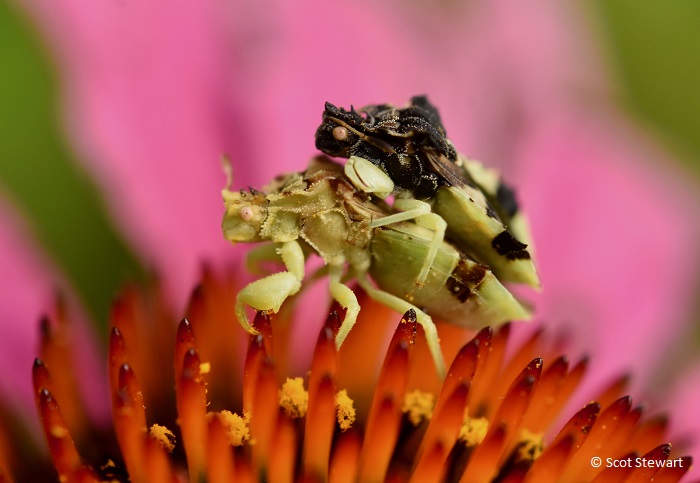
PennsylvaniaAmbushBug at Presque Isle, close-up.
2.26.19: Winter! It has brought all its family to the Upper Peninsuloa this season. Frigid cold, the almost unheard of relative in the Upper Peninsula Ice Storm, Blizzard, and Nearly Daily Snowfall have all made visits. I don't believe I have ever seen snow piles so high in Marquette. I have cut a path through the back yard more than waist deep in places. The ice storm left an incredible coating of quick silver, lingering through days of strong winds, defying all to capture good shots. Unfortunately the ice was too thick for the bohemian and cedar waxwings feeding in the crab apple trees in town. Their diminutive bills were just not enough. We have missed 10 1/2 days of school due to weather since December. I confess I have enjoyed the time photographing waxwings before they left, pine grosbeaks and mineral specimens indoors. Here are some more waxwing pictures and a few mineral shots. I had an opportunity to photograph with my daughter recently andgot to try out a new type of studio. The Herkimer diamonds below came from that day. I have also added new rutile, goethite, marcasite, agate, silver, mottramite, hemimorphite, and mimetite shots too.
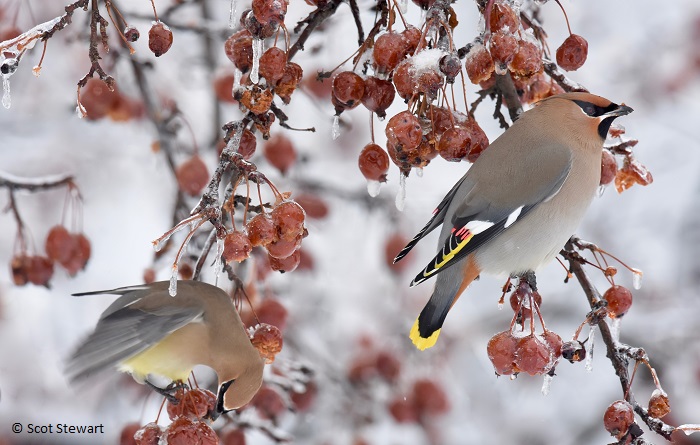
Bohemian and Cedar Waxwing eating Crab Apples Together (click image to view others)
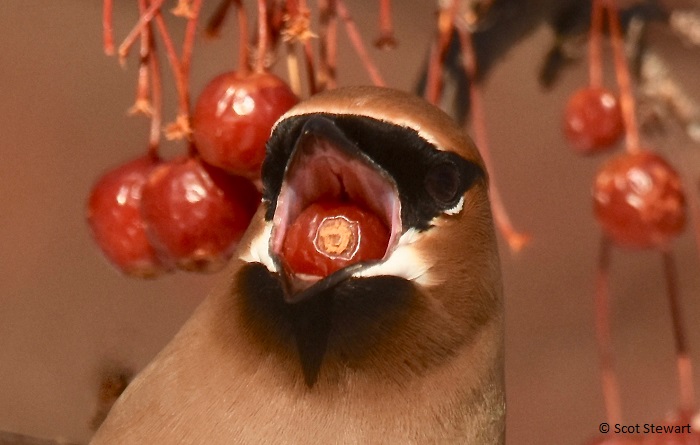
Cedar Waxwing Swallowing a Crab Apple (click image to view others)
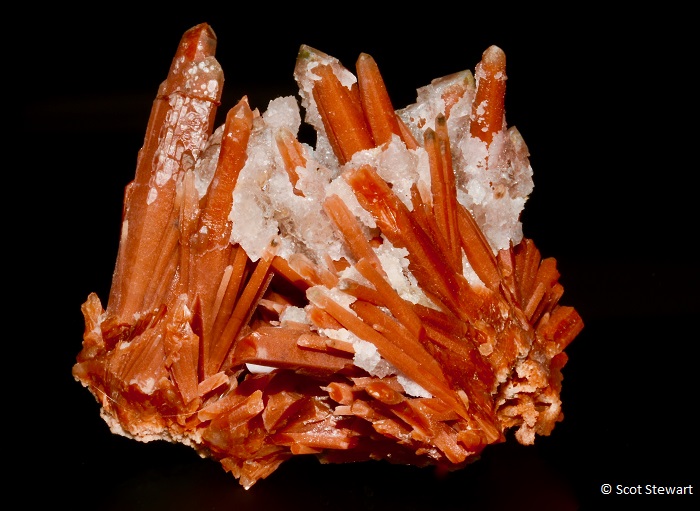
Red Quartz and Double Terminated Quartz from Russia (click image to view others)
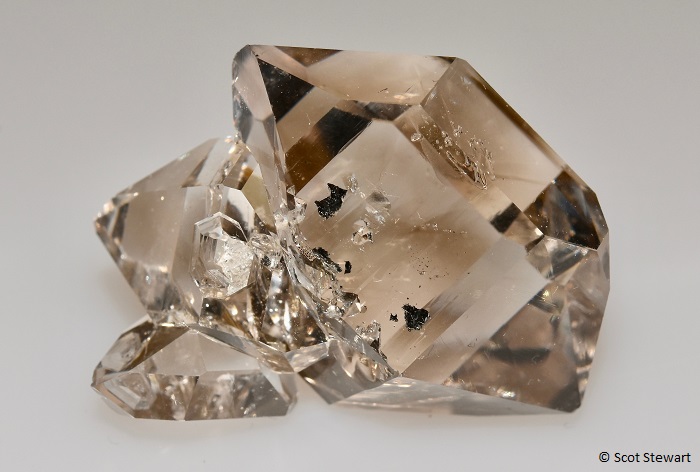
Herkimer Diamond - Quartz Crystals (click image to view others)
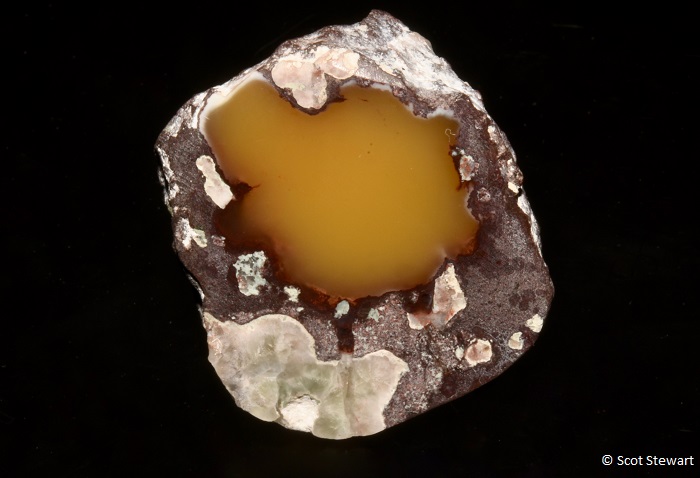
Yellow Datolite from the Keweenaw (click image to view others)
2.16.19: Our recent, big ice storm seemed to cover the crab apples in Marquette County with enough ice to make feeding nearly impossible for waxwings, and unfortunately they seem to have left the area for the time being. However, the pine grosbeaks, with their larger, heavier bills seemed to have cracked the case, literally and have remained in the area. Despite the fact some feel they are sluggish birds, I just love them and their flutey calls. They are messy eaters, but very acrobatic. Last Thursday a flock was flushed from a crab apple tree by a sharp-shinned hawk near my school, but was not able to secure a meal. While they are not to shy, they can be very jumpy and will leave in a hurry if they feel threatened. I often seem to find something a little different when I shoot, making them fun subjects. There still seem to be plenty of trees with fruit still in them, so I'm hoping they stay in the area at least another month!
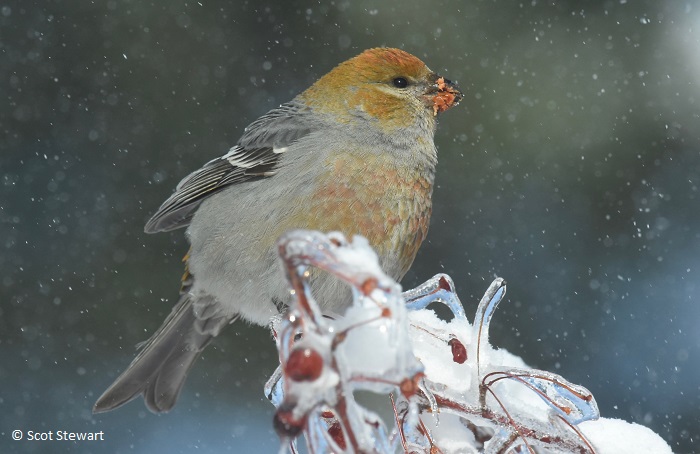
Female Pine Grosbeak atop a crab apple branch full of ice. (click image to view others)
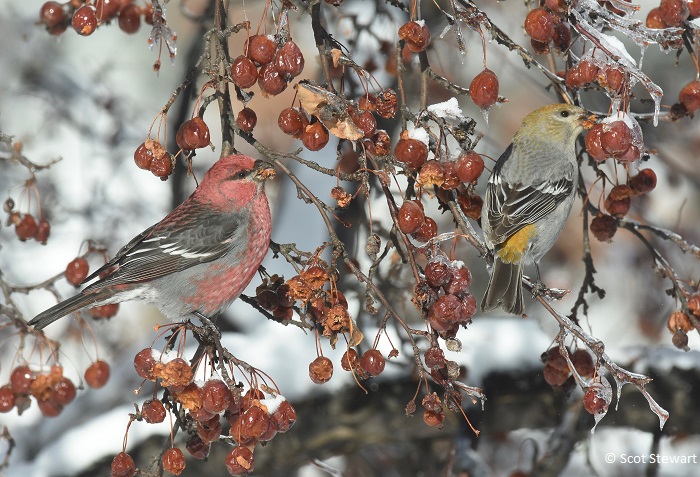
Pine Grosbeak Pair (click image to view others)
2.14.19: What a wild and crazy winter it has been so far in the Upper Peninsula! Extreme cold, a most unusual ice storm and now some great blizzards! It has definitely been season of wonder, beauty, and excused days from school. The time off has allowed me to scan several hundred slides recently, including many from two trips back in the 1980's and 1990's to Alaska. I have also been able to follow several great flocks of cedar and bohemian waxwings and pine grosbeaks around Marquette. They are some of my favorite birds. There are many new waxwing images added and the pine grosbeaks will be included soon. Stay warm!
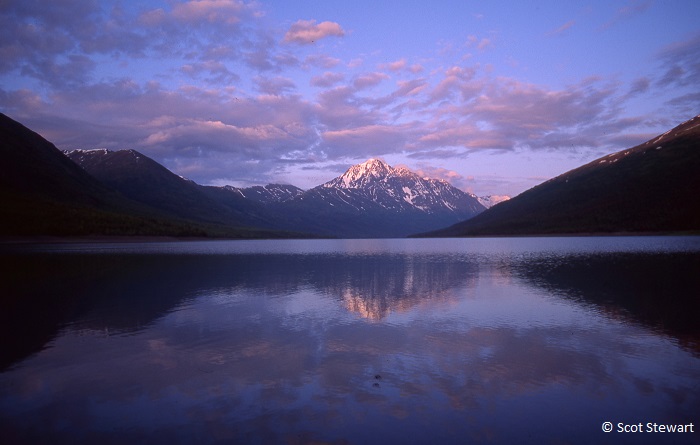
Mountains and Lake near Anchorage (click image to view others)
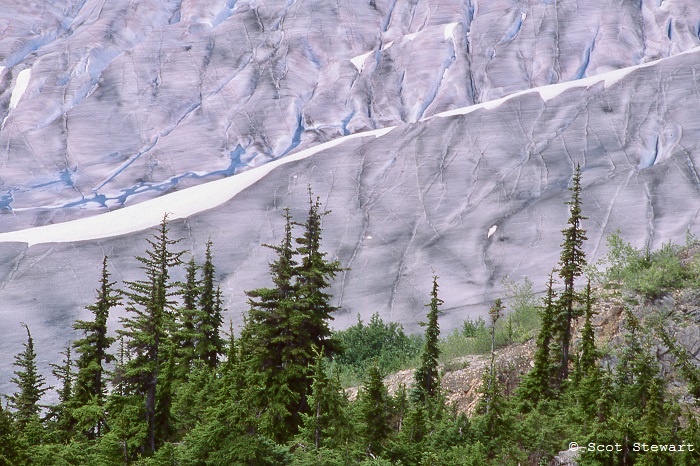
Salmon Glacier (click image to view others)
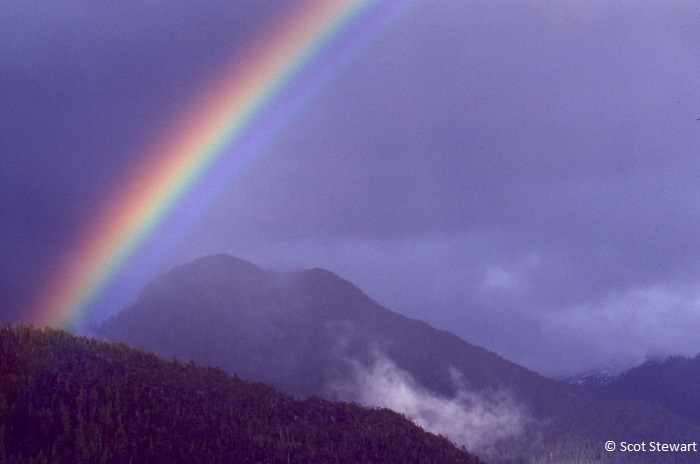
Rainbow over the Inside Passage (click image to view others)
1.2.19: Happy New Year! I cannot believe it has been two months since I posted here - guess it is a reflection of the pace of things. Have been scanning and posting lots of images from years past - especially for the National Parks, Fish, Mammals, and a whole new page for Insects and Spiders. I have been thinking a lot about the photographs I have been putting on here. I have tried to show as much of the beauty of the Upper Peninsula as I can from as great a diversity as possible - ferns, flowers, spiders and fungi, as well as the birds, mammals and landscapes. I would really like my students to be proud of their home! I have tried to identify elements of our land as carefully and as completely as possible to help those wanting to more about them and to help them identify their own findings. Not all the images are "print perfect", but occasionally are meant to show something wonderful I have found and want to share. I have also been thinking about my writing too. The Rivers story in the January Marquette Monthly was one I really enjoyed writing. I visited the local rivers north of town as often as I could this fall in anticipation of the story and have grown attached to the Little Garlic, Yellow Dog and Harlow Creek especially. They have gotten me thinking more about the need for concervation and the value of wild places in our lives. Will need to consider how to do that more. This past week I have enjoyed some time to scan more and to photograph as well. Two of my favorite birds have been in the area, pine grosbeaks and bohemian waxwings. I did get a great opportunity to see and photograph the waxwings, on the edge of a parking lot. Below are two of the shots.
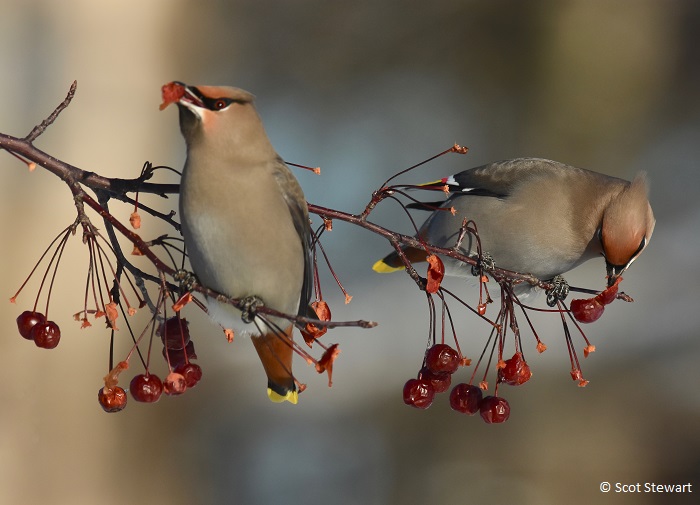
Bohemian Waxwing Pair eating Crab Apples (click image to view others)
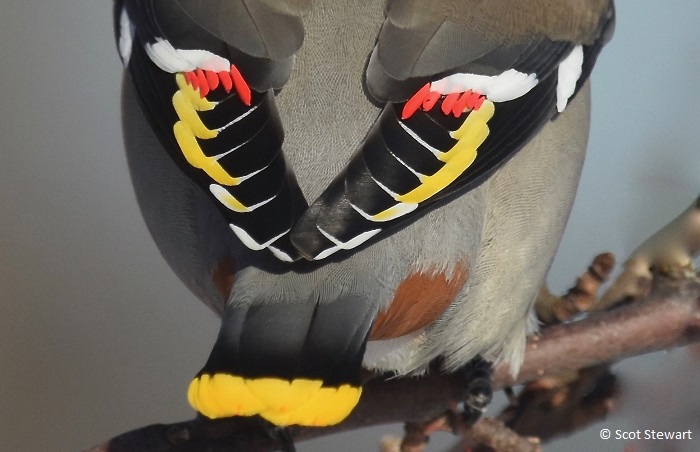
Bohemian Waxwing wings detail (click image to view others)
11.2.18: My photo work in Marquette lately seems like a painting, randomly dabbing in various parts of the canvas. Some of my spots have been visited with certain intent, looking for reflections of the fall colors on water. Some have been to revisit rivers and creeks. Some just routine - like the mouth of the Dead River for birds. Some have been curious revisits only to find something new. The Park Cemetery is full of colorful trees bording ponds in fall. Finding muskrats and a hooded merganser have been wonderful bonuses. I fouud the hooded merganser on Halloween, under cloudy skies. The colors were dramatic. I went back yesterday with the sun out and worked really hard to line up the reflections with the duck. It was just about impossible. Finally after two hours a muskrat swam right out in fron of me, in reflections and paused. It truly was a gift. Then the hooded merganser swam right out toward me. I felt truly blessed.
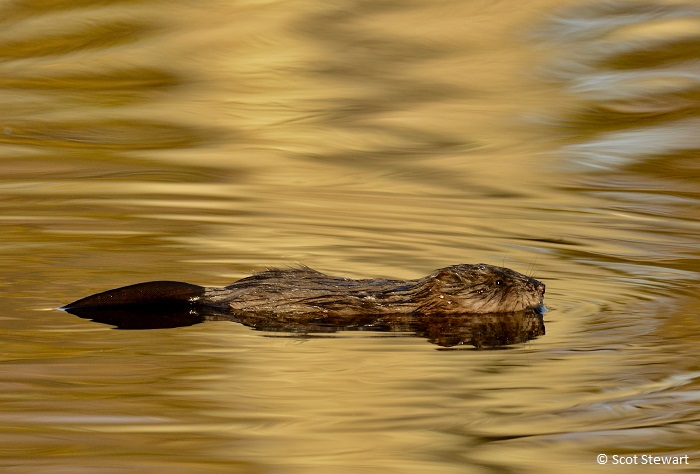
Golden Muskrat (click image to view others)
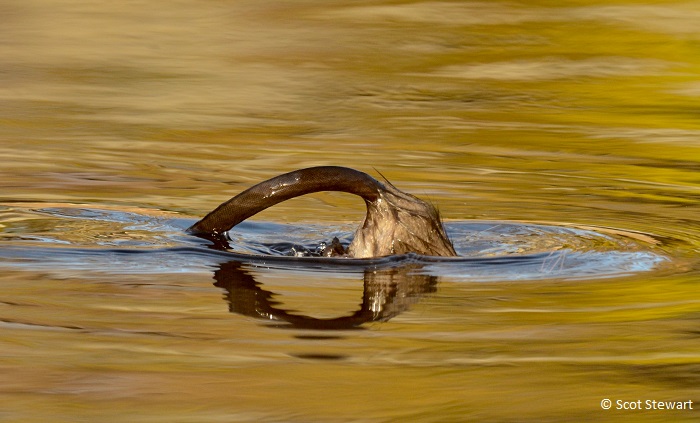
Tale of a Muskrat (click image to view others)
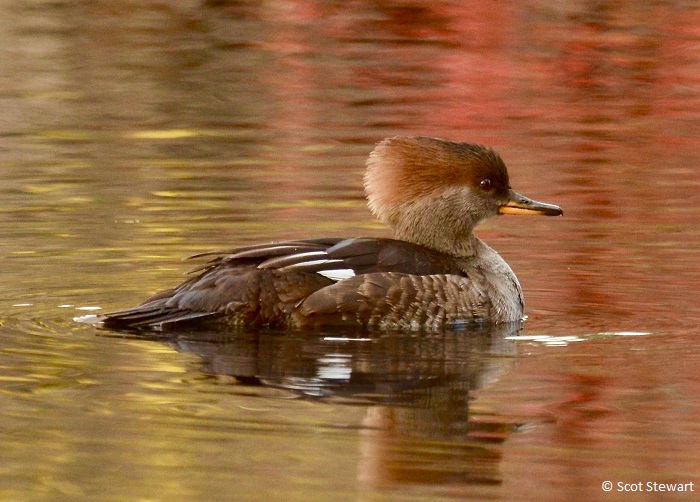
Hooded Merganser (click image to view others)
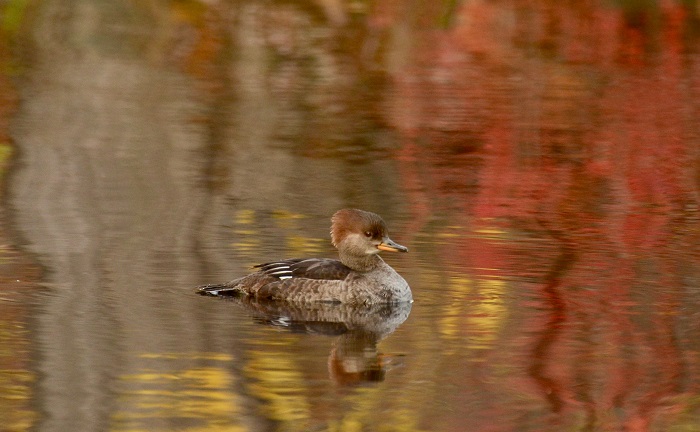
Hooded Merganser (click image to view others)
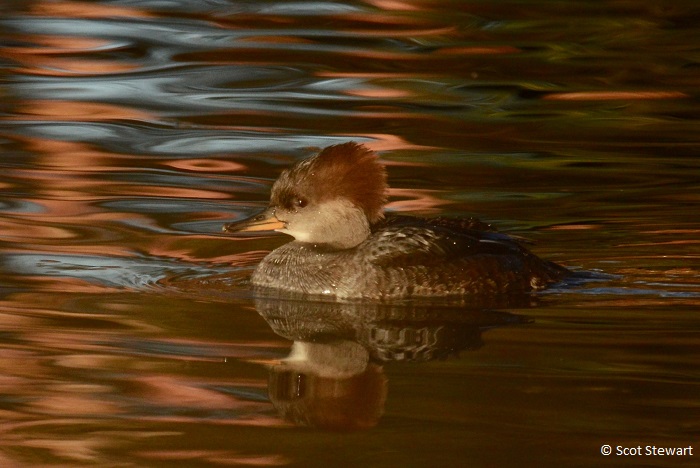
Hooded Merganser (click image to view others)
10.17.18: With the amazing colors this fall I have been interested in following the color changes along some of the rivers in northern Marquette County and in Alger County. In Alger County I have been to Scott's Creek, Miners River, Munising Creek and a few unnamed creeks in the Pictured Rocks National Lakeshore. In Marquette County I have been walking along Harlow Creek, Yellow Dog, Big and Little Garlic Rivers. I have been visiting falls, but also looking for color along the rivers and how it is reflected on the water's surface. By looking at different shutter speeds I have managed some interesting shots. The lack of sunshine has made it a bit challenging - there just haven't been many days to get good shots. The day I made the images below got off to a great start, watching a mink work along the river. I eventually caught up with it a second time before it ducked behind s clump of roots at the river edge. Later I flushed a quartet of wood ducks. It was a get excursion up the river.

Harlow Creek Reflection of Trees (click image to view others)
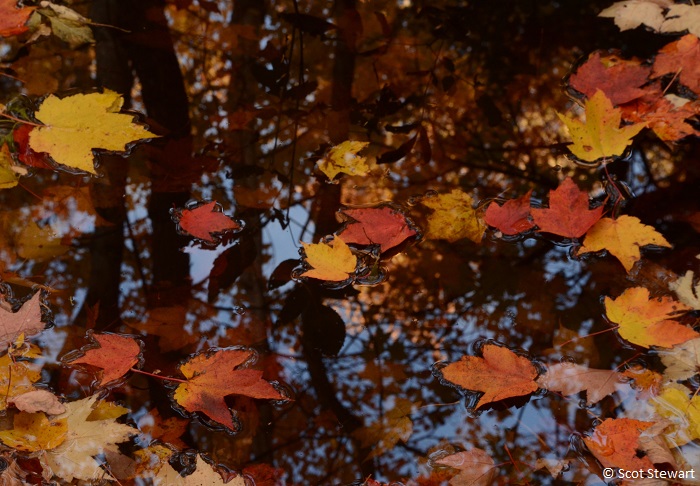
Small Pond with Leaves and Reflections (click image to view others)
9.29.18: It has been a bit gloomy on many of these late September days. We are looking to set a record for rainfall - nearly 3 inches over the monthly average and a lot of clouds. Just the same, I headed out this afternoon to see if I could find some of the migrants seen at our city's former composting site along the Lake. I was able to find three young white-tailed deer bucks feeding together in the center of the area and later lots of savannah sparrows and several palm warblers. I am always surprised when I can settle into a place where birds are feeding and eventually jsut become part of the landscape and watch them feed right around me. The deer were a bit shy, but a palm warbler fed literally at my feed for nearly half an hour, gleaning insects off eed and other small plants. It always seems like such an houor to share a spot tith them!
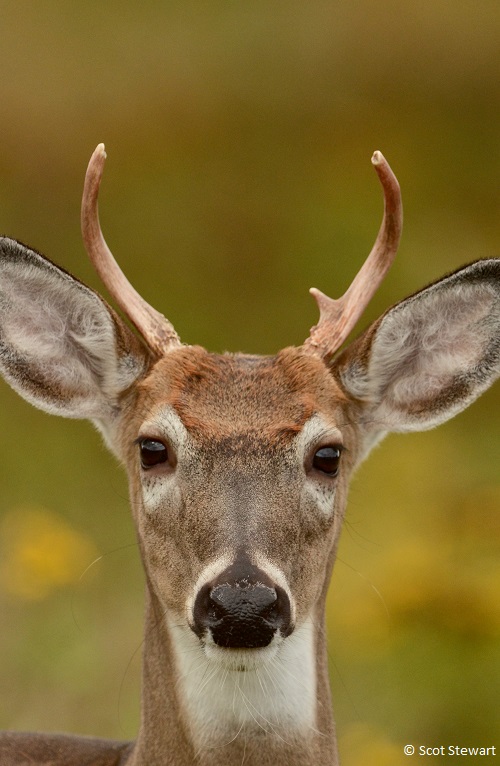
White-tailed Deer - A Young Buck (click image to view others)

White-tailed Deer - A little bit older Buck (click image to view others)
9.27.18.18: This has been an unusual autumn for bird migration. For many groups, especially shorebirds, migration has come in dribbles. So the news of large flocks of eastern bluebirds south of Marquette came as a huge surprise to me. I have never had the opportunity to see the big flocks that often show up in great bluebird photos, so when I heard a flock was lingering along Co. Rd. 480 in Harvey I headed there after school and after a rainy day and found them. Through some great directions I caught up with them behind a row of pine and spruce trees with half a dozen palm warblers, some cedar waxwings and eventually a flock of American robins. They dipped up and down the row of trees, over to another perpendicular row and into the tansy and goldenrod clumps in the adjacent field. there were juvenile and adult birds, and as always, they were skittish. Here are a couple of shots from the day.
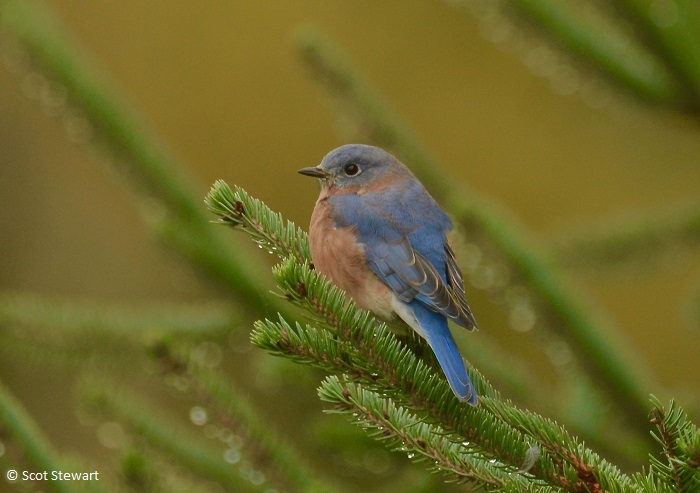
Eastern Bluebird (click image to view others)
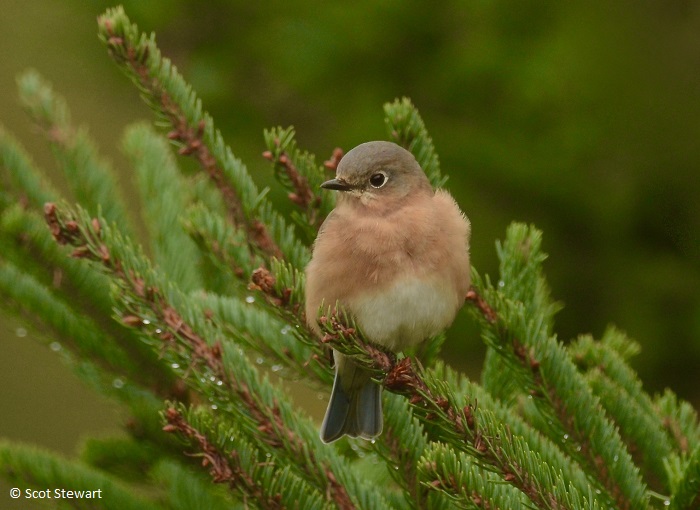
Eastern Bluebird (click image to view others)
9.26.18: My interest in macrophotography was rekindled this summer with the search for interesting insects. Hoping to improve my results I obtained a ring-light to help me get closer. One of the first successes with the nexw set-up was some shots of a speciemn of iridescent hematite from Spain. Some of the results are below.
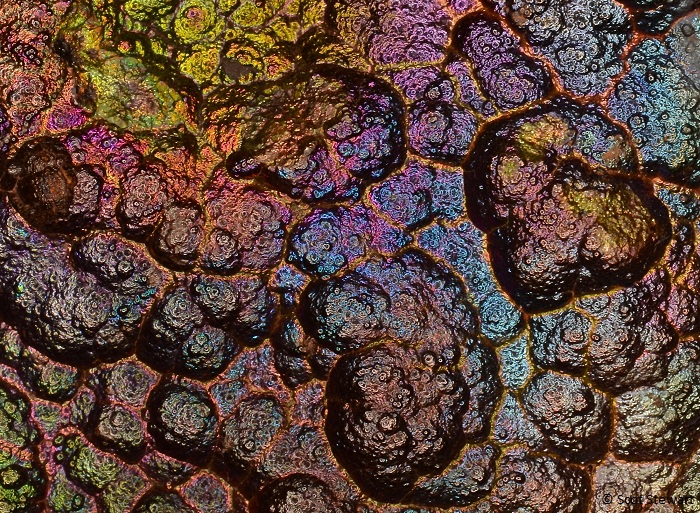
Iridescent Hematite (click image to view others)
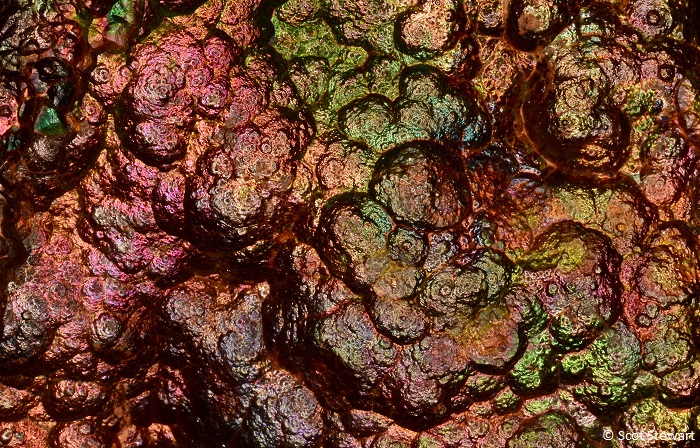
Iridescent Hematite (click image to view others)
9.22.18.18: Shorebirds have been scarce across many areas in the Upper Peninsula this summer. I was delighted to come across a group of five American golden-plovers at the edge of the university. They seemed fairly oblivious to the people readying for a parade, but did flush when trucks drove by. They were particularly interested ina circling peregrine falcona and froze regularly nd hunkered down to avoid detection. While looking up, they offered aaan opportunity to look at their eye coverings.
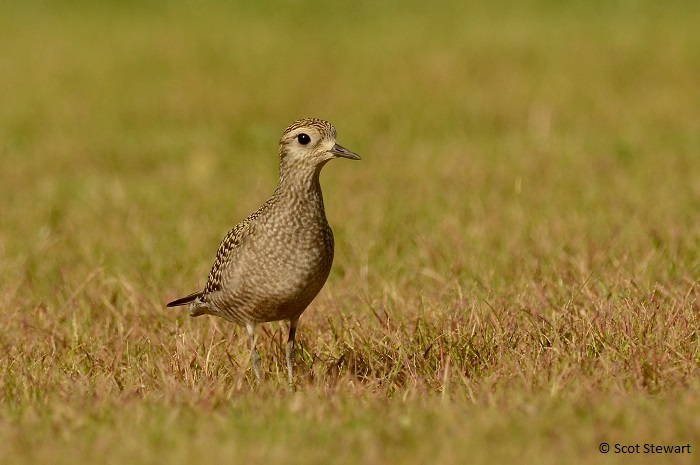
American Golden-plover (click image to view others)
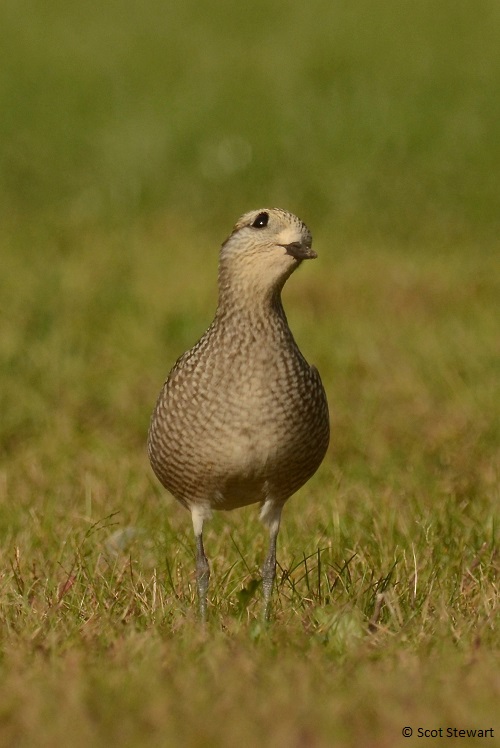
American Golden-plover watching a circling Peregrine Falcon (click image to view others)
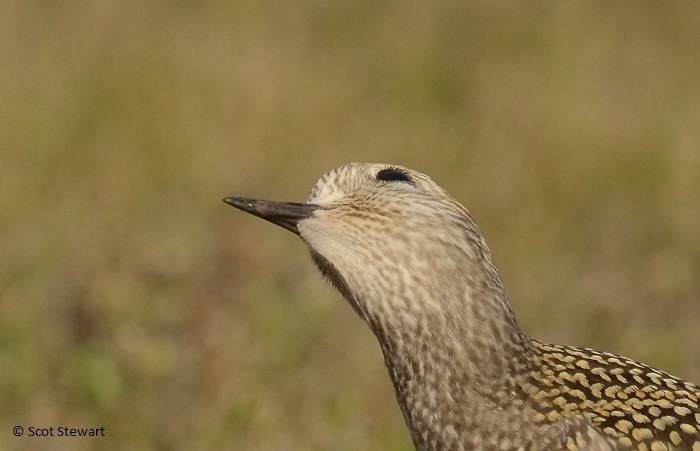
"Eyelashes" (click image to view others)
9.03.18.18: I finished my summer vacation on a glorious note spending most of the day exploring the Garlic Rivers in northern Marquette County and the Lower Harbor in Marquette. Our last walk was out the breakwall, the local name given to the breakwater near the iconic red lighthouse, where we found gulls, single Baird's and semipalmated sandpipers. On the return though we were surprised to find an adult bald eagle feeding on a rock just off shore near the start of the breakwall. It seemed very hungry and unwilling to give up its spot or its prey.
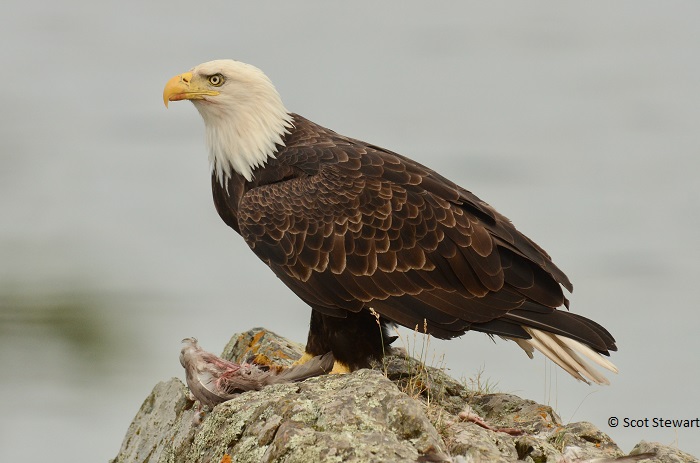
Bald Eagle (click image to view others)
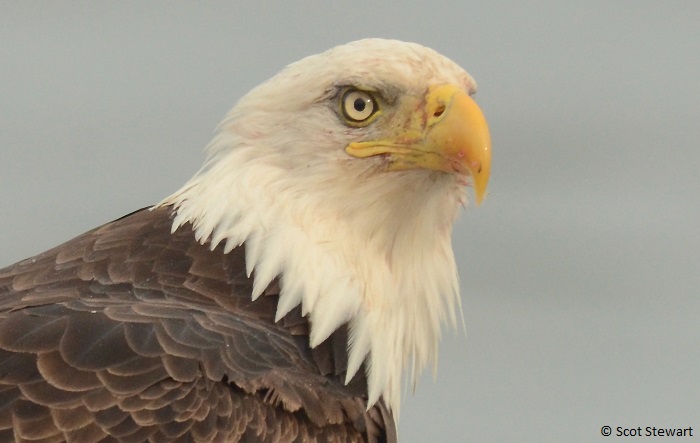
Bald Eagle (click image to view others)
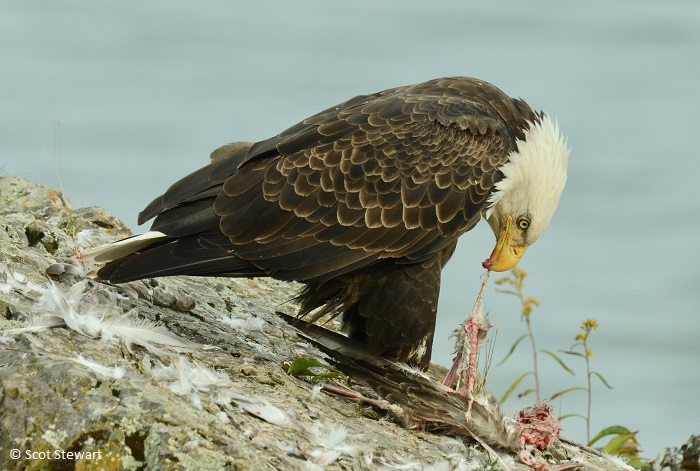
Bald Eagle with Meal (click image to view others)
8.30.18: My summer vacation is quickly transitioning into my 40th year of teaching! It has been a wonderful summer with lots to see, do, and photograph. My wife and I hiked up to the Little Garlic Falls this afternoon. I was hoping to rephotograph the falls, but the lighting was not what I expected and I did not shoot there. HOwever, the trees are beginning to change colors, in part due to a really dry August. So of the rocky ridges were covered with trees and bushes covered with dried and dead leaves. Wetter areas have fared better. I found a maple tree with some yellow, gol and orange leaves reflected in the water and began to see fractals of the leaves in the small elevated patches of the river qwhere the water rose over ripples of sand and rock on the bottom. I believe I will be working on a new series this fall! I also found a large stretch of violet-toothe polypore fungi along the trail and really enjoyed seeing them again The ongoing thunderstorms this week should create some great conditions for fungi and slime molds in the coming days. Can't wait!
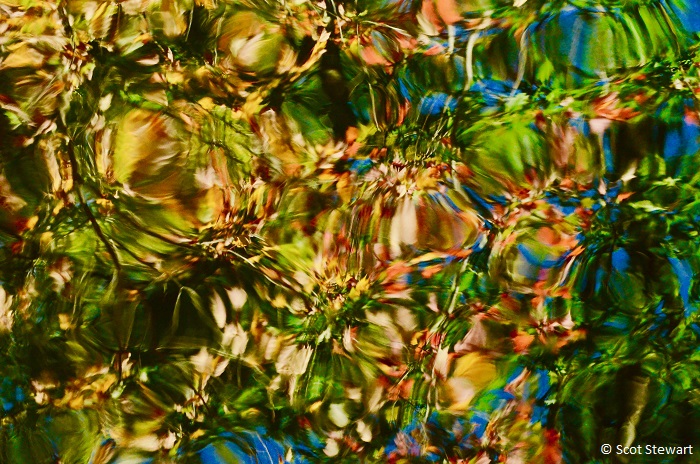
Maple Leaves Reflected on Little Garlic River, Marquette Co., Michigan (click image to view others)
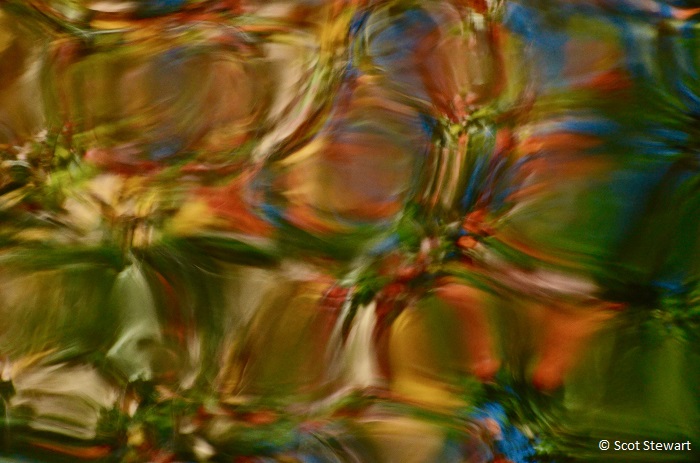
Maple Leaves Reflected on Little Garlic River, Marquette Co., Michigan (click image to view others)
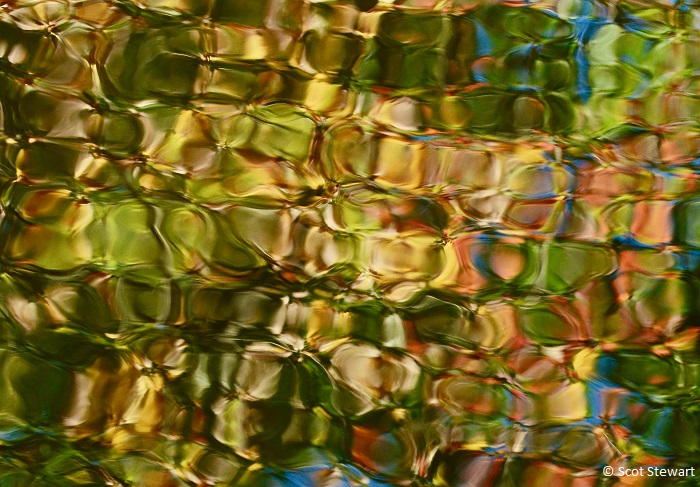
Maple Leaves Reflected on Little Garlic River, Marquette Co., Michigan (click image to view others)
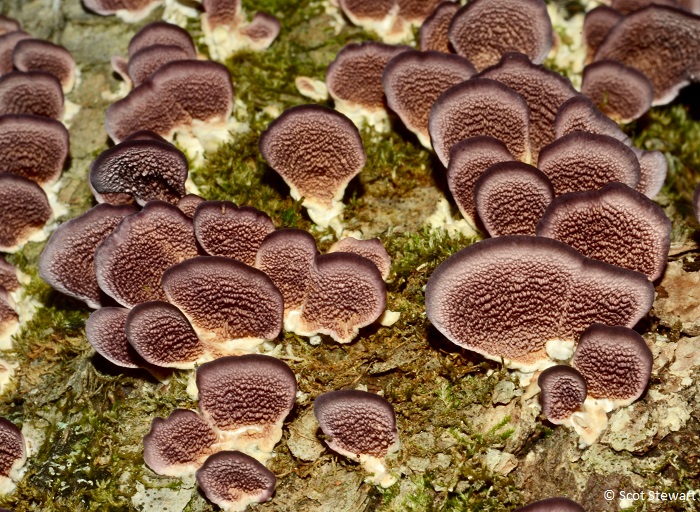
Undersides of Violet-toothed Polypore bracket fungi. (click image to view others)
8.24.18: Hard to believe it is the end of August already. It has been a busy summer, really busy, with lots of great opportunities to photograph and write. I've called it the summer of bugs, berries and birds. All have been great. The insect photography, including lots of bugs, true bugs, has been fantastic. So much so I decided to add a page of insects witgh a category for each species, even though it means being more aggressive in id'ing them, instead of rolling out all of them in categories by orders (classification groups). The page is curently under construction. Many of the inswects can still be found on the "Other" page and are slowly being moved over. But there are hundreds of new insect images being added too, like the scaly bee fly below. I found a large number of fly mimics this year - flies that look like bees and wasps. This one is almost a hummingbird mimic - with the green color and the antennae resembling a long beak. As the images are added the new categories will appear.
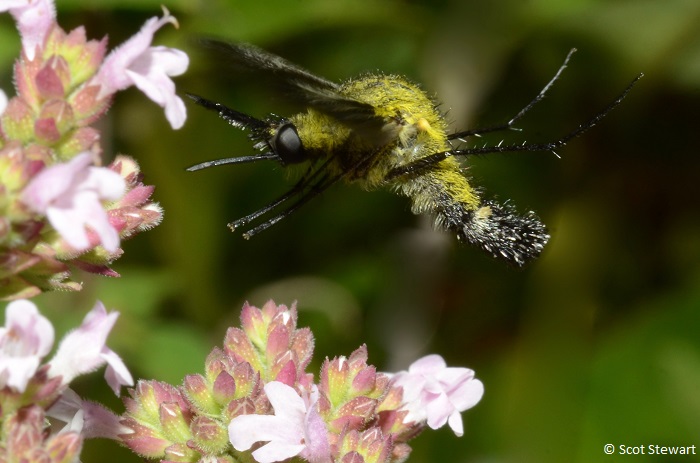
Scaly Bee Fly on Wild Oregano (click image to view others)
7.1.18: The summer months have been filled with surprises and today was no exception. On my way to our City Park, Presque Isle, to host at MooseWood Nature Center I spotted noted local biarder, Louie Dembowski, photographing on the beach near the mouth of the Dead River. He found a willet, and I too was able to photograph it. July 1 is the date when birders start looking at migrants as headed downstream - back south again. With willets being among the earliest migrants it may well have been headed to the Gulf for the winter. It was a darker banded bird suggesting it may have been an East Coast bird from the Atlantic Coast summer range, not the prairie population.We had a thunderstorm later in the afternoon and as the clouds cleared I headed back to the river mouth hoping to photograph it in better light. The willet was no where to be seen, the site is after all under the nesting site (at the local power plant) of a peregrine falcon family. What I did find though was a female common merganser with her 5 youngsters. Cute little fuzzballs, they are still young enough to ride on her back as they did when they headed in to the river to forage. What follows are images of them and the willet
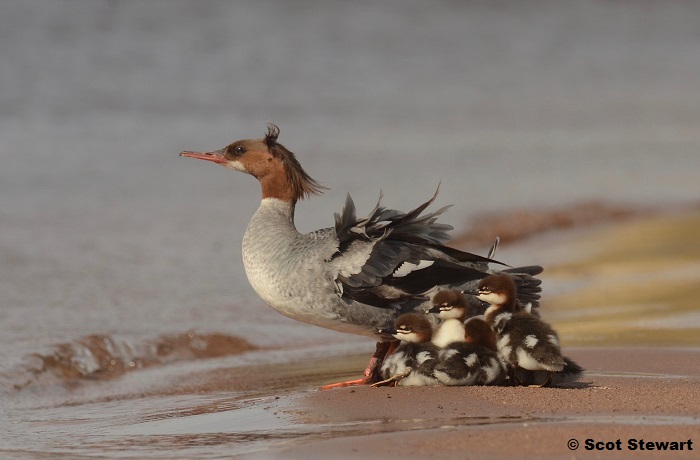
Common Merganser Female with young (click image to view others)

Common Merganser Female with young (click image to view others)
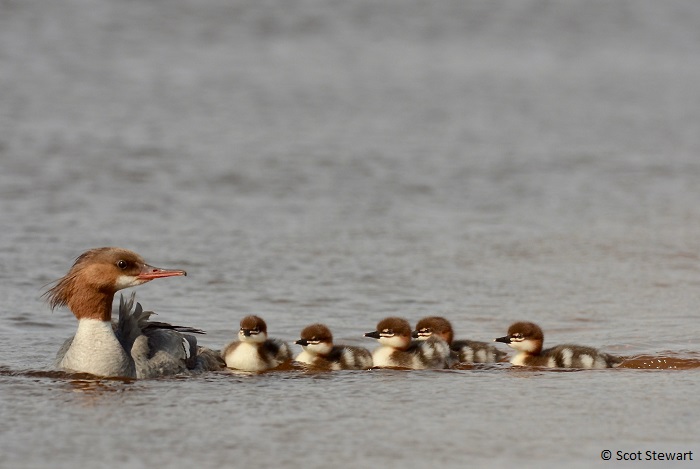
Common Merganser female swimming with young (click image to view others)
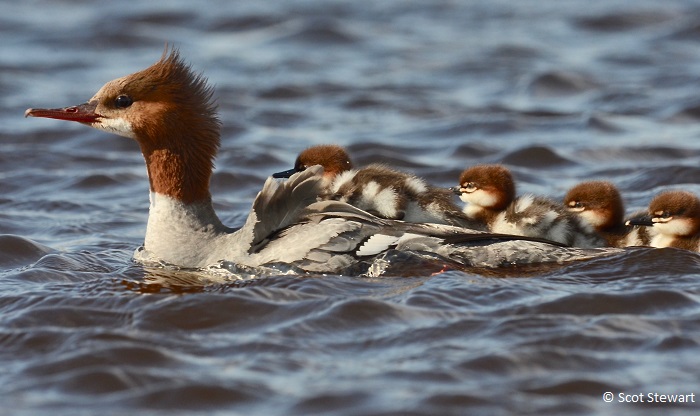
Common Merganser female swimming with young (click image to view others)
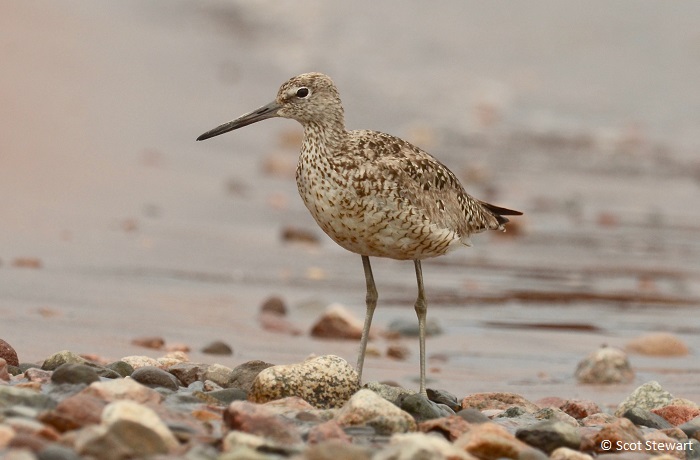
Willet in Basic Plumage (click image to view others)
6.25.18: This is turning into an exciting summer, with lots of travel, much of it for family. Summer has provided a number of fantastic opportunities for vagrants in Marquette and the central - marbled godwit, Wilson's plover, and some late migrants, but also some great opportunities on the road. Made two stops at the HOricon National Wildlife Refuge in Wisconsin, hoping to see some of their summer resident black-necked stilts. Stopped along HIghway 49 the past two days and found the stilts, a ways off the road, and had an unusual repeat of a pair of sandhill cranes flying into the area and truly upsetting the stilts - about eight of them, some red-winged blackbirds and one yellow-headed blackbird. It turned into an amazing show. Both days had large numbers of great egrets - at least 31 Saturday,, with Sunday seeing lots of American white pelicans, a pair of trumpeter swans, Forster's and black terms, gadwalls and others. Amazing to see so many species, showing so much behavior!
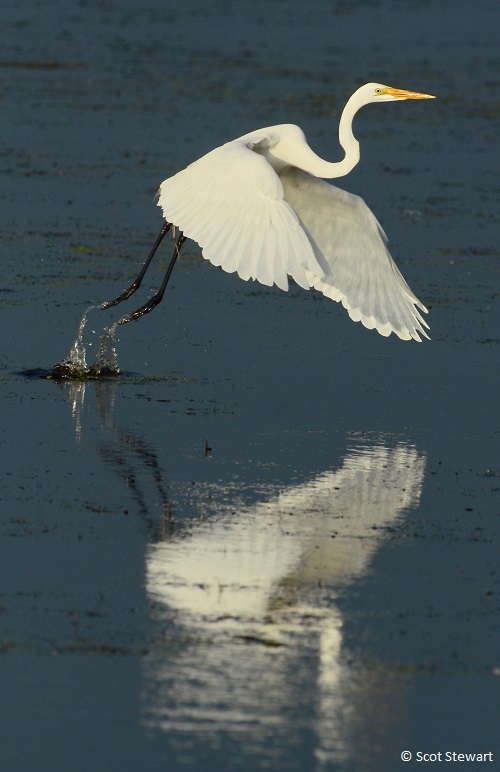
Great Egret taking off (click image to view others)
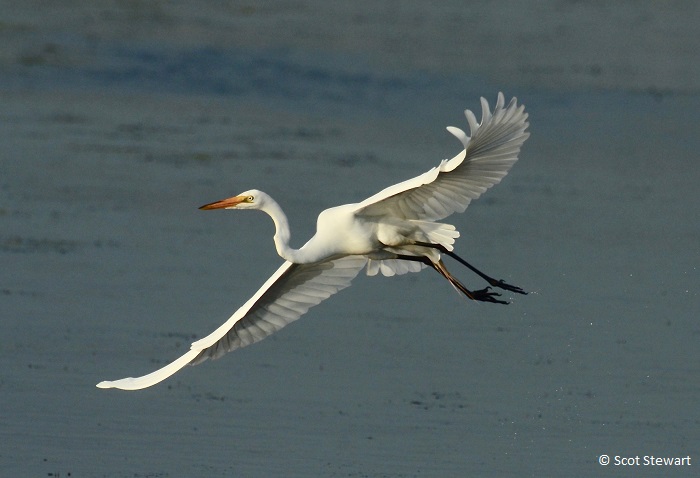
Great Egret in flight (click image to view others)
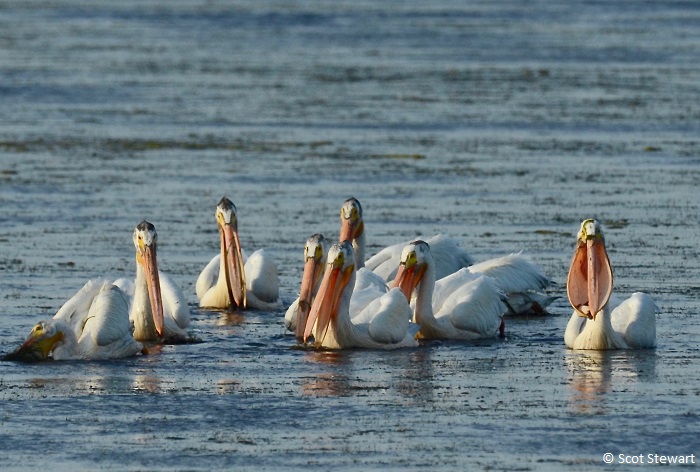
Flock of young American White Pelicans feeding (click image to view others)
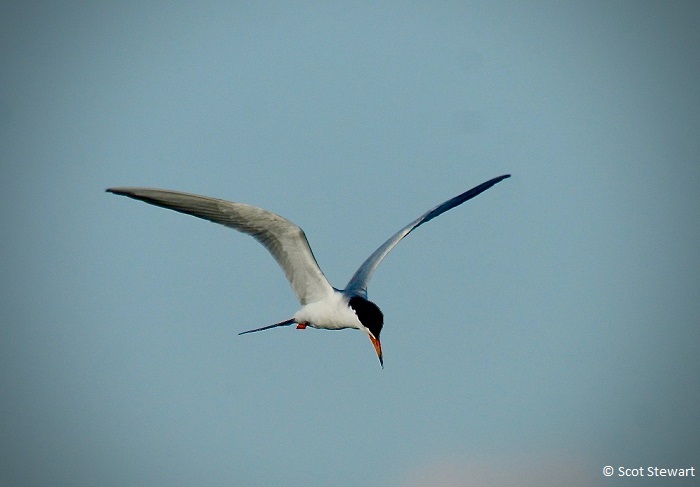
Forster's Tern hovering (click image to view others)
5.31.18: It is alsways exciting to come home from a trip and find out what is currently exciting everyone in Marquette who follows birds. This week was not exception. There was a snowy egret in Escanaba, a white-eyed vireo at Whitefish Point, and a marbled godwit near the Superior Dome in Marquette. Fortunately for me I was able to find the godwit before school the next day and again in the rain that afternoon and the next afternoon. Alone in the dry fields near the soccer field, it took a little time to gain its confidence, but was fun to watch foraging for insects and slugs. I enjoy the challenge of slowly working closer to shorebirds, resting on one knee, keeping a low profile. They seem to sense you are not a threat after a whila and even approach after a time. Spent about an hour and a half watching. (It arrived on May 26 and left late today or early the next morning.
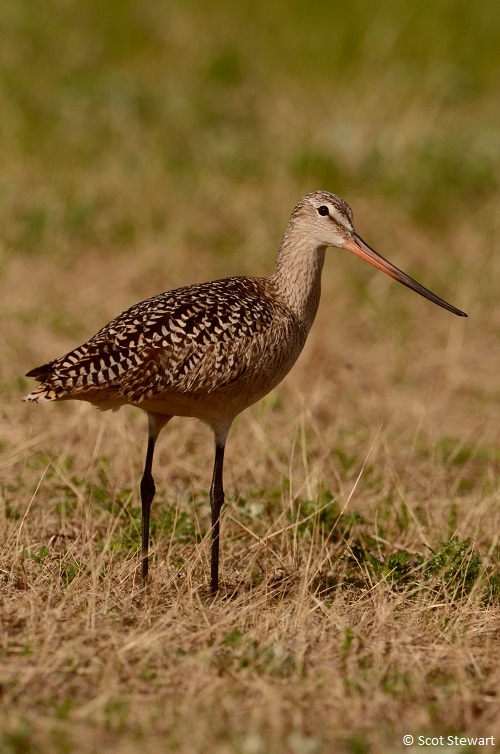
Marbled Godwit (click image to view others)
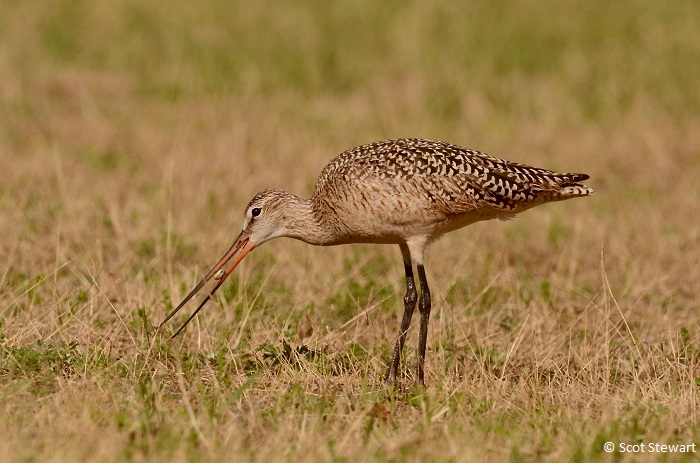
Marbled Godwit eating a slug(click image to view others)
5.28.18: The Wisconsin Driftless Area is one of my favorite places to be in late May. Made a trip to the Dodgeville-Spring Green area for a few days to be with family and relax to the sounds of whip-poor-wills, cranes, eastern screec, barred and great horned owls, the smells of lilac and honeysuckle, and views of a variety of birds that don't usually make it farther north into the Upper Peninsula. I was able to photograph blue-winged and yellow warblers, grasshopper sparrows, warbling and yellow-throated vireos. We made a quick trip also to the TNC Spring Green Preserve, a dry prairie wih blooming birds-foot violet, plains wild indigo. STaying at a small cabin provided a great break from TV, email, internet and the rest of technology. Busy adding shots to the website butironically slowed by a slow computer!
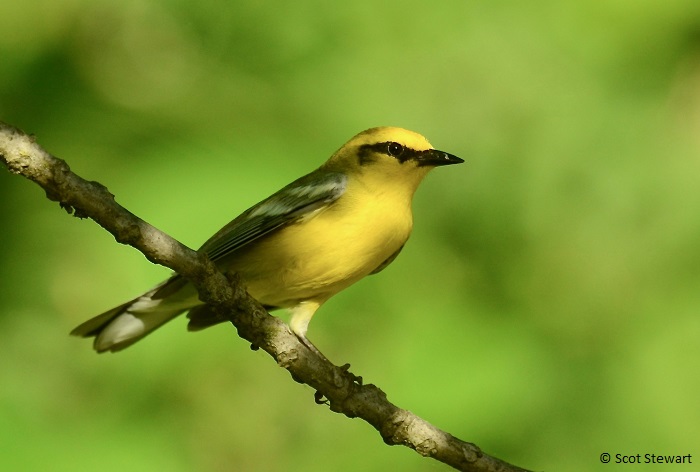
Blue-winged Warbler(click image to view others)
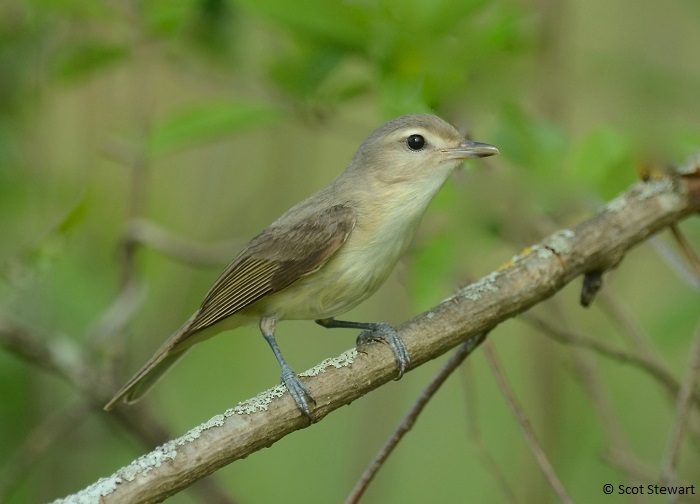
Warbling Vireo(click image to view others)
5.11.18: May is my favorite month of the year. Bird migration is in full gear, tree flowers then wild flowers are blooming, there is an explosion of pastel colors of newly leafing trees on hillsides, sounds of singing birds by day and frogs by night and smells of rain, rich, moist soil and trailing arbutus. Migration also brings surprises - vagrants and other birds off course landing in the area to rest and refuel. The fourth ever Wilson's plover reported in Michigan was discovered at the mouth of the AuTrain River in Alger County May 9 by Scott Hickman. I took a gamble and drove down to find it and did with the help of two more friends, Bruce Ventura and Tina Hall. We live ain a wonderful community of skilled and appreciative birders, willing to share t heir discoveries. I spent an hour and a half watching it, especially as it foraged and did find some large insects to eat. II did resort to a trick that helped get some decent pictures - taking a knee and lowering my profile as it worked the beach and eventually came fairly close to where I was. It is great to feel that connection with a bird that is not upset with your presence and allows you a special few precious moments to observe it at close range. Cannot wait to see what today brings!
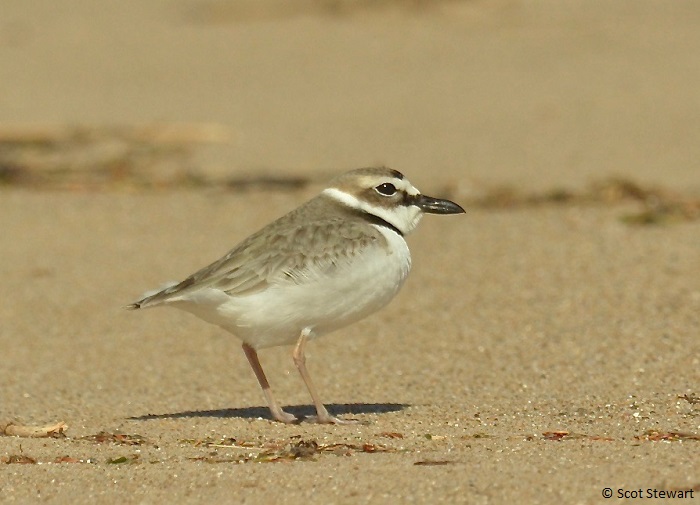
Wilson's Plover at the Mouth of the AuTrain River(click image to view others)
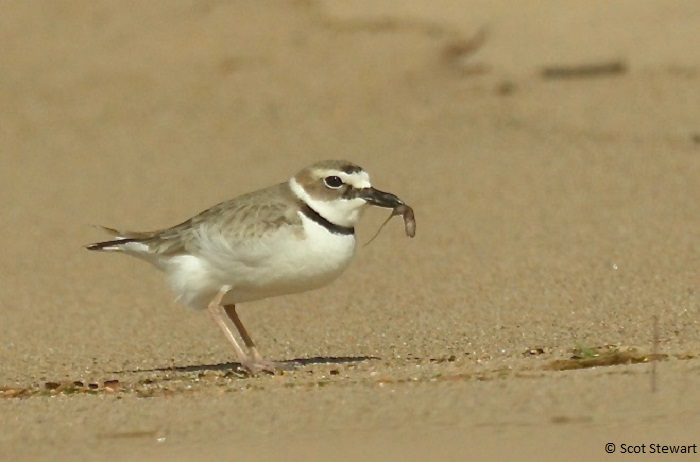
Wilson's Plover feeding on a Rat-tail Maggot (hover fly) Larvae(click image to view others)
4.29.18: Spring finally seems to have winged its way to the Upper Peninsula. Most of the area seems to be losing its snow quickly - except the far northeastern part - especially aroujnd Tahquamenon Falls state Park where there seems to be at least a foot of snow still on the ground. With a drastic change of temperatures and wind today great things were expected at Whitefish Point with bird migration. Birders there were not diasppointed. Highlights for the day included two snowy owld, 1500+ sandhill cranes 139 rough-legged hawks, two golden eagles and a red-shouldded hawk. On my way home I found a light phase rough-legged Hawk on the Seney Stretch and a pair of cooperative common goldeneys in the Lower Harbor of Marquette. It is amazing how the arrive of spring puts its namesake in your steps!
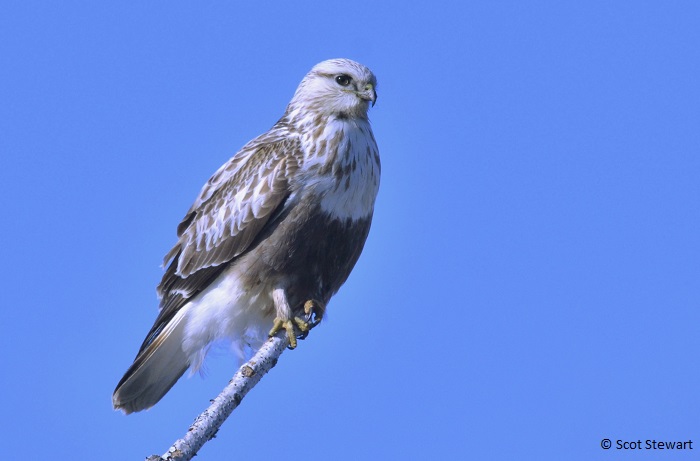
Light Phase Rough-legged Hawk on the Seney Stretch (click image to view others)
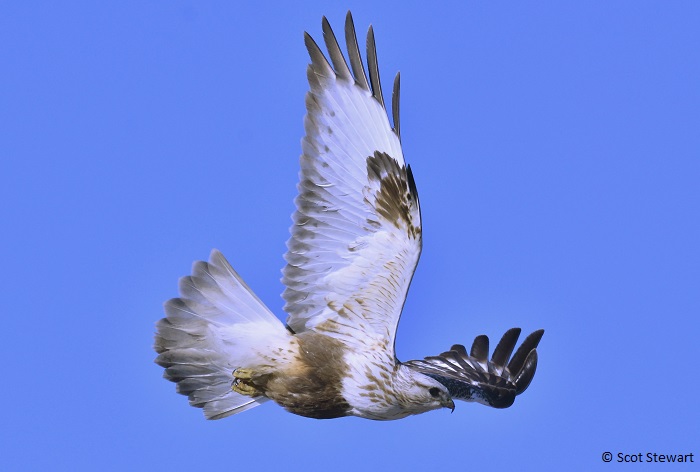
Rough-legged taking off (click image to view others)
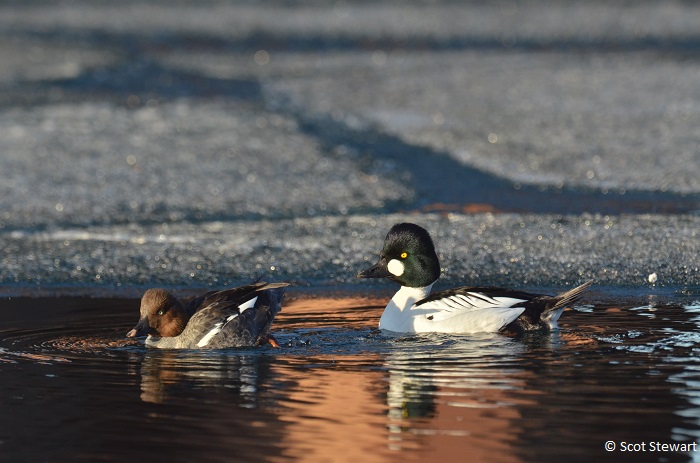
Common Goldeneye Pair (click image to view others)
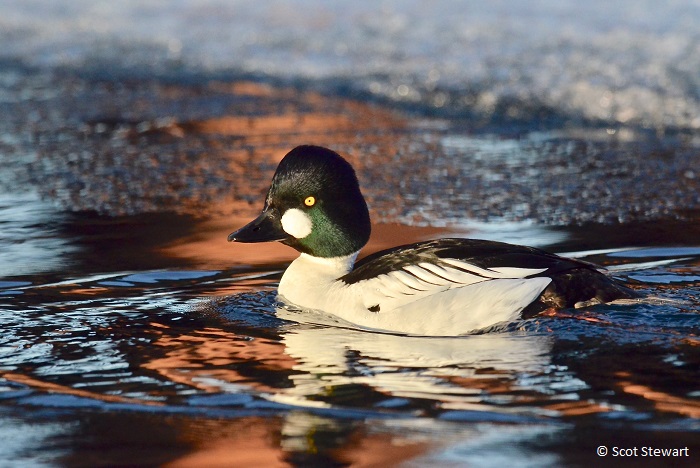
Male in the reflections of the Ore Dock (click image to view others)
4.28.18: Today looked like a great Spring Day but it certainly did not fel like it. Icy daggers of wind seemed to rip through light jackets and reminded many winter was not going to give up its grip easily. Hiked down toward Wetmore Bog to see how a patch of round-lobed hepatica was doing. Found them last fall and have patiently (mostly) waited for the snow to come and go to see them bloom. Foudn two plants with their evergreen leaves raised off the duff, the rest are still plastered to the ground. After removing some leaves found some 1/2" tall sprouts bearing furry buds. Should ge ready this coming week" Went next to Wetmore Landing to the east and found some stunning ice chunks in varying stages of melting on the beach. The look like raw diamongs and transparent arborescent (leaf-like) copper.
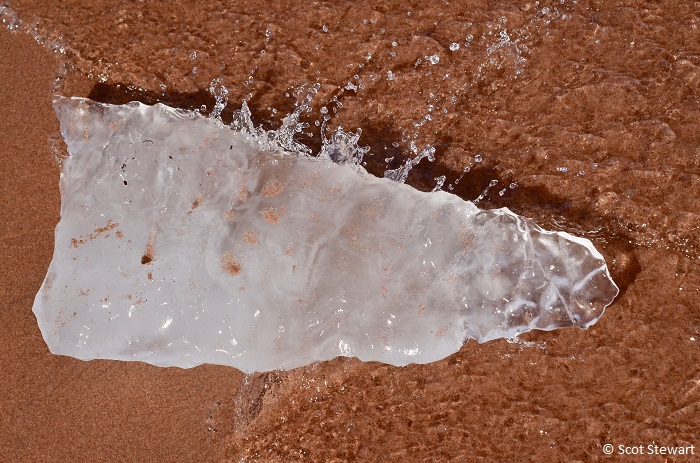
Ice Chunk buffeted by a Wave (click image to view others)
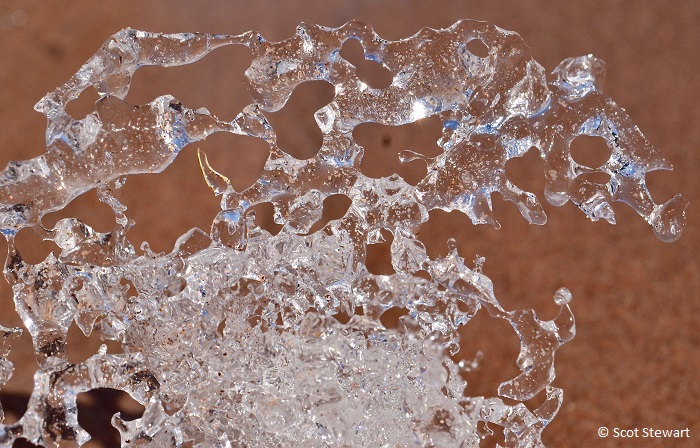
Melting Ice Chunk (click image to view others)
3.30.18: More seesaw days - 50's yesterday, and more snow on the way tomorrow. Despite the weather, the birds are making their way back into our area, with up to four robins feeding on the soft, brown apples in our back yard. Peregrines ae sizing up the nest boxes at the local power plants. Vultures, grackles, red-winged blackbirds and woaterfowl are also easing in. Back at the Dead River hooded mergansers were spotted yesterday, so I haeaded back to see them. They were there, and two trumpeter swans back there too. I watched as they eased back in front of me again. With no food there, they began preening and I photographed their contortions. It was amazing to see how their necks facilitated their movements to perfect the alignments of their wing and back feathers. Had another wonderful, inspired spring afternoon watching this pair.
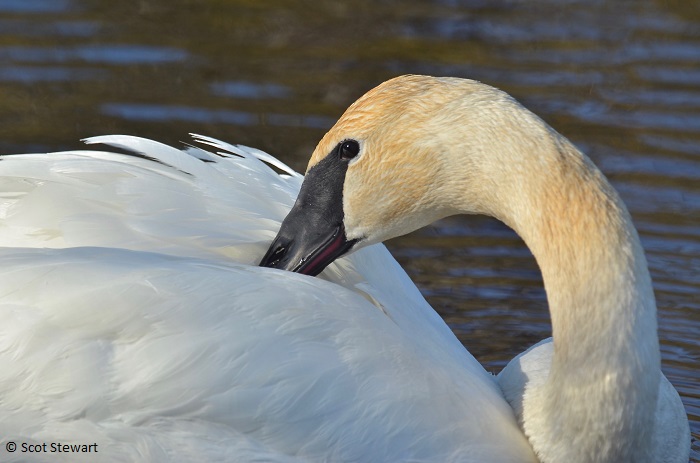
Trumpeter Swan preening back (click image to view others)
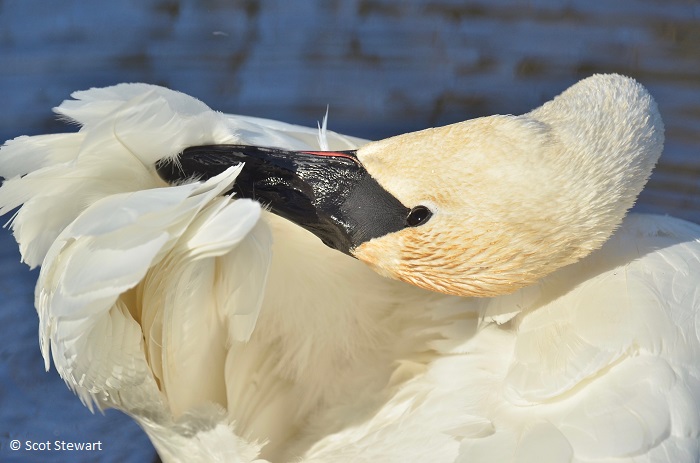
Preening with a Twist (click image to view others)
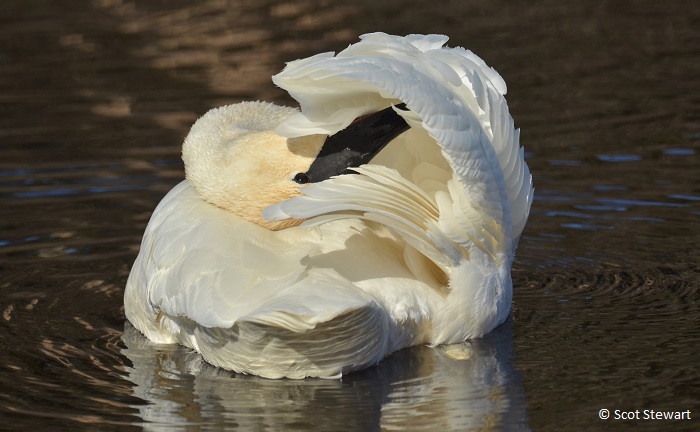
Preening in a Roll (click image to view others)
2.27.18: Spring seems to be knocking on the door. With ever longer periods of daylight and mild temperatures you can just feel the change(s) coming! I have begun hearing the subtle signs of the birds getting excited too. Chickadees are starting their singing and goldeneywes are displaying and sounding off. On the Dead River a pair of trumpeter swans have arrived again this winter as they did last year at this time. Not sure where they end up in the summer - no young were seen in the backwaters there, but they are a welcome sight in winter.
Their gentle honking and slow, grazeful glides across the glassy water just calm the soul. After hearing about their recent arrival I headed down there after an unsettle weekend and found them down river from the public access on Granite Street. Fortunatedly, I was not there too long before they hopped into the water and glided right down to where I was standing. Hoping they would swim closer, I got my camera out and was able to get a few shots. They were a welcome bit of grace on a gorgeous warm afternoon.
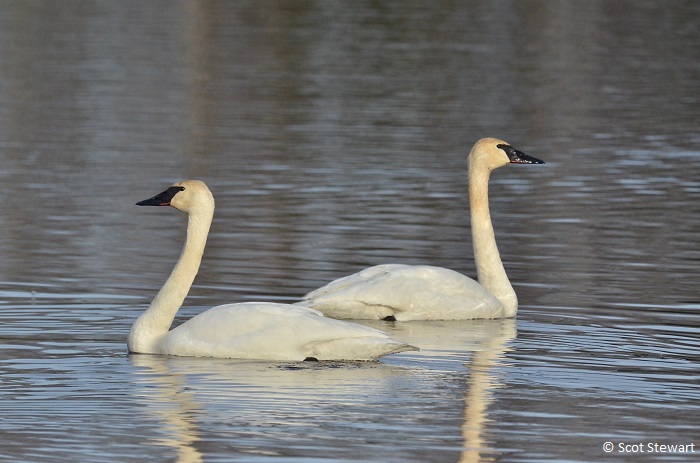
Trumpeter Swan Pair (click image to view others)

Landed Swan Pair (click image to view others)
2.9.18: Hello Hello!! This has just been a phenomenal weekend. Went with the family and some friends to Grand Island, in Munising Bay to the east today, to take a look at the amazingly beautiful ice formations on the cliffs there. It is a 3/4 mile hike across the ice on Lake Superior from the mainland to the island so it is a little intimidating - especially since several snowmobiles sunk out there last week and a hovercraft was sent to bring the snowmobilers back to shore. The ice is much safer this week due to continuing single digit temperatures and calm winds. There was a well-trod pathway to the cliffs, mostly across ice with a few inches of snow atop it, and by the time we headed back to shore, there were 30+ skiers, ice climbers, and hikers out there with us. Water continues to seep down the cliffs leaving plenty running over the surface on the ice close to the island's shore. With that we did find one soft spot with at least 4 feet of water directly below just a few feet from the island.
The water drips off the cliffs and freezes into remarkable columns, stalactites and curtains of blue, green and yellow. leaving walls, caves and other structures to explore. Sunrise may be the best time to visit, when the light is low and saturated and the colors of the ice are more intense. None-the-less, there is plenty to see. There was an American tree sparrow out there too foraging in the plants and rocks above the ice. It was a truly delightful day!
Just a note again about later this month. I will be doing a program for LSAA on February 20 at 7:00PM in the basement of the Peter White Public Library on abstracts, macros and a few new bird shots. I hope to see you there!
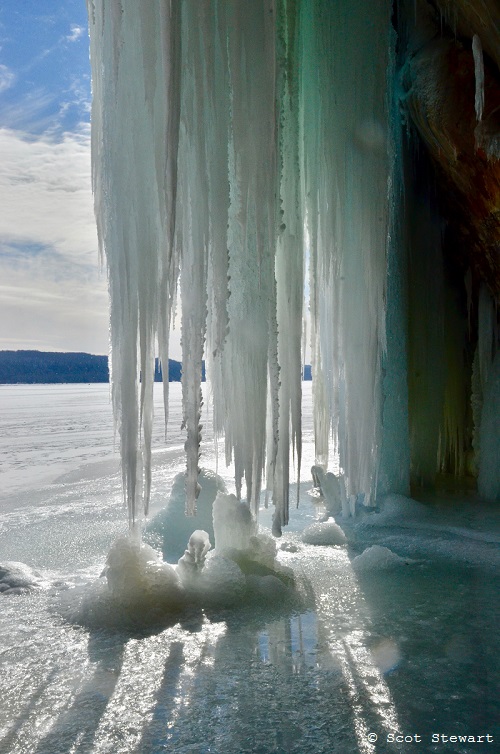
Ice Columns (click image to view others)
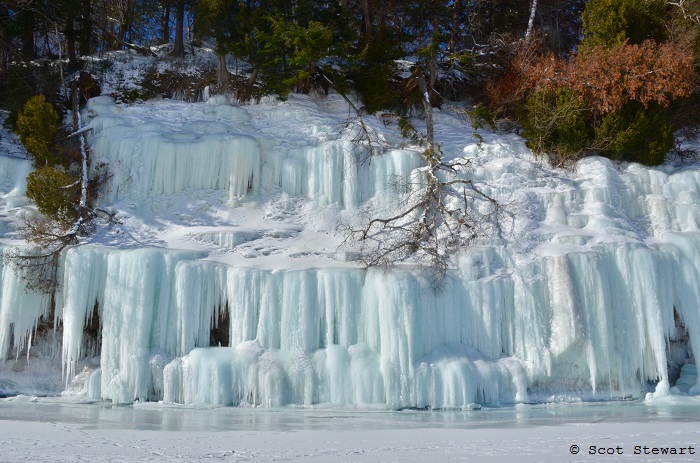
Ice Curtains (click image to view others)
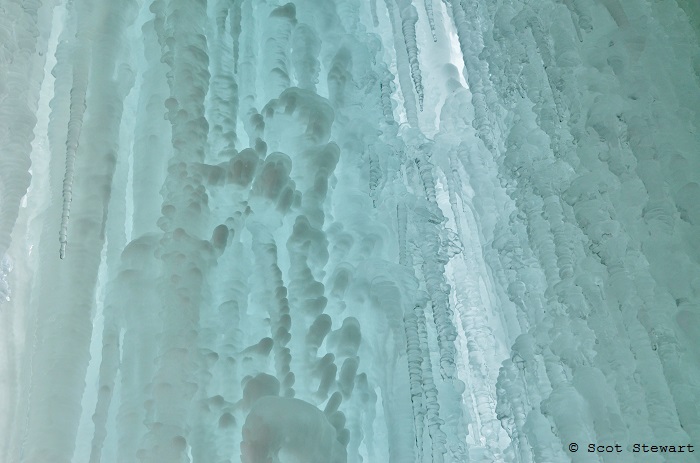
Frozen Ice Streams (click image to view others)
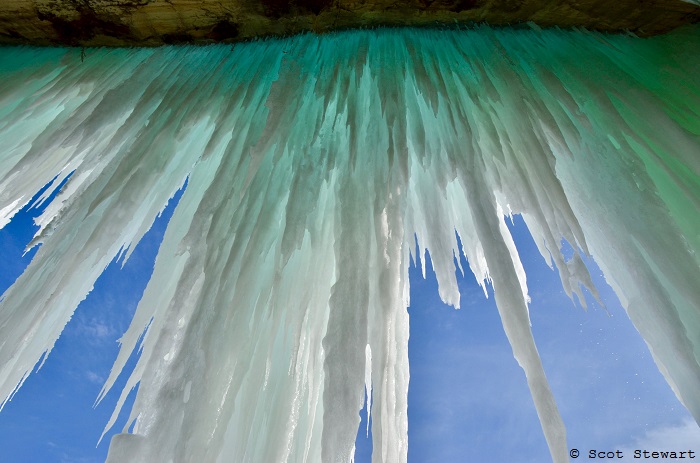
The Teeth of Winter (click image to view others)
2.10.18: Despite the cold, being outdoors has been delightful. I visited a good friend today in the western part of the county who maintains one of the best feeding stations for birds in the U.P. She has the best place in the state to see evening grosbeaks, and plenty of other visitors like redpolls, gray jays, pine grosbeaks, common ravens and raptors. Today was no exception with a "quiet" day, but still plenty of good birds and behavior. Most everyone showed up while I was there, plus a very talented robin mimic. A starling sat in a nearby tree most of the time I was these doing his best impressions of a robin, a common grackle and I think a gray jay. Starlings are amazing and great at getting your hopes up. What a treat to see so many birds of color in the middle of winter! A couple of portraits are shown below.
Just a note again about later this month. I will be doing a program for LSAA on February 20 at 7:00PM in the basement of the Peter White Public Library on abstracts, macros and a few new shots. I hope to see you there!
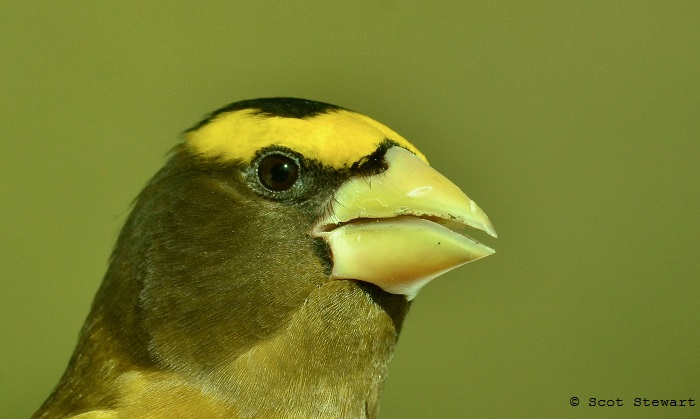
Evening Grosbeak male (click image to view others)
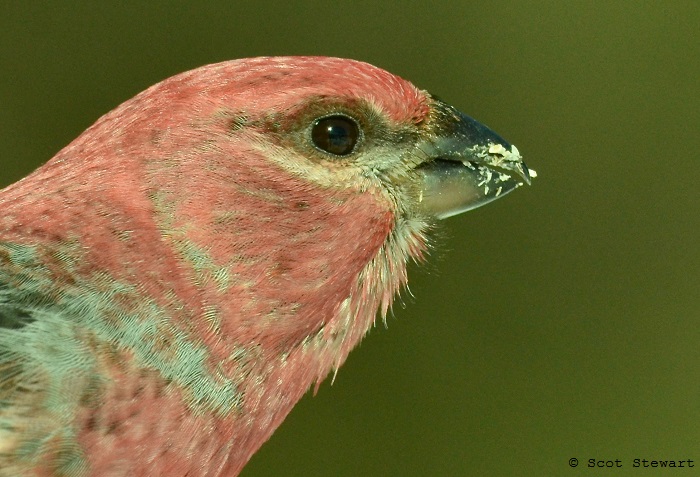
Pine Grosbeak male (click image to view others)
2.9.18: Hi! February continues to be an amazing, beautiful and busy month! Longer sunny days have been a welcome respite from the darkness of January! With the clear, windless, sunny days and clear nights Lake Superior continues to freeze over, with more than 50% frozen now. So the lake effect snow machine is shutting down.
Scanning lots of slides during these winter days with new images added to white-tailed deer, coyotes, mountain goats, trees (my favorite sugar maple through the seasons now in North American Species), Moose, leaves, Olympic National Park, Lake Superior, and new categories for gray fox, and deer mouse. Scenics include Mesa Verde, Lake Superior and Alaska.
Just a note again about later this month. I will be doing a program for LSAA on February 20 at 7:00PM in the basement of the Peter White Public Library on abstracts, macros and a few new shots. I hope to see you there!
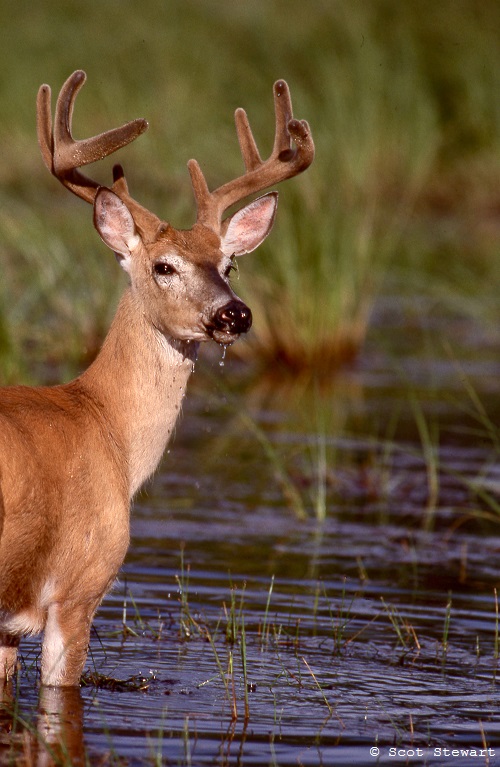
White-tailed Buck in Wet Meadow, Glacier National Park (click image to view others)
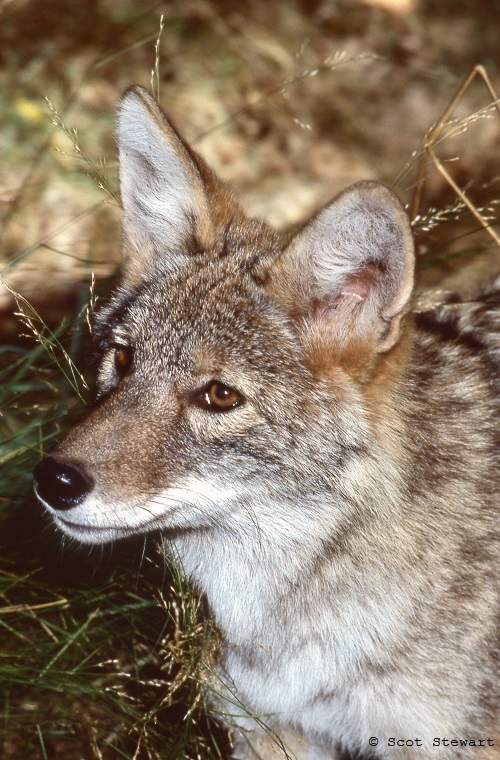
Coyote Portrait (click image to view others)
2.5.18: Hello again! Below are a pair of images of pine grosbeaks from yesterday. They are one of my favorite birds, brings great splashes of color in the middle of winter. Their tameness and soft warbly calls make them seem like long lost friends back for another visit.
Looking back at the barred owl shots posted yesterday and marveling at how the hemlock stand where it hunted was such a magical spot on a cold, snowy day. It added so much to the atmosphere of its hunting. There were several red squirrels it was watching, mostly without hope of a meal, even when one had its back to the owl just four feet away. Could have sat all afternoon watching, trying to figure out its thinking and strategies.
Lots of new mineral images were added to the website with new minerals - including Pharmcosiderite, Arthurite, Riebeckite, Picrolite, Zoisite and Metavariscite, and new images to Siderite, Prehnite, Dioptase, Conchalcite, Dumortierite, Brucite, Stibnite, Vesuvianite and Silver. Mammals shots were added to Mountain goats, Coyotes, Southern Flying Squirrels, Marsh Hares and Striped Skunk.
Just a note again about later this month. I will be doing a program for LSAA on February 20 at 7:00PM in the basement of the Peter White Public Library on abstracts, macros and a few new shots. I hope to see you there!
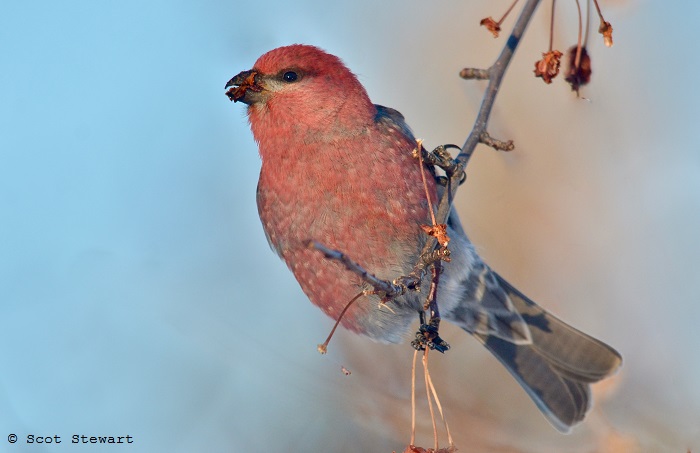
Pine Grosbeak male feeding in a Crab Apple Tree (click image to view others)
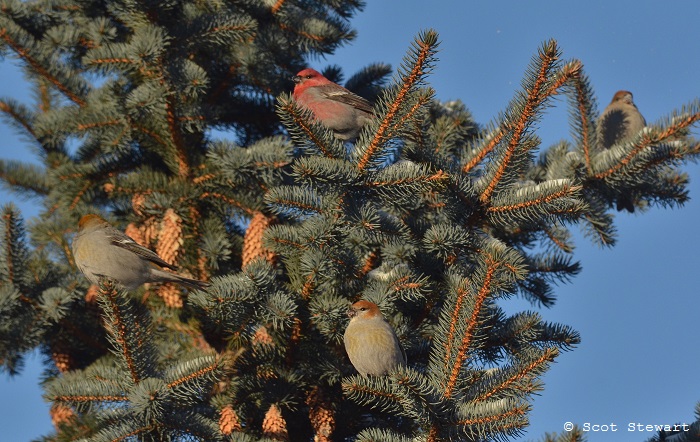
Quartet of Pine Grosbeaks in a Spruce (click image to view others)
2.4.18: A belated Hapy New Year to you all! I can't believe it is into the first week of February already. The past month and a half has been very busy! Besides great family events and writing, I have opened a show in the Lake Superior Art Asociation (LSAA) Gallery in the basement of the Peter White Library (PWPL) in Marquette that will run until the end of February. It is a bit of a retrospective show with some images from the days of wolves, birds, travels and some new work. I also did a program at MooseWood on U.P. natural history and led a walk for visiting students from Central America on Presque Isle and did an owl program in Marquette last Friday followed by a look for owls - we found a pair of great horned owls in north Marquette!
I was fortunate to be able to stop in at a friend's home yesterday who has a visiting barred owl showing up at his yard periodically. Below are some of those photos and the link to the rest. Today, in the continuing cold - aroudn 5 above, I found aa half dozen pine grosbeaks in town and will post some shots of them tomorrow. We have had some really cold stretches this winter, but it has been a beautiful season!
I will be doing a program for LSAA on February 20 at 7:00PM in the basement of the Peter White Public Library on abstracts, macros and a few new shots. I hope to see you there!
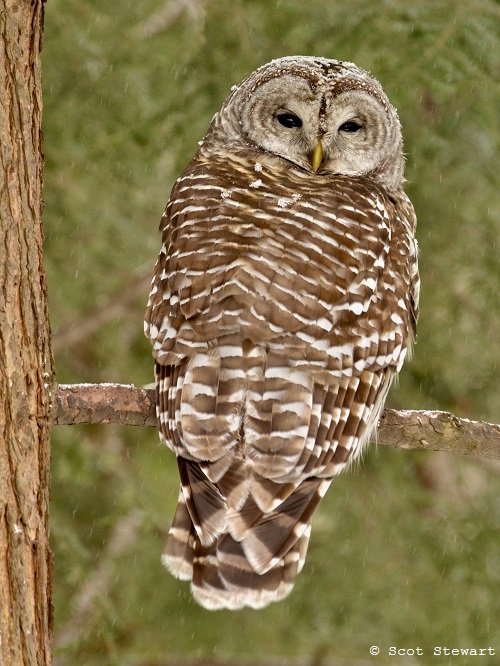
A hunting Barred Owl in the Hemlocks (click image to view others)
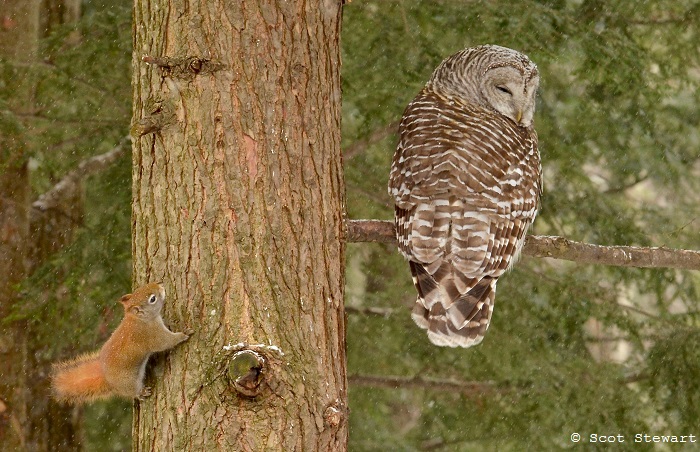
A hunting Barred Owl getting checked out by a Red Squirrel (click image to view others)
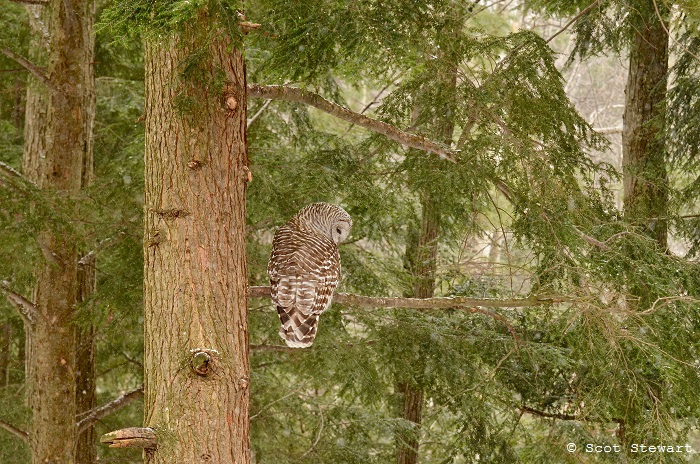
A hunting Barred Owl in Snowy Hemlocks (click image to view others)
12.16.17: Yesterday was Marquette's 70th annual Christmas Bird Cout. Not sure how many I have been a part, but I have done a bunch. I am always amazed at what is in the area, and what can be found if you send a dozen or so great birders out to find them. Alec Olivier and I searched the north side of a circle with a 7.5 mile radius, the protocol for the count. It is always great to bird with Alec because of his keen abilities to see and hear distant birds. I always get to see more when I am out with him.
We ended up with 28 species in our area plus a bit of "poaching', looking in the adjacent quarter. There we heard about a sharp-shinned hawk feeding on a starling in a friend's driveway. We also found both species of crossbills in our amazing city park, Presque Isle, more than 100 goldfinches feeding on spotted knapweed seeds in a field and a hooded merganser with over 400 mallards. Elsewhere in town there were three snowy owls, lots of bald eagles and pine grosbeaks. Still waiting on the final totals, but we will have somewhere around 50 species reported. We also count other species during the "Count week". Found a pair of glaucous and an iceland gull today so will see if they were around to be counted yesterday.
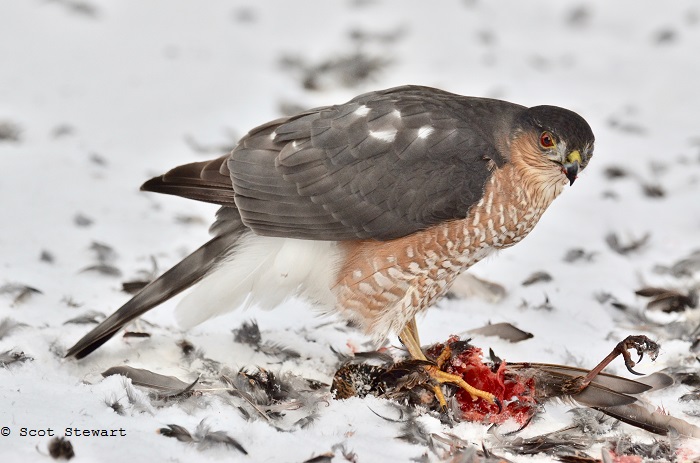
A Sharp-shinned Hawk feeding on a European Starling (click image to view others)
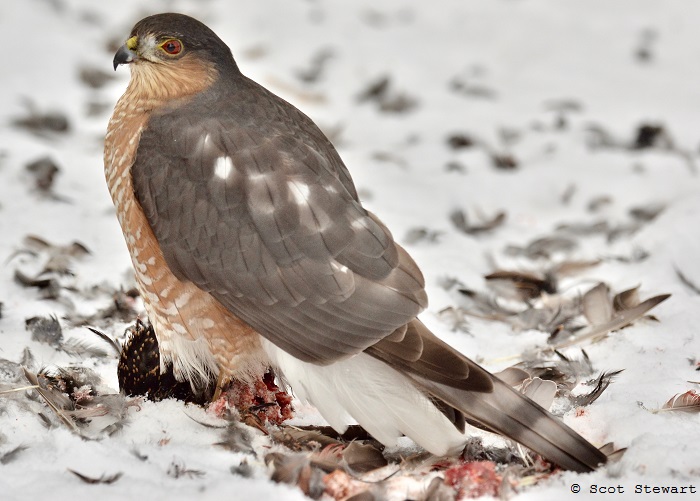
A Sharp-shinned Hawk feeding on a European Starling (click image to view others)
12.1.17: Autumn of 2017 has been a wonderful time in the Upper Peninsula. Weather has bee mostly mild, with several big storms of wind and some rain and snow. Pine grosbeaks, pine siskins, crossbills, common redpolls and snowy owls have invadd from the north despite the warm weather. We have had around a foot of snow this fall, but little is left at the moment.
I have found some late slime molds adding to a great seasson for them around school but one cold night, just one night around 20 degrees took care of nearly all that was left of the tree leaves still bearing any color. It was a bit disappointing but there have been some other great swurprises.
Traveling home Thanksgiving weekend we stopped at Bond Falls in Ontonagon County to take a peak at it in early "winter". Found some ice along the edges and plenty of water. Later we began driving toward a rainbow, just a small strip near the horizon. As we reached Ishpeming Township the sun must have hit 42 degrees above the horizon and the rainbow filled out, doubled and apparently tried to triple. We turned onto a small side road where we could stop, enjoy the view and photograph. The inside of the main rainbow contained additional layers of color. It was spectacular - a November rainbow! It prompeted the additona of a Rainbow category with the Aurora. I have also added new scans of old shots of the Aurora, clouds - lots of clouds, Lake Superior - Marquette, leaves, prairie dogs, wolves, moose and others.
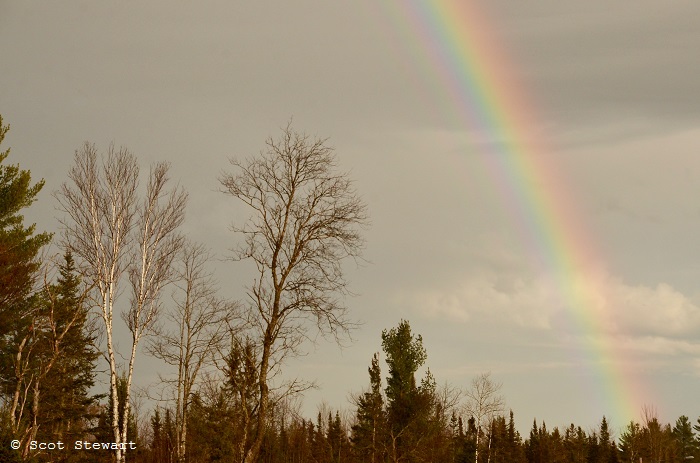
Rainbow over the North Woods (click image to view others)
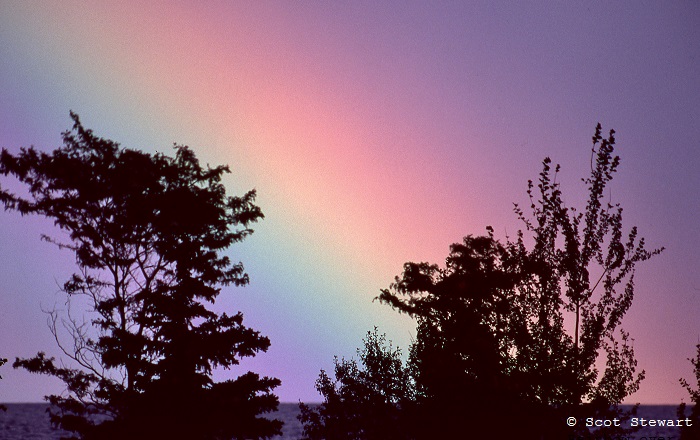
Rainbow over Lake Superior (click image to view others)
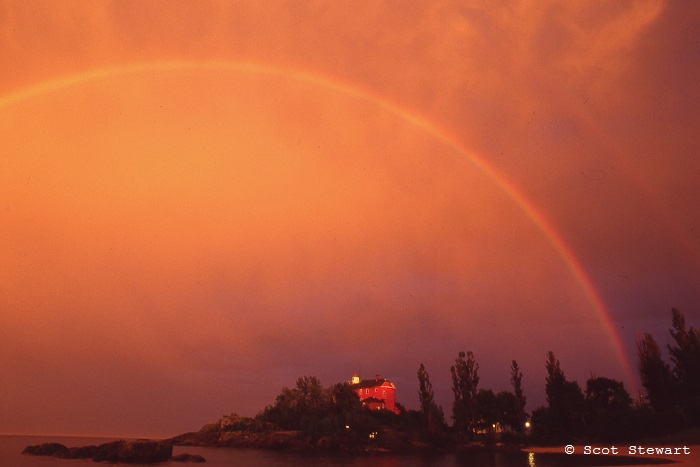
Rainbow over Marquette Lighthouse (click image to view others)
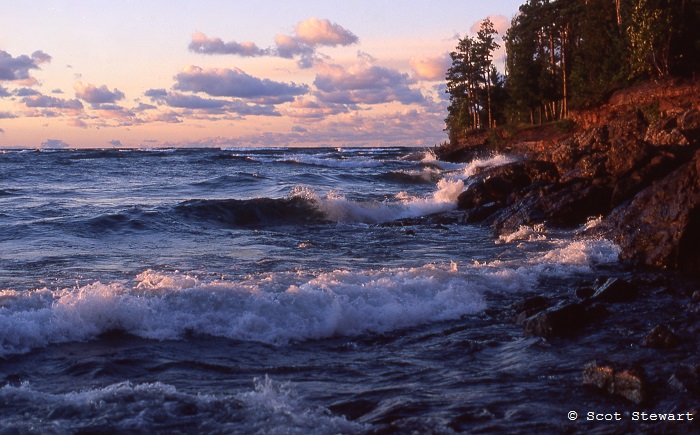
North Wind at Presque Isle (click image to view others)
11.10.17: I am beginning to know what Wilson Bentley felt like when he worked on his 46 year long collection of snow flakes, from 1885 until 1931 until when he finally published 2500 photographs in Snow Crystals, and his sudden death from Pneumonia a few months later after walking hom in a blizzard. Using an extremely large camera he perfected a system of catching individual snowflakes on black velvet and photographing them before they melted or sublimated back into vapor. Even though his equipment was primative by today's standards, his drive to photograph them resulted in a collection of over 5000 images. He spent two years perfecting his techniques using a microscope, bellows and camera.
I have not had much success with snow flakes but have become preoccupied with tree leaves, especially in fall as they change colors. In the late fall of 1981, I walked home one afternoon from school regretting the season was nearly over. I felt I had missed seeing and photographing most of the autumn colors. I remember kicking up a bright maple leaf on the ground and marveled at the color it retained, even as it decomposed there. It made me wonder how many more were still around, waiting to be noticed. The following day I picked up a few and began trying to photograph them. It quickly became apparent the best way to see the deep colors was by holding them up to the light. And so I began experimenting, and searching for more colorful, most interesting designs. The detail within a a small section, usually about the size of a postage stamp, often looks like a satellite view of a river using infrared technology. Small insects, miners and skeletonizers, leave other interesting patterns.
After photographing them, I often place them in a plastic bag in the fridge and look back at them in subsequent days to see how time continues to breakdown their pigments. This year has yielded some phenomenal patterns. Below are a few with links to the rest on the Other page under trees and leaves.
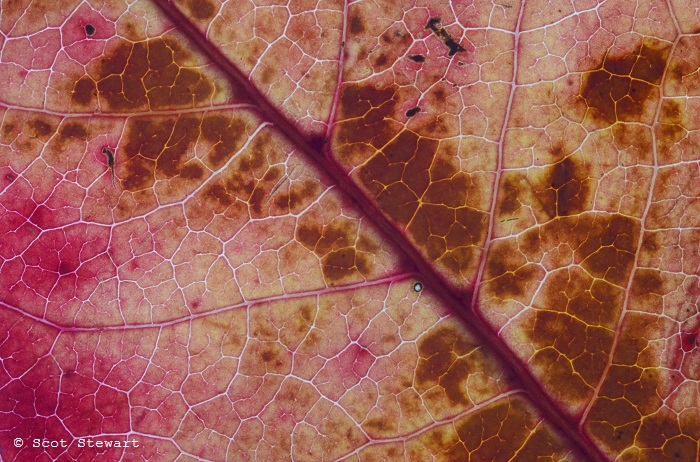
Red Maple Leaf in Decline, a few days after collecting (click image to view others)
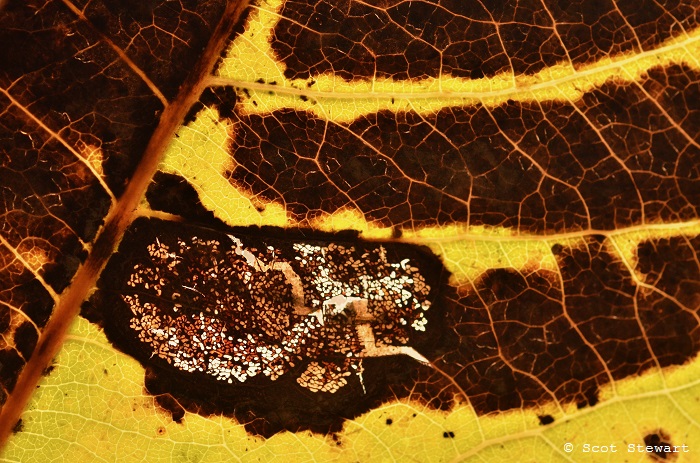
Big-toothed Aspen Leaf with Skeletonizers (click image to view others)

Silver Maple Leaf (click image to view others)
10.26.17: This fall has been turbulent, fast and delightful. Unusual weather continued to be a prominent theme, with record setting warm temperatures followed by a huge low pressure system this past Tuesday, creating some of the biggest winds and waves over Lake Superior in a long time. I did get a few photographs of the waves on the Big Lake, found in the Upper Peninsula "Autumn" category of the "Other" page but they were under light conditions that did not lend themselves to great shots for me. One of the results of the 50+mph sustained winds was the downing of many trees, and another the stripping of lots of tree leaves nearing the end of their fall color run. While making a trip around town to find some new oak leaves for close-up I did notice a grebe in the Lower Harbor. The stop developed into a chance to photograph both a horned and a red-necked grebe and a common mergansers feeding between the docks. All seemed rather comfortable close to the docks and the light was quite good. Great to watch them foraging together and seeing what they came up with. I have found them catching sticklebacks, perch and sculpin. Below are links to each of the species.
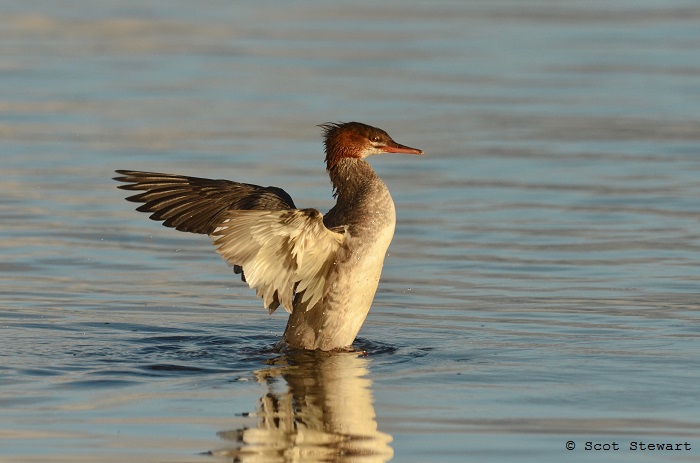
A common merganser stretching its wings. (click image to view others)
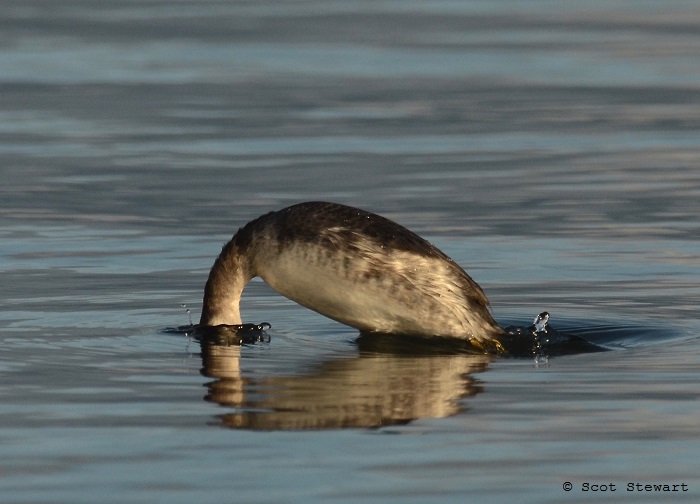
A horned grebe diving. (click image to view others)
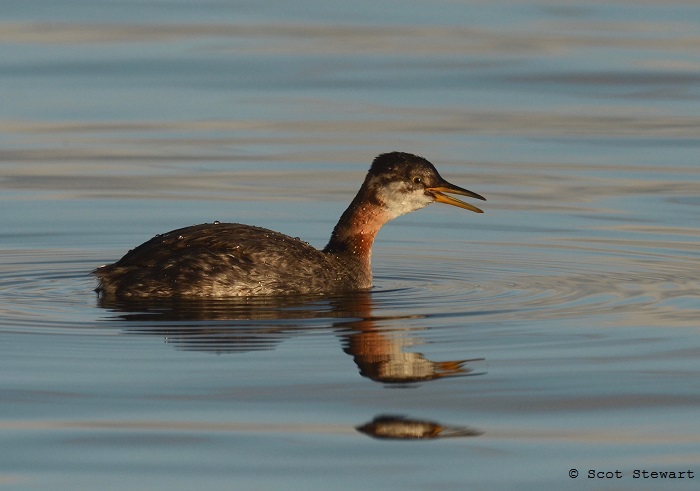
A red-necked grebe (click image to view others)
10.25.17: Made a trip up to Echo Lake north of Marquette on Saturday. First time there in nearly 30 years! The property is now managed by the Nature Conservancy and is a truly beautiful, rugged area. The lake has a great, rocky white pine-topped peninsula jutting into it with a huge beaver lodge on its side. While the fall colors had unfortunately peaked, it was still a gorgeous 75 degree F, sunny day with ruby meadow hawk dragonflies zipping around, some as pairs.We found some amazing northern red oak leaves with beautiful color pattern, some of the best I have seen in a long time. One even had a group of leaf skeletonizer and miner markings where larval insects had eaten patterns in the leaf cells between the two cuticles (outer layers of the leaf). I brought them home, but in just two days in the fridge, the colors faded immensely, to my dismay. Did get a few shots with links below.
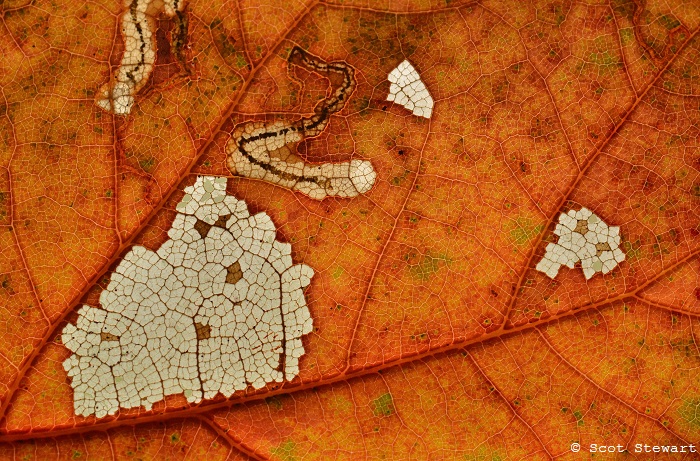
Northern Red Oak Leaf with Leaf Miners and Skeletonizers (click image to view others)
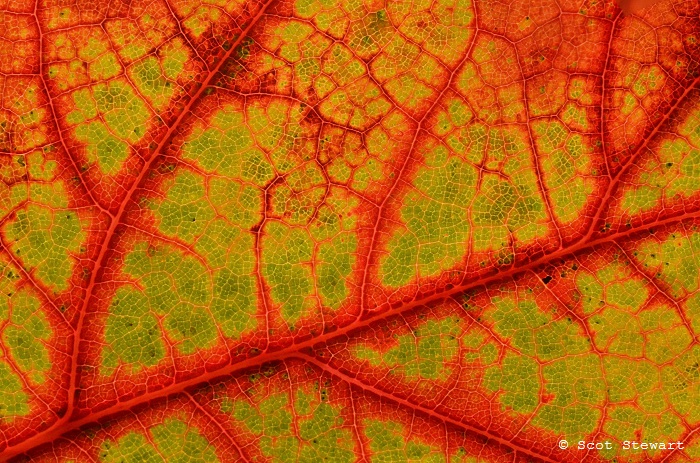
Northern Red Oak Leaf (click image to view others)
9.29.17: Recently I found an area near school under eastern hemlocks and white birch where there were a number of fallen logs - birch and aspen, now missing their bark. Damp and dark, continuously wet with the recent and now intermitten rains the logs looked like promising places to look for fungi. The logs were filled with slime molds or covered with some bracket fungi. The slime molds were amazing as noted here earlier. The bracket fungi were ones I had seen before, but now seemed vibrantly "purplish". I shot some images, and in attempting to identify them for placement on the website found they were called violet-toothed polypore and their undersides appeared to have purple tooth-like structures. So I went back, curious to see what the other sides looked like. They were amazing! I shot more than 60 images - mostly while laying under this log that was propped up by a branch, about two feet off the ground. I returned the following day to shoot again and while again laying on the ground heard voices. A couple was walking a dog on a nearby trial, and approached, somewhat cautiously. I jumped up and told them they should see these amazing fungi and showed them some images on my camera. They appeared "relieved" - they said they though I had falled or was homeless (and sleeping under the log) and did not know what to expect. I have been continuing to return to this spot and have continued to find quieter times and amazing new developments on the logs.
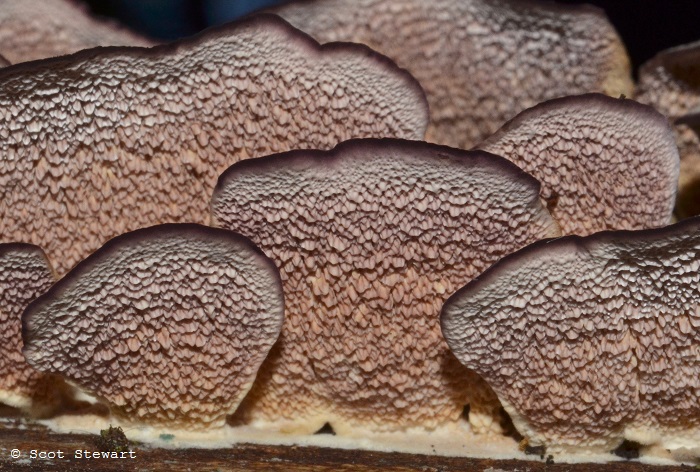
Undersides of Violet-toothed Polypore bracket fungi. (click image to view others)
9.25.17: Since I wrote a story on dragonflies and damselflies last month for the Marquette Monthly, my apprecication and awareness of them has increased. Their aerobatics and design are true magic. I watched darners hunting on the shore of Lake Superior earlier this summer and have tried to grab some close-ups to show the design of their compound eyes and their overall construction as flying insect predators. The latest are at the end of the gallery.
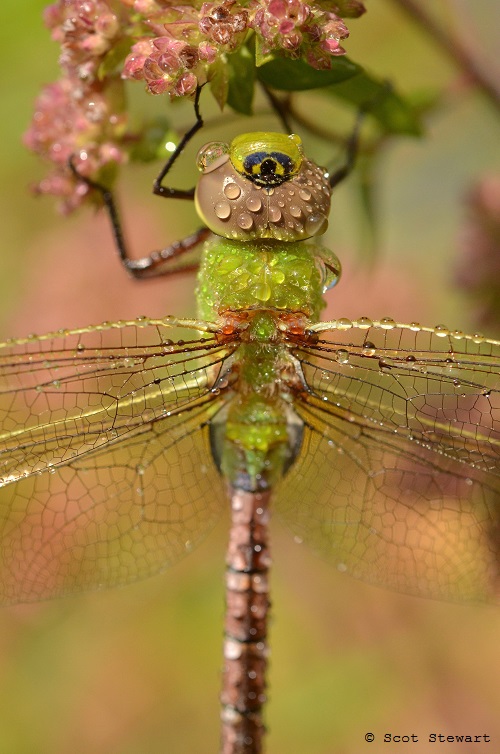
Common Green Darner (click image to view others)
b>9.22.17: Tell someone you are excited about slime molds and I can guarantee you, they will give you an odd look. During the amazing show of fungi last fall in the Upper Peninsula I also found some amazing slime molds. This year has been even better and I have had a great opportunity to watch some growing on fallen logs near school. It has been difficult to restrain my enthusiam for them and I have probably bored a number of people rambling on about them. See some shots and decide what you think.
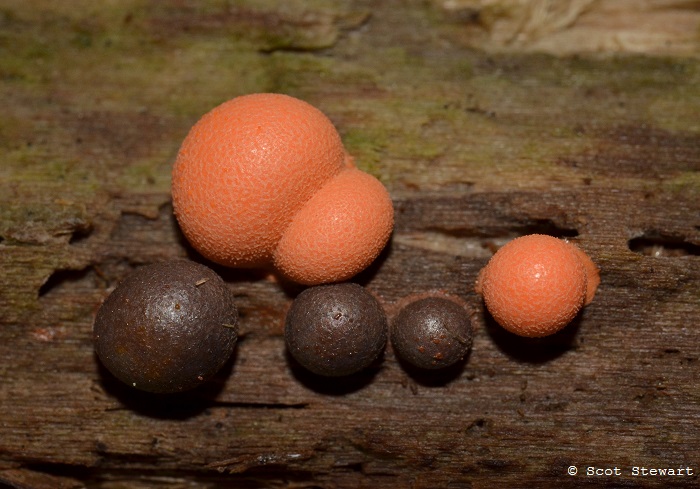
Juvenile and Mature Wolf's Milk or ToothPaste Slime Mold (click image to view others)
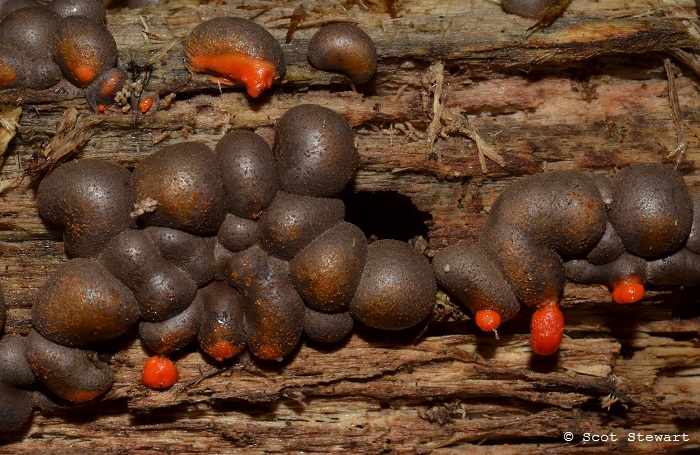
Mature Wolf's Milk or Tooth Past Slime Mold with Aethalia (click image to view others)
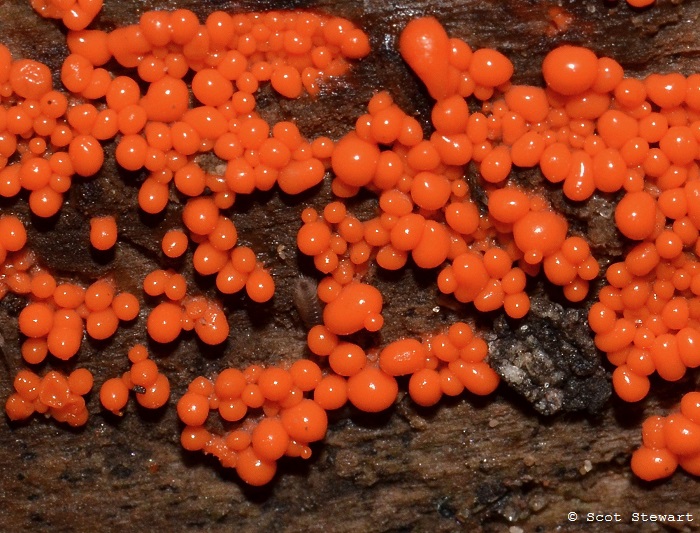
A species with no common name. Latin name is Hemitrichia calyculata (click image to view others)
8.28.17: My wife and I were fortunate enough to be able to make a two-week trip around Lake Superior this month, revisiting old favorite spots and exploring some new ones. Our weather was true true to the North, cool, and often wet, but the landscape, animals, plants and geology filled wioth signs of the PreCambrian Shield, and as we rode through most of the North Shore of Ontario, filled with aspen, spruce and wildlife of the Boreal Forest. I had jsut finished a story for the Marquette Monthly on dragonflies and damselflies so I was excited to photograph some meadowhawks and darners, getting some really close looks at their compound eyes, and their conformation in flight, especially they way they held their legs. The meadowhawks looked like rubies, but seemed out of their range. Amber spots on their wings leanwed away from white-faces. The darners were hunting along the Lake Superior shoreline in a large group and were a challenge to catch on the wing, but really fun to watch. I'll post more of the trip soon, including images of the amazing Lake Superior shore, other insects, a few mammals and lots of plants, including some Arctic Relics, plants normally found closer to Hudson's Bay, but happy along Lake Superior after being dragged down by the glaciers.
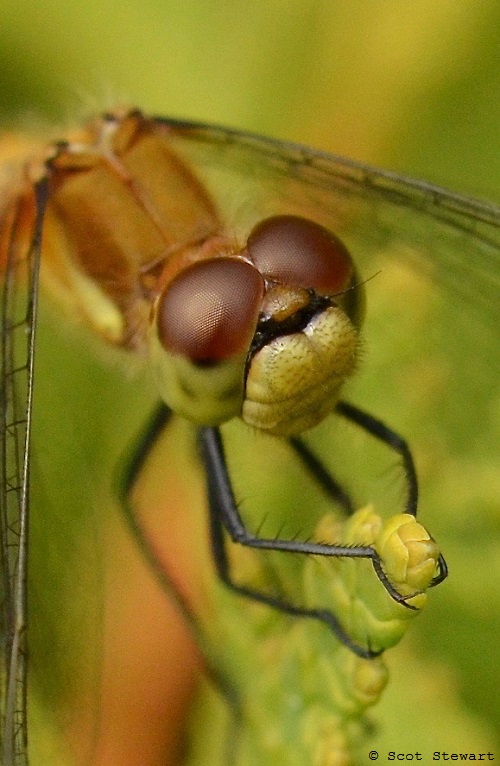
Female "Red" Meadowhawk (click image to view others)
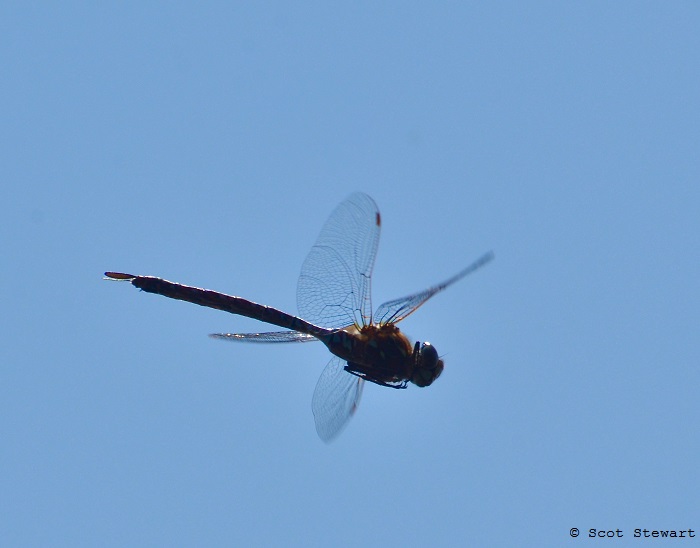
Canada Darner in Flight (click image to view others)
7.31.17: I am always delighted when landscaping the yard attracts more wildlife. I planted some scarlet beebalm in an open area of wildflowers in the yard and with the help of a wet spring got a great row of flowers to attract ruby-throated hummingbirds. Currently a female and one youngster are visiting regularly and apparently fining enough other food to by-pas the hummingbird feeder most days. Been great to watch a rose-breasted grosbeak, brown thrasher cardinals, chickadees, hairy and downies around all afternoon. All together, had 28 species in and around the yard yesterday!
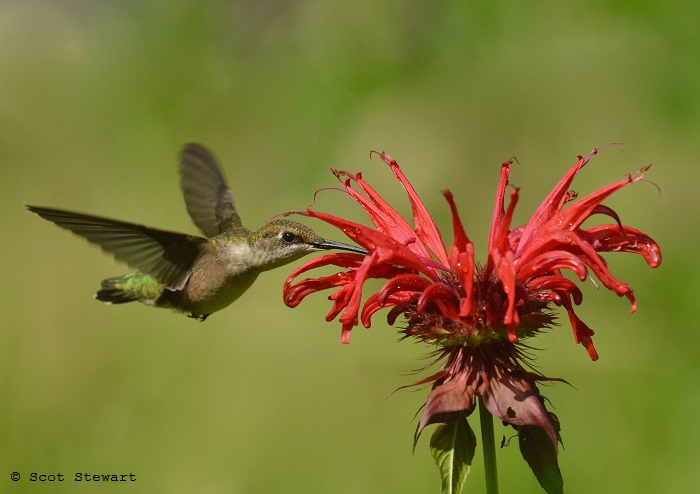
Ruby-throated Hummingbird visiting Scarlet Beebalm (click image to view others)
7.30.17: Summer is such a great time of year for me - more time to photograph and more colorful subjects to discover. Breakfast - and who knew fruit had a bite?
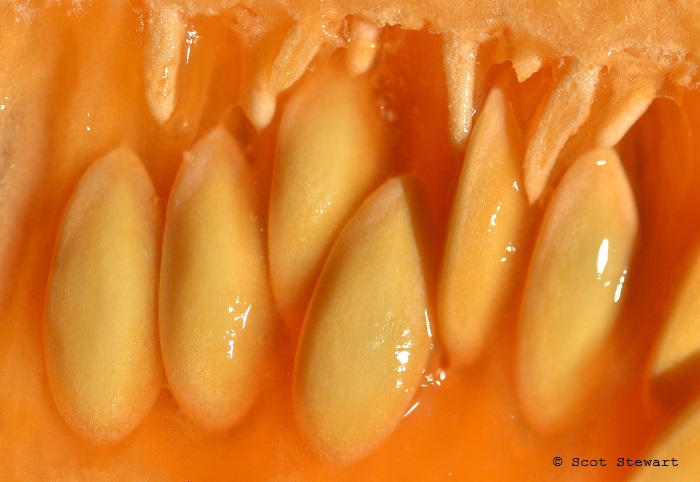
Cantelope "Teeth" (click image to view others)
7.21.17: The past few weeks have provided a little time to do some m ineral collecting - made it on two great trips to the Republic and Champion Mines with the Ishpeming Rock and Mineral Club. Collected some neat pieces for the classroom of brecciated specular hematite-barite-quartz crystals at Republic and some interesting molybdenite-magnetite and pyrite-magnetite at the Champion. Have added some other mineral pictures of realgar, plumbogummite, aurichalcite, brochantite, calcite, celestine, crococite, cuprite, cyanotrichite, fossils, gold, gormanite, hematite, psilomelane, zinkecite too.

Realgar with Quartz, Pyrite and Galena (click image to view others)
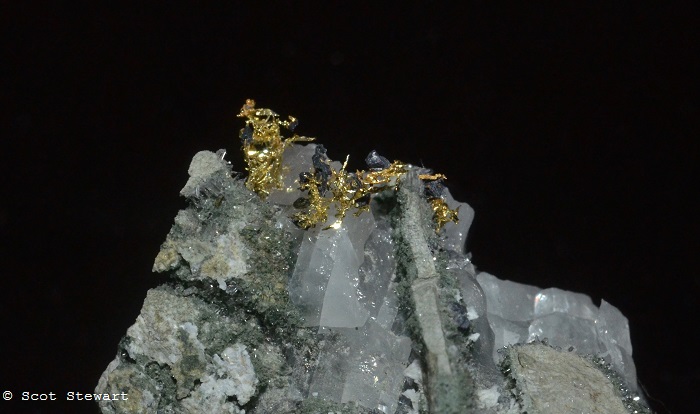
Gold with Quartz (click image to view others)
7.15.17: Travelling to Illinois to see family recently provided an opportunity to get out and wander a few prairies, especially the Orland Grasslands in Cook County. It is a beautiful restored area with lots of dickcissels, eastern meadowlarks, grasshopper, field and Henslow's sparrows. It is a step back in time to walk up a hill surrounded only by tall grass prairie, and in the spare momentss devoid of overhead jets really seems like the 19th century there. The compass plants were just starting to bloom and were spectacular. I also roamed through the LaPorte Road Forest Preserve and the Plank Road Trail in Will County. The Plank Road is a former railline, now a trail with restored prairie, a good friend Dr. Bill Zales and my father helped establish. Added most all the prairie plants in the wildflowers from this trip. From the Laporte's great birds was able to add to the eastern bluebirds, indigo buntings, field sparrows, house wrens and eastern towhees.
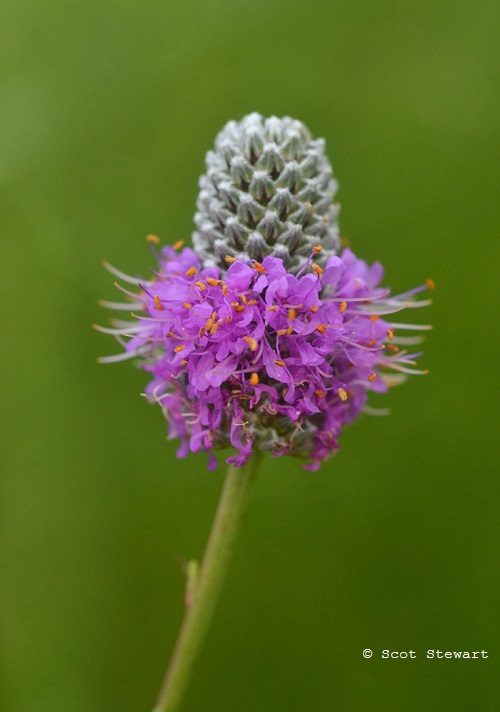
Purple Prairie Clover (click image to view others)
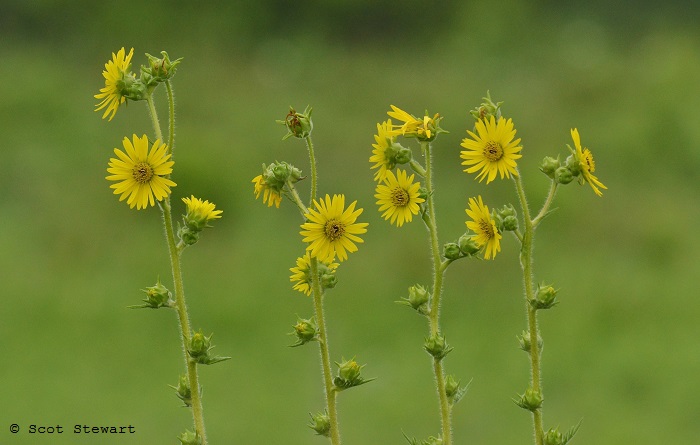
Quartet of Compass Plants (click image to view others)
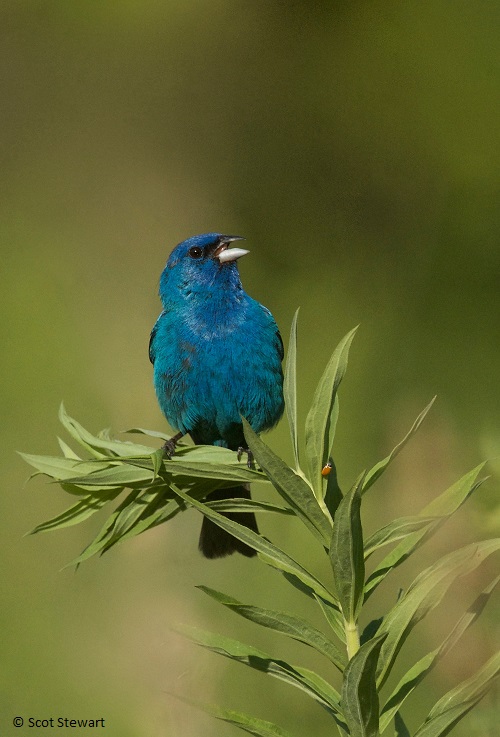
Indigo Bunting on Goldenrod (click image to view others)
6.27.17: This spring seems to have been good for warblers, despite the wet, cool conditions prevailing most of this season. Despite the rain, blackflies have not been overly oppressive, mosquitoes lighter too, at least in some areas. Trips to Kate's/Ross's Grade in southern Marquette County, Peshekee Grade in the western part of the county, and areas in Alger County provided some great opportunities to hear and occasionally see black and white, Canada, Nashville, golden-winged, magnolia, chestnut-sided warblers and redstarts. Also have run across yellow-bellied flycatchers, rose-breasted grosbeaks and common ravens with some great unique calls. At the intersection of Co. Rd 438 and Ross's grade found a female evening grosbeak with a small family of purple finches gritting - picking up sand amd small gravel to aid digestion. They were persistent and remained at the same spot for more than half an hour.
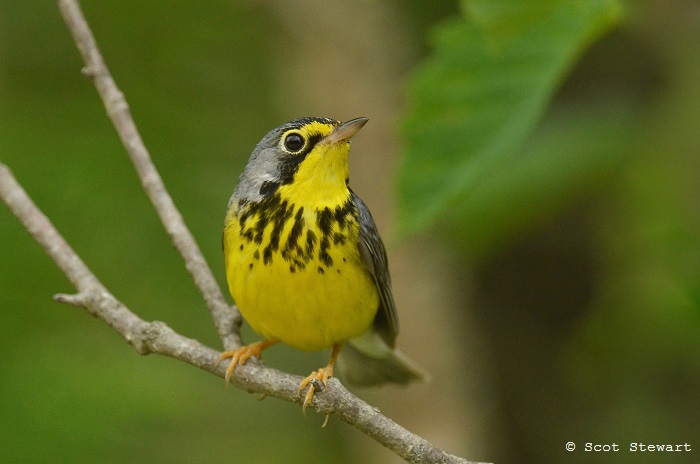
Canada Warbler (click image to view others)
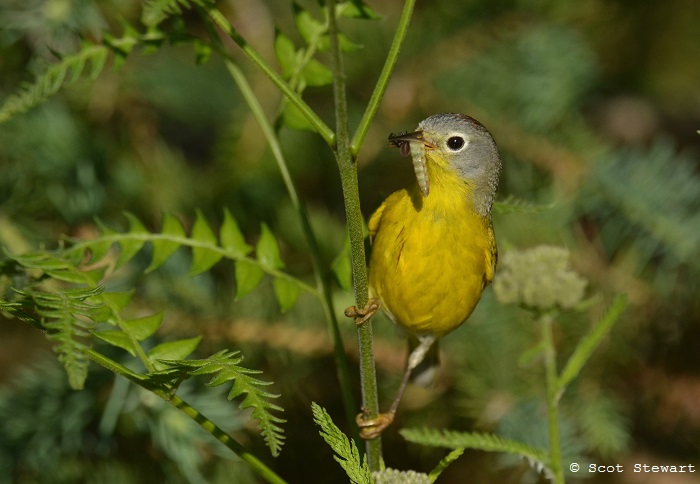
Nashville Warbler (click image to view others)
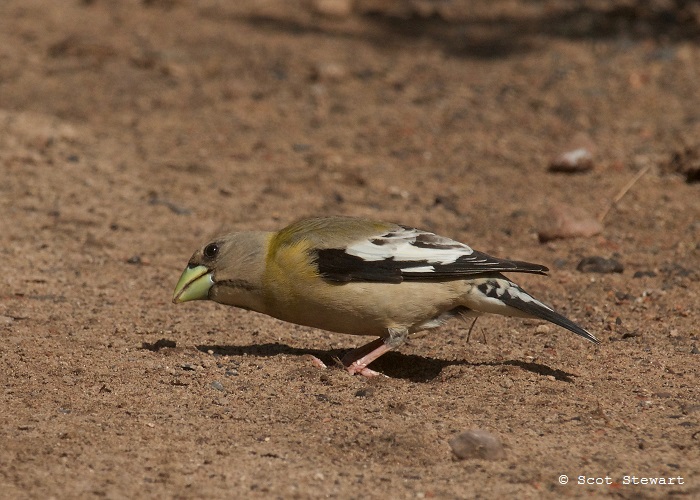
Evening Grosbeak gritting - consuming sand to help with digestion (click image to view others)
4.22.17: The season has inched along in lurches and backslides. Each spurt of warmthe coaxes a new sprout or bud to unfurl and reveal some delicate new jewel. Took a run out to Laughing Whitefish Falls Scenic Site State Park in Alger County. I went looking for the blossoms of the round-lobed hepatica I used to find there. No luck. We did visit the falls and found some beautiful delicate blossoms of the American hazelnut. I really am drawn to tree flowers, so overlooked in the spring. The purple female flowers of the hazelnut are amazing! The size is difficult to discern because the spider web is from a really tiny species.
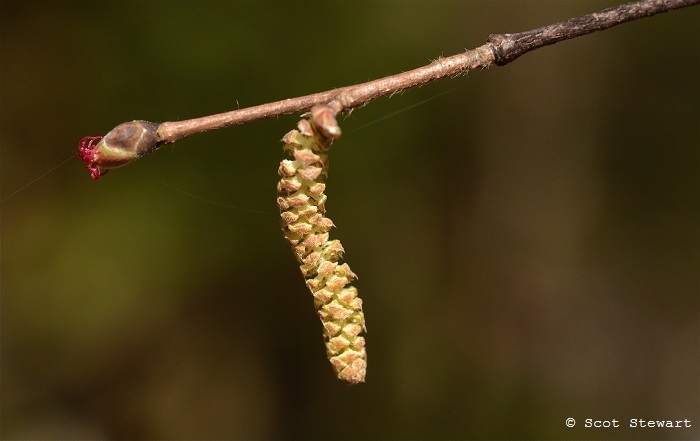
American Hazelnut Flower (click image to view others)
4.6.17: Spring migrants are arriving at a great pace in the Upper Peninsula, making each day a present to be opened to see what is inside! Made a trip around town in the late afternoon. It was extremely windy, with gusts to 30mph out of the south east forcing many birds into quieter locations. Ducks were all hunkered down near vegetation, except for some mallards put up by an adult bald eagle along the Dead River near the mouth on Lake Superior. Hooded mergansers came flying in after the eagle left. A turkey vulture flying low near the lake seemed to really enjoy the winds off the water. I was delighted to find an American tree sparrow at a feeding station in the woods near the river but even more surprised to find a female American kestrel on apower line near the river. Merlins are relatively common around town, but the kestrels are usually easier to find in the open fields south of town. Can't wait to see what comes in next with the promise of more warm weather in the next few days!
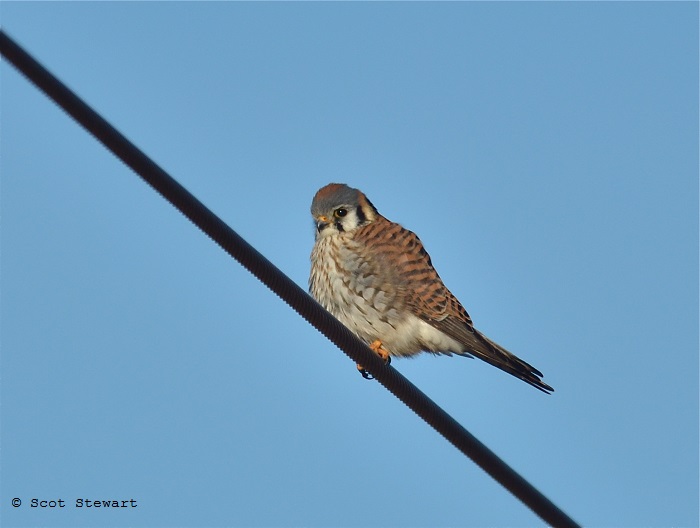
Female American Kestrel (click image to view others)
3.30.17: I love traveling in springtime. It is like slicing into a pie to see what will come next. I made a trip to northern Illinois this past week and although it was a cloudy nearly the entire time, warmer temperatures there were encouraging lots of springtime activity. Bird migration, being more advanced to the south brought turkey vultures, kinglets, yellow-bellied sapsuckers, northern flickers, dark-eyed juncos, eastern phoebes and other summer residents not seen since last fall. Leaf-out hadn't started yet but grass was greener, ponds all open and red-osier dogwood and other plants were sporting much more colorful bark. It was a shock to return to Marquette and still see so much snow in the yard. Continuing to add lots of new shots - spent some time with a song-filled Carolina wren in Illinois, ducks, including scaup, bufflehead, canvasback and American wigeon in Wisconsin and two different jelly fungi on fallen branches in Illinois. I alaso photographed red-bellied woodpeckers, black-capped chickadees, and white-breasted nuthatches in Illinois.Back home I have been adding more mineral images - amethyst, quartz with pyrite, esperite, azurite, stibnite with apophyllite,algondonite, silver, eudialyte and pseudomalachite. It is a busy time of year and my favorite.
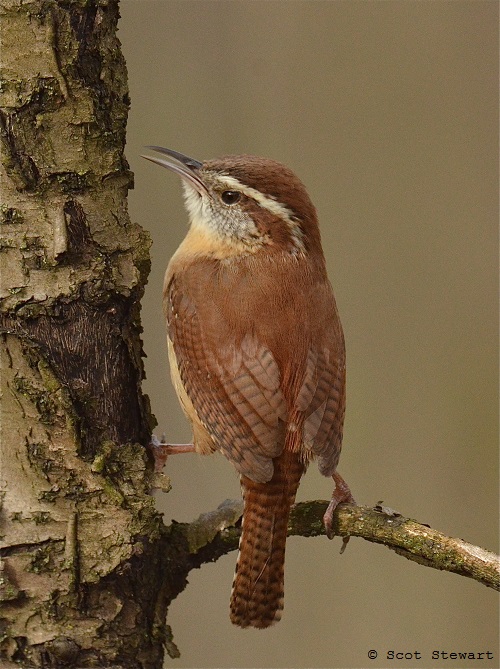
Carolina Wren (click image to view others)
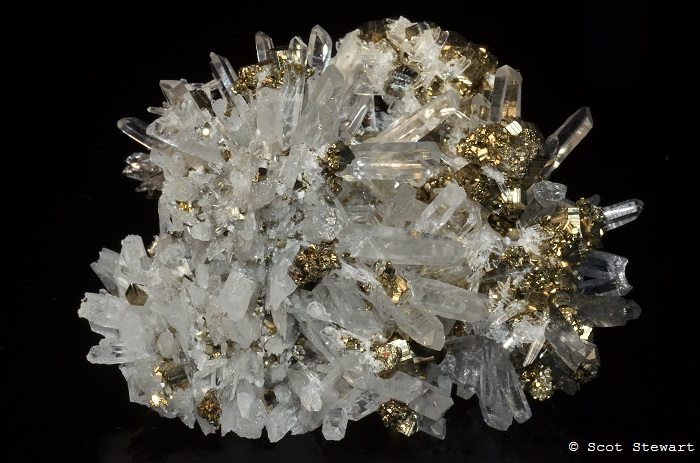
Quartz with Pyrite (click image to view others)
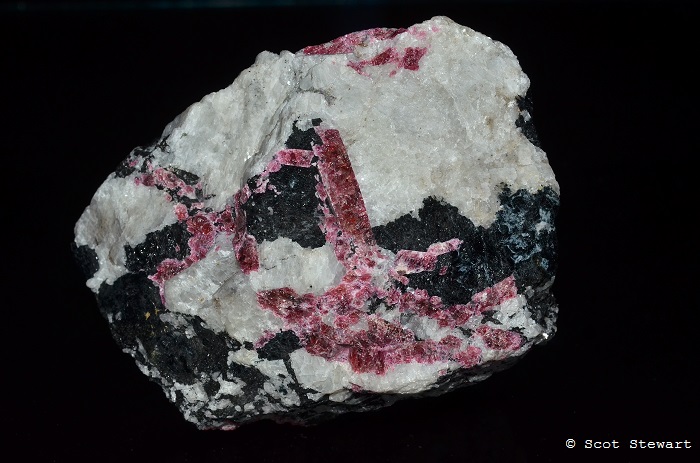
Eudialyte with Magnesio-Arfvedsonite and Albite (click image to view others)
3.6.17: Spring is being a tease. Up to the fifties some days, then back to winter and snowstorms and white-outs. Maple sap is running, northern cardinals, house finches and mourning doves are singing. Common redpolls are still hitting area feeders. It is a seesaw of emotions.Been continuing to scan photographs, many from trips out west to Glacier National Park, the Wind River Mountains, Arches and Yellowstone. See the national parks category on the "Other" page. I also found one of my favorite photos, a shot of fireworks over Marquette's Mattson Park from (yikes) 1987. A thunder storm had just passed and as I grabbed a shot a got a surprise I didn't realize until the slides came back. It is a single shot - no sandwich or major manipulation - just sharpening and a bit of cropping.
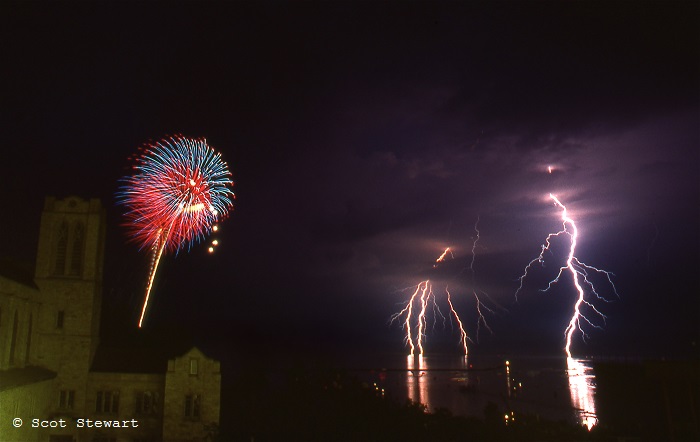
Fourth of July in Marquette (click image to view others)
1.7.17: Winter has seesawed back and forth the past two months from early autumn weather to brutal, freezing temperatures and heavy snow. It just can't make up it mind. This weekend the temperates have struggled to stay above zero and today a stiff 20-25 mph wind made it feel even more like the Arctic. A growing flock of bohemian waxwings (and a couple of cedar waxwings too) have been making the rounds to Marquette's large selection of crab apple trees looking for the perfect fruit. Waxwings like slightly smaller crab apples and often stop in the trees on the southeast side of the Marquette County courthouse in early winter. That is where these were.
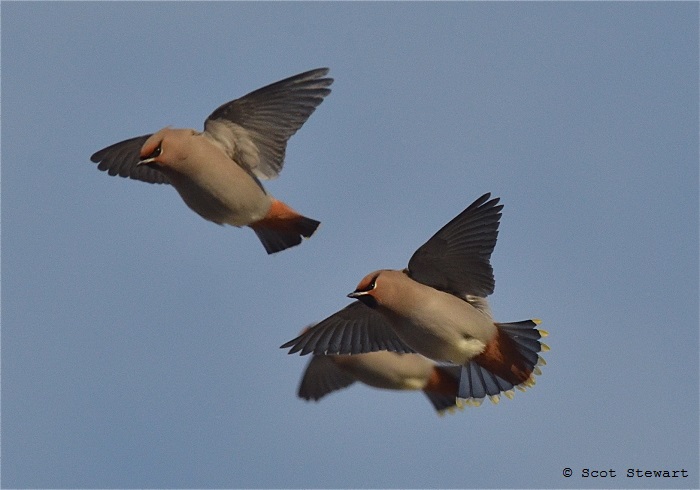
Part of a waxwing flock diving into crab apple trees for food (click image to view others)
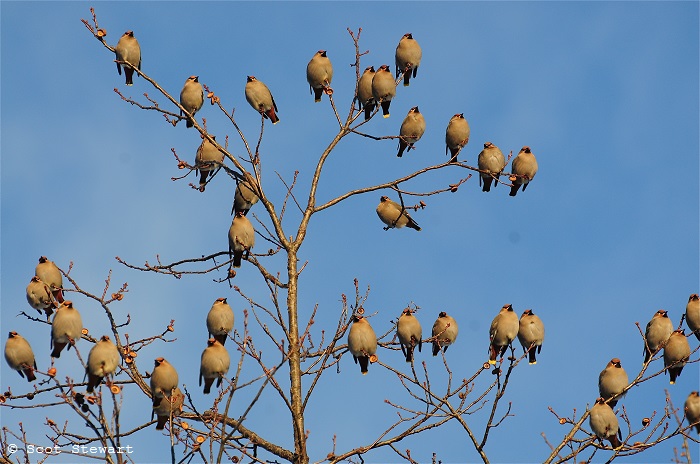
Group of bohemian waxwings roosting (click image to view others)
12.3.16: December eased onto the woods here like the rest of Autumn, quietly, and warmly. We have our typical gray overcast skies, but it is a relaxed weather that would still like to wrap itself around you. 40's have turned to 30's but it still seems mild.I have been excited by just about everything lately with a whim of pattern to it so I pulled out a box with a pair of chambered nautilus halves in it. An wonderful friend, George Wilson had given it to me more than 30 year ago but it looks brand new and beautiful. I have put a few shots on the Abstracts category on the Other Page today.
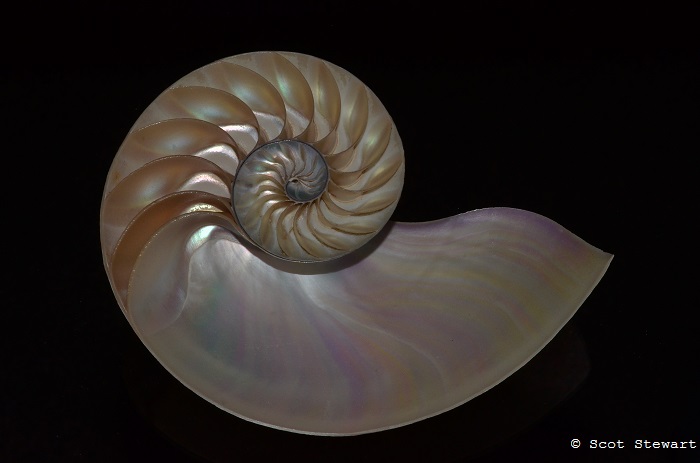
Chambered Nautilus (click image to view others)
11.29.16: Light is what photography is all about. How light plays on surfaces, influences colors makes every day a new experience. This is especially true when it comes to chemical structures in feathers, rocks and other beautiful parts of the world exhibiting special effects like iridescence or labradorescence, like Anorthite, also know as labradorite. This mineral. Ove Balthasar Beggild described the effect of light on this mineral this way, "Labradorization is the peculiar reflection of the light from submicroscopical planes orientated in one direction (rarely in two directions); these planes have never such a position that they can be expressed by simple indices, and they are not directly visible under the microscope." Look at a piece of this mineral and it may appear cream colored or brownish, but turn it a bit or shine a light on it and an amazing change occurs turning it into a dazzling display of gold, blue green or other iridescent like colors. I was able to photograph several and seemed to drift into an entirely new world. Capturing the effect is not easy, but when I could, I was in heaven!
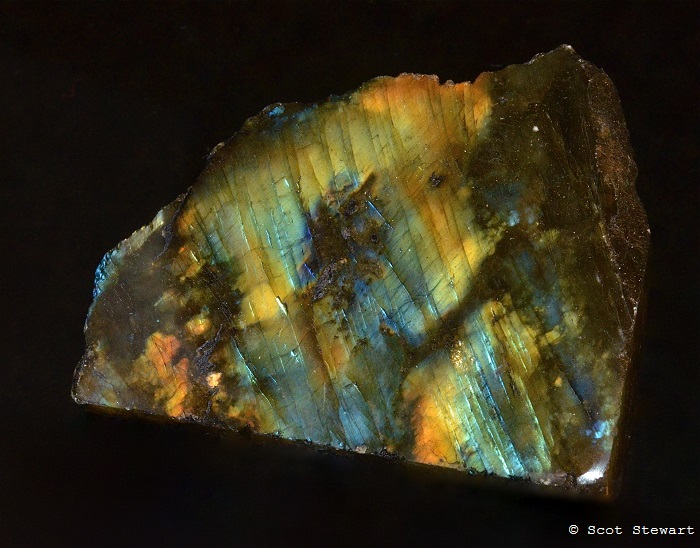
Labradorite (click image to view others)
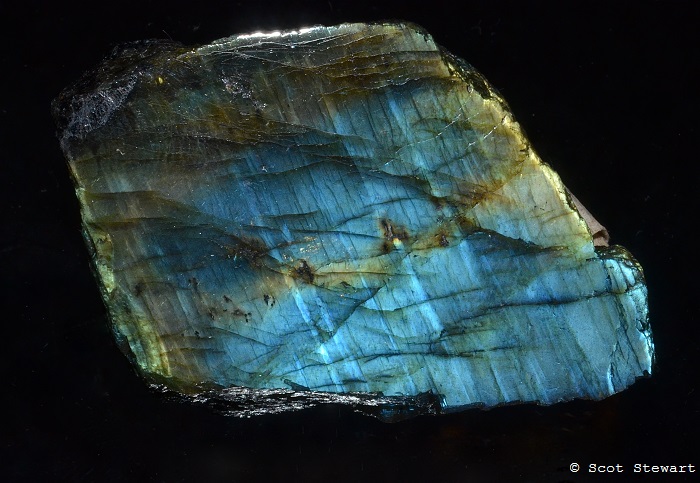
Labradorite (click image to view others)
11.16.16: Wow! It's mid-Novermber and there are still a ton of opportunities to catch late Autumn phenomenons. Today was a great, multi-project day. With the mild weather there have been a number of late migrants and vagrants across the Upper Peninsula. A late ruby-throated hummingbird, a late black-bellied plover and a cattle egret have been the latest great birds to be seen in Marquette. There are still some fall leaves around too. I found a really interesting northern catalpa in my back yard to photograph for my leaf detail series too with a really different white border to some of the leaf cells. Both with links are below.
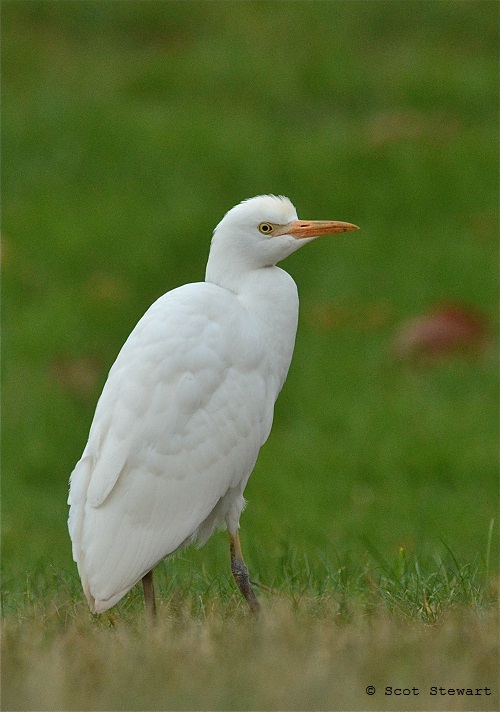
Cattle Egret in Marquette (click image to view others)
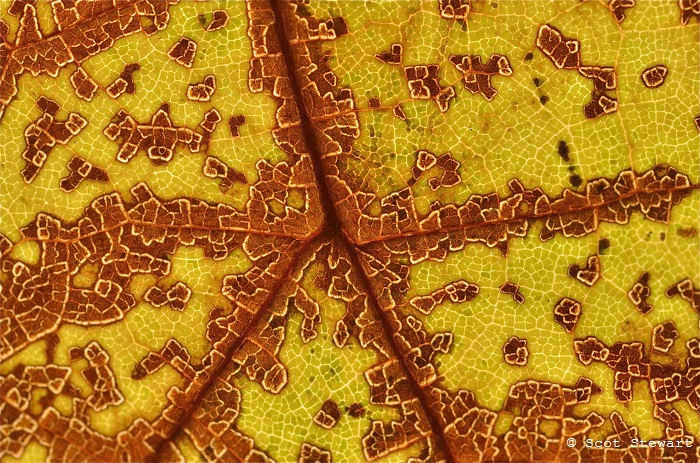
Northern Catalpa leaf close-up (click image to view others)
11.6.16: Hello! What an amazing fall here in the Upper Peninsula of Michigan! In the 70's today! Best kind of weather for visitors from the tropics. A fork-tailed flycatcher was found in Menominee Co. Thursday and great weather made it easy for it to stick around through the weekend feeding on insects (there were plent- shieldbugs, sulfur butterflies, dragonflies and midges) and red-osier dogwood (Cornus sericea) berries. These inmages are from Saturday November 5!
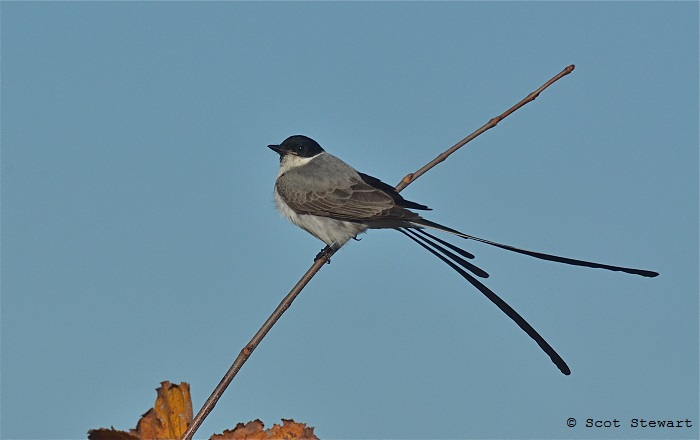
Fork-tailed Flycatcher with tail stretched and open (click image to view others)
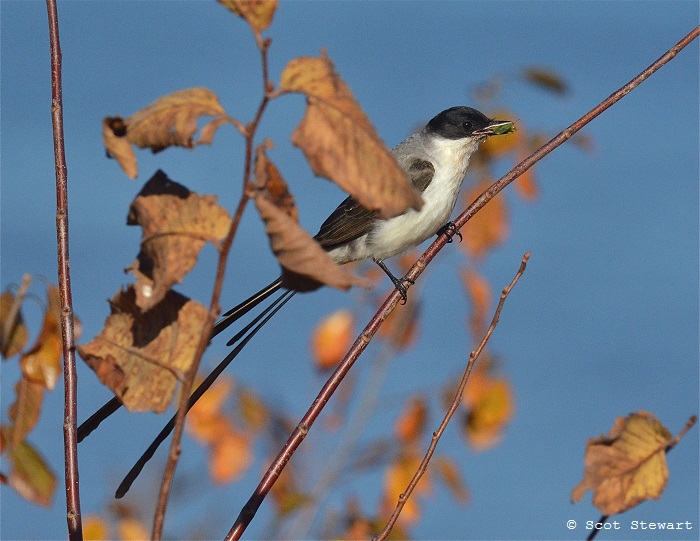
Fork-tailed Flycatcher with shieldbug (click image to view others)
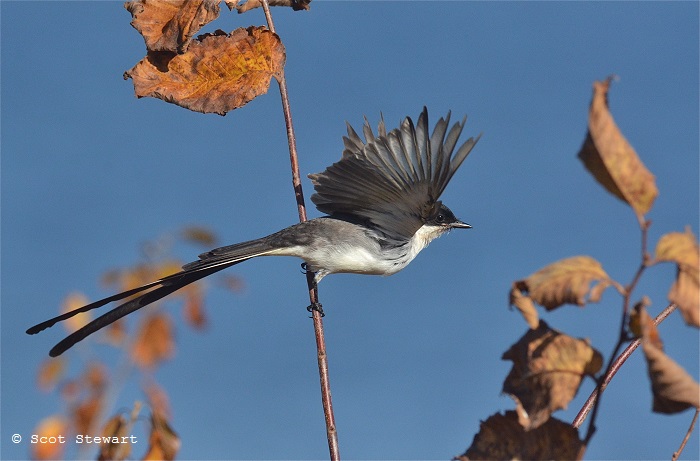
Fork-tailed Flycatcher taking off (click image to view others)
10.18.16: Late arrivals continue in Marquette this fall. REcently a group of nine black-bellied plovers and one American golden-plover arrived and have been seen daily at the mouth of the Dead River in Marquette. Their arrival is late in the season for both and their stay here has been longer than would be expected.
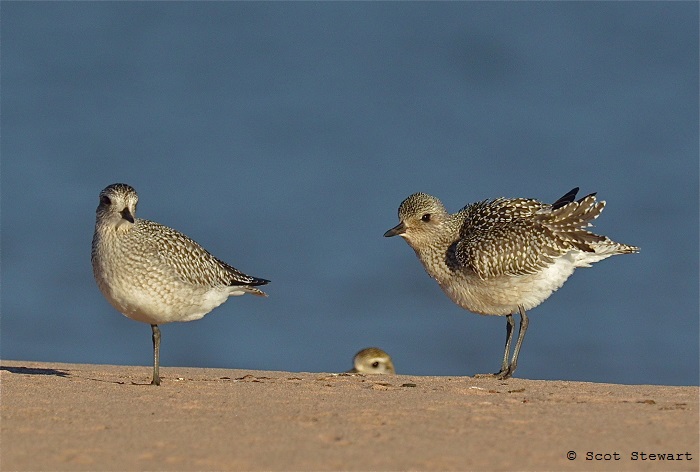
Two Black-bellied Plovers getting photo-bombed on the beach by a third (click image to view others)
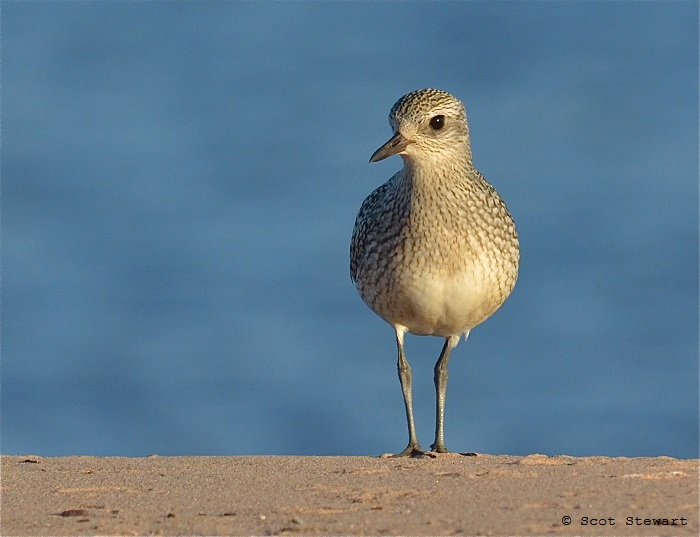
Black-bellied Plover (click image to view others)
7.28.16: Hello Again! Adding more 35mm scans and a few new shots to the website. A great number of wolf images are now added to the Others page, along with some of my favorite water images to the Lake Superior & Water section. Some new minerals, Clinohedrite, Babingtonite and Diopside have been added with new images of Rhodonite, Arsenopyrite, Hematite.
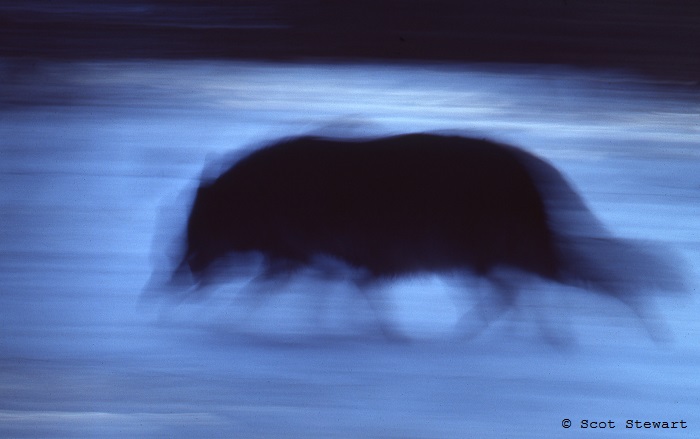
Wolf Running in the Shadows (click image to view others)
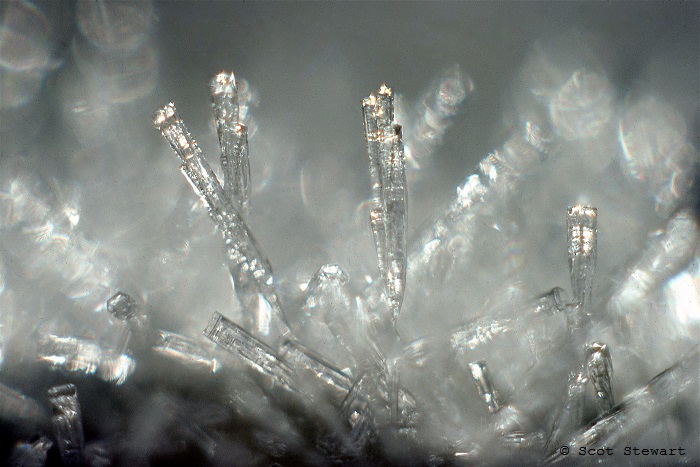
Frost crystals on a Tamarack Branch (click image to view others)
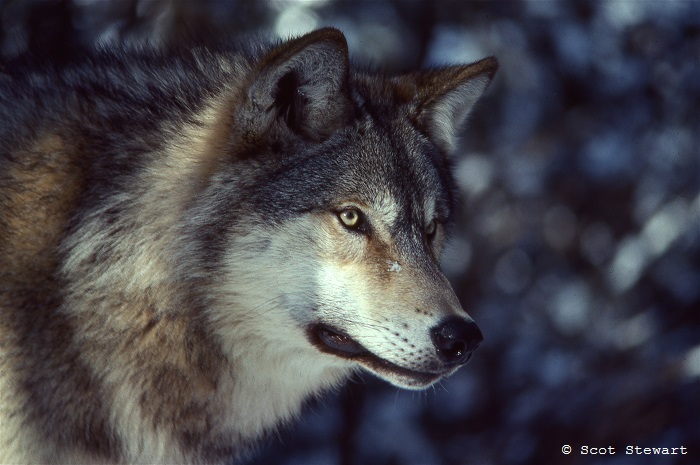
Male Wolf Portrait (click image to view others)
7.27.16: Hello and greeting from mid-summer! Seems like the season is just rocketing past! Lots of hot weather here in the Upper Peninsula - really! 80's and 90's and thunderstorms. The birds are definitely quieting down, although we have been blessed with a red-eyed vireo and a song sparrow serenading us daily still and have sporatic songs from a northern cardinal, mourning dove and a northern flicker.Thanks to a scanner at the Marquette Monthly office I have begun scanning my 35mm slides and adding images to the website. Nearly all the grouse and owl species have additions or new entries. Others include Brant, Black Vulture, about half the Hawks, Yellow, Clapper and Virginia Rail, Golden Eagle and Least Bittern. Work now beginning on the Wolves. New scans will begin soon on my Lake Superior and National Park images.
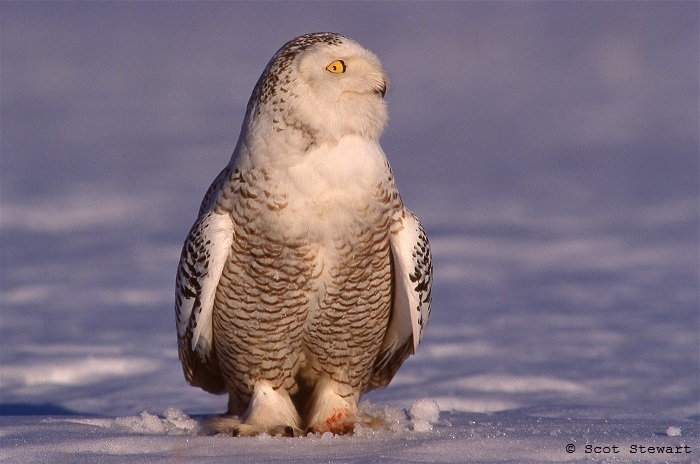
Snowy Owl on Green Garden Hill (click image to view others)
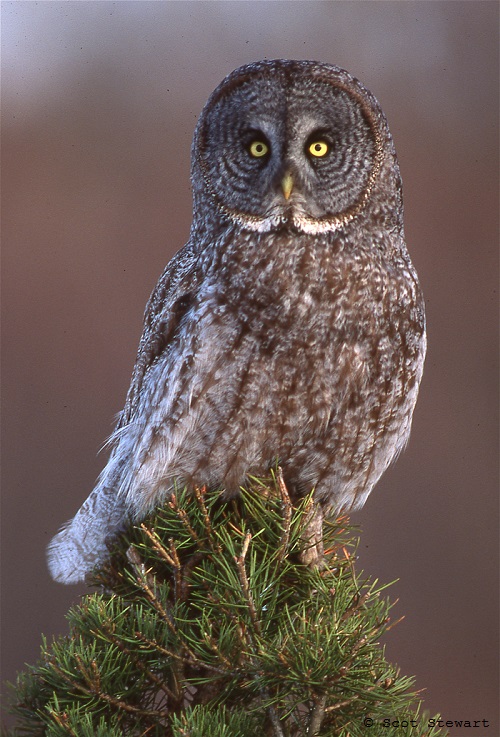
Great Gray Owl on Sugar Island (click image to view others)
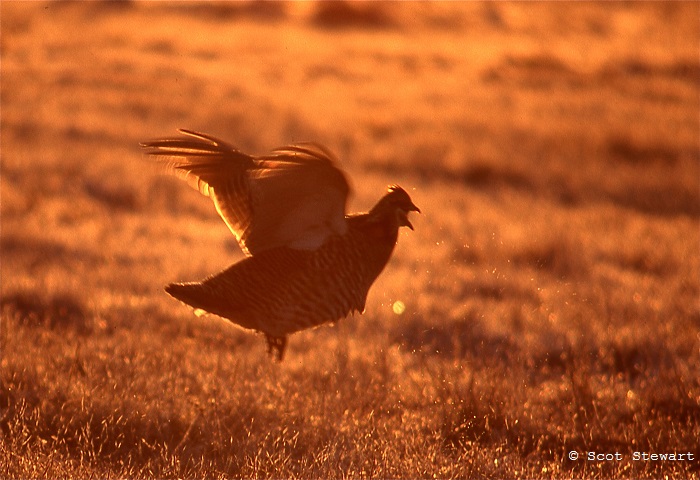
Greater Prairie Chicken at Sunrise at Buena Vista Marsh, WI(click image to view other)
7.15.16: Photographing minerals, especially portions of my Franklin, NJ fluorescent ones has been continuing. I have especially liked a couple of close-ups that remind me of shots from outer space. Other new mineral images have been added to Amber, Aurichalchite, Brazilianite, Chondrodite, Cornitite, Fluorite, Franklinite, Hauckite, Hedbergenite, Kyanite, Siderite, Sulfur, Topaz, Uvarovite and Zincite.
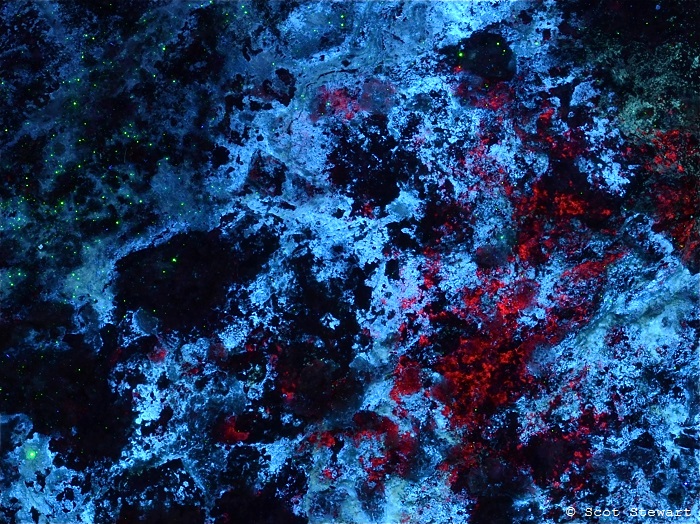
Hydrozincite under Ultraviolet SW light (click image to view others)
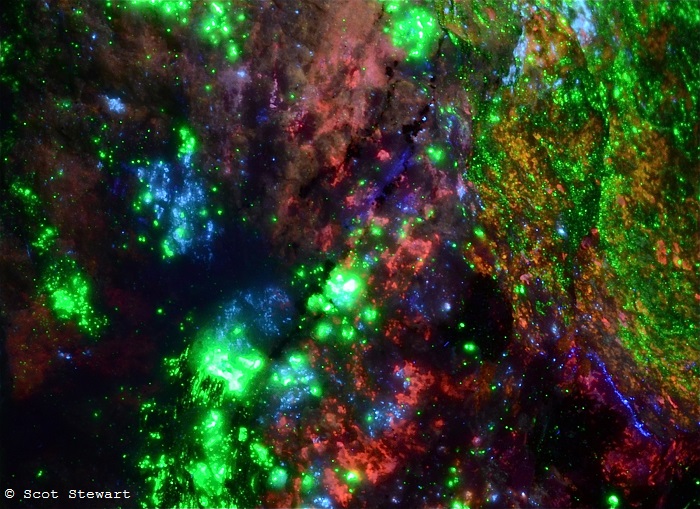
Grossularite with Willemite, Hardystonite and Clinohedrite(click image to view others)
7.11.16: After finishing a program at the MooseWood Nature Center I stopped to look for shorebirds at the mouth of the Dead River on the way home. No shorebirds, maybe the young peregrines were practicing their flight manuevers off the top of on of the building at the power plant across the street. I almost missed the family of common mergansers resting at the water's edge. Eventually they headed back into the water and immediately began hunting. The adult began scanning underwater and seemed to find a small school of fish as she swung around and seen to direct the underwater targets toward the three youngsters. They provideded a number of entertaining charges both above and below the water chasing their prey until they rounded the tip of the sandbar where they had been resting. I was surprised at how much the young resembled chinstrap penguins as they tottered across the beach with their wings flapping.
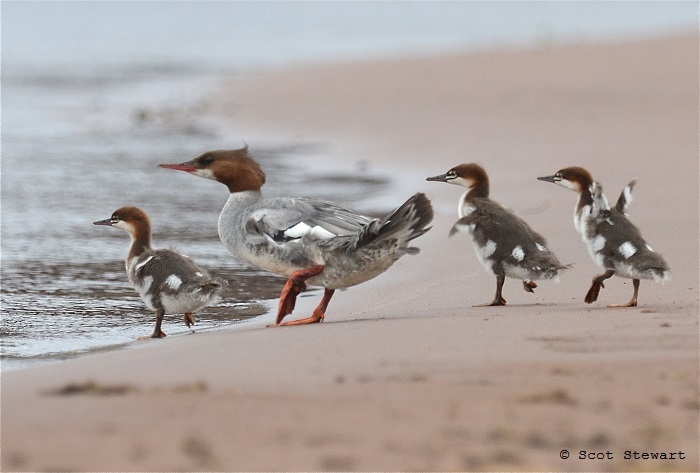
Common Merganser family at the Dead River, Marquette (click image to view others)
7.4.16: Nothing will make a birder's heart race more than to come home from a trip and hear of an extremely rare bird being in the vicinity whil you were gone - especially one more than a 1000 miles from home. I came home to news of a northern crested caracara, a tropical falcon reported in Munising. Within an hour I was back out, on my way to see if it was still around. Fortunately it has remained for several days giving birders from across the state an opportunity to see it and watch it hunt insects along the edges of a large mowed field. Summer surprises in the Upper Peninsula are often particularly amazing with a number of tropical visitors here in recent years. Birds like these also offer the opportunity to meet with other great birders and catch up on adventures and birds in other places!
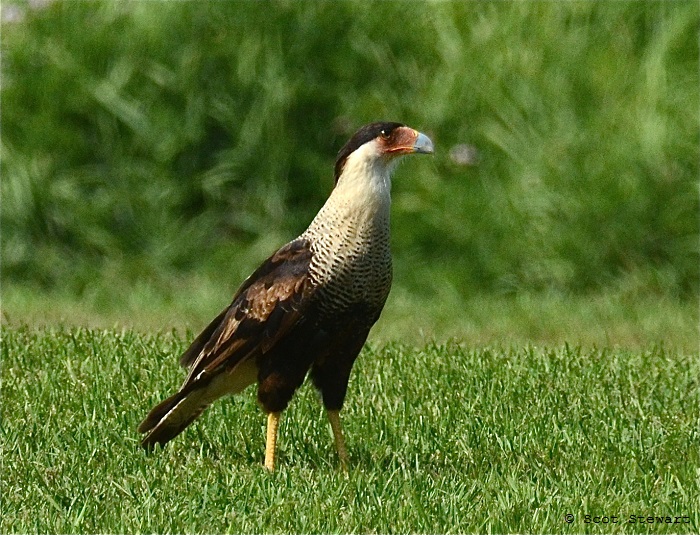
Northern Crested Caracara (click image to view others)
6.27.16: Early summer is the best in the Upper Peninsula! One of my favorite places to go is Seney National Wildlife Refuge near Seney, MI in Schoolcraft County. I drove down with again with Alec Olivier. We checked the Driggs Road area for black-backed woodpeckers without success but found plenty of loons and trumpeter swans on the interior pools at the refuge. We found one family at the start of the Marshlands Autoloop and a very cooperative female a bit farther on. Wilson's snipes were still displaying too, one of my favorite sounds there in June, or anytime for that matter. Only heard one kingfisher - they seem to be dwindling there and no bald eagles are nesting along the loop either. We did see three active osprey nests. Swamp milkweed, roses and irises blooming, it was a great day to be there!
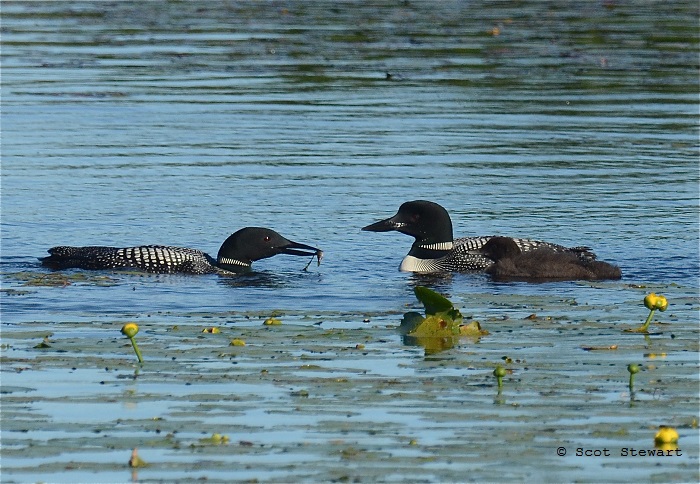
Common Loon Family (click image to view others)
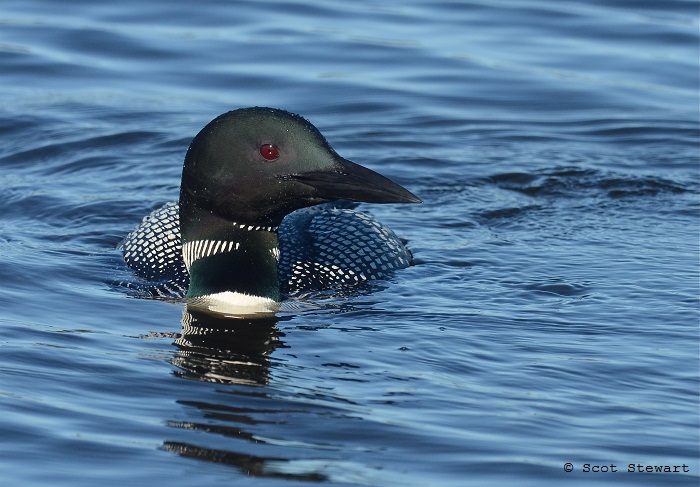
Common Loon (click image to view others)
6.24.16: Early June is a great time to look for warblers in the central U.P. Alec Olivier, good friend and excellent birder and I took a trip down to Kates Grade along the Marquette-Dickinson County border. We questioned our choice of locations when we opened the windows to listen for songs. We were immediately greeted by large numbers of hungry mosquitoes. Wow! There were lots! Luckily they quieted down a little after 8:00 and we were able to get out an look and listen. It was a beautiful morning - heard northern waterthrush, common yellowthroats, blackburnian, Nashville, and finally a golden-winged warbler, one we were hoping to see. Also heard a scarlet tanager among others and caught up with a snowshoe hare along the road right in front of us. Later we found several sets of dropping on the road and they were prime mineral licks for white admirals and tiger swallowtail butterflies. It was amazing to see so many fighting over the sites. On the way out we found a yellow-bellied flycatcher to top off the trip.

Golden-winged Warbler (click image to view others)

Tiger Swallowtail, White Admirals and Northern Crescents (click image to view others)
5.4.16: Being outside always brings surprises for the watchful eye. While preparing feeding stations at Presque Isle Park for a MooseWood Nature Center Birding Festival event this Saturday, a red fox appeared and casually surveyed the birds there and then proceeded to my other station to check the menu there. It was clear it was familiar with the neighborhood and not too concerned with the regular traffic on the Island.
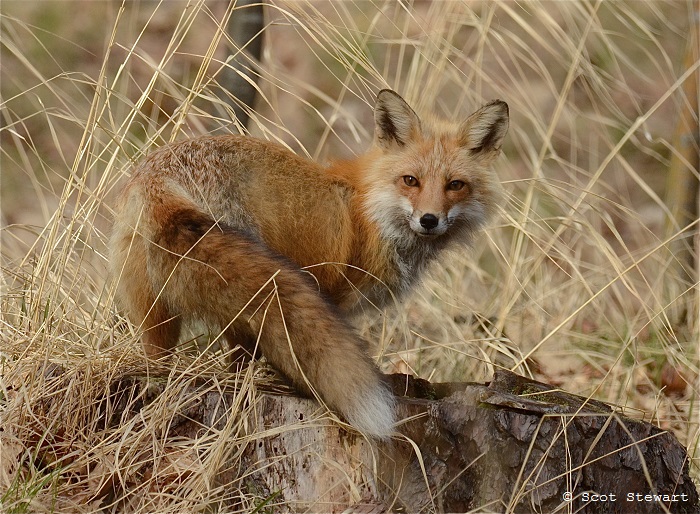
Red Fox (click image to view others)
4.30.16: Spring and Autumn sunrises can be spectacular - especially over Lake Superior. This morning the sky was filled with mixed clouds and openings, a good sign. The eastern horizon was soon aflame with amazing colors to start the day in dramatic fashion.
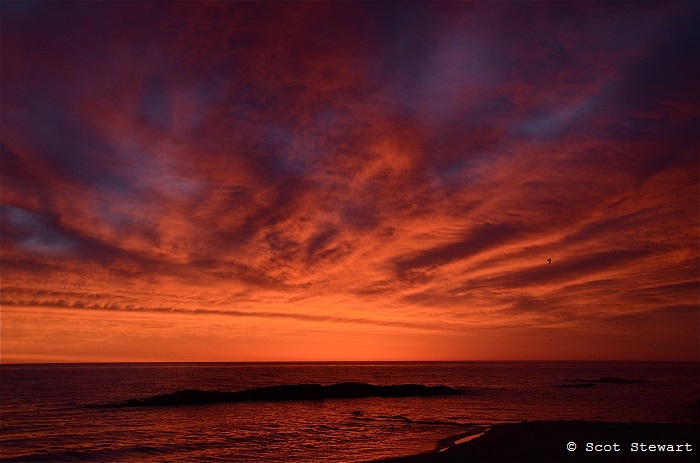
Sunrise over Lake Superior in Marquette (click image to view others)
4.27.16: Birding has been slowed this spring by unseasonable temperatures and some record snowfall in April. STill, migration has been eeking along. Traveled to Whitefish Point to check on hawk, waterbird and songbird migration there. Near McMillan this morning we found a group of nine sandhill cranes feeding in a field with a large group of crows. More crows were mobbing a red-tailed hawk in a stand of trees nearby. The cranes occasionally danced and chased each other around and were still present at the end of the day when we returned to Marquette from the Point. At the Point there were plenty of red-tail, broad-winged and sharp-shinned hawks rising out of the forest south of thd Point bound for Canada. We missed a golden eagle seen at the Hawk Dune later in the day. There was a huge wave of ruby-crowned kinglets around that made the day really fun!
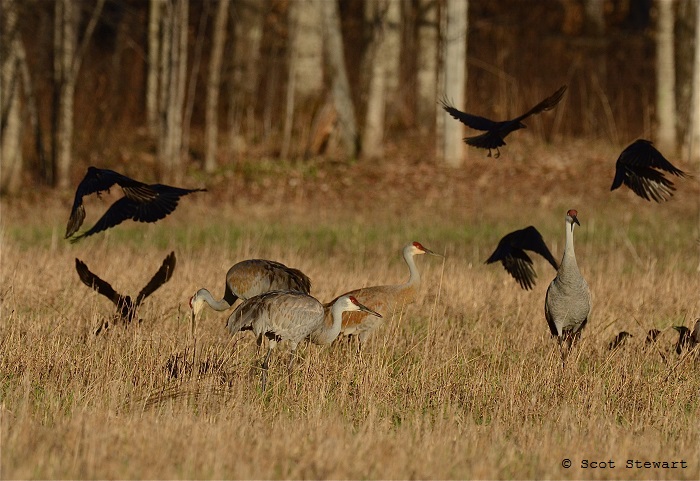
Sandhill Cranes (click image to view others)
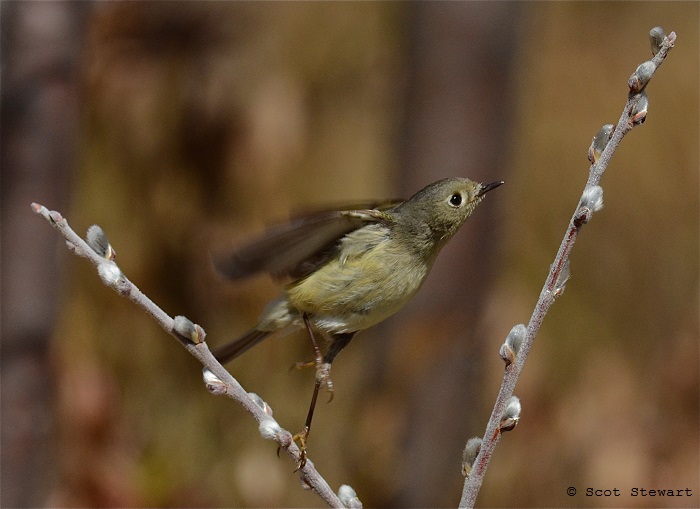
Ruby-crowned Kinglet (click image to view others)
4.5.16: The Upper Peninsula spring is full of surprises. With more than 32 inches of snow over the past week the area is 27 inches above average. Cold morning have come with the late winter package producing some amazing frost crystal formation on my front door. The fine detail is only highlighted with the rising sun, providing an amazing three dimensional perspective to these miniature crystals. It is one of the best parts of cold mornings.
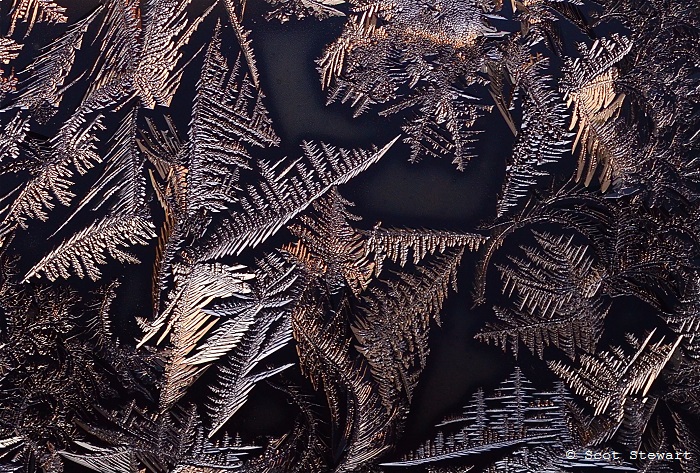
Winter (click image to view others)
4.2.16: Spring time trips southward are also met with great anticipation - migration is underway and finding how far different species have moved northward is always fascinating. With leaves still on the way viewing smaller birds is much easier. Local birds have begun calling and too can be much more easily found. While photographing bloodroots one of the first spring emphemeral flowers a singing tufted titmouse was heard. Fortunately I was able to get a few shots at the edge of a maple-oak woods in a Will County Forest Preserve.
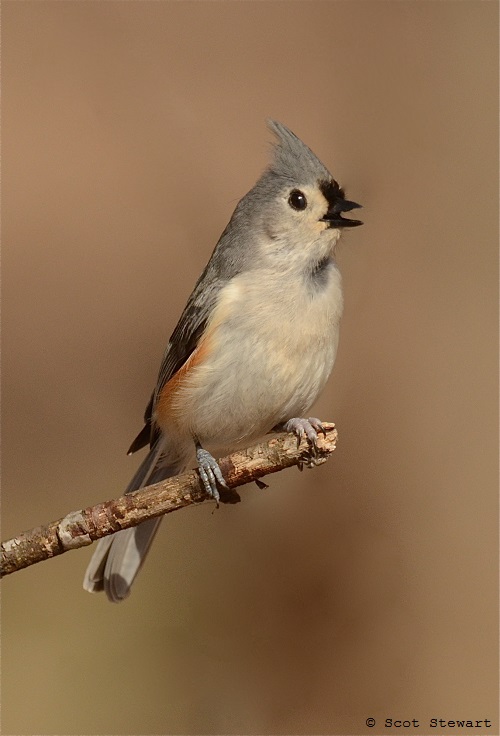
Tufted Titmouse (click image to view others)
3.31.16: Harlequin Ducks are one of the most colorful duck species in North America. Residents of both coasts in winter and mountain rivers in summer, they rarely appear in the Midwest. Marquette has been fortunate to host several in the past few months. One with basic plumage was found by Alec Olivier at the Presque Isle Bogwalk last October. Two males were found in the Lower Harbor this March, appearing and reappearing from time to time over several weeks. Their feeding habits of much diving and feeding areas along rock walls may have helped them remain unnoticed many days. They appearing along the rocks at Mattson Park in town recently near dusk. I returned the next morning in the light of the rising sun and had them land in front of me minutes after my arrival. Not shy they swam to the rocks where I stood and feed along the edge for nearly an hour, stopping to preen briefly before resuming their dives right in front of me not eight feet away. It was a great oportunity to watch as it was even possible to watch them underwater in Superior's clear depths.
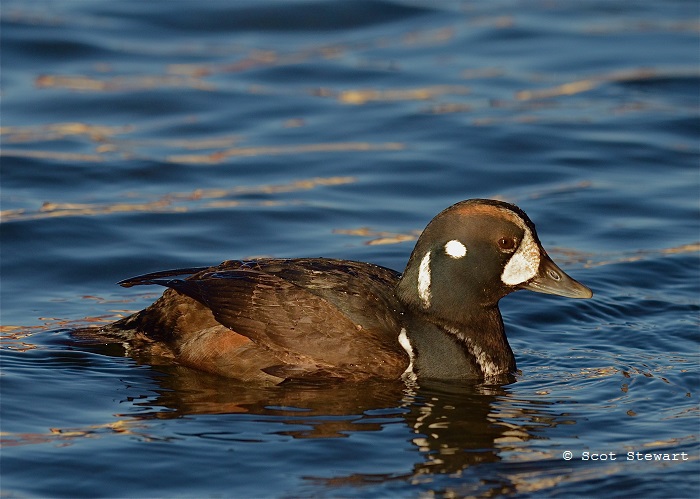
Harlequin Duck (click image to view others)
3.30.16: Plumbogummite from China can contain surprising array of colors as they cover another mineral, pyromorphite. Mineral details are often as amazing as the color, form and design of the landscape where they are found. Plumbogummite can vary in color throughout a variety of pastels and smetimes resembles small stalactites. I have bee adding to my mineral specimens gallery almost daily and have included some of the detail shots in the Abstracts category at the top of the "Other" page. This one is my favorite.
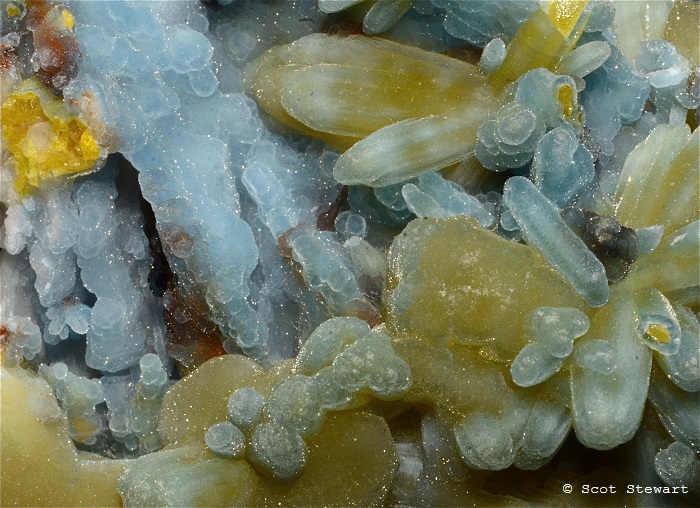
Plumbogummite (click image to view others)
12.6.15: Despite the lack of snow, birds have been very active in western Marquette County. Feeders in Diorite have been active with Woodpeckers, Blue Jays, Gray Jays, Nuthatches and Chickadees. Bald Eagles and Hawks have also been active there. Below is one of the Downy Woodpeckers seen there yesterday.
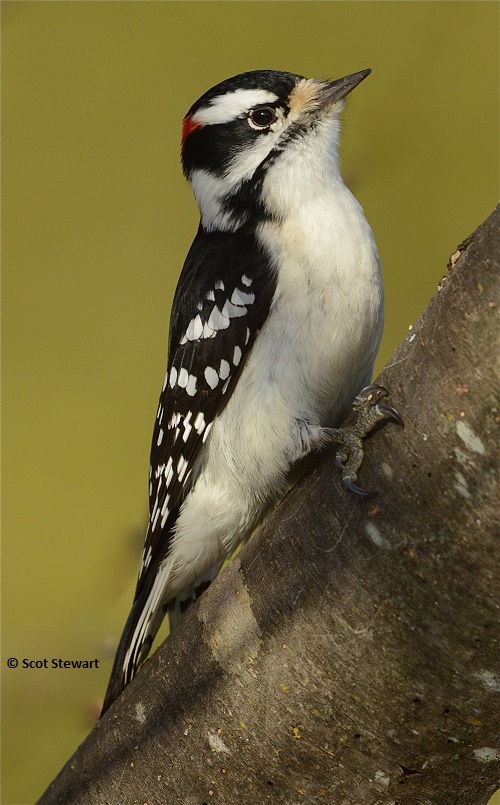
Downy Woodpecker (click image to view others)
11.16.15: With birding slowing down my work has turned more to abstract and mineral photography. Go to the Other Page to see more.
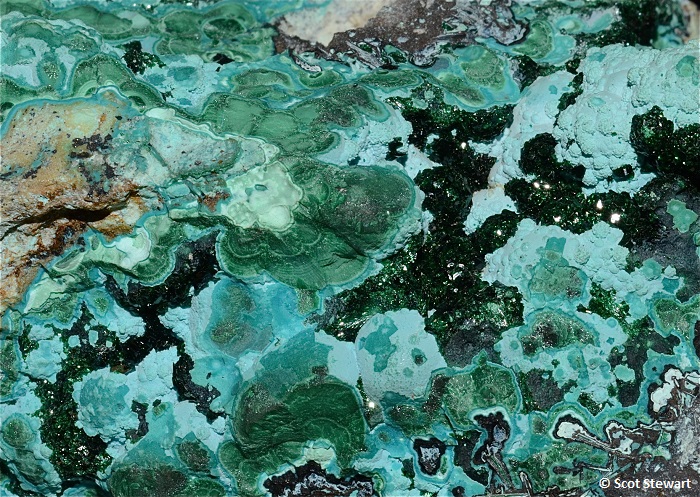
Chrysocholla and Malachite (click image to view others)

Soap Bubbles (click image to view others)
6.19.15: Summer is just two days away on the calender, but the day started out at 36 degrees in a number of places. Made a trip to Seney National Wildlife Refuge in Schoolcraft County to see how the young of the year were faring. A great blue heron was fishing at the mouth of the Sand River on the Marquette-Alger County line and the sky was a peachy pink. Had to stop. How often I have found beautiful sights on my way somewhere else! Stopped at the west side of Seney at a recent prescribed burn conducted by the refuge, and was rewarded to find one of the black-backed woodpeckers others have recently found there. Seney is always a great spot in June. The Wilson's snipes are still displaying, the young swans have hatched and are circling around their parents and the kingbirds are loud! Plenty of muskrats carring material to their homes and one pair of young loons on the first pool on the loop too. It was a great day on the Marshland Drive at the refuge!
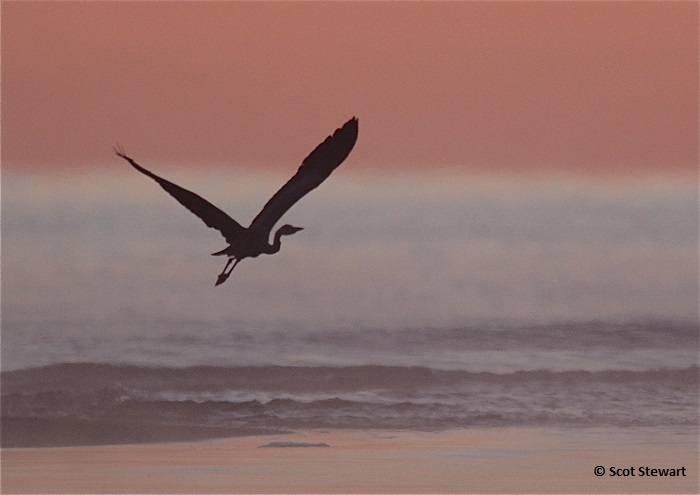
Great Blue Heron (click image to view others)
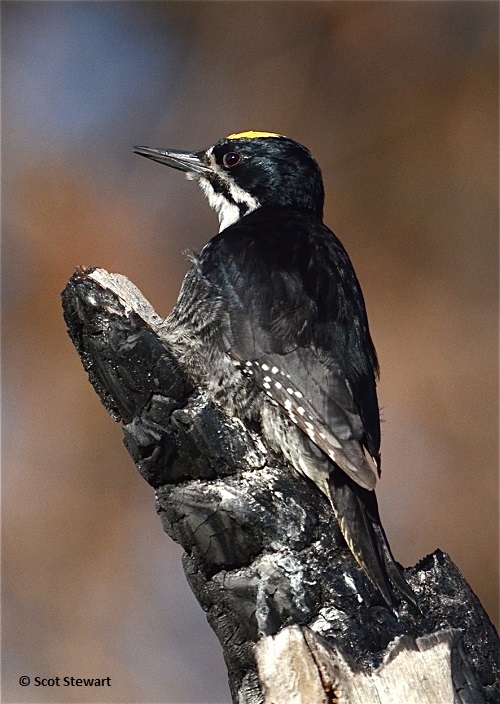
Black-backed Woodpecker (click image to view others)
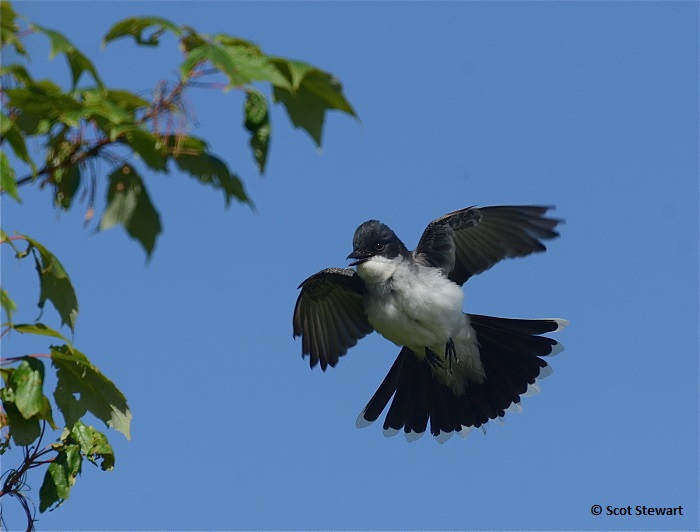
Eastern Kingbird (click image to view others)
4.27.15: Recent cooler weather has really slowed down much of April migration. But that hasn't slowed down the territorial, courtship and nesting behavior of birds already here. Woodpeckers have filled the are with their drilling and drumming. In the area wher I have been watching turkeys I recently heard three different pileated and two hairy woodpeckers calling and drilling resonating trees. The turkeys were strutting too making it a very spring-like afternoon despite tempertaures hovering around 40 degrees F. Herring gulls ae mating at the Dead River mouth and South Beach in Marquette, a peregrine is sitting on egg at the Presque Isle Power Stationand a pair of great horned owls nesting in a church in town have two nearly full sized chicks. Can't wait for the rest of the birds to get here from further south!
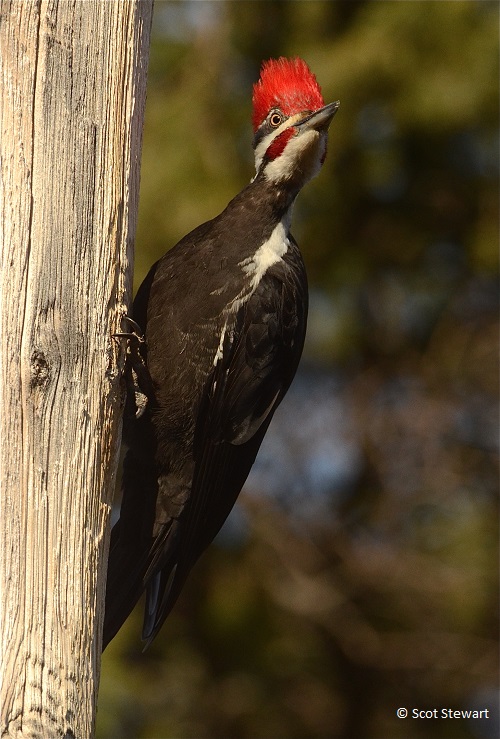
Pileated Woodpecker (click image to view others)
4.16.15: Migration is an amazing event as millions of birds and insects head north to spend the summer. As residents return to fill their summer niches, some are forced to stop and recharge their energy stores, some realize they did not end up where they intended, stopping to regroup and others need a stop to deal with physical problems like illness, injury and disease. A tundra swan made a stopped yesterday at a small town pond of Marquette. A closer examination of the bird showed it was having difficulties with its left eye, due either to an accident, difformity or disease. It stayed on a second day after arriving, sitting, feeding and swimming closely with a lone Canada goose. Many tundras stay in the Cheseappeake Bay area and other East Coast estuaries during the winter and return in spring to their summer range across the northern tier of Canada and Alaska. Unlike the trumpeter swan, a Michigan nester, the tundra swan is only a rare visitor to the Upper Peninsula, often seenonly in flight during migration. A few do stop in eastern U.P. farm fields to feed as they head north. It is always a wonder guessing the fate of such an animal on an amazing voyage.
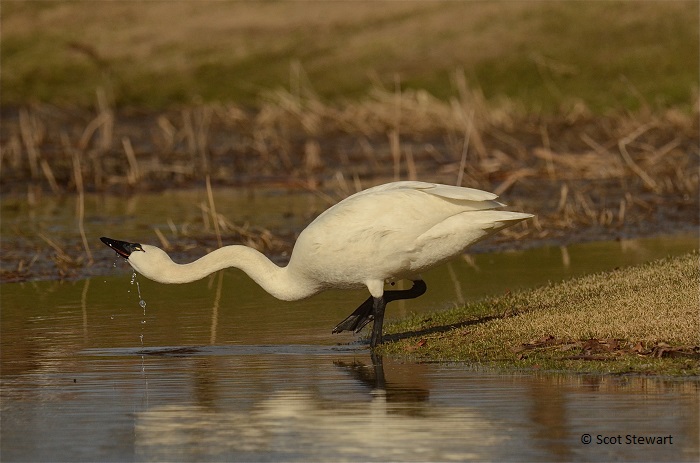
Tundra Swan (click image to view others)
4.15.15: Some birds always seem mysterious. Brown creepers meet that criterion by both name and behavior. They always seem to be on the move, leaving little time to study or enjoy their unique design. They are predictable in their approach to a tree - always heading up. But their choice of trees is never a sure thing. Usually they move through a stand of trees, rarely returning to one a second time. This creeper returned to several trees time and time again today allowing a great opportunity to see and photograph it. While hunting it found the largest larvae I have ever seen a creeper eat. Click on the link to see it and other images of the creeper in action.
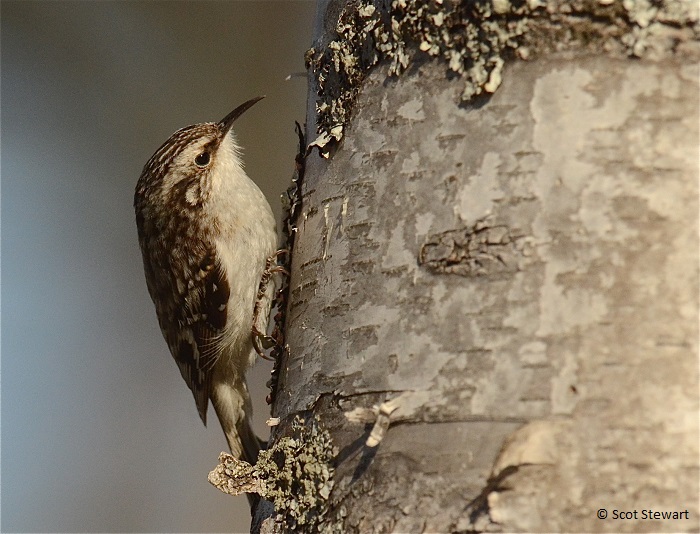
Brown Creeper (click image to view others)
4.4.15: A quick trip to the Chicago area offered the chance to catch a slightly more advanced version of spring. With temperatures soaring into the mid-60's it offered a wonderful break from freezing temperatures and the snow left behind in the Upper Peninsula. A trip to a local nature center in Cook County brought an opportunity to see a young red-headed woodpecker and later the same day in a nearby forest preserve, a group of three more adults. As it has become more and more difficult to find them in the U.P. it was a thrill to see four in a single day. Occasionally they appear as vagrants, but usually disappear in a day or two. During the next few days there flocks of kinglets, brown creepers, a hermit thrush and a pair of cackling geese were also seen. Returning north, American white pelicans were seen returning to the Green Bay WI area and a number of tundra swans were also seen heading north and west.
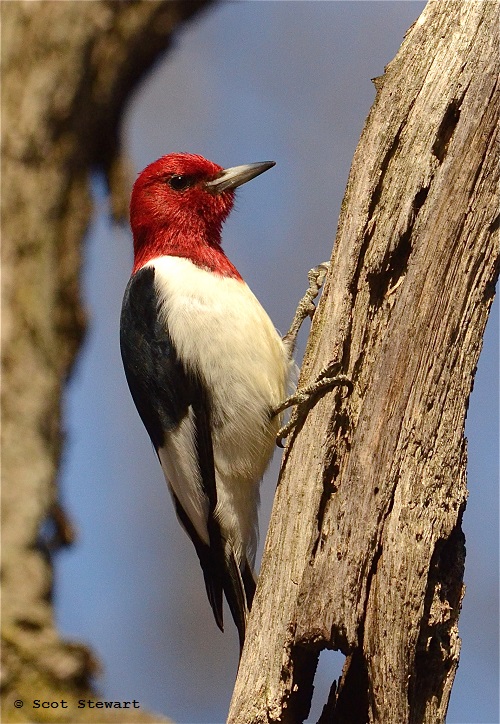
Red-headed Woodpecker (click image to view others)
3.30.15: While spring migration is beginning to bring early birds back to the Upper Peninsula, birds like ring-billed gulls, sandhill cranes, red-wing blackbirds and common grackles, other birds, winter visitors, are heading "home" too. Visitors from the boreal forest and the tundra - winter finches and owls have been visiting the northern states and are now northbound. A northern hawk owl stopped off at the Sturgeon River Slough near Chassell in Houghton County last Wednesday and found enough food to stick around. Found it on Saturday afternoon near the entrance to the slough and watched it for about five hours. Eventually, after making a number of dives to the ground after food, it successfully caught what appeared to be a meadow vole. Unable to successfully eat it atop the whip-like tamarac tops it flew to a stand of more substantial trees across the road to feed, then returned to the slough to continue hunting. A number of birders arrived as the shadows grew in time to see the owl successfully catch two more voles. It eventually chose to hunt from trees very close to the observation area at the slough. With sandhills calling in the background and the snow slowly melting to reveal open water and bare ground, it was a great spring day.
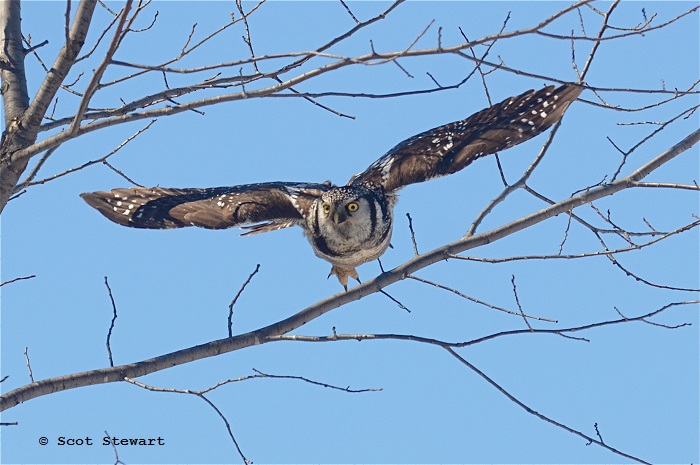
Northern Hawk Owl (click image to view others)
3.24.15: A slaty-backed gull arrived in Marquette Sunday, and has been seen at three different locations along the Lake Superior shoreline. It doesn't spend much time close to shore, making photographs difficult, but it sure has been fun to watch, being such a rarity in the Great Lakes. Several recent images have been added to the slaty-backed gull page. The arrival of ring-billed gulls is one of the first signs of spring here so their presence with the slaty-back has also been fun. Images of them have also been added.

Slaty-backed Gull (click image to view others)
3.18.15: Turkeys! Had a little time this afternoon to get out in the sunshine and look for wild turkeys. Found a great flock of 24 south of Marquette and an opportunity to get a few nice shots. Added them to the Wild Turkey spot on the Birds page.
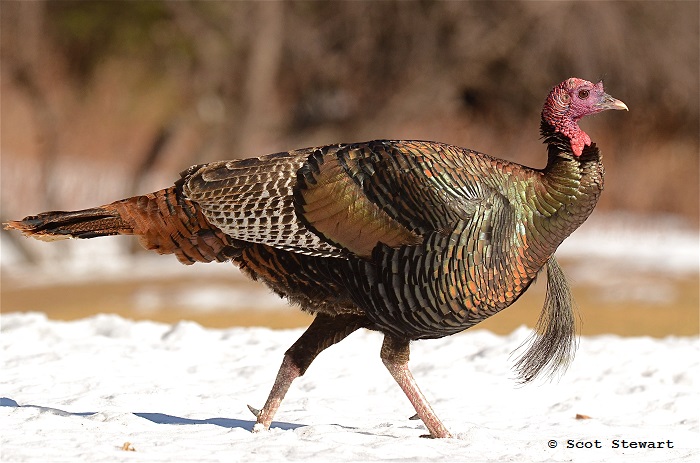
Wild Turkey (click image to view others)
3.16.15: Hello Everyone. Thank you for visiting my webpage. Recently I added additional pine grosbeaks, bohemian waxwings and redpolls. It has been a great winter for winter finches in Marquette and the rest of the Upper Peninsula of Michigan.
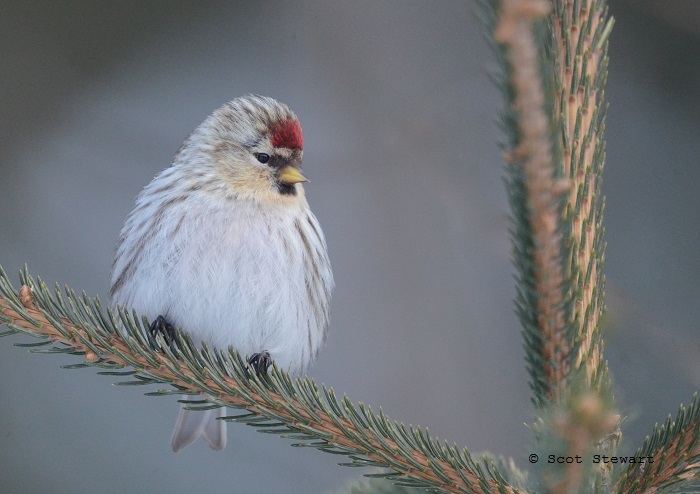
Hoary Redpoll (click image to view others)
